
- Best Hikes In The World
- Appalachian Trail
- European Hikes
- Nepal Hikes
- Patagonia Hikes
- See All Hikes
- Mount Kenya
- Mount Kilimanjaro
- Mount Toubkal
- See All Mountains
- South Africa
- New Zealand
- Switzerland
- United Kingdom
- Packing Lists

Manaslu Circuit Trek – Hikers Guide To This Classic Circuit Hike
Asia , Nepal
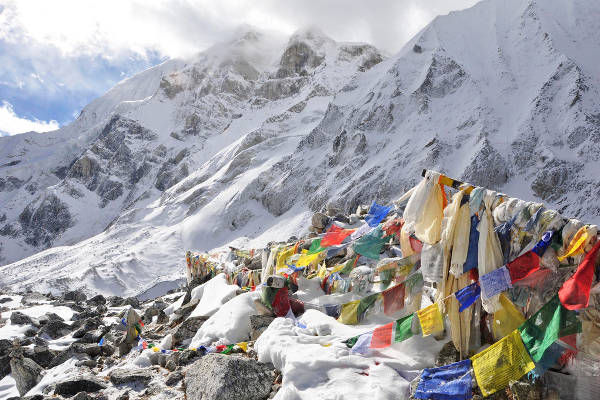
The Manaslu Circuit hike passes ten Himalayan peaks of more than 21,300 feet, including the 8000er , Manaslu (26,781 feet), which is the eighth-highest mountain on Earth .
The Manaslu trek is a 110-mile hike that is a great alternative to Everest Base Camp hike or the Annapurna Circuit hike . The trek usually takes between 14 and 17 days. There are some who do it in 12 days.
Here is my hikers guide to the Manaslu Circuit trek.
Manaslu Trek Guide
The Manaslu Circuit trek resembles the Annapurna Circuit trek of decades past. The area covers six climatic zones. Robin Boustead, author of Nepal Trekking & the Great Himalaya Trail: A Route & Planning Guide , has said, “many would argue that the Manaslu Circuit trail is the best trek in Nepal .”
The Manaslu Circuit hike runs through a restricted area and, while growing ever more popular, is nowhere near as developed as the Khumbu (i.e. Everest) and Annapurna regions. The scenery is similar to that of the Annapurna region and the level of difficulty is similar to the Annapurna Circuit.
A good portion of the trek is spent above 10,000 feet, which is more demanding, but the acclimatisation profile is good, with the trek starting at just under 2,000 feet and taking a week to reach 10,000 feet.
Around 2,000 people undertake this trek each year, much less than hikes in the Annapurna region or to Everest Base Camp, with over half coming in October. You will probably see more yaks and donkeys than trekkers.
The first reason why the Manaslu trek is less frequented is that camping used to be the only option due to a lack of Nepal tea houses . This has since changed with many tea houses being built over the last decade. Admittedly, what tea houses now exist are basic compared to those found on the Annapurna Circuit, but most are relatively comfortable and have electricity. A warm 4-season sleeping bag should be taken as the bedding in some tea houses isn't great and rooms get very cold at night.
The second reason for the Manaslu Circuit hike’s lesser popularity is that the area is restricted and so requires a permit and a registered guide.
Please Note: The highest point is Larkya La (5,213m), which is widely regarded as one of the most dramatic pass crossings in the Himalayas . Sitting as it does in the near-permanent shadow of Manaslu’s north face, snow conditions can be severe. It takes five or six hours to trek to the top.
Manaslu Regional Map
The Manaslu Circuit trek is in western Nepal, a few miles from Tibet inn the North and north-west of Kathmandu in Nepal.
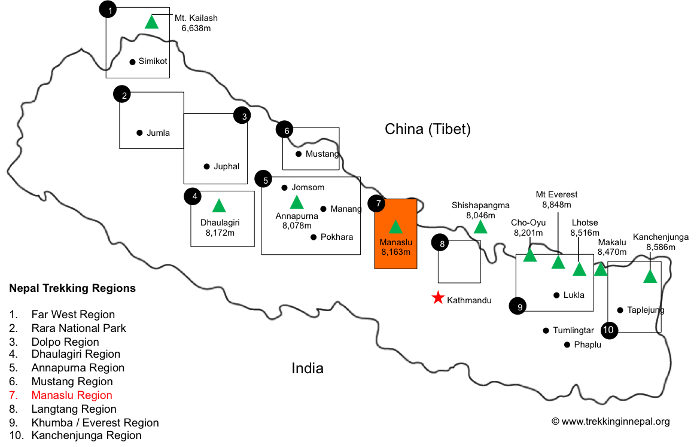
Recommended Manaslu Map
In terms of a good map for the Manaslu Circuit, we recommend: Manaslu and Ganesh Himals Region: 1:125,000 Trekking Map (The Great Himalaya Trail Series Maps) (NP106).
In terms of a single detailed map we recommend the Himalayan MapHouse’s, New Annapurna Trekking Trails Map , which can be bought in Kathmandu, Pokhara or on Amazon.
We have also provided links and recommendations to guidebooks below.
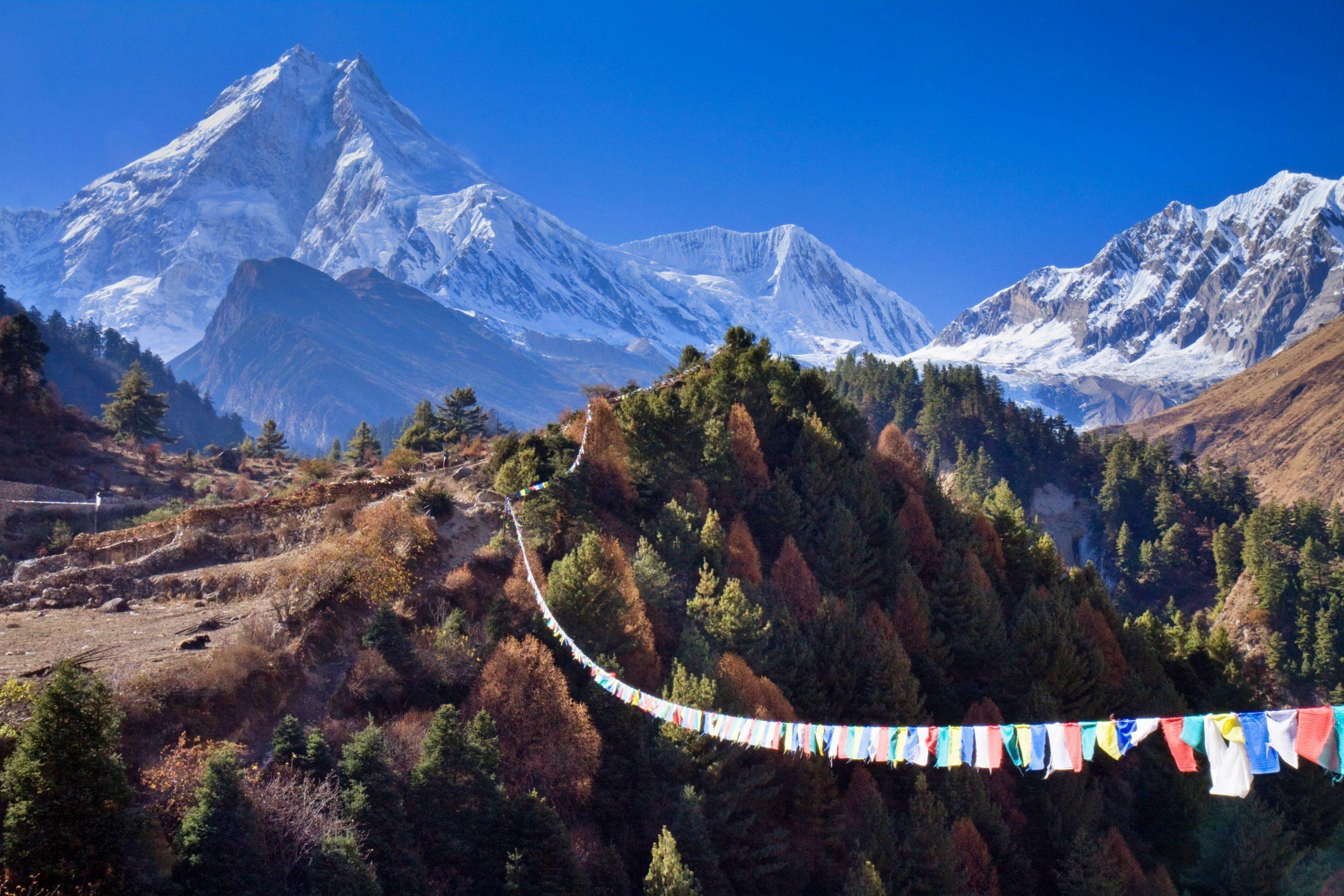
Manaslu Trek Itinerary
Because of the spacing of tea houses at higher altitudes, the Manaslu trek is best done anti-clockwise. It is possible to stay in nothing but tea houses, but you may want to camp as well.
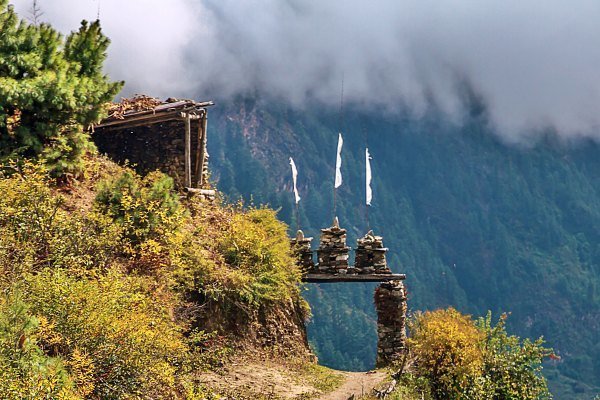
There are several Manaslu Circuit itineraries that can be done. Most start in Arughat, which can be reached by bus from Kathmandu (be prepared for a bumpy ride). Much of the trek follows the Buri Gandaki.
On the lower reaches you will pass lots of farmland, but as you ascend the landscape will become a lot more barren and glaciated.
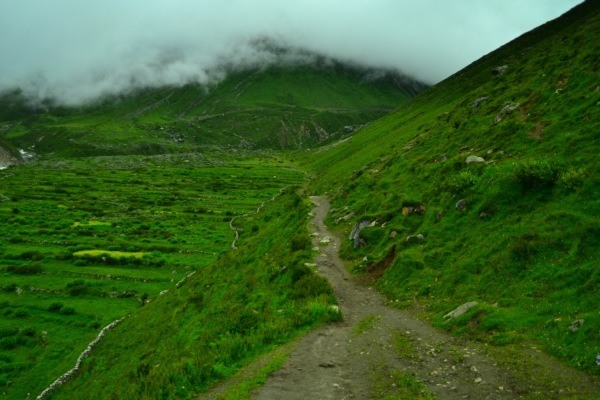
There are many mountain views, the most impressive I think are those of Naike Peak, Manaslu North and Manaslu.
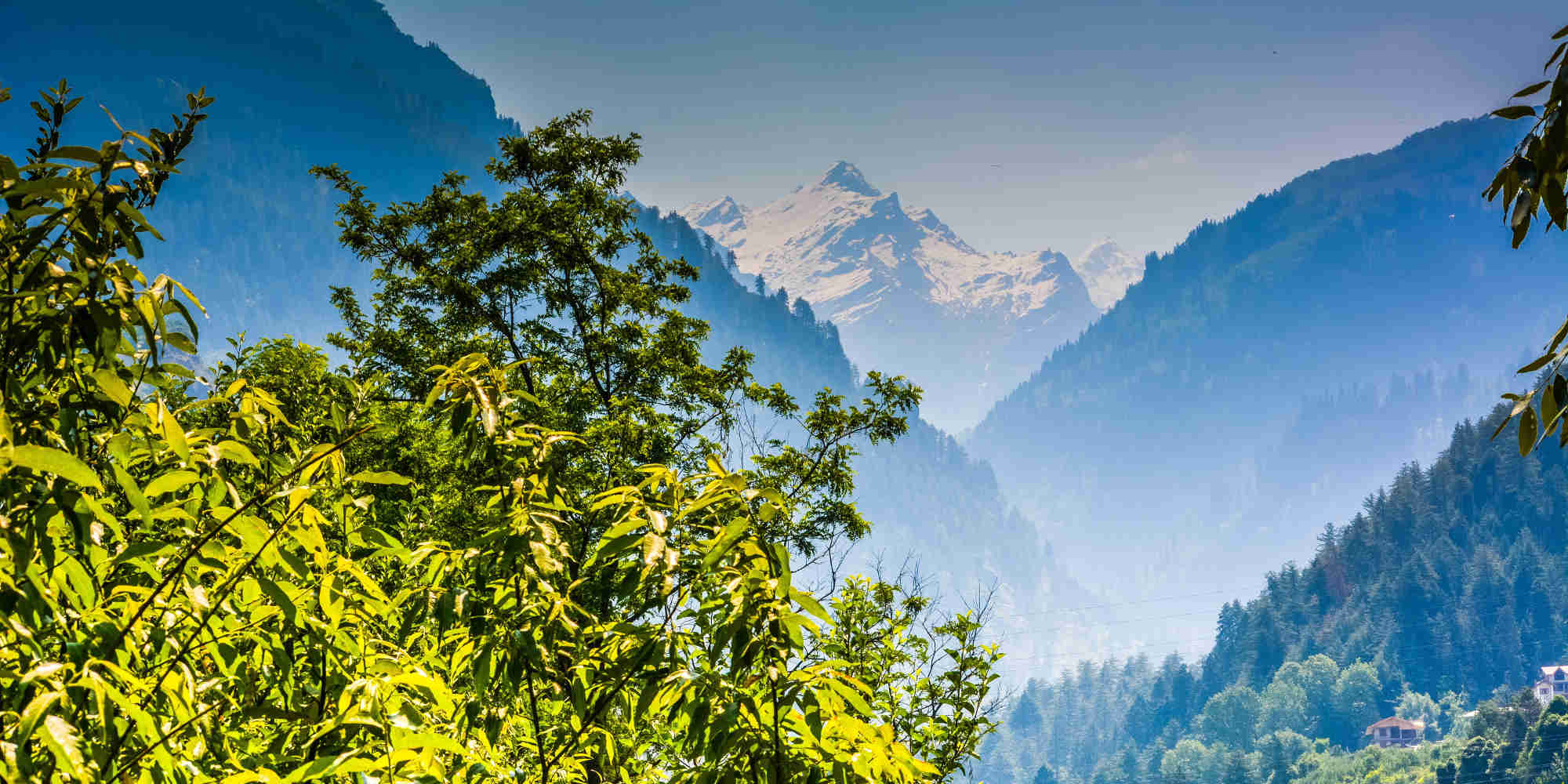
Manaslu Circuit Trek FAQ
When is the best time to trek manaslu.
The best time to trek Manaslu is October or November . Overall, this is the overall best time to trek in Nepal with April and May being the next best times.
How much does the Manaslu Circuit trek cost?
Prices can vary widely, from $2,000 per person at the bottom end to $4,000 per person at the top end. There are over 1000 local trekking agencies in Nepal , so make sure you pick a good, well reviewed operator.
Are permits required for the Manaslu Circuit trek?
Yes, permits are required for the Manaslu Circuit Trek. You need a Restricted Area Permit which costs $50 a week, a Manaslu Conservation Area Project permit which costs $30 and an Annapurna Conservation Area Project permit which costs $30. You will also need four passport-sized photographs.
How difficult is the Manaslu trek?
The Manaslu Circuit Trek is considered quite challenging, but still a possibility for first time trekkers. Altitude is often over 10,000 feet and there may be sections with snow. A good level of fitness is required as the trek is quite long and often steep.
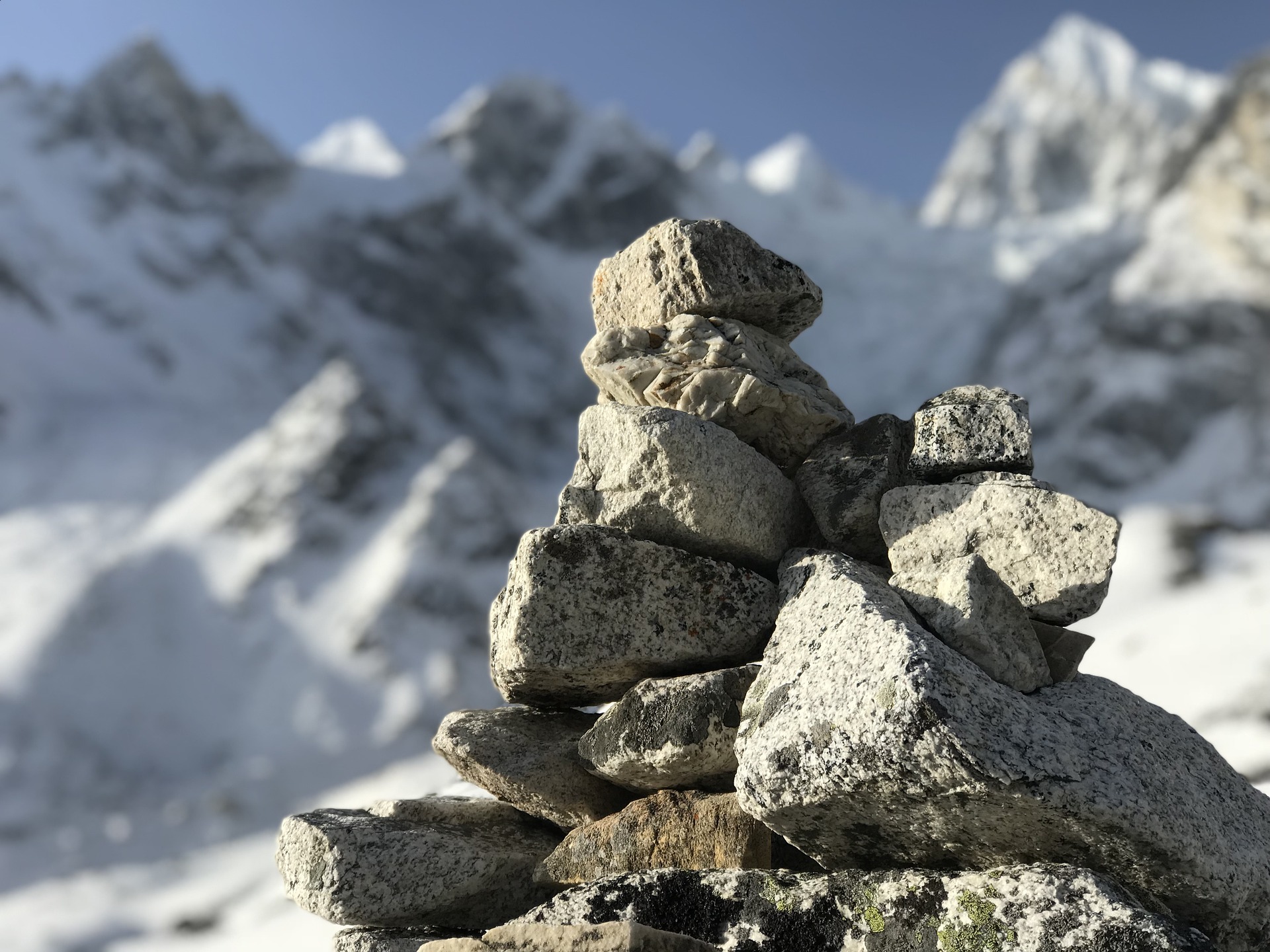
Is altitude sickness a risk on the Manaslu Circuit trek?
Yes, altitude sickness is a risk on the Manaslu Circuit trek because it ascends to some high-altitude points. At its highest point, Larkya La, you will reach an altitude of 5,213 meters (17,100 feet). There are steep sections on this trek where you will ascend very rapidly.
Therefore, it is important to have a solid understanding of the risks associated with high altitude trekking and how the body acclimatises to high altitude. We recommend you read our detailed article on altitude sickness .
What gear do I need for the Manaslu Circuit?
Trekking the Manaslu Circuit requires a number of essential pieces of trekking gear. The trail is long and moderately difficult, exposing you to a range of altitudes where temperatures fluctuate dramatically between night and day.
At a minimum you should take:
- 4-season sleeping bag
- Good hiking boots and 6-8 pairs of hiking socks
- Layered clothing including base layers and a warm down jacket
- Warm gloves
- 60-70L backpack
- Hydration pack
- Trekking poles and polarised glasses

Are there any recommended guidebooks for the Manaslu Circuit Trek?
There are two guidebooks dedicated to the Manaslu Circuit hike that I recommend.
The first one and my personal favourite is A Trekking Guide to Manaslu and Tsum Valley: Lower Manaslu & Ganesh Himal by Sian Pritchard-Jones and Bob Gibbons. As a great alternative, I recommend Trekking in the Nepal Himalaya (Walking Guide) by Lonely Planet.
There is also a collector's book available online called Manaslu: A Trekker’s Guide by Kev Reynolds, which was published in 1999.
You are also welcome to have a look at our recommended list of Nepal books and guidebooks for more options.
Continue browsing
See more information on Nepal . Or check out these other Nepal hiking articles:
- Short Nepal Trekking Tours
- Easy Hikes in Nepal
- Kala Patthar Trek
- Kanchenjunga Base Camp Hike
- Trekking to Rara Lake
- Mera Peak Trek
- Best things to do in Nepal
- Helambu Trek
- Hiking the Mustang Circuit
- Gokyo Lakes Trekking Guide
- Makalu Base Camp Trek
- Gosainkunda Hike
- Hiking to Limi Valley
About the author
Mark Whitman
Mark has trekked extensively in Asia, Europe, South America and Africa. He founded Mountain IQ in 2014 with the sole aim to be the best online information portal to some of the most popular mountain destinations around the world. When not writing for Mountain IQ, Mark is out exploring the outdoors with his wife!
Leave a Reply
Your email address will not be published. Required fields are marked
I am planning on traveling to Nepal this mid May to early June with two friends.
I am a Wilderness First Responder and have guided backpacking trips in California and Alaska, so I consider myself quite competent in the backcountry and would be more than happy to carry my own gear for the duration of a trek.
Is there a particular region in Nepal (or Bhutan or India) that lends itself to off-trail travel without a trekking company? I am still open to hiring a local guide because I think it adds a lot to the experience, but I would prefer to be in a region that provides a competent backpacker with more flexibility.
I’d appreciate any input or direction!
Hi David, in terms of Nepal I would recommend the Annapurna Circuit, Goyko Lakes Trek or the Manaslu Circuit – all offer great backcountry hiking, but are sufficiently well trodden with decent facilities (tea houses) to make one’s experience fun and enjoyable.
Thanks so much for the input Mark.
On the three treks that you mentioned, should we prepare to stay on the common trail the whole trip, or is it feasible/desirable to ever travel off-trail to explore a little more?
Last question, I promise. Thanks!
We work with local guides to offer great value adventures at unbeatable prices

The Manaslu Circuit Trek: Complete Guide
Posted on Last updated: September 22, 2023
For those who prefer ‘the road less traveled’ (which translates into fewer trekkers on the trail) and who enjoy pushing themselves physically and mentally, the Manaslu Circuit Trek in Nepal might just be the trek you are looking for!
Of course, it is not just about driving and motivating yourself; it’s also about the spectacular scenery, the thought-provoking cultures and lifestyles of interesting locals you will meet, and the camaraderie with your guide.
This complete Guide will give you all you need to know about the Manaslu Circuit Trek to enable you to make an educated decision as to whether this is the right trek for your adventure in Nepal.

The Manaslu Circuit Trek: The Basics on What to Know Before You Go
- Location: central-western region of Nepal in the lap of Mount Manaslu, situated within the Manaslu Conservation Area Project (MCAP)
- Starting point: departing Kathmandu for a 7 hr bus journey, the trek starts from Soti Khola and ends at Dharapani for the return bus journey
- Duration: 13 Days
- Trip grade: challenging
- Max altitude: 5,167 m / 16752 ft (at Larkya La Pass)
- Accommodation: basic trekking lodges known as teahouses
- Food: basic curry, noodles, soups, and porridge in the majority of teahouses, but tasty and plentiful
- Distance: 180 km
- Total incline : 11,000 m
- Total decline: 9,800 m
- Permits: Manaslu Conservation Area Permit, Annapurna Conservation Area Permit (as you are also entering this region) and a Restricted Area Permit
- Guide and Porters: you must trek with a guide in this region. Porters can also be hired through your trekking company, Magical Nepal, and it is possible to share a porter with a fellow trekker. Note that one porter can carry no more than 20kg in total.
Important Points to Consider on the Manaslu Circuit Trek
Here are some important points to know before you go. Nepal is one of the top adventure destinations in the world , and this trek is sure to show some of its best facets.
Manaslu Circuit Trek Difficulty
Let’s discuss the difficulty of this trek in more detail. If you are a regular hiker and particularly if you have trekked in the Himalayas before, you will have a good idea of your capabilities. This trek starts at an altitude of 800m / 2,624 ft and gradually, by daily increments of around 400m/ 1,312 ft, brings you to the height of 3,000m / 9,842ft on Day 6.
Daily, expect to walk around 6 hours, with a few days of longer walking. Crossing the Larkya La Pass at 5,160m / 16,929 is not only stunningly beautiful but the hardest day with 10 tough hours of walking.
Although it is around 3,000m when us humans may begin to feel some adverse effects such as a headache, with the built-in acclimatization days, altitude should not be a problem for the majority of healthy trekkers. We must add, however, that altitude-related problems are real, and every care is taken to ensure our guests’ safety, and we train our guides to recognize symptoms before they become serious.
The Manaslu Circuit is Remote
One of the main attractions of the Manaslu Circuit trek is that it goes through remote countryside and gets fewer trekkers than many of the other treks in Nepal. Although remote, it is only one day’s road journey from Kathmandu – no need for weather-dependent flights.
Another result of its remoteness and reduced numbers of trekkers is the fact accommodation is more basic than in more commercial areas. There will be a bed, a blanket, a shower, a reasonable food menu, and the necessary to recharge your electronic goods. Nothing fancy, but more than adequate!
Manaslu Circuit Weather
The Manaslu Circuit Trek starts at a low altitude with subtropical forests and weather. The days get cooler the higher you go until you reach, very possibly, snow underfoot at the Larkya La Pass. Like the majority of treks in Nepal, the best months to come are March, April, May, October, and November.
Clothing for the Manaslu Circuit Trek
See the packing list below for more details, but basically, layers to fit the warm lowland weather and the cold mountain climate, good (pre-worn) trekking boots, and we can also recommend a sleeping bag for extra warmth and hygiene! Available to buy or hire in Kathmandu.
Manaslu Circuit Scenery/ Wildlife and Culture
If it’s a cardio workout you want, we can suggest your local gym! But seriously, the main attraction on a trek in Nepal is the mountains! Manaslu is the eighth-highest mountain in the world, standing at 8,156 m (26,759 ft), and is surrounded by other huge Himalayan peaks, including Himlung and Annapurna II.
From the Larkya La Pass, there are jaw-dropping views of glaciers, a glacier cirque (possibly formed by ancient avalanches) and Himlung Himal, Gyaji Kang, and other great mountains.
At the start of the trek, you will travel through lowlands of rice and millet terraces and the Budi Gandaki gorge with waterfalls and plenty of suspension bridges to add to the fun.
Aside from the landscape, this conservation area is home to the Snow Leopard, Himalayan Marmot, Pika, Tahr, and many other species. It is also home to different Tibetan and Nepalese ethnic groups, making it a real cultural experience as well, particularly if you are interested to learn more about Tibetan Buddhism.
Wi-Fi and electricity on the Manaslu Circuit
Wi-Fi is not guaranteed. There’s no point arguing at the teahouse about it. Carry a local SIM card, which will be able to access the internet at lower altitudes. Electricity may be provided by solar, and you will be charged anywhere up to $5 USD per item to recharge your phone, camera etc. Carrying a good power bank is highly recommended.

Manaslu Circuit Highlights in a Nut Shell
- The overall beauty of the flora in both lowlands and high mountains
- Potential sighting of unique wildlife in two conservation areas
- Getting up at 3am to cross the challenging Larkey La Pass
- Being surrounded by some of the highest peaks in the world
- The mighty thundering Budi Gandaki River, waterfalls and hanging suspension bridges
- Seeing Tibet in the distance
- Feeling like the first trekkers to visit this remote area
- An astounding glacial cirque
- Meeting different groups of locals and learning of their culture
- Visiting Pungyen Gompa (monastery)
Packing List for Manaslu Circuit
Here is an exact packing list for this trek! See my hiking essentials post for links.
- 2 x Trekking pants, preferably those that zip down to shorts
- 1 x Warmer hiking pants for colder areas
- 1-2 x Long sleeved quick drying trekking shirts
- 1-2 x Long sleeved thermal shirt/ vest
- 2 x t-shirts
- 1 x Thermal long underwear
- Underwear for the duration (perhaps you will wash some out a couple of times, but consider the drying process)
- 2-3 x socks, including heavy duty wool ones
- 1 x Lightweight jacket for low altitude and warm days
- 1x Heavy down jacket
- 1 x Warm hat
- 1 x Cap for the sun
- Trekking poles (handy even if you are spectacularly fit!)
- Sunglasses
- Scarf/ buff and gloves
- Hiking boots (pre-worn)
- Microspikes (available in Kathmandu)
- Headtorch
- Sunscreen
- Water filter or sterilising drops/ tablets
- Powerbank
- Camera/ phone/ etc
Manaslu Circuit Trek Outline Itinerary, Altitudes and Times at a Glance
Day 1: Kathmandu to Maccha Khola (Drive)
Maccha Khola – 930 m / 3,051 ft – 7 hrs
Day 2: Maccha Khola to Jagat
Jagat – 1,340 m / 4,396 ft – 6 hrs
Day 3: Jagat to Pewa
Deng – 1,804 m / 5,918 ft – 6 hrs
Day 4: Pewa to Namrung
Namrung – 2,630 m / 8,628 ft – 6 hrs
Day 5: Namrung to Lho
Lho – 2,957 m / 9,701 ft – 4 hrs
Day 6: Lho to Sama Gaun
Sama Gaun – 3,530 m / 11,581 ft – 4 hrs
Day 7: Acclimatization Day (Day Trip to Manaslu Base Camp or Pungyen Gompa) Sama Gaun – 4,400m / 14,435 ft – 7 hrs
Day 8: Sama Gaun to Samdo
Samdo – 3,865 m / 12,680 ft – 3 hrs
Day 9: Acclimatization Day (Day Trip to Tibet Border)
Samdo – 5,000 m / 16,404 ft – 8 hrs
Day 10: Samdo to Dharmasala
Dharmasala – 4,460 m / 14,632 ft – 4 hrs
Day 11: Dharmasala to Bimthang via Larkya Pass
Bimthang – 3,590 m / 11,778 ft – 10 hrs
Day 12: Bimthang to Dharapani
Dharapani – 1,970 m / 6.463 ft – 7 hrs
Day 13: Dharapani to Kathmandu (Drive)
Kathmandu – 1,300 m / 4,265 ft – 8 hrs
Breakdown of the Day to Day Highlights on the Manaslu Circuit Trek
Day 1: kathmandu to maccha khola (7 hours drive).
The day starts off from Kathmandu, where we get a local bus along the Prithvi Highway until we reach the village Machha Khola, where we stay overnight. The alternative would be to hire a private jeep, which would be more comfortable.
Highlight of the day: the only real highlight is that you are off on your adventure! The scenery is pretty cool, too, although the road is dusty and bumpy in places.
Day 2: Maccha Khola to Jagat (5 to 6 hours hike)
Now, the trek begins! Follow the banks of the Budi Gandaki River along a dusty, twisting trail. You will get your first experience of suspension bridges as you cross and recross the river. The villages you see on the way are Gurung villages, with some steep stone stairs on the way.
With aching muscles, now you are really trekking! It is most likely a hot and sweating hike today. If you wish, you can rest and soak your legs in a hot water spring at Tatopani (literally translated to hot water).
Highlights of the day:
● Experiencing those suspension bridges!
● The mountains overhead.
Day 3: Jagat to Pewa (5 to 6 hours walk)

Still in the sub-tropical forests, where it is surprisingly warm, it is a definite benefit if your limbs are sore from yesterday! Buddhist prayer flags decorate the trails, and there are some interesting gompas (monasteries) on the way.
At a large Gurung village called Phillim, you will get your permits checked (just to make sure you have paid for the right to be here)! Rhododendron forests are colorful to hike in the spring. Crossing the Siyar Khola bridge, you come to the junction which leads to the interesting Tsum Valley (an adventure for another occasion, perhaps).
Pewa is a very small settlement with basic food, the best option being the delicious Nepali cuisine of dal bhat and pickles.
● The highlight is always the mountains reaching high into the heavens.
● Rickety old suspension bridges that test our nerves.
● Prayer flags fluttering in the wind.
Day 4: Pewa to Namrung (5 to 6 hours walk)

The trail takes you through a bamboo forest, across another suspension bridge, and a climb up to more villages. Look out for monkeys on the way! Now, you enter a landslide zone where you have to pay attention to the guide who will get you safely across.
Then, it’s an uneven zigzag trail up to Namrung. The trail proceeds to Ghap through several more landslide zones. At this point, you must be extra careful as you walk. Plus, you must be attentive to your guide’s instructions to maintain physical safety. After the landslide zone, you follow the trail up to Namrung. By now, the views are of major peaks, which your guide will point out to you.
● Looking out for monkeys on the way, but please don’t feed them.
● A kind of highlight is making it safely across the loose stones of landslide-prone areas.
● Having a good coffee at a modern restaurant in Namrung, should it be hopefully open. ● The Wi-Fi can be pretty good at Numrung. Again, hopefully!
Day 5: Namrung to Lho (3 to 4 hours walk)
More gorgeous rhododendron forests, together with forests of oak. Perhaps more interesting are the arched gates, prayer (mani) walls, and local Nurbri people dressed in Tibetan-like attire. If you look up, there are wonderful views of Manaslu and Manaslu North.
Now, at high altitude, you might begin to feel some slight ill effects such as a headache. Take note of this and advise the guide should it get worse. By walking steadily and slowly, and ensuring everyone is drinking plenty of fluids, the guide is well aware of the rise in altitude.
● First views of Manaslu up close.
● Feeling of peace amongst Buddhist peoples.
Day 6: Lho to Sama Gaun (3 to 4 hours walk)

Waking up to views of Manaslu and knowing it is a short day’s walk to Sama Gaun with its yak pastures, large gompa and shops brings a smile to your face.
● Walking through high alpine pastures with lots of grazing yaks there and on the nearby mountainsides.
● Shopping! Perhaps for some snacks, if anything that is available catches your eye. ● Best views so far of Mt Manaslu – and from your teahouse!
● Wi-Fi, hopefully!
Day 7: Acclimatization Day (Day Trip to Manaslu Base Camp or Pungyen Gompa, 7 hours walk)

Now, at an altitude of 3,530 m / 11,581 ft at Sama Gaun, it’s time to let your body adjust before going higher. The best way to acclimatize is to keep active! So, no, put that book away and put the hiking boots back on!
There are a couple of options. The first is hiking to Manaslu Base Camp, passing Birendra Tal (lake). The second option is to hike to Pungyen Gompa. The Gompa sits on the top of a plateau facing the mountains and is best visited for sunrise.
If you are feeling particularly tired and really do need to rest more than hike some more, you can make a shorter trip to just Birendra Tal, which provides something different to enjoy and experience.
● If you head to Puneng Gumpa, eating your packed lunch while gazing at the mountains has to be a highlight!
● There is also a possibility of seeing foxes in this area.
● By hiking to Manaslu Base Camp, there is a wonderful feeling of achievement as well as stunning mountain views.
Day 8: Sama Gaun to Samdo (2 to 3 hours walk)
Although a short day in terms of hours, the going is tough because of the altitude. Leaving the tree line, you climb a ridge and cross a wooden bridge over the Buri Gandaki River to reach the picturesque yak herding village of White Kani. Then on to Samdo. Since it has been a short day, you can walk on and visit Samdo Peak if you desire.
● Passing the mani walls with their Tibetan Buddhist mantras carved into them.
● Bird watching, as there are plenty of different varieties in the area.
Day 9: Acclimatization Day (Day Trip to Tibet Border, 8 hours walk)
After what was probably a cold night at Samo (this is where your own sleeping bag would be extremely helpful), you will be more than happy to strap on your boots and head out. Standing at the Tibet / Nepal border, there are views of Samdo Glacier and perhaps even some yak caravans.
Unfortunately, there are no signs saying ‘Welcome to Tibet’ to photograph, but you will be able to say you have seen Tibet! Do not be tempted to climb over the rickety fence into China!
● Seeing Tibet!
● Gazing at the Samdo Glacier.
Day 10: Samdo to Dharmasala (8 hour walk)
Trekking through rugged terrain with the mountains overhead has now become second nature! It is likely the mountains are covered in fresh snowfall, making it all the more magical. Dharmasala is another cold settlement to spend the night.
● Knowing that the interesting and challenging Larke La Pass is coming up!
● Being grateful for that extra thick jacket you packed before leaving home!
Day 11: Dharmasala to Bimthang via Larkya Pass: (10 hour walk: This is the highlight of the Manaslu Circuit Trek! And it will be a real challenge!)

Larkya La Pass is 5,160m / 16,929 ft and most likely covered in snow. It also involves getting up around 3am to make it over the pass before the high winds come up in the afternoon. Micro-spikes are mostly used for this crossing, which is another new experience for many people.
As for the views, you will see Himlung (7,126m/ 23,379 ft) near Tibet Kang Guru (6,981m /22,903 ft), and Annapurna II (7,937m / 26,040 ft) – all of which will take your breath away. On the descent, there are views of mountains and ice falls surrounding you, along with several glaciers.
● It’s probably not a highlight to get out of bed at 3am, but once you are up, the excitement builds!
● Prayer flags greet you as you reach the top of the pass, making you feel like you are a Himalayan mountaineer.
● Using micro-spikes on the descent brings more adventure to the day.
● Finally reaching the teahouse at Bimthang for some hot tea and great conversation.
Day 12: Bimthang to Dharapani (7 hours walk)
The final day of the trek, so enjoy the forests and the rhododendron bushes. As you descend, the landscape turns from glacial flood areas and forests to agricultural lands. It is a long downhill hike of around 25km, but you can breathe more easily at the lower altitude. Reach Dharapani for your final night in the Manaslu area.
● Bittersweet feeling of having completed the trek successfully.
● Perhaps a beer to celebrate at the final teahouse.
● Exchanging contact details with fellow trekkers.
Day 13: Dharapani to Kathmandu (8 hours drive)
A jeep at Tilije will take you to Beshi Sahar, where you catch the bus back to Kathmandu. Or arrange for a private jeep to meet you. You probably deserve that!
Highlight of the day:
● Another bittersweet day but with the promise of a really hot shower in clean surroundings back in your hotel in Kathmandu.
● Menu choices you now find so exhaustive it’s hard to choose!
Further Information on the Manaslu Circuit Trek
For further information of the Manaslu Circuit Trek, and other treks in the area, such as the Tsum Valley Trek and Manaslu and Tsum Vally Trek, or if you have any questions, contact Magical Nepal , who have amazingly experienced guides and friendly service. We hope to see you in the mountains soon!
Privacy Overview

The World on my Necklace
A Travel Blog by Katie Chavez
Complete Guide To the Manaslu Circuit Trek
This post may contain affiliate links. If you make a purchase through an affiliate link, I will earn a commission at no extra cost to you. Thanks for your support.
The Manaslu Circuit Trek is a trekking route in Nepal that encircles the imposing Mount Manaslu, the eighth-highest peak in the world.
This 13-day trek takes you through diverse landscapes, snow-capped peaks, rugged terrain, lush valleys, and traditional Tibetan-influenced villages.
The Manaslu Circuit Trek is known for its remote and pristine beauty, offering an authentic Himalayan experience away from the crowds of more popular trekking routes.
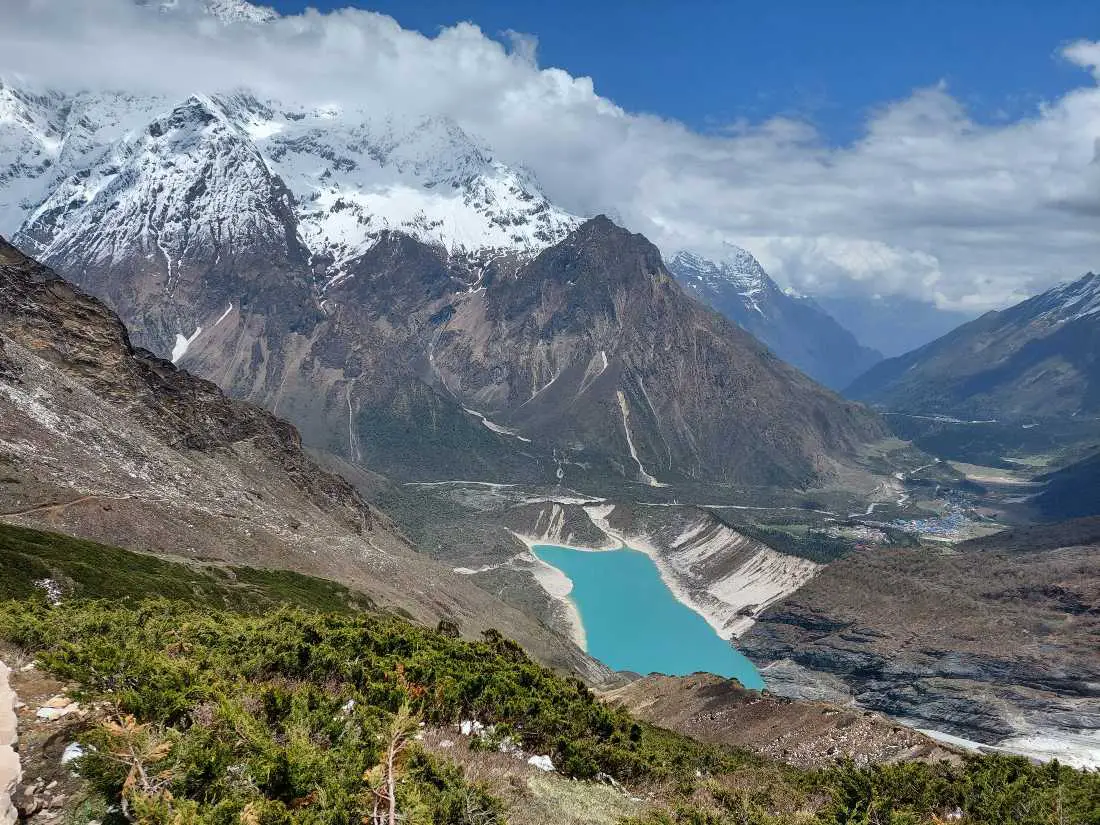
Things To Know Before Embarking on the Manaslu Circuit Trek
High altitude.
The Manaslu Circuit Trek reaches elevations exceeding 5,000 meters (16,400 feet), including the challenging Larkya La Pass at approximately 5,106 meters (16,752 feet). Altitude sickness can be a concern, requiring acclimatization and careful monitoring of symptoms.
Remote and Isolated Terrain
The Manaslu Circuit traverses remote and rugged terrain, far from major urban centers. Facilities such as lodges and medical assistance are limited, necessitating self-sufficiency and emergency preparedness.
Variable Weather Conditions
Weather in the Himalayas can be unpredictable, with conditions ranging from clear skies to heavy snowfall and blizzards. you must be prepared for cold temperatures, high winds, and potential weather-related challenges.
Long Trekking Days
The trek typically involves long days of hiking, often spanning 6 to 8 hours or more, with steep ascents and descents. Stamina and physical fitness are essential for completing each day’s trekking itinerary .
Permits and Regulations
The Manaslu Circuit Trek requires obtaining special permits from the Nepalese government. Independent trekking is not allowed in the Manaslu Region. Only a local registered local company can issue the permit.
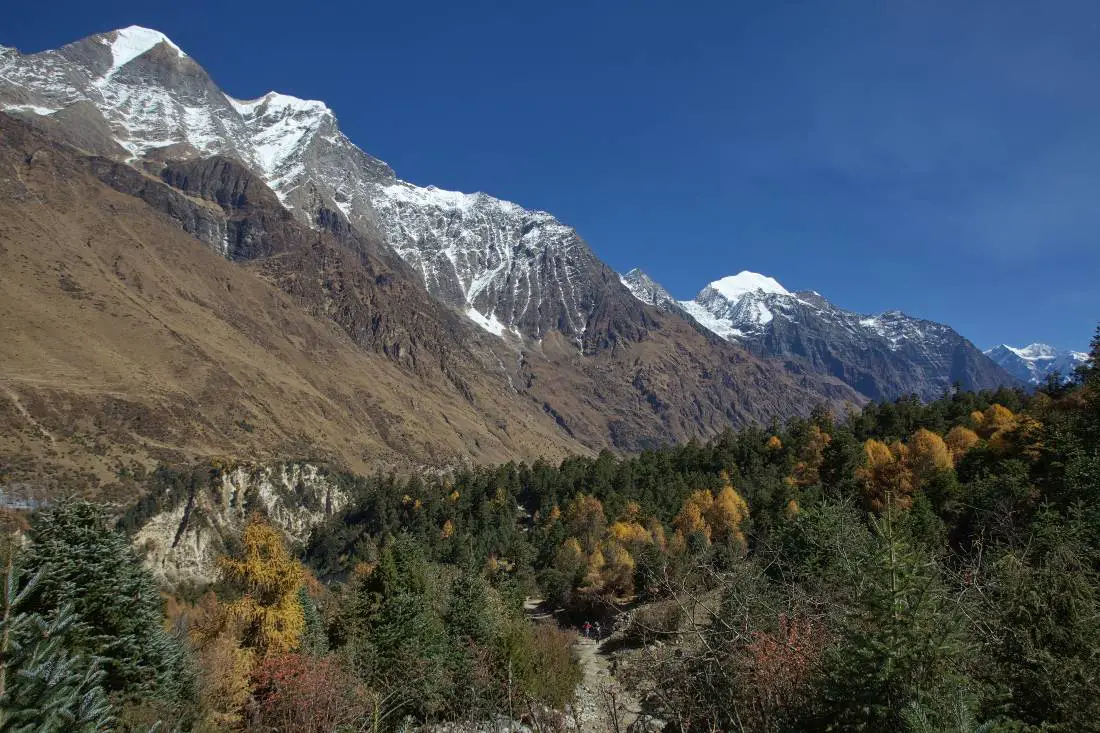
Itinerary For The Manaslu Circuit Trek
Day 1: kathmandu to macha khola.
Your adventure begins with a scenic journey from Kathmandu to Macha Khola. This can be done either by private jeep or local bus. The drive takes approximately 6-8 hours, offering glimpses of the countryside and the foothills of the Himalayas.
Macha Khola, a small village nestled along the Budhi Gandaki River, serves as the official starting point for the Manaslu Circuit Trek. Here, you’ll settle into your teahouse accommodation and prepare for the trek ahead.
Day 2: Machha Khola To Jagat
The trail from Machha Khola follows the Budhi Gandaki River, initially through a narrow path along the Khoralabesi village. You’ll encounter several small streams cascading down the mountainsides, eventually merging with the Budhi Gandaki.
One of the highlights of this day is Tatopani, a natural hot spring where you can take a relaxing dip to soothe your tired muscles after the first day’s travel.
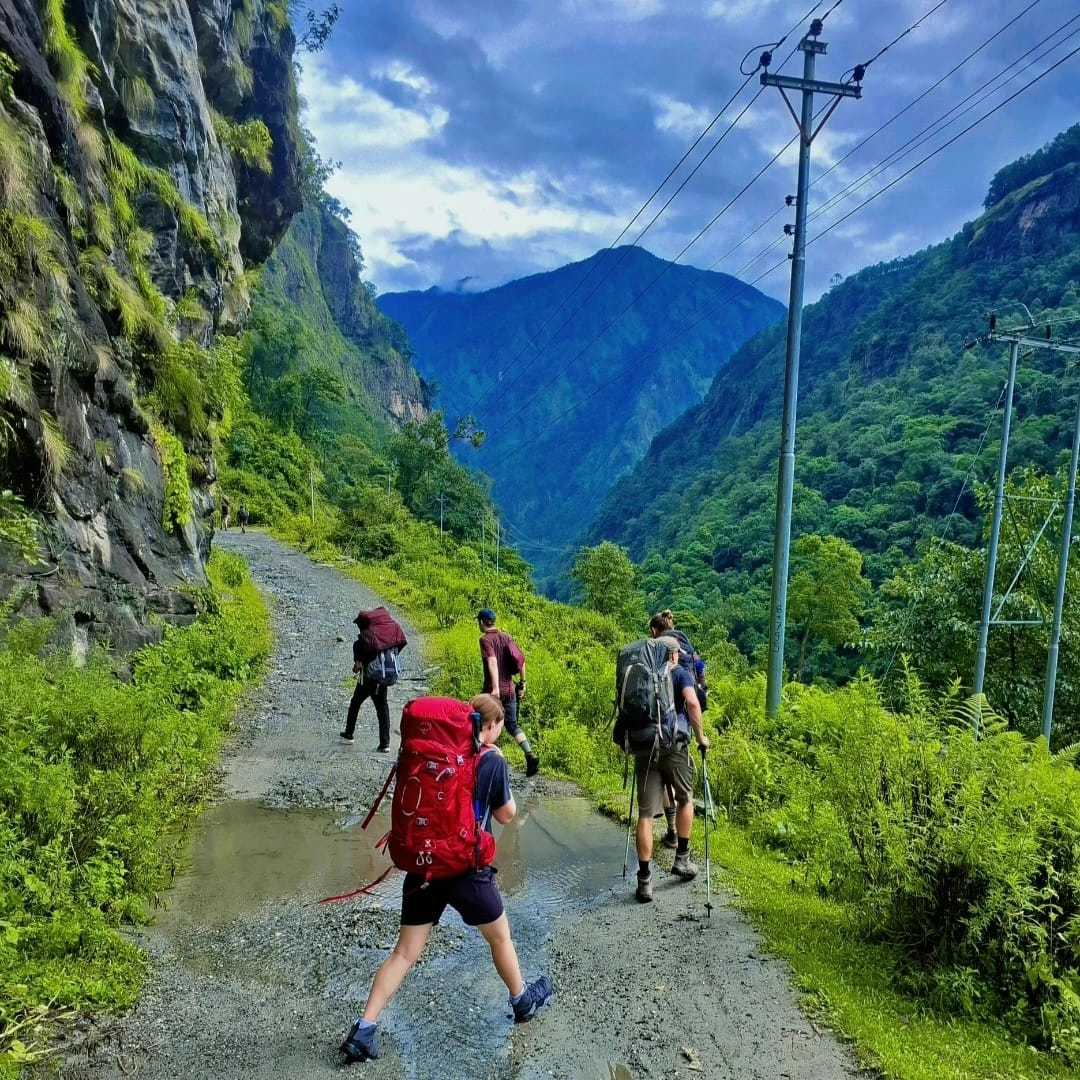
Day 3: Jagat To Deng
You’ll begin by climbing a rocky ridge to reach Salleri, a small village with captivating views of Mount Sringi. As you descend towards Setibas, you’ll notice the increasing presence of mani walls, indicating the growing influence of Tibetan culture in the region.
The valley widens, and the trail continues past stone houses along Ghat Khola. You’ll encounter a long suspension bridge, offering a thrilling experience as you cross the roaring river below.
The trail climbs towards Philim, a large Gurung village showcasing traditional architecture and local life.
After traversing through lush millet fields, you’ll reach Ekle Bhatti, a small teahouse settlement, which serves as your lunch stop or overnight stay depending on your pace.
The final stretch to Deng involves a gradual ascent through farmlands and meadows.
Day 4: Deng To Namrung
The trek from Deng to Namrung is the fourth day of the Manaslu Circuit Trek, offering a beautiful journey with diverse landscapes and cultural encounters. Here’s what you can expect:
The trail from Deng takes you through a fascinating mix of valleys, rivers, and quaint villages, gradually ascending towards Namrung. You’ll begin with a short descent to the Budhi Gandaki Riverbed, offering a different perspective of the valley.
The trail then leads you across a suspension bridge to Rana Gaon, a small village with traditional stone houses and agricultural fields. Next, you’ll encounter Bhimphedi, a picturesque spot with teahouses, followed by a gentle climb to Gap, a village known for its apple orchards.
Enjoy the scenic views and potentially savor some fresh apples during the season. Ghap is a good spot to take a lunch break and refuel for the remaining trek. After Ghap, the trail enters a captivating section with dense forests, cascading waterfalls, and vibrant flora and fauna.
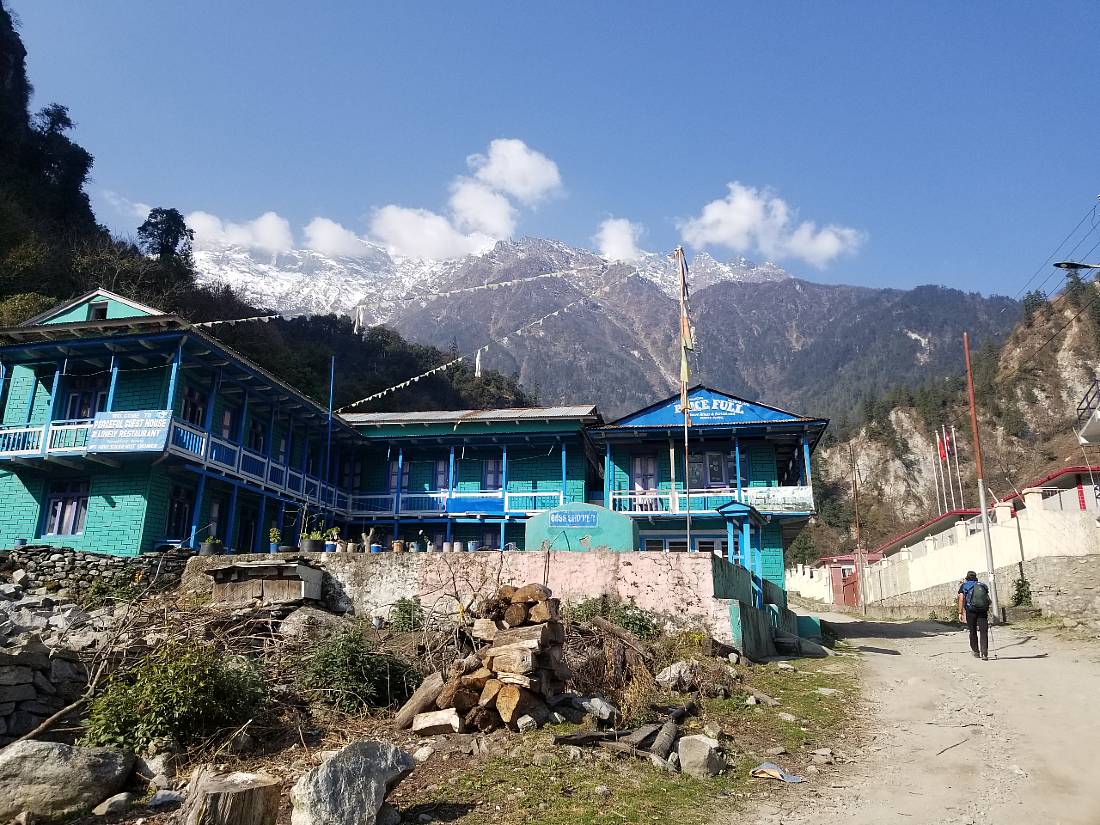
Keep an eye out for colorful birds and interesting plant life. As you approach Namrung, you’ll start noticing an increase in mani walls and colorful prayer flags, reflecting the growing Tibetan Buddhist influence in the region.
Namrung, a charming village nestled at an altitude of 2660 meters (8727 ft), is your destination for the day. Here, you’ll find comfortable teahouses with breathtaking views of the Manaslu Himal, including Manaslu itself.
Day 5: Namrung To Lho
As you leave Namrung, the trail is adorned with many mani walls and colorful prayer flags, signifying the strong Tibetan Buddhist influence in the region.
The initial part of the trek takes you through Upper Nupri, a beautiful area with traditional stone houses and yak pastures.
The path then enters a scenic forest section with towering fir, rhododendrons, and oak trees. Keep an eye out for interesting birdlife and the vibrant flora of the region.
You’ll reach Lihi village, showcasing unique architectural styles with flat roofs and stone houses. Interact with the locals and learn about their way of life.
As you ascend further, the trail opens up to spectacular views of the Manaslu range, including Manaslu itself, Peak 29, and the Naike Peak. The landscape becomes more dramatic, offering a glimpse of the beauty that awaits you on the Manaslu Circuit Trek.
Day 6: Lho To Samagaun
You will follow a higher trail along the lateral moraine of the Pungen Glacier. This route offers closer views of the glacier and Peak 29 but may involve some rocky sections.
Whichever route you choose, you’ll eventually reach Shyaula Kharka, a small herder settlement with traditional stone houses and yak pastures.
The trail then opens up to breathtaking views of the Manaslu range, including Manaslu itself, Himalchuli, and Ngadi Chuli.
Samagaun, a beautiful village nestled at an altitude of 3530 meters (11,581 ft), is your destination for the day. Here, you’ll find comfortable teahouses with breathtaking views of the surrounding mountains.
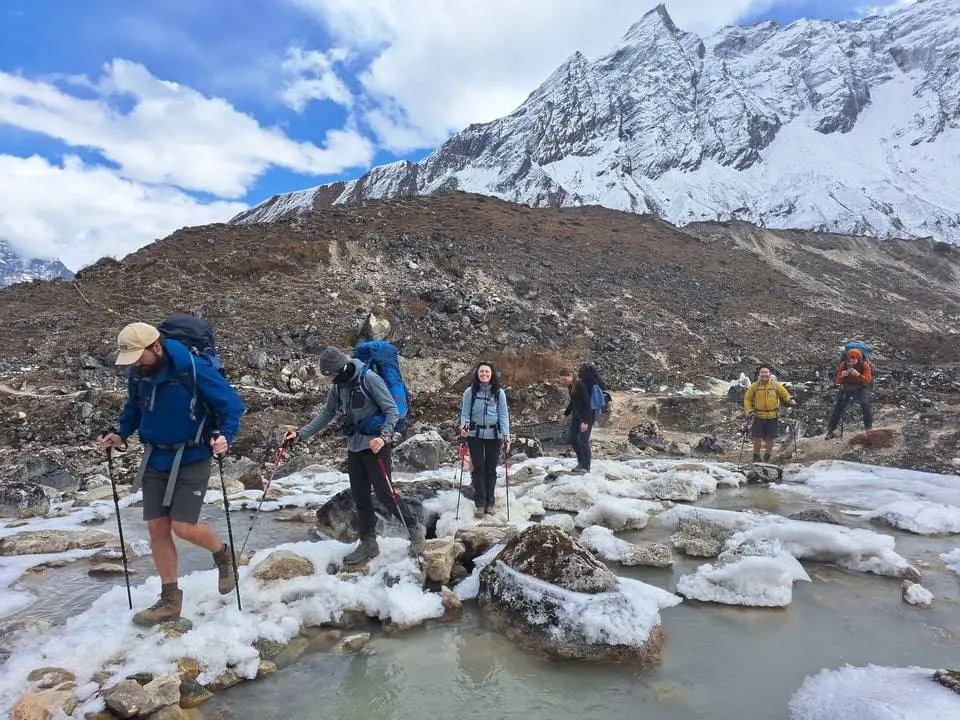
Day 7: Acclimatization Day in Samagaun
On this day you will hike to Manaslu Base Camp (4500 meters) – This is a more challenging hike that offers stunning views of Manaslu and the surrounding peaks.
Be sure to discuss this option with your guide to ensure it’s suitable for your acclimatization progress
A successful acclimatization day in Samagaun paves the way for a safe and enjoyable journey through the higher sections of the Manaslu Circuit Trek.
Listen to your body, prioritize rest, and enjoy the beautiful surroundings!
Day 8: Samagaun To Samdo
You’ll begin with a gradual descent towards the Budhi Gandaki River, offering a different perspective of the valley.
After crossing the river on a suspension bridge, the landscape transforms into a more arid and rocky terrain, resembling a high-altitude desert.
You’ll encounter yak herder settlements and their grazing pastures along the way.
The trail then steadily ascends through this unique landscape, offering panoramic views of the Manaslu range, including Manaslu itself and the surrounding peaks.
Samdo, a small village nestled at an altitude of 3875 meters (12,713 ft), is your destination for the day. You’ll find comfortable teahouses with even more dramatic close-up views of Manaslu.
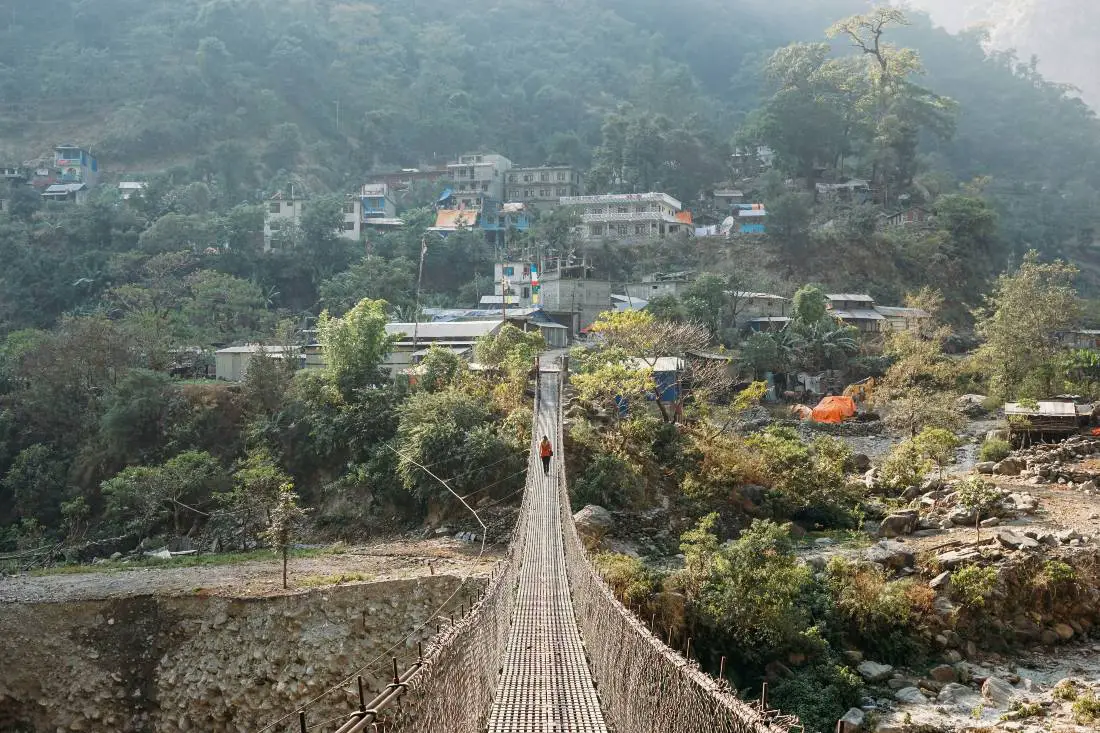
Day 9: Acclimatization Day in Samdo
Similar to your acclimatization day in Samagaun, spending an acclimatization day in Samdo (at 3875 meters) is crucial for success on the Manaslu Circuit Trek.
You will hike to the Tibetan border on this day. This can be a challenging but rewarding hike depending on the specific route chosen. It helps your body to acclimatize your body for Larke Pass.
Day 10: Samdo To Dharamsala
It’s a challenging yet rewarding leg that takes you through a high-altitude landscape with dramatic scenery and prepares you for the upcoming Larkya La pass crossing.
You’ll start with a steep and challenging climb through scree slopes, demanding a slow and steady pace.
The trail continues alongside the Larkya Glacier, offering a unique perspective of the glacial terrain. Keep an eye out for crevasses and follow your guide’s instructions carefully.
Dharamsala, also known as Larkya Phedi, is a small village situated at an altitude of 4470 meters (14,665 ft). This is your destination for the day and serves as the base camp before tackling the Larkya La pass.
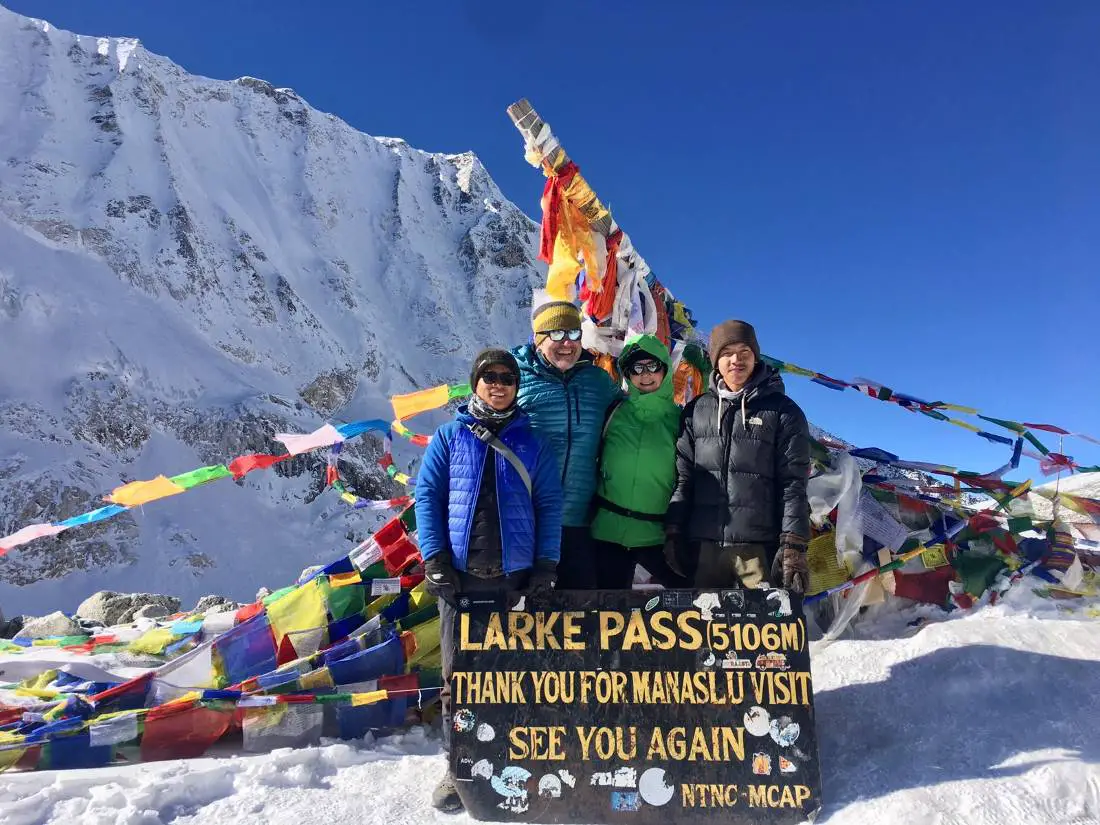
Day 11: Dharamsala To Bhimthang Via Larke Pass
This is the day you have been waiting for. You’ll wake up very early for a pre-dawn start to avoid the afternoon sun and potential snowmelt on the pass.
The initial ascent from Dharamsala involves a steep climb through moraine and scree slopes, demanding a slow and steady pace with frequent breaks.
As you gain altitude, the air will become thinner, so listen to your body and take rest breaks whenever needed.
The final push to the pass involves a rocky section that might require using your hands for balance.
Reaching Larkya La, the highest point of the Manaslu Circuit Trek, is a moment of immense achievement.
Here, you’ll be rewarded with breathtaking panoramic views of Manaslu, Himchuli, and the surrounding Himalayan ranges. On a clear day, you might even see glimpses of Annapurna peaks in the distance.
The descent from Larkya La towards Bimthang is initially steep and involves navigating loose scree slopes. Use hiking poles for extra support and stability.
The trail then enters a more scenic valley with pastures and streams.
Day 12: Bhimthang To Dharapani
You’ll begin with a gradual descent through a scenic valley with pastures, streams, and lush vegetation. Enjoy the contrasting landscape compared to the previous day’s terrain.
The trail then leads you to a suspension bridge over the mighty Budhi Gandaki River. As you descend further, you’ll enter the lower Manaslu region, with more permanent settlements and cultivated fields.
Dharapani, a charming village nestled at an altitude of 3720 meters (12,205 ft), is your destination for the day. This is a popular stop on the Annapurna Circuit Trek as well.
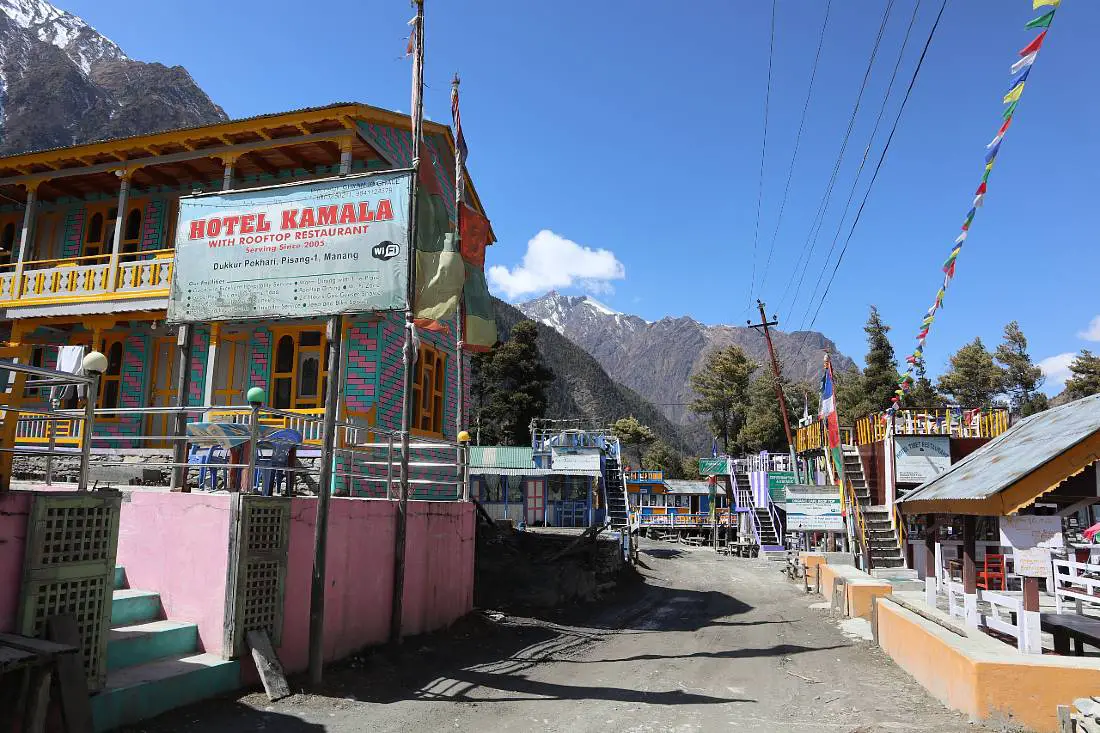
Day 13: Dharapani To Besisahar
The trail leads you to a suspension bridge over the mighty Budhi Gandaki River.
As you descend, you’ll enter the lower Manaslu region, with more permanent settlements and cultivated fields.
Besisahar, a bustling town nestled at an altitude of 794 meters (2,605 ft), is your final destination on the Manaslu Circuit Trek. This is also the starting point for the popular Annapurna Circuit Trek .
Day 14: Besisahar To Kathmandu
From Besisahar, you can take a local bus back to Kathmandu. The journey takes approximately 10 to 12 hours, depending on traffic and road conditions.
The bus ride can be quite bumpy and dusty, so be prepared for a long journey. Tickets can be purchased at the bus station in Besisahar.
I hope this inspires you to hike the Manaslu Circuit Trek, I certainly want to do it after reading this!
Leave a Reply Cancel reply
Your email address will not be published. Required fields are marked *
This site uses Akismet to reduce spam. Learn how your comment data is processed .

Manaslu Circuit Trek: The Ultimate Guide
Jackson Groves
Posted on Last updated: July 10, 2023
Categories HIKING , NEPAL
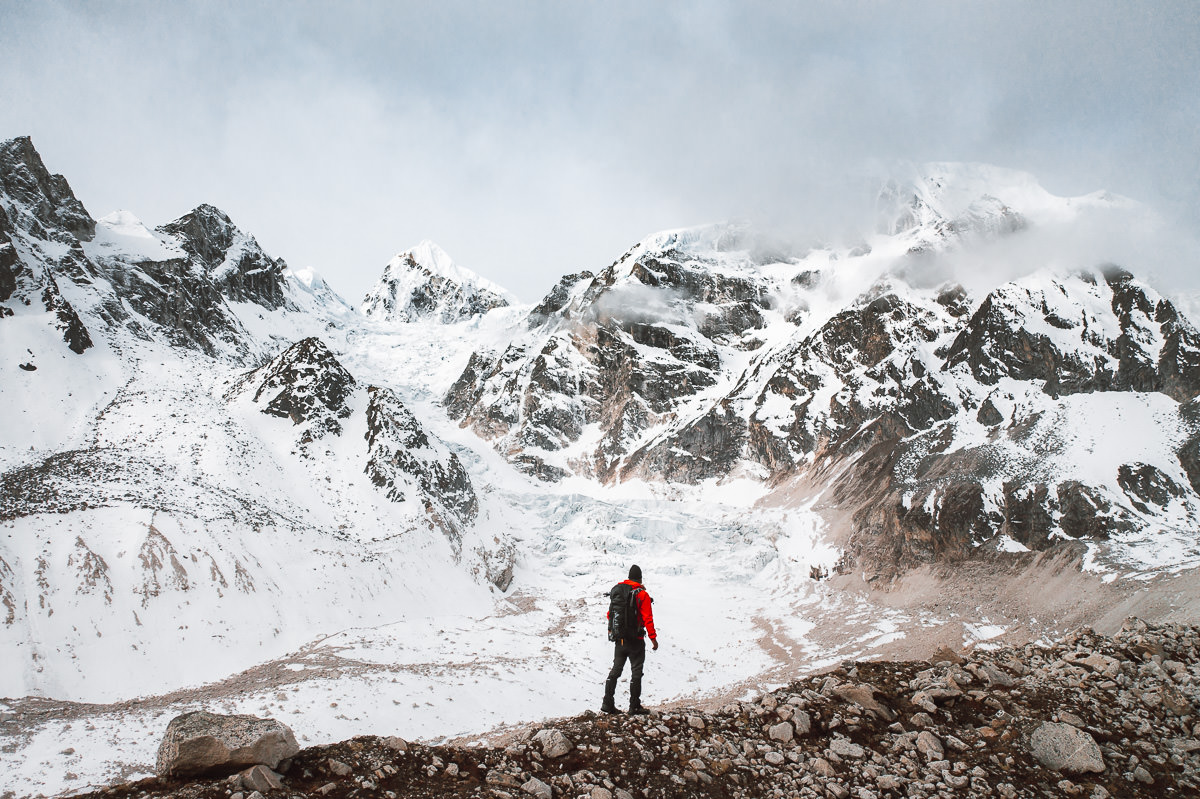
The Manaslu Circuit Trek is an off-the-beaten-path trail in the Himalayas of Nepal. The route leads you up and around the base of Mount Manaslu as you stay each night in different Tibetan villages along the way. The scenery is incredible, especially the last few days of the circuit as you reach heights of above 5000 meters while crossing the Larke Pass, also known as Larkya La Pass.
TRY THE 3 BEST TREKS IN NEPAL

Manaslu Circuit : My personal favorite 2-week trek through Tibetan villages and stunning scenery. Less crowded and more authentic.
Annapurna Circuit : The most beautiful & scenic 2-week trek in Nepal although can be crowded at times.
Everest Base Camp Trek : The most iconic 2-week route reaching the famous (EBC) Everest Base Camp at 5,300m.
I highly recommend this circuit for those who looking to avoid the crowds of Annapurna Circuit and the Everest Base Camp Trek. The highlight of this circuit is the authentic culture of the Tibetan villages along the way and takes you around Manaslu, the world’s eighth-highest mountain at 8,163 meters (26,781 ft).
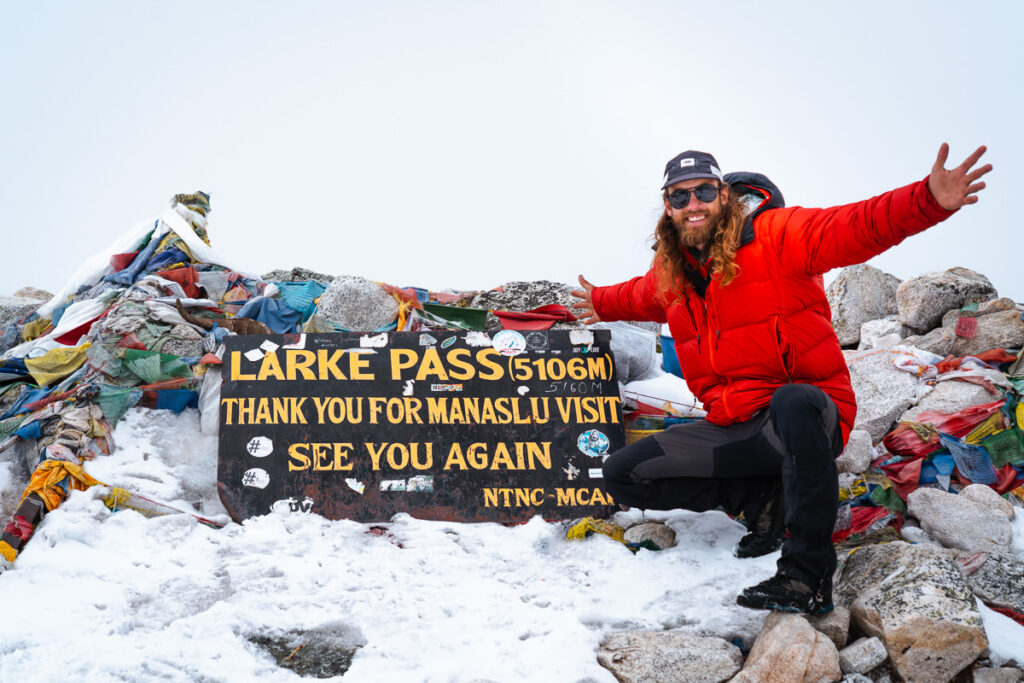
Before sharing my experience on the trek with One Globe Travel in the second section of this blog post, I will detail all of the information you have to know in this complete guide about the Manaslu Circuit Trek.
You can use my discount code ‘ JACKSON5 ‘ for 10% off the total price of your trek with One Globe Travel , which is a pretty handy saving of almost $200! To book the trek with One Globe Travel you can visit their site by CLICKING HERE or contact them via the details below:
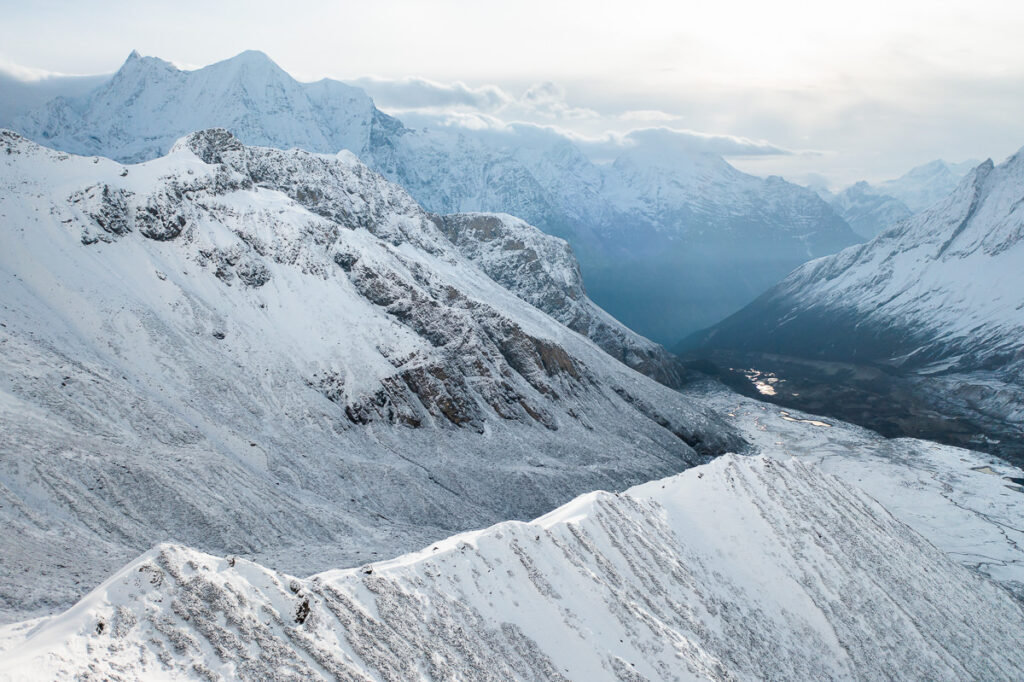
Table of Contents
THE MANASLU CIRCUIT TREK GUIDE
In this blog post, I will cover everything you need to know about the logistics of the Manaslu Circuit Trek and also share with you my experience on each day of the trek in the form of a short journal entry and my photos from that day. This will give you an idea of what to expect and a great insight into the scenery you will find on each day of the trek.
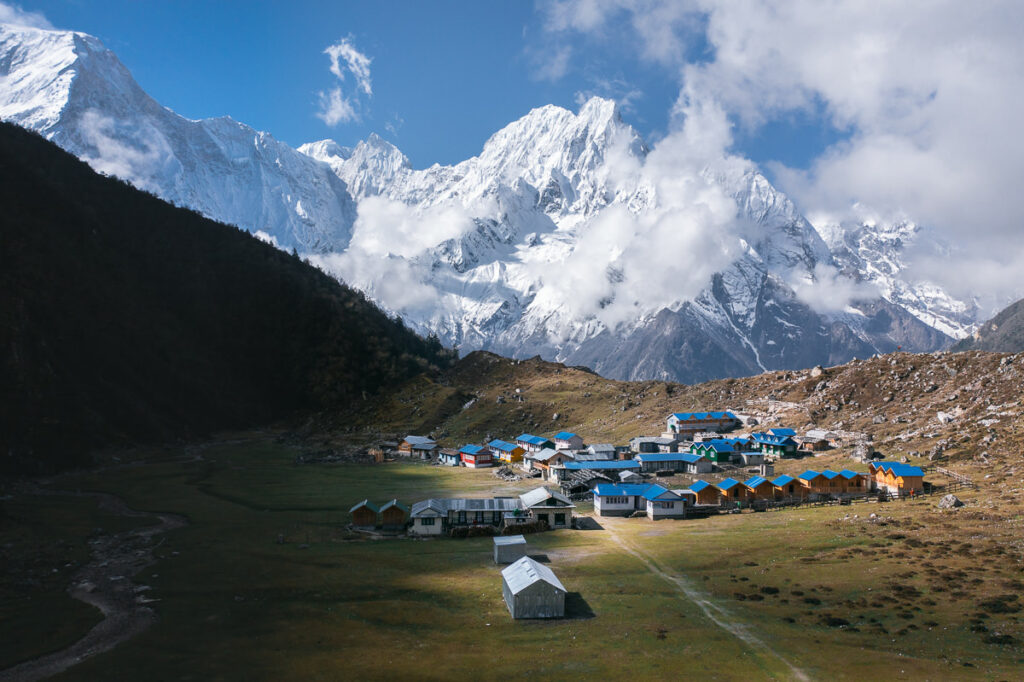
MANASLU CIRCUIT TREK DETAILS
- Distance : 180 km through-hike from Machhakola to Dharapani
- Days required : 12 days
- Total Incline : ( with undulation) – 11,000 m
- Total Decline :(with undulation) – 9,800 m
- The highest point on the trek : 5200m, which was just above the Larke Pass (Larkya La Pass) on day 11.
- Difficulty : This trek was much harder than Everest Base Camp Trek as it was 30% longer, much steeper, and less commercialized. Having said that, it was basic walking and there was nothing technical. Our longest day was 27km with 1600m of incline. If you can handle the altitude of 5,200m and can walk each day for 6-10 hours, you will be fine on this trek. The acclimatization profile was very good as you have 11 days to reach the highest point, so it eases you into it.
- Permits : Your tour operator will take care of these in each town and for the Manaslu Circuit Trek it isn’t possible to hike independently. You must hike with a guide and there must be at least two in your group, as well as the guide.
- Guide : A guide is required on this trek and the guide manages all of the logistics, distances, directions, and tea houses. The directions weren’t always very clear like on the Everest Base Camp trek and having the guide manage all of the logistics was great. I went with One Globe Travel and highly recommend them.
- Accommodation: Guest Houses, also known as Tea Houses, are available along the way where you will sleep in a comfortable bed and have access to showers (extra charge) and restaurant facilities. Very comfortable accommodation and great after a long day of hiking. Most of the villages were Tibetan, which gave us a great insight into their unique culture.
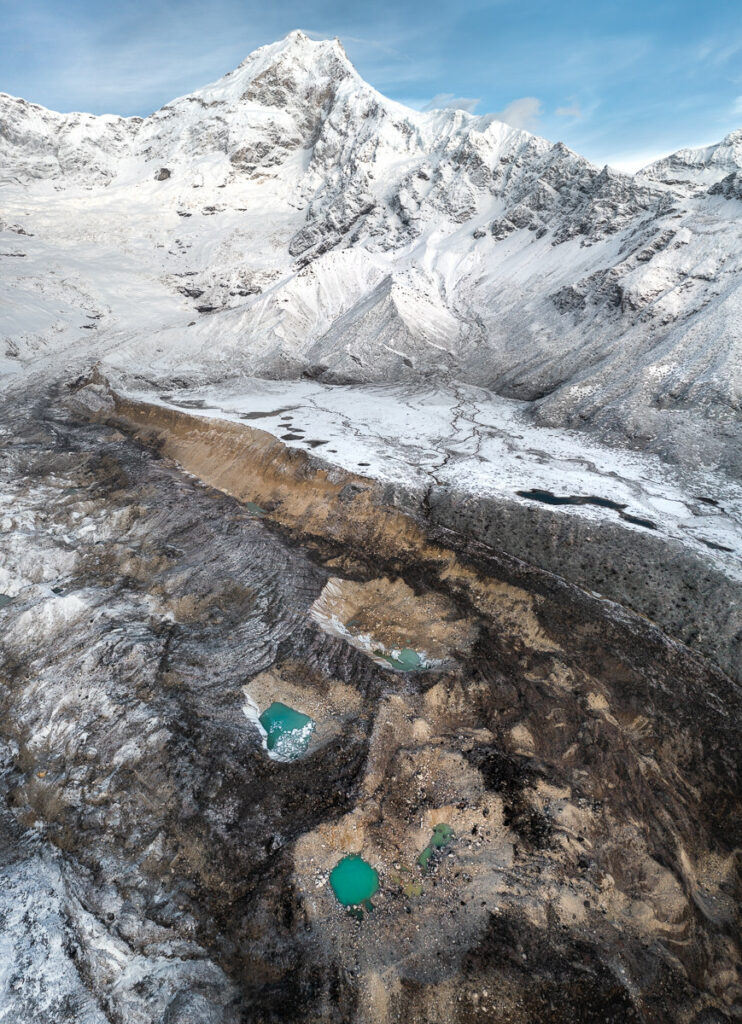
TOP 3 PLACES TO STAY IN KATHMANDU

- Ultimate Luxury: The Dwarika’s Hotel – Luxury, Spa-service, Pool
- Best Value : Aloft Kathmandu Thamel – Swimming Pool, Gym & Great Restuarant
- Budget Choice: Hotel Jampa is easily the top cheap hotel in Kathmandu
KEY POINTS ABOUT THE MANASLU CIRCUIT TREK
- This circuit is way less crowded than Everest Base Camp and the Annapurna Circuit. It is growing in popularity but it’s still a great time to trek this circuit before it hits the mainstream.
- The Manaslu Circuit trek is off-the-beaten-path and remote. However, there are teahouses in each village along the way so each night you get a great sleep in a bed with blankets, have access to showers, eat great meals in a restaurant, and can charge your electronics and cameras.
- The trailhead can be reached by car so there is no need to pay for expensive domestic flights.
- The first few days of the circuit run along the trail next to the river in a deep gorge called the Buri Gandaki with lots of suspension bridge crossings. The trek transitions to the snow for the last few days although you can trek with regular hiking boots while enjoying the massive snowy mountains on either side of the trail.
- The scenery is constantly changing and you will experience a subtropical jungle while at lower elevations before entering the Himalayan foothills. Finally, you will reach the Larkya La above 5,100 meters / 17,000 feet.
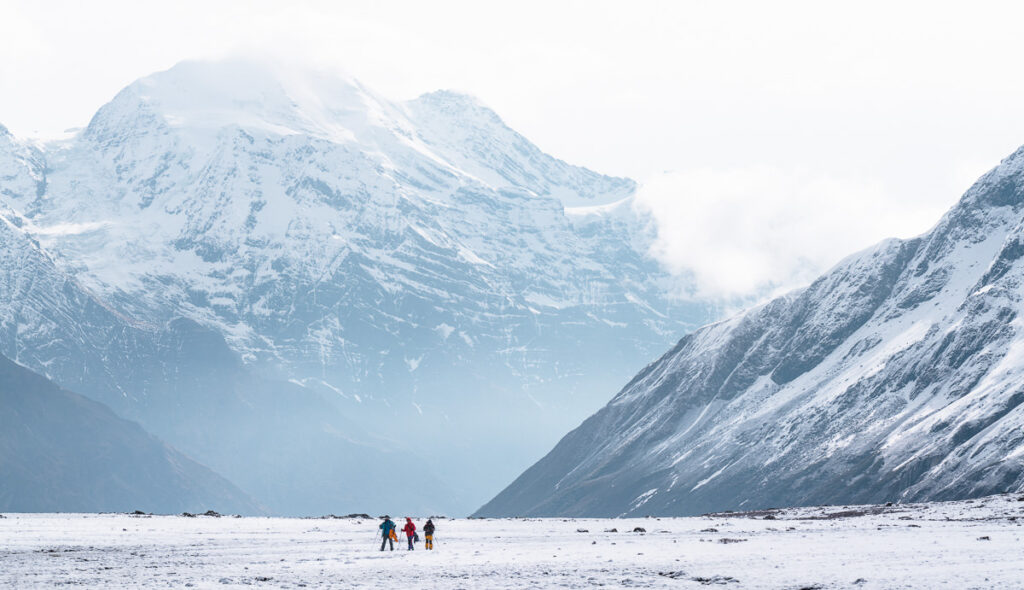
BOOKING A GUIDE FOR THE MANASLU CIRCUIT
The Manaslu Circuit Trek does require a guide. Everest Base Camp and Annapurna Circuit can be done independently but the rules on the Manaslu Circuit are stricter about having a guide. I did the trek with Samip from One Globe Travel , which is one of the top trekking companies when it comes to Manaslu Circuit. The owner, Nawang, is a Tibetan himself, which is the main culture you will experience along the circuit.
The trek costs around $1800 USD with One Globe Travel as of 2021 and includes all transfers, accommodation, meals, drinks permits, and even the hotel stay before and after the trek at a 4.5-star hotel with a rooftop pool. I honestly had a great time, the guide was great and I can wholeheartedly recommend One Globe Travel. They even helped me many weeks after the trip during the lockdown in Kathmandu.
Book now: One Globe Travel
Email: [email protected]
Phone Number: +977-01-4003071/72/73
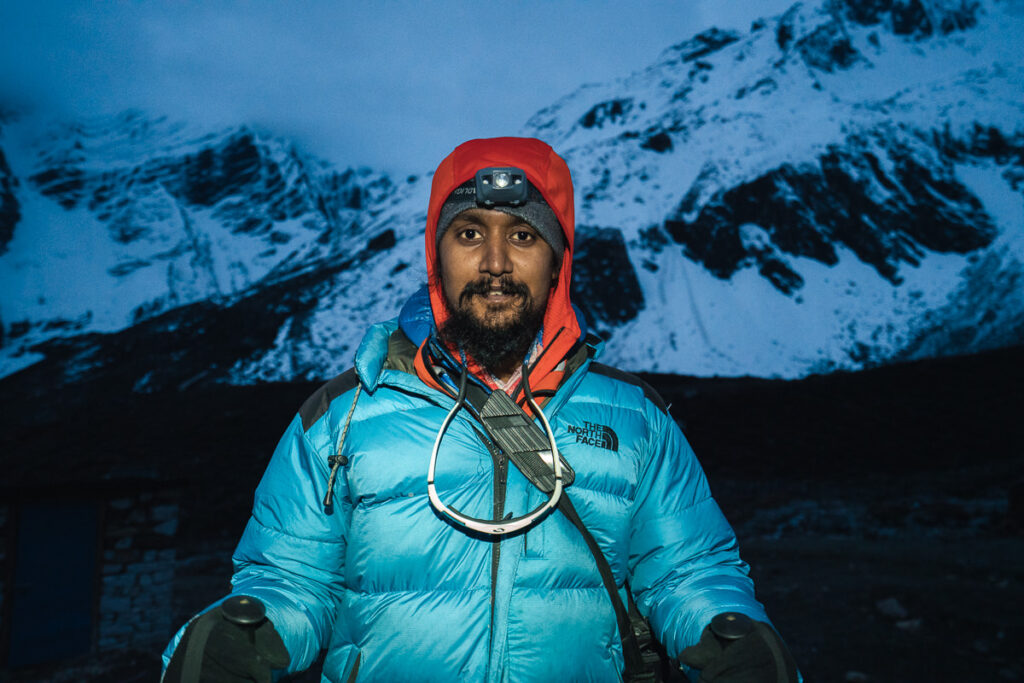
MANASLU CIRCUIT TREK PACKING LIST
I pack pretty light and managed to wash most of my clothes each afternoon/night for the first half of the trip. In the latter stages of the trip, it was pretty cold so we weren’t sweating as much and we wore our warm gear basically nonstop while at the teahouses and there was no real need for multiple outfits. This is just a guide and it worked quite well for me with no complaints from my set-up.
You won’t need a sleeping bag as there are blankets in each guesthouse and when it got cold I just wore my down jacket. This meant I didn’t have to carry a sleeping bag for 12 days, although our guide did.
- 1 pair of pants that maybe convert to shorts
- 1 pair of shorts
- 1 Warm or thicker pair of hiking pants
- 1 Long sleeve quick-dry shirt
- 1 Long-sleeve thermal shirt
- 2 Short-sleeve t-shirts
- 1 Thermal long underwear
- 4 pairs of quick-dry underwear
- 1 Lightweight down jacket
- 1 Heavy-duty summit down jacket
- 1 Neck Buff
- Hiking boots
- Microspikes
- 1 pair of warm summit socks
- 2 pairs of regular socks
- Trekking poles
- Water filter
All of this should fit into a backpack no bigger than 50L and be less than 15kg. I actually took a 40L camera bag, which you can see in the photos so I went super light. My camera gear included a DJI Mavic Pro 2 drone, 100-400mm, Mirrorless body, 16-35mm lens, 24-105mm lens, GoPro Max, Sony RX100, and a tripod. Without all of that, a 30L backpacking bag would have been enough.
Having said that, our guide and one of the girls on the trek had an 80L pack. I would say a 60L pack would be just about right for this trek and you would have lots of space assuming you wouldn’t need to fill it up.
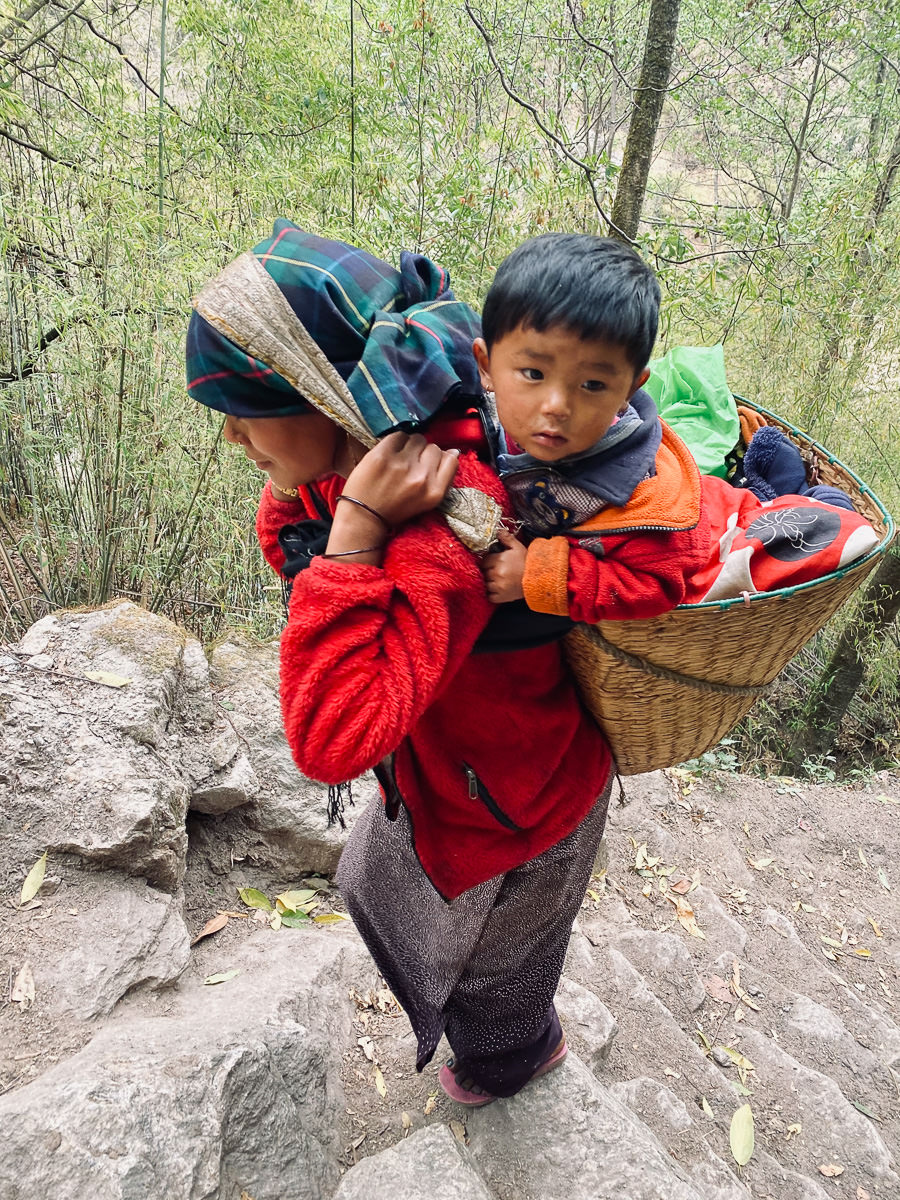
TREKKING THE MANASLU CIRCUIT: WIFI/ELECTRICITY AVAILABILITY
Wifi: Costs anywhere from $free to $4 to use wifi at the guesthouses. Buy an NTC Sim before you go. It worked early on in the trek with a weak signal and I was able to get emails and chat on Facebook messenger all the way up until about day seven and then we were off-grid.
Lots of the tea-houses say they have free wifi but then will blame the weather that it isn’t working. If you really do need it, test the wifi before picking your tea-house. Overall we had some minimal connection about 40% of the time on the trek. Samaguan had decent wifi and we stayed there for two nights so caught up with all of the news and action online.
Electricity: You will have to pay anywhere from $free at low elevations to $5 to charge your power banks, cameras, and phones. The key is to get a fat power bank. Pay to charge that then charge everything from your power bank. My power bank lets me charge my phone and four camera batteries before it would be done.
Most of the places we stayed let us charge our gear for free but when it is busy they usually charge as they run off gas or solar in many of the tea houses.
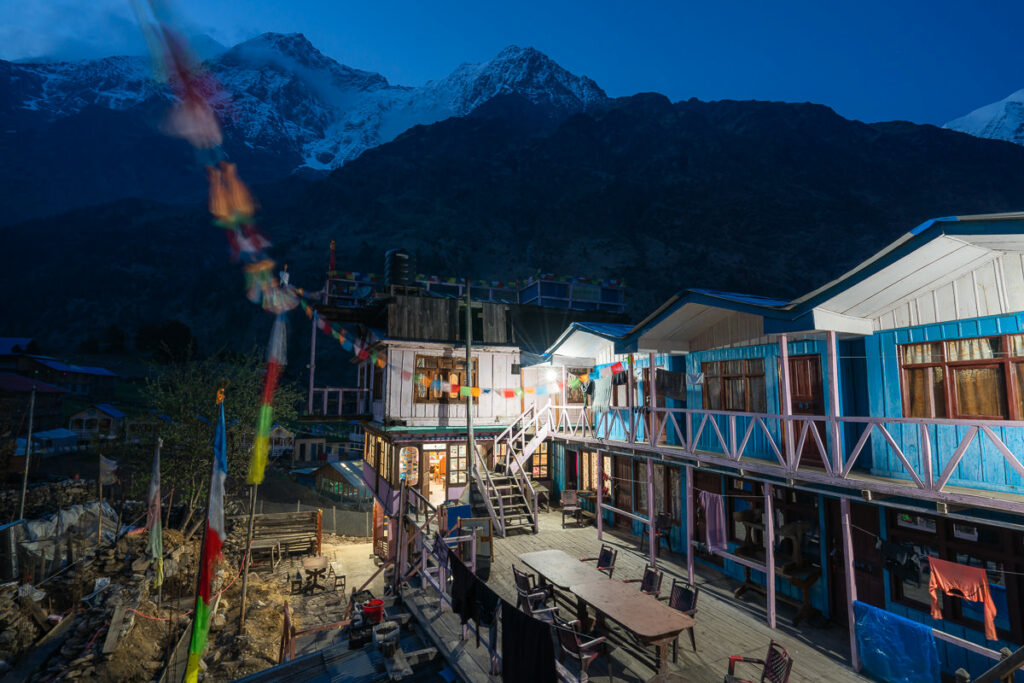
MANASLU CIRCUIT ITINERARY
There are many ways to alter the route on the Manaslu Circuit just as there are lots of different options for day trips on your acclimatization days. However, for the sake of giving you a rough idea of what your itinerary and acclimatization profile will look like this is a proposed itinerary and what my trek entailed but depending on the weather, your guide, and your preference it can be altered.
- Day 1, Machhakholagaon (862m) to Jagat (1,330m) – Distance: 26km, Incline 1512m
Day 2, Jagat (1,330m) to Deng (1880m) – Distance: 21km, Incline 1636m
Day 3, Deng (1880m) to Prok (2275) – Distance: 14km, 1082m
Day 4, Acclimatisation day: Prok day-trip to Kal Tal Lake (4100m) – Distance: 13km, Incline 1600m
Day 5, Prok (2275m) to Namrung (2661m), Distance: 10km, Incline 660m
Day 6, Namrung (2661m) to Lho (3200m), Distance: 11km, Incline 900m
Day 7, Lho (3200m) to Samagaon (3500m), Distance 8km, Incline 600m
Day 8, Acclimatisation day: Day trip to Pungen Gumba (4200m), Distance 17km, Incline: 800m
Day 9 , Samagaon (3514m) to Samdo (3862m), Distance: 9km, Incline 600m
Day 10, Samdo (3862m) to Dharma Shala (4466m), Distance 7km, Incline 700m
- Day 11, Dharma Shala (4466m) to Bhimtang (3709m) via Larke Pass 5134m, Distance: 18km, Incline 800m
Day 12, Bhimtang (3709m) to Dharapani (1860m), Distance: 25km, Incline 350m
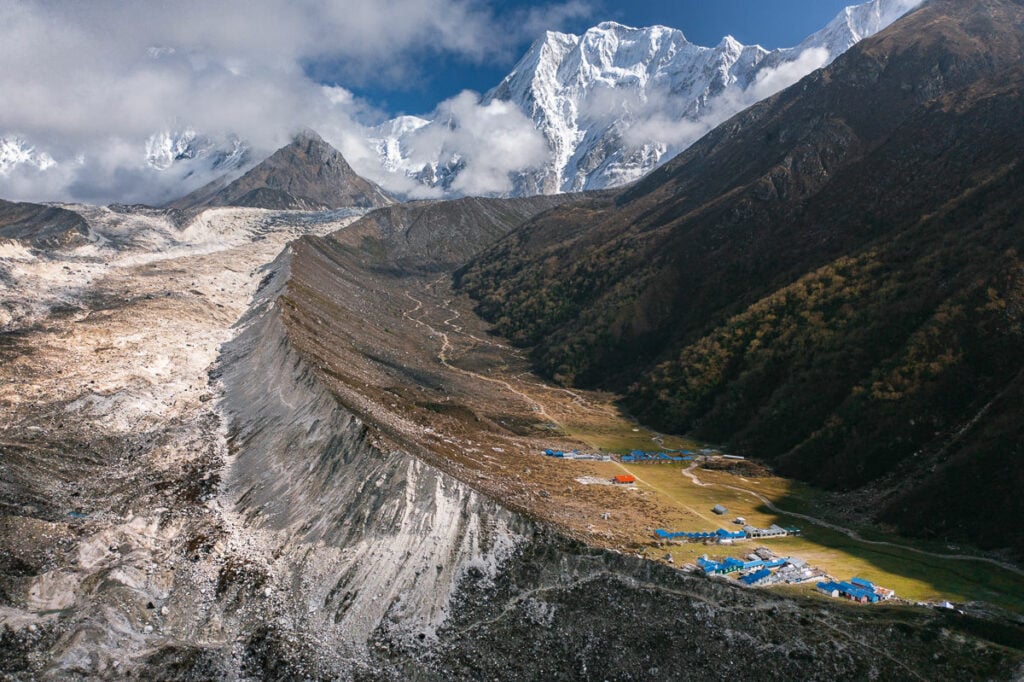
MY MANASLU TREK VIDEO
I filmed from start to finish to give you an insight into how the trek looks and what to expect. I hope you enjoy the video.
MY EXPERIENCE ON THE MANASLU CIRCUIT TREK
For each day of the trek, I will share the details of the route for that day, a few highlights of mine personally that I wrote each night while trekking, and some of my favorite photos from that section of the route.
Day 1 , Machhakholagaon (862m) to Jagat (1,330m) – Distance: 26km, Incline 1512m
The first day of the trek begins in the small town of Machhakholagaon . You will quickly find your place alongside the Budhi Gandaki River, which follows the gorge. The trail is a dusty road blasted into the cliffside for the most part although there are a few narrow sections including a number of river crossings (no wet feet) and suspension bridges. Expect to be exposed to the sun with little tree cover and be greeted by some steep staircases that will be a shock to the legs on the first day of trekking.
Day 1 Highlights:
- Setting off out of the town in golden light. Felt lucky to be here and excited for what was to come. With little idea of the landscapes in store, it was a truly adventurous atmosphere surrounding our group.
- Following the raging river, all day provided some stunning scenes. Around each turn and beyond each set of stairs we found a beautiful view. Mountains high our necks hurt towered above us on either side, with the river winding its way through like a serpent.
- On a very hot day, the Coca-Cola at our lunch break really hit the spot. Temperatures stung the skin as we battled through 25km and 1500m of incline underneath a piercing sun.
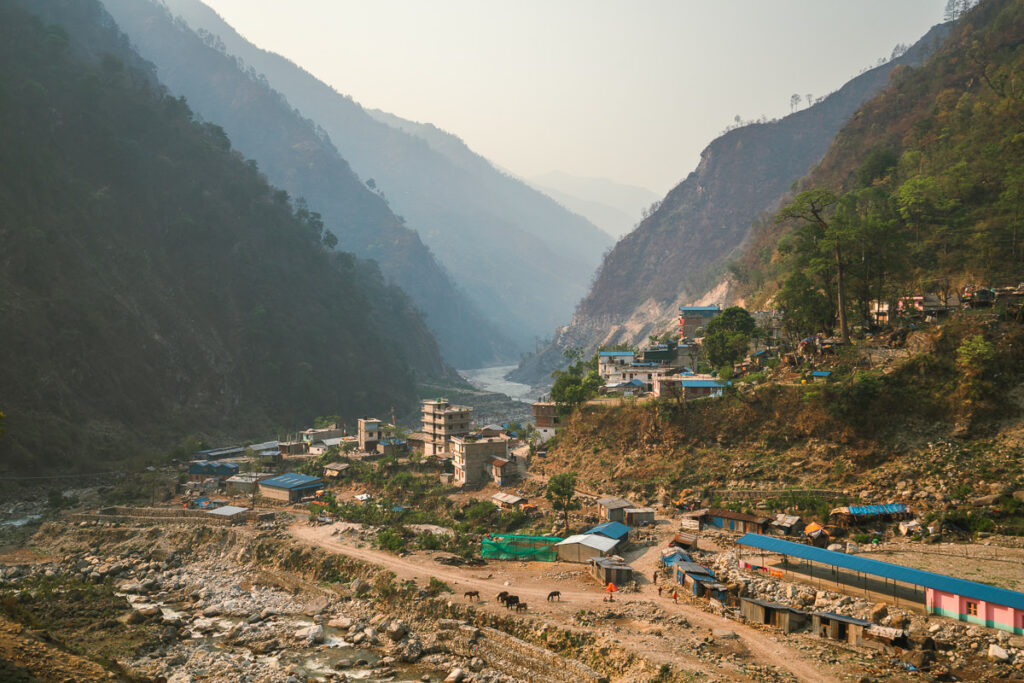
We woke a little bit sore and tired as our bodies adjusted to life on the trekking route. From Jagat, the trail wound through sub-tropical forests, alongside small rivers and quiet villages where we often stopped for a cup of tea.
The valley opens up in the early stages of the trail, which reaches Ghatta Khola river. One of the interesting parts about the route today is the very long suspension bridge in Philim, which is a large Gurung village. Later in the day, the route passes through a wild gorge as you criss-cross the river on suspension bridges before passing through the bamboo forests to the Deng Khola river. After crossing the river, you’ll reach the tiny village of Deng.
Day 2 Highlights:
- The layers of mountains were sometimes five or six deep as I began to wonder how we could be so high, yet so far below these peaks.
- Reaching camp today just before sunset was a great feeling. Back-to-back days of 20Km+ day with 1500m of climb means I surely deserved a Gorkha beer!
- The suspension bridges are always fun and today we crossed a couple of very high passes. There’s always an element of risk and excitement with these suspension bridges as they’re tattered with holes and battered by rockfall.
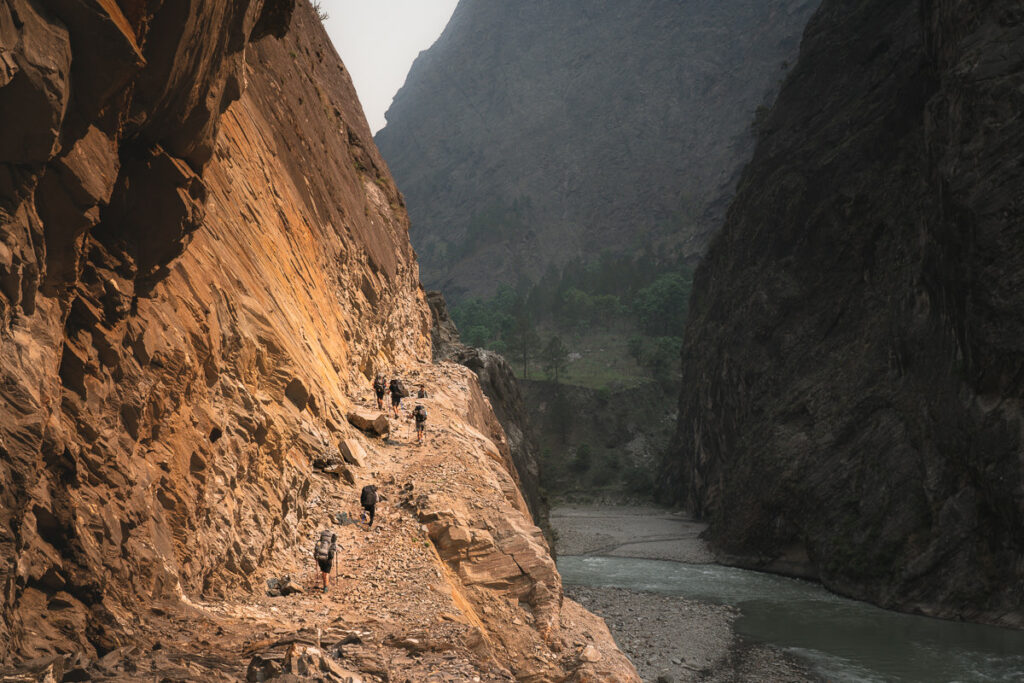
After breakfast in Deng, the trail takes you to one of the most important and culturally significant sections of the trek. Firstly, you will cross the Budhi Gandaki river and make the climb up to the bridge, where you’ll ascend further to join a trail from Bhi. The trail then leads you through the lush forests, alpine vegetation, and small villages. This is the first time the major peaks will start to appear in the distance.
Today is a shorter day and after a final ascent through the forest, you will reach Prok, a Tibetan village situated on a very scenic plateau beneath towering peaks. Green and yellow farming fields create a patchwork display of colors in this traditional town. It’s time to settle in because on this itinerary, we stay in Prok for two nights.
Day 3 Highlights:
- Sitting inside a tiny tea house, precariously perched on a cliff-side when a storm hits. As the rain hits the tin roof and the wind blows wildly all I can think about is how isolated people in this region are and how inhospitable the weather can be. That gets more and more apparent the higher we climb.
- A few stunning suspension bridges today with a lush green forest below contrast against the cool hues of the glacial river. Nepal is truly beautiful.
- We reached our guest house for the night in Prok, which is a very small village. I sat in the kitchen loft with the 81-year-old grandmother and the wife for Tibetan tea as we watched the Daal baht process. The kitchen and entire house were traditional Tibetan style. The grandmother spun her prayer wheels and through our guide’s translation told us she feels Tibetan, not Nepali. Having two of the guys on the trek translate gave us unique insight into the experiences and life of a Tibetan from the pre-Chinese occupation era.
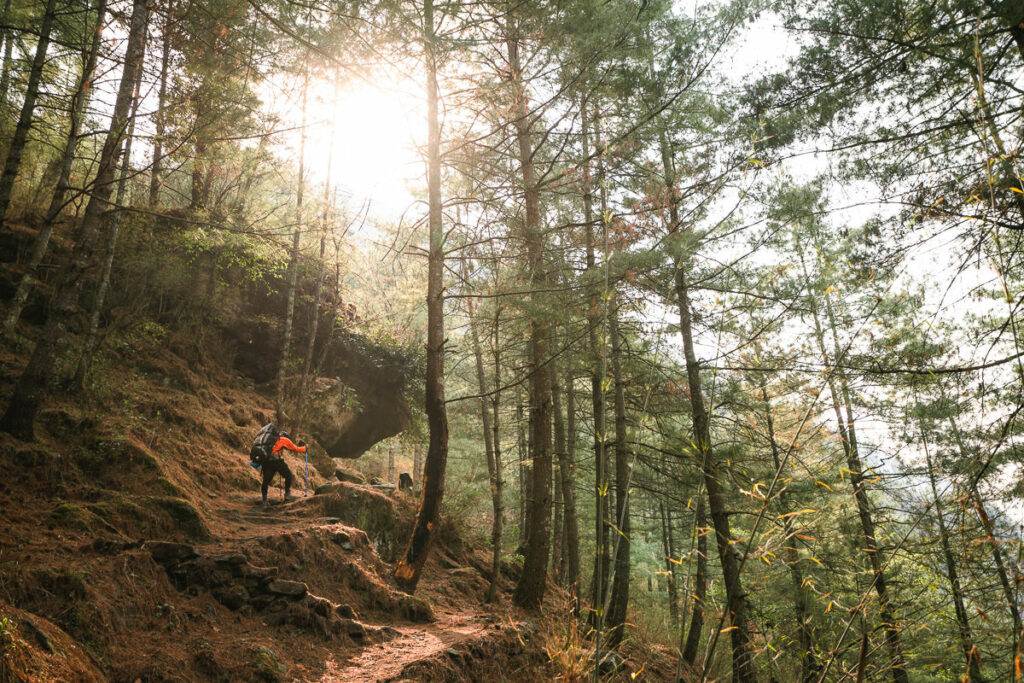
Today was a pretty heavy day with a very steep climb up to Kal Tal lake. The route is basically straight up and winds along switchbacks through the forest. Along the way, we passed a beautiful monastery and several meditation huts and accommodations scattered throughout.
The total climb was more than 1500m over less than seven kilometers so it is very steep and coming down gave the legs a huge workout. Today capped off over 6000m of an incline in just four days so it was a pretty aggressive start to the trek.
On a sunny day, this alpine lake is spectacular. Crystal clear water and towering, snowy mountain peaks provide an epic backdrop. We were a bit unlucky with the weather as it was grey and gloomy but still spectacular.
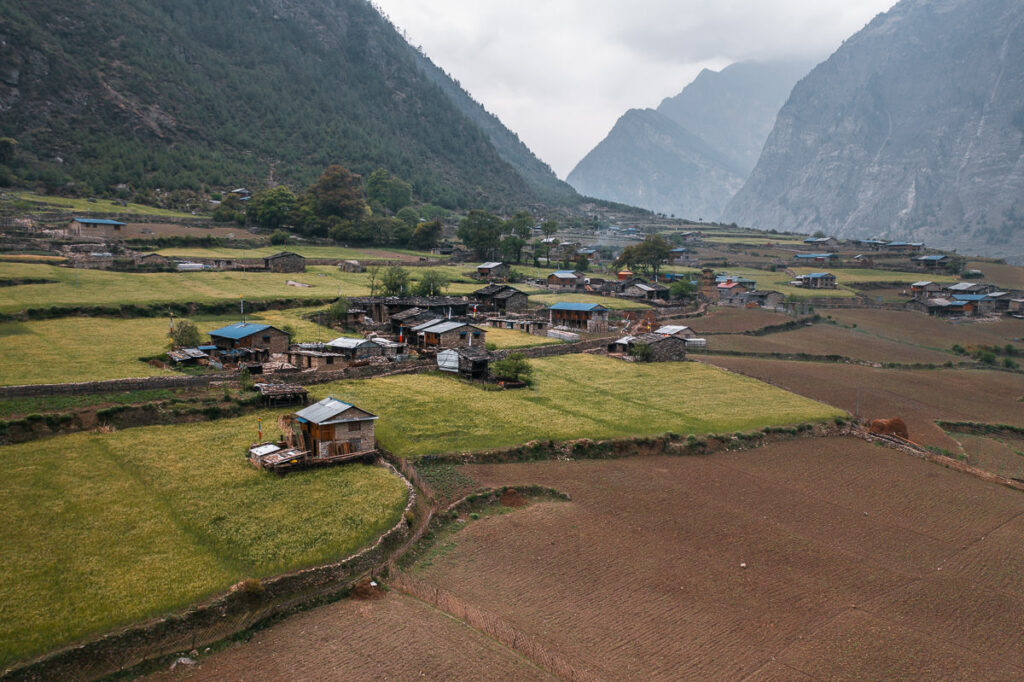
View this post on Instagram A post shared by Jackson Groves (@jackson.groves)
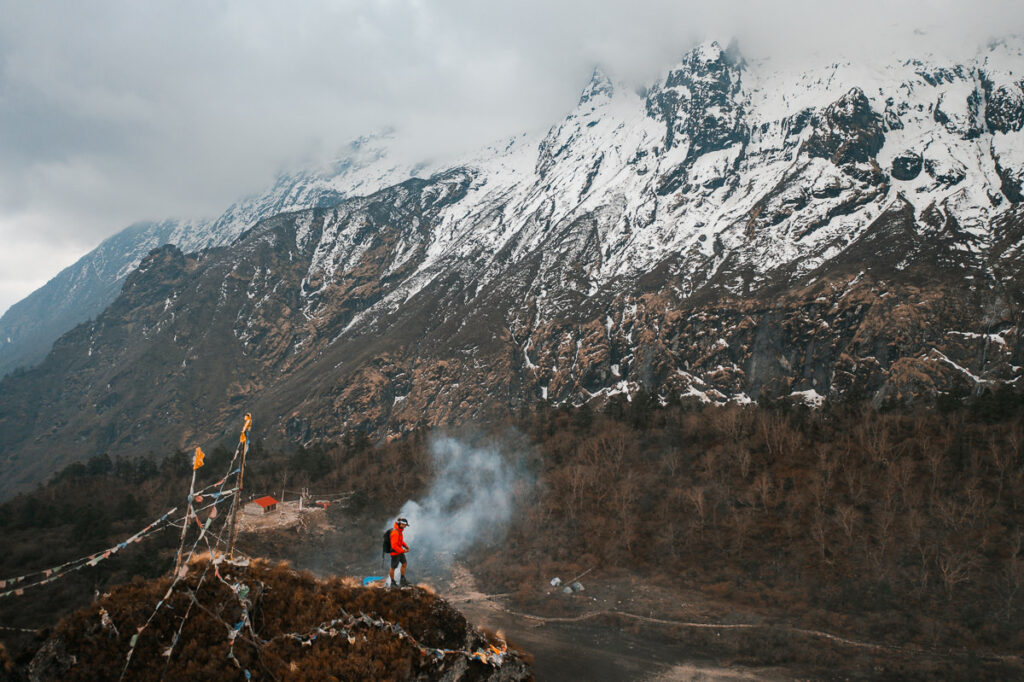
Finally, an easy day arrived and we all needed it badly. After 6000m of incline and 80km on the first four days of the trek in some pretty heavy sun, we were spent. Today seemed like a stroll in the park as we meandered our way to Namrung, taking just a few hours.
The path today is in the phase of switching out of the sub-tropical forest into the alpine forest so it had a mix of everything. At the entrance to each town, we can now find lots of ancient scripts displayed at the entry path.
Day 5 Highlights:
- A shorter day from Prok to Namrung was just what the doctor ordered so when we rolled into Namrung in the early afternoon, we all breathed a sigh of relief to have time to rest our bodies.
- A steaming hot shower for $2.50 on the fifth day of a trek is always money well spent. Clean, refreshed, and ready to push on.
- We bought a pack of cards for $1 at Namrung and had a few different games rolling throughout the night. It’s fun to enjoy the good vibes amongst this really chill group from Nepal.
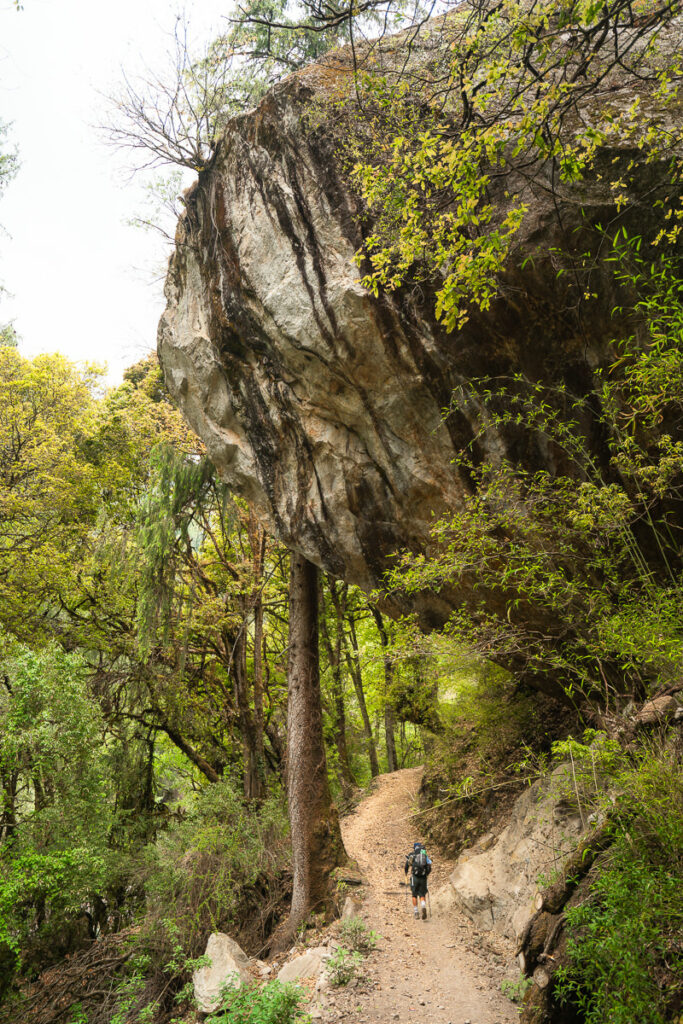
The trek to Lho leads us through wild sections of oak, fir, and rhododendron forests throughout the climb higher up into the valley. The air is beginning to thin for the first time so the pace is slightly slower today but with just 11km to cover, it was a touristic day with some nice cultural sites and stupas throughout the route.
Day 6 Highlights
- Larkye our Manaslu dog has officially joined us. Despite being asleep as we headed off from Namrung, he quickly caught up to us and has hardly left my side since.
- Lunchtime was at a small village with an epic view across the fields and up towards towering hills. Spicy noodles out in the sunshine had us feeling incredibly relaxed and on the recovery after the first four savage days of the trek.
- Sunset from Lho was very grey and cloudy but in the midst of blue hour, Manaslu appeared. It was the first time we’d all laid eyes on the 8000er and it was a pretty majestic moment.
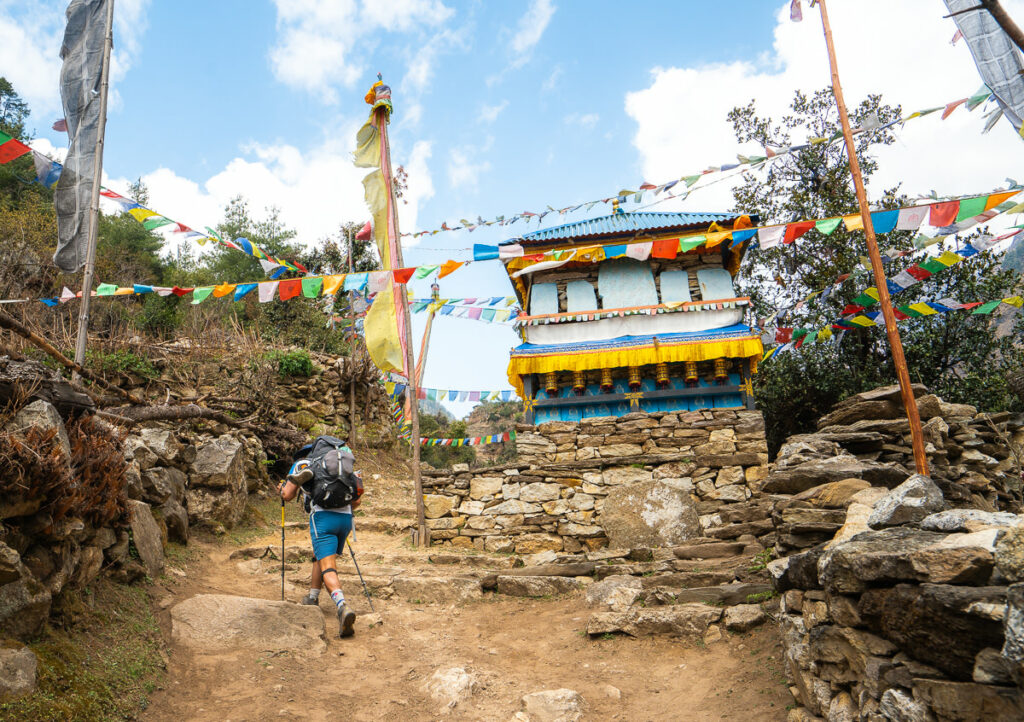
Today the climb continues up the valley and enters the high alpine pastures. Expect to see lots of Yaks grazing across the expansive hills and steep mountainside. One of the best suspension bridges of the trip with a huge mountain backdrop was the highlight of the day.
At our tea break, we had views of snow peaks in all directions and that’s where I shot most of the photos you can see below. From our lodge, we will have an incredible view directly up at Mount Manaslu that towers over the valley and we would stay here for two nights.
Day 7 Highlights
- A blue hour from the rooftop and an incredible sunrise with views of Manaslu was such a memorable start to the day. I felt like I was in Switzerland. We all had breakfast together on the rooftop and it might just be the most scenic fruit muesli I’ve ever had.
- A tea break on our way to Samaguan gave us the best views yet as the clouds were yet to engulf the surrounding peaks. I ripped out the 100-400mm and got some incredible shots of the snowy ridges as the clouds swept through.
- Our first WiFi of the trip at Samaguan was a great chance to catch up on the real world. We quickly realized nothing much had changed and were grateful to be out in the wilderness of the Himalayas.
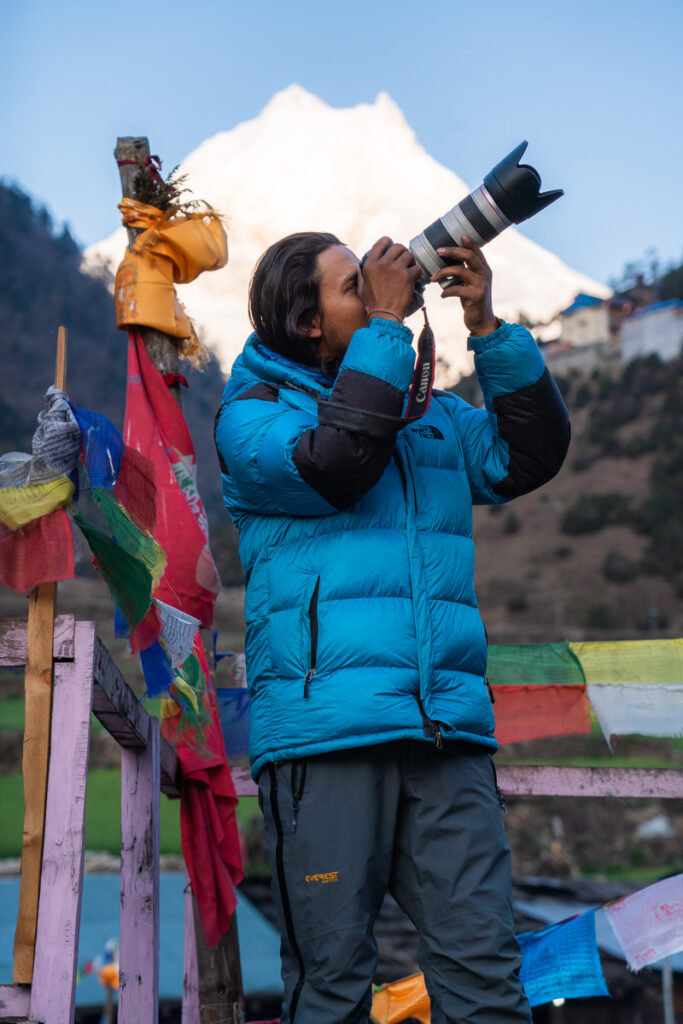
This was by far one of my favorite days of the trip aside from the Larke Pass day. Pungen Gumba is a monastery site at 4200 meters. It sits directly beneath Mount Manaslu at the top of a huge plateau in an ampitheater of mountains. I set off on my own at 4 am to make the 8-kilometer trek in the dark hoping to see some alpenglow or sunrise colors with a clear Mount Manaslu.
The weather gods shined on me and the effort up the rocky hill to the monastery provided me with the best views of the entire trip.
Day 8 Highlights
- After a rainy night before we committed to a sunrise mission. I left solo at 4 am to Puneng Gumba, a monastery built into the cliffs at 4,100. The others joined me a little later and our efforts were rewarded with clear views of Manaslu and one of the most stunning locations I’ve ever explored. One of the best mornings of my life, just me and the dog up at 4,100 meters taking it all in.
- Sitting in the sun at the monastery, the other three finally arrived and brought some tea. Sipping on my cup I was just incredibly grateful to be out here. The views were just jaw-dropping.
- Yaks, foxes, and marmots up in the snow at Pungen Gumba were quite a cool wildlife sighting and the latter two came unexpectedly.
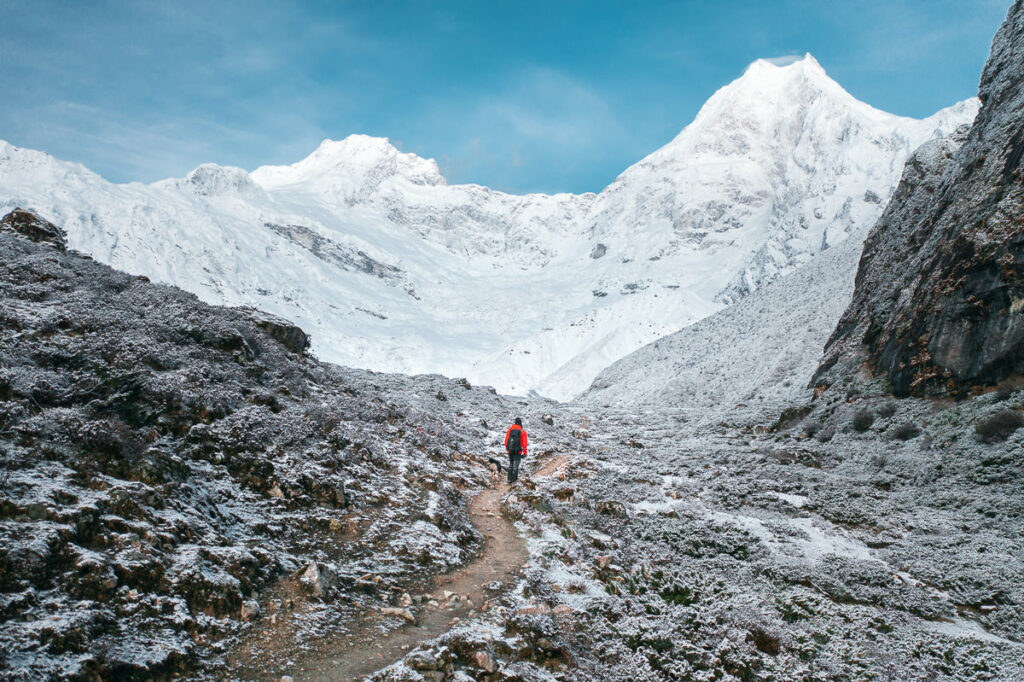
On day nine we began with a short visit to Birendra Lake before breakfast and then the trek heads up through the valley to the Tibetan village of Samdo. This is actually the highest Tibetan refugee camp in Nepal and is pretty remarkably perched on the cliffside.
Sunset at Samdo is truly a spectacle with peaks in all directions. Along the way, we will pass through Birch forests and we will see a few Marmots running to hide from us in their little holes. We will have the afternoon to relax and enjoy the views from our cute little village
Day 9 Highlights
- Our first rain was endured on the short trek to Samdo, a town at almost 4000m of elevation. Along the way, we passed hundreds of huge yaks who were more interested in grazing than us trekking through.
- Samdo was freezing but a warm fire at night in the tea house kept our spirits high. Cards, coffee, and incredible sunset sends us into day ten full of energy.
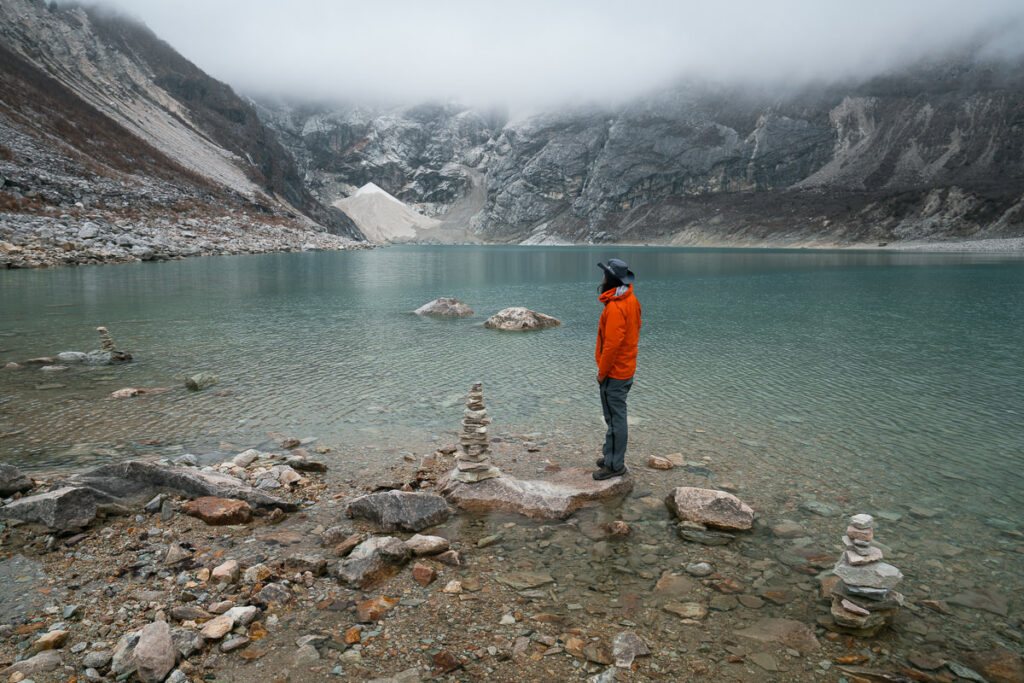
There’s just one day left until we cross Larke La tomorrow so today we ascend to the small base camp of Dharma Shala for the night. It’s bloody freezing here at almost 4500m and there’s no heater. It’s literally just a bunch of rooms perched up on the hill with one small kitchen. It’s a short walk to reach Dharama Shala taking just a few hours but you are at altitude, so you may begin to have a small headache if you are unlucky.
Day 10 Highlights
- I woke up and opened my door to the sight of fresh snow falling in Samdo. In the morning, the Tibetan refugee village was incredibly isolated and covered in a thick blanket of snow, which only exacerbated that feeling of being hidden in the mountains.
- At 4,460m, Dharma Shala is a freezing place to stay the night. With no fire or heater, we slept in all of our winter trekking gear. The hot bottle of water was the only thing adding any warmth to our bodies as we enjoyed our last sleep before attempting the Larke Pass.
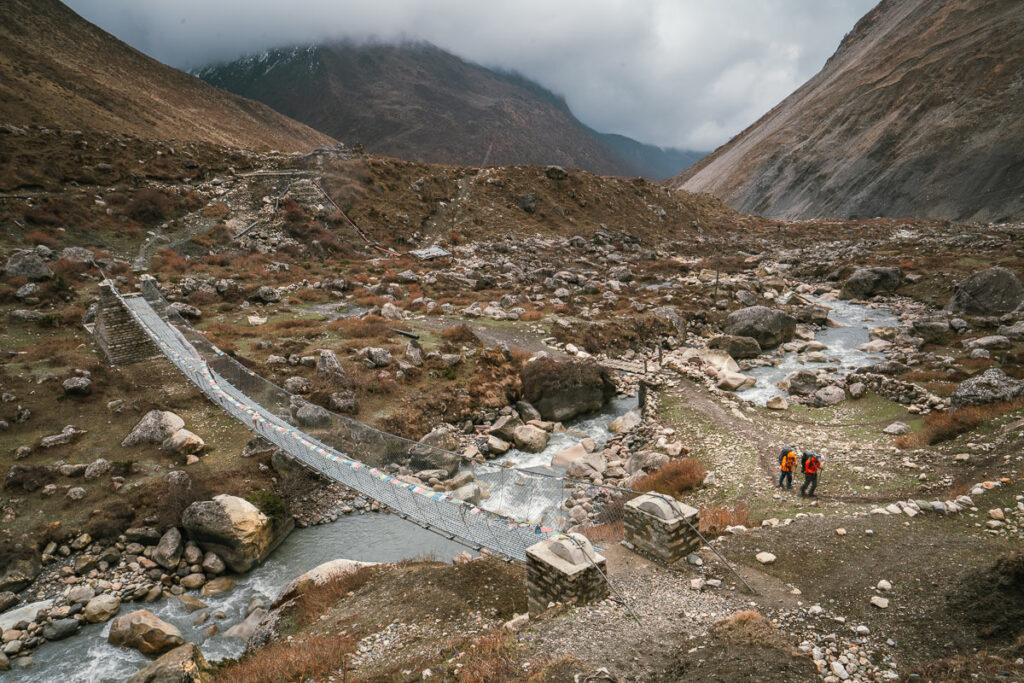
Day 11, Darmashala (4466m) to Bhimtang (3709m) via Larke Pass 5134m, Distance: 18km, Incline 800m
Today is the big day. We woke at 3:30 am and set off just after 4:30 am in time to catch the first moments of the blue hour and sunrise. It takes about three to four hours to reach Larke La at 5106 meters. Along the way, you have an amazing corridor with huge peaks on either side. This was one of my favorite sections of trail throughout the entire route.
At Larke Pass, it is time to have the prayer flags and take in the view and the achievement! The descent is quite steep and I even put on the micro-spikes for a portion of the downhill. The first village we reach is Bhimtang where we will stay for the night and enjoy a good rest.
Day 11 Highlights
- After a rainy and cloudy night, we were a little worried about our journey to Larke Pass would lack the incredible views it had promised. Upon waking up at 3:30 am, we could faintly make out the lines of the mountain ridges. We knew we had lucked out and were in for a day of clear weather.
- I walked the Larke Pass alone for the most part. I turned on some music as my head tilted from side to side trying to etch these incredible peaks and mountain views into my mind. I never wanted to leave nor forget this incredible corridor in the Himalayas of Nepal.
- Reaching Larke Pass at 5,106m was a milestone and something we had spent 11 days working towards. With just a slight headache, I was glad to reach the collection of prayer flags at the top and take it all in.
- The snowy descent down to Bhimthang was the type of adventure I crave. With microspikes on and a few slips, we enjoyed the high-tempo descent into town. We were thankful for a hot coffee and noodles as we huddled around the kitchen fire in Bhimthang. We had made it, safe and sound.

The final day of trekking is long and downhill. Your legs are tired from the day before but thankfully the incline is very rare and you basically just walk your way out of the alpine zone, into the forest, and then emerge to Dharapani beside the river. It was a long day with more than 25 kilometers to tick off but the walking was easy and going down in altitude is always a refreshing change. It was a good journey through the beautiful forests to reflect on the trek.
Day 12 Highlights
- Spicy noodle soup at mid-morning in a small hut with a lovely local serving us.
- A well-deserved beer (or two) at the Heaven Hotel in Dharapani to cap off an incredible journey.
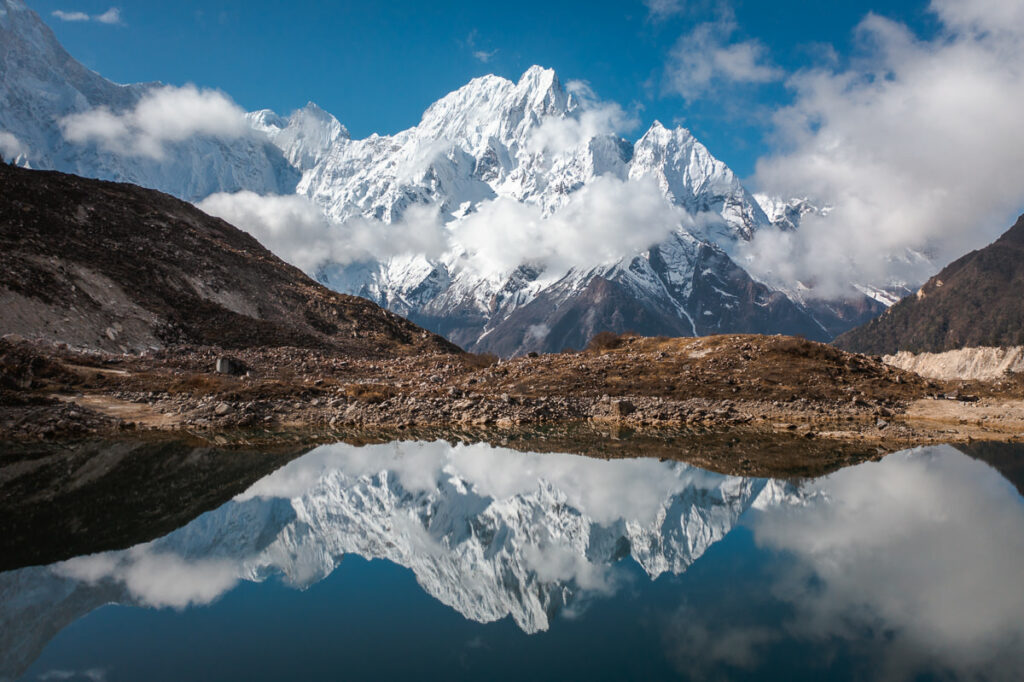
I hope you enjoyed this massive wrap-up of the Manaslu Circuit Trek. I loved photographing and filming the expedition and I truly loved the trail. I think it offers much more adventure than the other popular circuits in Nepal although let’s face it, any trek amidst the Himalayas is probably going to be epic. Do leave me a comment below if you have any questions or want to share any thoughts about your trek on the Manaslu Circuit. Happy hiking!
HAVE YOU READ MY OTHER NEPAL BLOGS?
I’ve been lucky enough to have many awesome adventures in Nepal, which you can check out below where I’ve listed some of my favorite blog poss from Nepal.
- The Most Iconic route: Everest Base Camp Trek
- The Most Scenic Route: Annapurna Circuit Trek
- My Favorite Trek in Nepal: Manaslu Circuit Trek
- An Easy Nepal Trek: Langtang Valley Trek
- A great beginner peak: Island Peak Climb (6,165m)
- My Favorite Climb in Nepal: Climbing Ama Dablam (6,812m)
- My first 8000er: Climbing Manaslu (8,163m)
- My toughest climb in Nepal: Climbing Makalu (8,463m)
- Where to stay: 16 Best Places to Stay in Kathmandu

Tuesday 11th of April 2023
Beautiful photographs! I am also wondering what time of year you went?
Sunday 29th of August 2021
Bonjour, merci pour ce généreux partage et vos très belles images. A quel période de l'année avez vous fait ce trek ? Je vous souhaite une belle poursuite à vos projets.
Saturday 15th of May 2021
Well done, Jackson! Those sunrises and sunsets in the mountains look incredible. Can't believe you got to visit Tibetan villages before me too! Next time eat the tsampa with your hands haha
Ken McKinney
What a great writeup! I have a couple of questions: 1) what time of year did you do this trek? 2) I've previously hiked Annapurna and EBC, but I am older now and less fit. Would it be possible to make the Manaslu Circuit less difficult by doing shorter daily stages, or does lack of teahouses make this impossible?
Wednesday 22nd of June 2022
@Ken McKinney, He did it in March 2020. See his remarks about lockdown. And yes, it is possible to make it more manageable, the number of lodges is about the same as the number of lodges on the Annapurna Circuit in the 1990's.

Manaslu Circuit Trek - ULTIMATE GUIDE 2024-2025
- Last Updated on Nov 16, 2023
One of Nepal's most challenging and well-known off-the-beaten-path treks is the Manaslu Circuit Trek. The walk is most notable for the breathtaking views of multiple snow-capped peaks, notably Mt. Manaslu, the eighth-highest summit in the world (8,163m/26,781ft). In addition, the walk offers untouched nature, biological richness, traditional culture, unexplored pathways, a sweeping panorama, and unmatched beauty in the naturally endowed area. While trekking in the wild Manaslu region, one can feel great excitement. The walk has a lot more to offer enthusiastic and daring hikers. You must attempt the Manaslu Trek at least once in your lifetime to enjoy the peaceful walking trails, unspoiled natural beauty, and ecological balance.
The Annapurna region, Nepal's other well-known trekking zone, shares land with the entire Manaslu region. This makes the Manaslu region diversified and allows for the simultaneously creating of the Manaslu and Annapurna Circuit Trail. The Throng La Pass (5416M/17769Ft) is reached on this Annapurna trail before it descends to Muktinath or continues to the Upper Mustang Trail. Trekkers can discover the diverse native cultures and customs, the diverse flora, animals, monasteries, and the high Himalayas blanketed in snow. Spending a few more days will let you visit two well-known hiking locations on a budget.
Since hiking has just been allowed in the Manaslu region, this journey is ideal for physically fit people who enjoy being alone on the trails. Individual trekkers are still prohibited from entering several restricted areas without authorized guides registered with the government. There are still many untrodden and unknown hiking paths in this area. Trekking through the hidden valley is a genuinely daring and proud experience.
Table of Contents

Manaslu Tsum Valley Trek with Ganesh Himal Base Camp

Manaslu Circuit Trek

Manaslu Base Camp Trek with Larkya pass
Why trek to manaslu circuit .
The route leads you from the humid lowlands with their terraced fields of rice and millet through the massive gorges of the Budi Gandaki, which are home to stunning waterfalls and turquoise-colored waters. The Manaslu climb has suspension bridges unmatched in length and height, and the yearly monsoon frequently washes away smaller bridges, forcing hikers to use partially submerged boulders.
This walk still has the air of a pioneering expedition even though it was only made available to 400 trekkers at a time in 1992. The Manaslu circuit trek is a visual feast from beginning to end if you want to experience trekking in the 1980s, but you better be in shape. You make your way slowly northward to the snow-covered Larkya La Pass, close to the Tibetan border. The breathtaking views of Manaslu almost make up for the difficulties with the altitude here. Larkya La pass, at 5167 meters, is typically covered with snow and slippery. On the descent, micro crampons are frequently utilized. To reach the pass's highest peak before the winds arrive, which often come around mid-morning, a 3 am start is necessary.
While it is possible to see clearly from the pass in the direction you have come from, the most breathtaking view is seen after leaving the key and proceeding along a corridor to the west. A massive glacial cirque suddenly appears. While Annapurna II rises in front, a magnificent wall formed by Cheo Himal, Himlung Himal, Nemjung, Gyaji Kang, and Kang Guru pours down a stream of glaciers. The journey is worthwhile just for this vista. Your 15-day, all-inclusive trek can be organized with Magical Nepal. Unless you wish to deviate from the path, when camping is the sole option, the walk can be completed using teahouses.
Highlights of Manaslu Circuit Trek
- Compared to the Annapurna Circuit and Everest Base Camp, this circuit is significantly less congested. Although it is becoming more well-known, now is a perfect time to travel this circuit before it becomes more widely accepted.
- Even though the walk is wild and inaccessible, there are teahouses at every stop, so hikers don't need to pack food and tents, making it more accessible and less expensive than other treks of a similar length.
- Since there is no need for domestic aircraft, the trailhead can be reached on foot. ∙ You will pass through a subtropical jungle at lower levels before reaching the Himalayan foothills, and the panorama is constantly changing. Finally, at over 5,100 meters (17,000 feet), you will arrive at Larkya La.
- The first few days of the circuit include many suspension bridge crossings along the riverside walk in the Budi Gandaki, a deep gorge. The last few days of the walk are spent in the snow, but you may still hike in standard hiking boots while admiring the enormous snow-capped mountains on each side of the trail.
Manaslu Circuit Trekking Route
The mild hike of the Manaslu trip leads to a challenging climb. Due to its isolation and stringent trekking requirements, the Manaslu region is regarded as off the beaten path. Special permission is required for trekkers, which can only be obtained through a licensed trekking agency with a minimum of two trekkers and a local registered guide. Most of the Manaslu journey begins with a bus or jeep ride from Kathmandu to SotiKhola, where you can spend the night before starting your hike.
The Manaslu region lacks any further transportation options or airports. Starting your trek on a lowland trail will allow you to experience the variety. It will be a challenging journey to hike through the settlement and the forest. You can reach Samagaun by seeing many monasteries and chortens. On the Manaslu trail, Samagaun is a well-liked stopover that is also utilized for acclimatization before ascending the mountain. Fewer hikers dare to travel to the area despite the Manaslu trail's fame. The Manaslu trail requires special permission, which can only be obtained from a local, authorized trekking service in Nepal, and is subject to tight guidelines for trekkers.
The Manaslu region attracts few trekkers, yet because the trail is uncrowded and nature is healthy and balanced, it is in high demand. The villagers and the soldiers maintain the tracks, which are flawless and spotless. You can reach the highest point on your trek, 5100 meters above sea level, for the Larkey La Pass and descend to Jagat. You can take a car from Jagat and return to Kathmandu through Beshisahar, the administrative center for the Lamjung district. Alternatively, if time allows, you could hike the Annapurna Circuit. This will take an additional 5–6 days. Due to the proximity of the Manaslu and Annapurna regions, trekkers can complete both treks quickly.

Best Time to visit Manaslu Circuit Trek
The best times of year to visit Manaslu Circuit and Tsum Valley are considered to be autumn and spring. While spring comes before the monsoon, autumn comes after it. Although challenging, it doesn't imply that other seasons aren't appropriate.
Spring: Because of the great weather, spring is one of the best times to go hiking (late February to early June). Rhododendron flowers in bloom also adorn the forests. However, the road may still have some snow from the winter season on it.
Monsoon: Early June through late August is the monsoon season, which is wet. So, expect to encounter light to heavy rain throughout the way. Along with making the trail muddy, it might get your belongings damp. Additionally, the sky becomes hazy, obstructing all sights.
Autumn: The ideal time to trek in Manaslu is during the autumn (late August to late November). The sky is unclouded and peaceful. Like always, the vista is breathtaking.
Winter (late November to late February): Generally, higher elevations have colder temperatures all year round. However, it gets even more complex throughout the winter. The view, however, improves, and the sky is clear. However, the trail will be blocked until spring if it begins to snow.
Manaslu Circuit Trek Difficulty
The Manaslu trek is moderate to difficult in terms of difficulty. It isn't regarded as being the hardest. However, the trail's constant ascent and descent might push your limits and stamina. Trekking in the Manaslu region is both physically and mentally taxing. For those who enjoy adventure, it is ideal. A regular hiker could complete it without any problems.
However, it might be a challenging walk for newcomers. For the excursion, you might need to get ready. Before you embark on the walk, start working out and jogging. Additionally, the difficulty might vary depending on your physical condition, the weight you carry, the trail's condition (such as snow), your gear and equipment for hiking , your acclimatization process, the food you choose, and other considerations.
Due to its isolation, diversified nature, Himalayan culture and customs , magnificent rivers, breathtaking snow-covered Himalayas, and rugged Larkey La Pass , the Manaslu Circuit Trek is an adventure tour in the Himalayas. In addition, the distance of the walk, the weather during the trekking season, and altitude all have a significant role in determining the difficulty of the Manaslu Circuit Trek.

The Manaslu Circuit Trek involves around 177 kilometers of walking. This distance needs to be covered in 12 days; however, depending on your pace, you may need to go faster or slower. Your adventure begins at Larkey La Pass, where the elevation ranges from 930 to 5100 meters. As a result, you must travel 13 to 15 kilometers each day. The Manaslu Circuit Trek ranges from simple to moderately complex at higher altitudes. Therefore, before you begin your walk, ensure you are in shape enough to hike uphill daily.
Food and Accommodation in Manaslu Circuit Trek
Due to the limited food selection available when trekking the Manaslu Circuit, typical Nepali cuisine Dal Bhat Tarkari will be served. There aren't as many teahouses and dining options to pick from in Everest Region. Because fewer people visit the area as tourists than in the Everest Region .
You will be greeted upon arrival in Kathmandu , picked up, and then taken to a hotel. In Kathmandu, you stay in a hotel. In Kathmandu, there are many different kinds of hotels. There are 5-star homestay levels accessible for overnight stays. However, we typically offer 3-star accommodation with complimentary breakfast.
For foreign trekkers, Manaslu is off-limits. Due to its boundary with the Autonomous area of Tibet, there are strict regulations regarding entry into the Manaslu region. For the Manaslu circuit trip, a special permit is required. Manaslu Circuit Trail is an off-the-beaten trail because of its isolation, difficulty, and tight requirements. This trail is rarely used by hikers, making it more alone and less congested.
Furthermore, most people in this area are of Tibetan descent and practice Tibetan culture, customs, and religion. There are stunning monasteries, chortens, mani walls, etc., as well as less crowded communities. Manaslu Circuit Trek has a small number of lodges and tea shops. There will undoubtedly be fewer lodgings and amenities as you ascend the mountain. However, every resort at a higher altitude adheres to tourism requirements and is primarily run by local families.
Manaslu Circuit Trek outline Itinerary 2024-2025
Day 1:Arrive in Kathmandu
Day 2:Manaslu Restricted area preparation and briefing of Trek
Day 3:Drive to Soti Khola
Day 4:Trek Soti Khola to Machha Khola (869m)
Day 5:Machha Khola to Jagat (1410m)
Day 6:Jagat to Deng (1860m)
Day 7:Deng to Namrung (2630m)
Day 8:Namrung to Lho Gham (3180m)
Day 9:Lho Gham to Samagaon (3520m)
Day 10:Samagaon (rest day) Trek to Manaslu Base Camp or Pungyen Gompa and Birendra Tal.
Day 11:Samagaon to Samdo (3875m)
Day 12:Samdo to Larkya Phedi (4460m)
Day 13:Larkya Phedi to Bimthang (3590m) – climb the Larkya La (5160m)
Day 14:Bimthang to Tilje (2300m)
Day 15:Tilje – Chamche (1430m)
Day 16:Sharing Jeep drive to Beshisahar and Public Bus back to the capital
Day 17:Depart Kathmandu
Manaslu Circuit Trek Cost 2024-2025
The price of a Manaslu circuit trek varies depending on when and how you hike. Trekking in peak season will cost you a lot, and you'll need to pack your kit according to the conditions. The way you trek, the agency you select, the gear you bring, the length of the walk, etc., impact how much the circuit trek will cost. In addition, the final cost amount is affected by your attitude toward spending while on the walk. Making specific inquiries with the agency is the best approach to learning the pricing because the amount an agency charges you for the voyage varies for various reasons.
The peak months are March through May and September through November, with October hectic . As a result, the price you might pay at this Time is undoubtedly more significant than it would be for trekking during the off-season. You might want to think about the difficulty of trekking in other months, though. In the highlands, a few teahouses are closed from December to February. Although it's not tricky, trekking in the cold will need you to endure many hardships. In some places, you must navigate across icy sections, and the weather significantly impacts mobility. Also, remember that going on a winter trip necessitates purchasing winter-specific equipment, which could raise your overall gear cost, which, if not managed effectively, could be higher than going on a trek in another season.
Utilizing an international trekking service will increase your cost because more intermediaries will be involved in the payment process. Using a local trekking firm is essential if you want to manage your Manaslu circuit trek. You cannot complete this walk alone because the government has designated several areas in the Manaslu region as restricted. You must be trekking with a party of at least two people, and a porter guide or qualified guide must be with you at all times. Similarly to this, the fee increases with the length of the walk. But be careful not to let your desire to control costs ruin your trek carefully.
You may also need to spend some amount on other things, like on the trek.
Other Manaslu Trek Costs are:
- Manaslu trek packing list
- Electronic Charging Cost
- Hot Shower
- Tips and Donations
- Renting and Buying clothing and gear
- Gifts and Souvenirs
Manaslu Circuit Group Join Trek 2024-2025
One of Nepal's top tea house trekking routes is the Manaslu Circuit Group Join Trek. This journey is a well-known detour from the traditional Annapurna Circuit Trek . Manaslu Circuit Group Join Trek circuits in the Manaslu Mountain Range, which includes Mt. Manaslu (8156m), the eighth-highest mountain on Earth.
Because individual and solitary trekkers are not permitted in the Manaslu Circuit and Manaslu region, group join treks are crucial. However, many trekkers choose to complete this trek after arriving in Nepal. If you prefer to take on this journey alone, you can split the cost of the guides, porters, lodging, and trekking permits. Therefore, the Manaslu Circuit Group Join trek will be more affordable and enjoyable.
Manaslu Circuit Group Join Trek offers the chance to examine the distinctive nature, gorgeous mountain vistas, local peoples' culture, and way of life. The Manaslu circle walking track has beautiful plants and animals.
Requires Permit for Manaslu Circuit Trek
The Manaslu Circuit Trek is located in the region's restricted area . To enter the Manaslu region, trekkers require special permits. The price of your Manaslu Trek permit will vary according to how many days and months you visit this area. You will pass through the Manaslu region and the Annapurna region, two districts. Manaslu Circuit Trek requires three mandatory permits. The following are needed tickets for Manaslu Circuit Trek:
- Special Restricted Area Permit for Manaslu
- Manaslu Conservation Area Permit
- Annapurna Conservation Area Permit
- Trekkers' Information Management System Permit
- In addition, separate permission is required if you intend to undertake a side hike to Tsum Valley.
Guide & Porter on Manaslu Tsum valley Trek
Trekking in the Manaslu region is challenging. However, you can travel the most well-known trekking route in the world with the help of skilled team members, wholesome food and drink, relaxation, and acclimatization. As usual, the porter helps you transport your belongings. Most tour guides are knowledgeable, seasoned professionals who can quickly speak English. Remember that the director and porter are counting on receiving generous gratuities from you at the end of the trip. These people put in a ton of effort and try their best to get you and your crew to your destinations in the challenging hilly terrain.
For the Manaslu Circuit Trek, a guide is a necessity. It will help if you abode by the law since it is one that the government has imposed. Lone hikers cannot complete the walk unless they are part of a group with at least two other hikers and an experienced guide. That implies that you must also pay the Manaslu trek guide fee.
Altitude Sickness in Manaslu Circuit Trek
Of course! As you will be more than 5,000 meters above sea level, you should be concerned about altitude sickness . Altitude sickness is a common occurrence on the Manaslu trek. But there are several ways to stop it. You must first be aware of the signs of altitude sickness. Keep in mind that it might range from being normal to being critical. Among them are headaches, loss of appetite, shortness of breath, exhaustion, dizziness, and other symptoms. If your situation is urgent, you must be saved.
Altitude sickness can be avoided using a variety of treatments. First, always have a healthy diet and eat appropriately. Keep yourself hydrated at all times. Don't drink alcohol when you're higher up. Instead, slowly increase your speed as you ascend. Relax, and mentally get ready for the difficulties.
Physical Fitness For Manaslu Circuit Trek
It is unavoidably exhausting to complete a thirteen-day journey in a row, and it is unquestionably advantageous to be in shape. Remember that you exercise daily while on the trek, so you will emerge fantastically mountain-fit and weathered! Come back many kilos lighter, toned, healthy, and detoxified!
Please do plenty of walking with a day pack to prepare in advance, but don't overdo it. Although it isn't a marathon, there are plenty of hills to climb and descend! The high pass is also somewhat tricky. Carrying the bag, which weighs only about 5 kg but seems like 10 when walking uphill in the heat, works your thighs, calves, and shoulders. The days aren't too long, the route is good, and the porters are pretty helpful, but you'll appreciate this trip a lot more if you've worked on your fitness before the trip.
The pace of the walk is always leisurely, and days are typically shorter than day hikes back home. This weight is appropriate to work with because you probably carry 5 kilos in your day bag. If you're going to the gym, focus on the step machines, which strengthen the thighs and calves, and try to raise your heart rate to 50% over resting level.
Any cardiovascular exercise is beneficial, but swimming won't develop the right muscle groups. Thus it needs to be combined with other activities for maximum benefit. Body pump, Pilates, and aerobic exercise classes are all great options for preparing for a hike like this, especially ones focusing on core strength, stability, and balance.
Lightweight hiking boots with a high ankle are advised to prevent you from falling down on your ankle during the walk. Heavy footwear would be uncomfortable and heavy. Popular yet chilly in the morning are cross trainers.
Packing List for Manaslu Circuit Trek 2024-2025
The provided list comprises a comprehensive packing list for a Manaslu Circuit Trek to prevent unnecessary complications. It is a list that is advised. You are welcome to alter it to suit your preferences and needs.

- Sunhat
- Underwear
- Sports Bra
- Baselayer
- Trekking shirt
- Fleece Jacket
- Outer Jacket
- Rain jacket
- Trekking trousers and shorts
- Hand and Feet Wear
- Inner Gloves
- Outer Gloves
- Hiking socks
- Thermal socks
- Hiking boots
- Trainers or trekking sandals
- Gaiters
- Duffle bag
- Backpack
- Backpack cover
- A sturdy dry bag
- Sleeping bag
- Sleeping bag liner
- Trekking Poles
- Headlamp
- Crampons
- Microspikes
- Water bottle or Hydration Bladder Technology and others
- Camera
- Portable Charger
- Books
- Money
- Documents
- Passport
- Insurance
- Medication
- First aid kit
- Water purification tablets
- Isotonic Powder
- Toiletries
- Quick-drying towels
- Pee funnel
- Wet wipes, tissues, and hand sanitizer ∙ Lip Balm
- Tissue /toilet roll
- Deodorants
- Nail clippers
- Face and body moisturizer
- Foot powder
- Female hygiene products
- Small mirror
For more Update Follow Us on:
- Latest Update

Dipak Pande
Dipak starts to step up from potter, guide, and trekking leader to the company owner. Sometimes he share his experience with others as well as wrote in local travel news. Most of time he spend his time on mountain and his company.
Drop a message
Recent posts.
- Who conquered Annapurna base camp trail?
- How to Obtain a Naya Kanga Peak Climbing Permit?
- Responsible Trekkers- Porter Support in Nepal
- Island peak climbing cost - Guide | Permit
- How to prepare for successful peak climbing in Nepal ?
- Manaslu Circuit Trek in Autumn 2024 -Sep, Oct and Nov
Related Posts
- History, culture and religion of Milarepa Cave in Lapchi Village
- Best Place to See Bengal Tiger In Nepal
- Everest Trek Guide
- Latest News and Update
- Map and Itinerary
- Nepal Trekking Cost
- Peak Climbing
- Tour in Nepal
- Trekking in Nepal
We use cookies to ensure that we give you the best experience on our website.
Trekking and Travel Blog Nepal, Tibet and Bhutan
We organize different tours and trekking in Nepal, Tibet, and Bhutan.
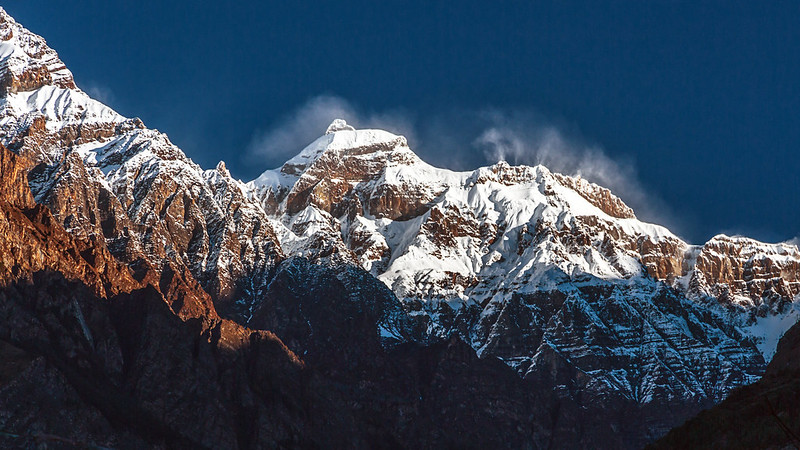
administrator
A Complete Travel Guide To The Manaslu Circuit Trek
The Manaslu Circuit Trek is one of Nepal’s most popular treks. It winds its way around the Manaslu Conservation Area, culminating in a stunning vista of the world’s eighth-tallest peak.
This Manaslu Circuit trek might be a wonderful alternative to the Annapurna Circuit if you’ve already done the Annapurna Circuit. It’s a 14-day trek that starts at Soti Khola and finishes at Beshi Sahar, but it may be made into a 22-day trek by adding a side trip to Tsum Valley.

Manaslu Circuit Trek is one of the most elegant of the 8000-meter giants, flanked on the west by the Annapurnas and on the east by the Ganesh Himal.
Unlike the Everest Base Camp Trek, which attracts trekkers from all over the world, the Manaslu circuit trek is generally less crowded. Manaslu Circuit Trek is both culturally enlightening and scenically inspiring, despite its remoteness and physical demands.
The circuit takes you from the sweltering lowlands with their rice and millet terraces to the majestic Budi Gandaki gorges with their turquoise streams and stunning waterfalls. The Manaslu trek’s suspension bridges are unparalleled in length and height, and the seasonal monsoon frequently washes out lesser bridges, forcing trekkers to rely on semi-submerged rocks.
Manaslu Circuit Trek, which was only available to a maximum of 400 trekkers in 1992, has the sense of a pioneering expedition. The Manaslu circuit trip is a visual feast from start to end if you want to see what trekking was like in the 1980s, but you’ll need to be in good shape.
Slowly, you make your way north to the Larkya La Pass, which is snowbound and close to the Tibetan border. The height is a concern here, but the breathtaking vistas of Manaslu make it virtually unnoticeable. Larkya La pass, at 5167 meters, is generally snow-covered and slippery. On the descent, micro crampons are frequently utilized. The trek to the pass must begin at 3 a.m. to reach the highest point before the winds arrive, which normally arrive around mid-morning.
Looking back on the way you came from the past provides a clear perspective, but the most incredible vista occurs after you leave the Pass and continue along a corridor to the west.
A massive glacial cirque appears out of nowhere. Cheo Himal, Himlung Himal, Nemjung, Gyaji Kang, and Kang Guru form a magnificent wall that sends a torrent of glaciers down, while Annapurna II peaks ahead. The vista alone is worth the journey. Your all-inclusive 15-day trek may be arranged with Magical Nepal. Unless you wish to travel off route, when camping is the only option, the journey may be done in a teahouse.
The Manaslu Circuit Trek highlights:
- It is significantly less busy than Everest Base Camp and the Annapurna Circuit. Manaslu Circuit trek is becoming more well-known, yet there are still around ten times fewer trekkers on the Manaslu Trail.
- The journey is wild and inaccessible, but there are teahouses at every step, eliminating the need for hikers to pack tents and food, making it more accessible and inexpensive than similar treks.
- The trailhead is accessible by land, therefore no domestic flights are required.
- The Buri Gandaki, a deep, lengthy river valley with several suspension bridge crossings, is followed during the first section of the path.
- The environment is spectacular in the Manaslu Circuit trek: you’ll travel from the subtropical jungle at lower levels, across the Himalayan foothills, and up to the high, cold, and hard Larkya La crossing at 5,100 meters / 17,000 feet.
Accommodation during the Manaslu Circuit Trek
Unless guests express a preference for tents, the journey of Manaslu Circuit Trek will be based on lodges and tea houses owned by local families. Each lodge features a central common space with a stove, as well as unheated bedrooms with two beds, mattresses, and pillows. You’ll need to bring a sleeping bag (3 seasons is usually plenty), and the lodge will provide you with a blanket if necessary during the Manaslu Circuit Trek.
The showers are usually gas-powered, and the toilets are the famed ‘drop’ toilets, however, some lodges now employ a flush system. The Manaslu Circuit Trek is not as populous or linked as the popular Khumbu or Annapurna regions, which is part of its appeal.
However, the location’s remoteness means that connectivity to phones and the outside world is less frequent or can take days. You won’t find the same pizza or burger alternatives as in other parts of the country, but the authentic and delicious food, warm greetings, and breathtaking landscape are the main draws during your Manaslu Circuit trek.
How difficult is the Manaslu Circuit Trek?
Manaslu Circuit Trek is the finest option for adventure-seeking hikers. This is a somewhat tough trek. The difficulty of the Manaslu Circuit Trek is mostly determined by the trekker’s physical condition.
The Manaslu Trek is one of Nepal’s most arduous hikes, taking you through isolated Himalayan communities. It is one of Nepal’s off-the-beaten-path hikes. Manaslu Circuit Trek circles Mt. Manaslu, the world’s eighth-highest peak at 8,163 meters (26,781 ft). And it’s quickly becoming known as the newest jewel in the Himalayan hiking crown. The Manaslu Circuit trek also makes for an excellent tea house hike. Some even call it Nepal’s greatest all-around hike. It is unquestionably a superior option to the Annapurna Circuit Trek.
How fit should I be for Manaslu Circuit Trek?
Manaslu Circuit trek is indeed exhausting, and being fit is undoubtedly advantageous, but keep in mind that you’ll be exercising every day on the walk, and you’ll finish up mountain fit and weather-battered! Return toned, healthy, detoxed, and a few pounds lighter!
Do plenty of walking with a daysack to prepare, but don’t overdo it. Although it is not a marathon, there are several hills to climb and descend! The high pass is also fairly difficult. For carrying the bag (it’s just around 5kg, but it seems like 10 while you’re going uphill in the sun), work on your thigh muscles, calf muscles, and shoulders.
The days aren’t too long, the path is good, and the porters are helpful, but you’ll get a lot more out of this trip if you’ve worked on your fitness before the vacation.
Manaslu Circuit trek is not a forced march, and the pace is usually leisurely, with days that are shorter than a typical day hike at home. In your day bag, you’ll probably carry around 5 kg, thus this is a nice weight to start with. If you’re going to the gym, focus on step machines, which engage the thigh and calf muscles, and attempt to raise your heart rate to 50 percent over resting level.
Swimming, like any other cardiovascular activity, will not train the right muscle areas, hence it must be combined with other exercises to be successful. Body pumps, Pilates, and aerobics are all great ways to prepare for a hike like this, especially ones that focus on core strength, balance, and stability.
Heavy footwear will be hot, heavy, and inconvenient, thus light hiking boots with a high ankle are advised for the walk to protect you from falling over on an ankle. Cross trainers are trendy, although it’s freezing up high in the morning.
What is the best season for The Manaslu Circuit Trek?
March to June and September to November, are the best time for Manaslu Circuit Trek. The start dates on our website’s ‘Dates & Bookings’ page correspond to your arrival date in Kathmandu, while the end dates refer to the earliest flight home you may book. However, you are welcome to arrive earlier or remain later to spend more time touring Kathmandu and stay at our guesthouse.
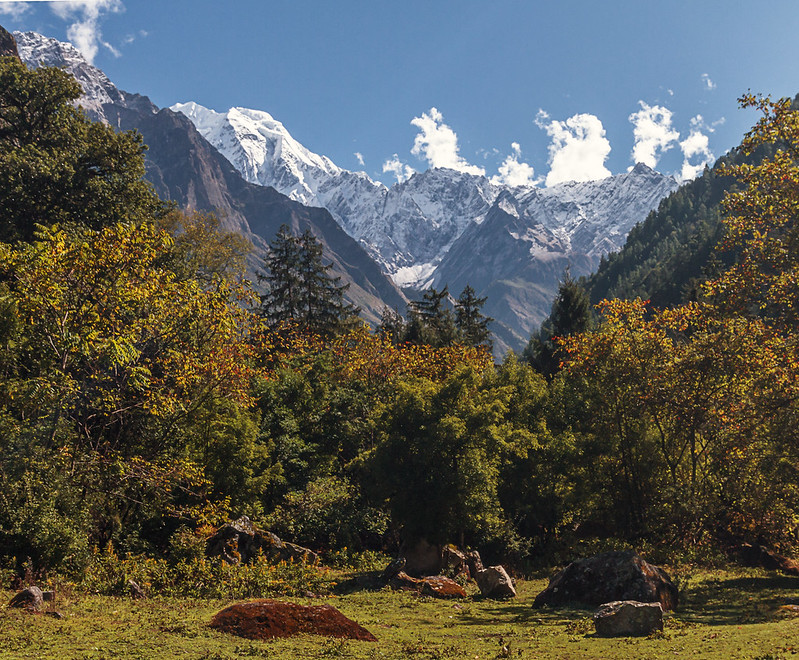
What makes The Manaslu Circuit Trek Special?
The Manaslu Circuit Trek is unique. Along the steep-sided Budhi Gandaki River, the hike follows an old salt-trading route. While climbing through the Manaslu area, ten peaks taller than 6,500 meters (21,300 feet) are visible, including summits taller than 7,000 meters (23,000 feet). The Manaslu Circuit trek is far less crowded than its busier sibling, the Annapurna Circuit, and this distinguishes the climb.
The Nubri and Tsum ethnic groups make up the majority of the population in this area. These two racial areas are separated by the river’s splitting off of Chhikur. While Nubri became popular when Nepal’s tourism opened in 1950, Tsum has retained much of its traditional culture, art, and customs.
The Gurungs are the main ethnic group in the region’s central highlands. If you are going alone and wish to complete the Manaslu Circuit Trek, you should locate a companion. Because the Manaslu Circuit Trek is a restricted region, permission and a start date must be obtained by at least two persons. Continue reading to learn which permission you require.
Recommended Itinerary for Manaslu Circuit Trek
Day 1: arrival in kathmandu.
It is a panoramic thrill flying into Kathmandu on a clear day. The views of snow-capped mountain peaks sprawling down below you are almost ecstatic, beginning a whole chain of memorable experiences that stay with you for a long, long time. A representative and driver from our office will meet you at the airport and escort you to your hotel. The representative will help you check into your designated hotel. At the hotel, you will be briefed about your daily activities.
Day 2: Sightseeing Tour of Boudhanath, Pashupatinath, and Patan
Kathmandu is the historical and cultural heart of Nepal and has been a popular destination for tourists ever since Nepal opened its doors to visitors. The city presents a wonderful mix of Hinduism, Tibetan Buddhism, and Western influence. There will be a guided tour to the largest Buddhist stupa in Nepal Boudhanath and after that to the most popular Hindu shrine dedicated to Lord Shiva- Pashupatinath.
We take a tour to Patan or Lalitpur (the City of Artisans), which is 5km away from Kathmandu. We walk through Patan Durbar Square and delight in the architectural wonders of the Malla era. Mahaboudha Temple, Kumbeshwor Temple, Krishna Temple, and Golden Temple are the major attractions at the square.
Day 3: Drive to Arughat Bazar
We drive along the Kathmandu-Pokhara Highway for the first part of the day; we then head towards the hill bazaar of Gorkha. The road gets a bit rough after Gorkha. We will reach our destination, Arughat Bazar, after seven hours from Kathmandu.
Day 4: Trek to Sundi Khola
On our first day of your Manaslu Circuit trek, we head north, following the Buri Gandaki. In the low country, rice paddies and picturesque hamlets surround us. After climbing briefly to Kyoropani, we descend once again to the river and at the confluence with the tributary of Sundi Khola. It is a nice first day not too long, and perhaps we have time for a refreshing swim sometime during the day for it is hot in the low country.
Day 5: Trek to Machha Khola
The country changes, the broad valley narrows, and at times the trail is cut into the steep valley side, which is densely forested. We pass several small villages, tucked into the hillside, until we reach a widening of the valley, opposite the point where a large tributary stream enters the Buri Gandak
The terraced farmland here belongs to the village of Lapbesi. We descend once again to the wide, sandy riverbed and follow a path, which runs below the steep, craggy valley side. At length, we have to climb up once again on a trail to Machha Khola, which has several teashops.
Day 6: Trek to Jagat
We cross the Machha Khola – Fish Stream – and head upstream to the tiny village of Khola Bensi and the hot springs at Tatopani. The valley sides remain steep until they are impassable and the route then switches to the left bank by way of a suspension bridge. The trail is quite exposed and challenging in places. After a short section of forest path, we reach the single teahouse at Doban.
Above Doban, the Buri Gandaki descends an impressive series of rapids. Beyond this steep section, the river is much more placid, meandering across a broad gravel bed. At Lauri, we will cross the river on a suspension bridge and then climb on a high path to the fields of Jagat.
Day 7: Trek to Deng
After descending a long series of stone steps to the river, we climb a terraced hill to Saguleri, from where we can see the impressive Sringi Himal (7187m). The path splits, with the right-hand branch heading off towards the Ganesh Himal while crossing the river at Gata Khola. Our route continues upstream, through a gorge with towering walls. We cross the river thrice in the next two hours to avoid difficult valley sides and then climb up over a further steep spur to reach the village of Deng.
Day 8: Trek to Ghap (2100m)
The valley is still steep-sided and most impressive. We cross the village of Lama and start to see mani stones (prayers etched onto wayside rocks), a sure sign that we are entering a high country Buddhist region. After only about four hours we reach the village of Ghap, which straddles the river. We have entered the Tibetan area. There’s a perceptible change in the climate and culture. It gets pleasantly cool, as we start to gain altitude.
Day 9: Trek to Lho Village
The higher altitude takes us into alpine territory and increases mountain views. There are more Mani walls and 3 more crossings of the Buri Gandaki on our route to Namrung, where our special permit is checked. Above this village, the valley opens out and there are extensive pastures.
Climbing gently now, and crossing a large stream flowing down from the Lidanda Glaciers, we reach the Tibetan village of Sho, 3000m. We will get our first incredible views of the Manaslu North and then of Manaslu Main ahead of Sho. As we continue we come to Lho, a large village at 3150 meters where there is a lovely little monastery and numerous Chortens and Manis. Looking back Ganesh I is visible.
Day 10: Trek to Sama Gaon
Leaving the village, we follow the right bank of the river, with views of Peak 29 ahead. As we continue on the main trail, we soon reach the fields of Sama Gaon, 3500m. We reach Sama Gompa, 20 minutes beyond the village, and Samdo, near the Tibetan border.
Day 11: Rest Day
Surrounded by mountains in a peaceful forest, today we take a rest to acclimatize and relax. It is a good time to catch up on that book or wash clothes.
Day 12: Trek to Larkya Lodge (Dharamsala)
The thundering Buri Gandaki trickles to a stream as we continue to follow its course ever upwards. We are surrounded by spectacular mountains from all sides. Manaslu is particularly impressive. After crossing to the east bank of the river, we reach the last permanent settlement in the valley, which is called Sumdu.
Above the village, we cross the stream, which runs down from the Gya La (Pass), the pass to Tibet. We come to the ruins of an abandoned village, known as Larkya Bazaar. Presumably, this village thrived as a trading point, with Tibet lying over the Gya La. The commerce seems to have dried up leading to the migration of the settlers. Nearing the Larkya Glacier, we reach a lodge at 4450m, which has been built to serve the travelers crossing the Larkya La.
Day 13: Trek to Tanbuche
After a short climb above the lodge, we reach the ablation valley on the north side of the Larkya Glaciers. There are views of Cho Danda and Larkya Peak. We walk across the moraines of the glacier, making a gradual ascent, which becomes steeper only in the last section of the pass. From the Pass, there are outstanding views of Himlung Himal, Cheo Himal, Kanguru, and the huge Annapurna II. Initially, there is a steep descent over snow and then a screen, to reach the Ablation Valley trail to Larcia Kharka. Further on, a moraine ridge path leads to Tanbuche 3900m
Day 14: Exploring from Tanbuche
The valley system here is huge and well worth exploring. But if you wish you can rest the whole day.
Day 15: Trek to Karche
Below us is Bimthang, a broad and level ablation valley with several mani stone walls and deserted houses. Crossing this high pasture, we descend the valley of the Burdin Khola to the area of the Base Camp to reach the west side of Manaslu. From a ridge at 4150 meters, we have excellent views of Manaslu to the southeast and Annapurna II to the southwest. Beyond a bridge, over the headwaters of the Dudh Khola, we descend into the rhododendron forests and follow a trail through a narrow valley, until we reach the highest cultivated land in this valley at Karche (2785m).
Day 16: Trek to Dharapani
We climb through terraced fields to the Karche La pass. A green and densely forested valley lies ahead, sloping down to the distant Marshyangdi River. At Thonje village is our final restricted area check post. Here we cross the Marshyangdi River and join the main Annapurna Circuit with the hoards of trekkers and soon reach Dharapani.
Day 17: Trek To Jagat
An initially tight gorge briefly opens to Tal. The area here was formed when the valley was blocked by a landslide and a dam formed behind the lake. The lake has long dried up and now the village of Tal sits on the flat land. Over the next day and a half, we pass through the main Himalayan range, between Manaslu and the Annapurna range.
Day 18: Trek to Bahundanda
Making our way down from Jagat we reach Syange, where we cross a suspension bridge to the east side of the Marshyangdi Khola and onto easier terrain. We have a short but stiff climb up to Bahundanda, followed by a descent to Ngadi and Bhulebhule.
Day 19: Trek to Bhulebhule
Today we descend to Ngadi and Bhulebhule. Rice and paddy fields carpet the landscape again. It’s one of those walks we truly enjoy after a long tiring hike at higher altitudes.
Day 20: Trek to Besi Sahar
With barely a hill on the way, this is an easy day’s walk. We might take the little-known east bank route from Bhulebhule to Besi Sahar.
Day 21: Drive to Kathmandu
It is approximately a seven-hour truly scenic drive through rural land that shows you Nepal’s lovely village landscapes teeming with the vigor of life. Watch them sing romantic songs as they go about their daily farmland chores while you cruise down to ancient Kathmandu. We will have lunch at a good roadside restaurant. Tonight we host a farewell dinner in one of the finest restaurants in Kathmandu.
Day 22: Depart Kathmandu
Our office escort team will take you to the airport for your flight home. On the other hand, if you prefer to stay longer, you can go for short tours such as game drives at National parks, rafting, Tibet tours, mountain biking, etc. Tashi Delek Nepal TreFks and Expeditions know you have spent a lot of money to enjoy your trip but should you like to enjoy other trips, be sure that our prices are pocket-friendly.
Permit Required for Manaslu Circuit Trek
- For all foreigners, a Restricted Area Permit costs $70 for the first week and $10 per day after that.
- Foreigners must pay 2,000 NPR (about $20) to enter the Manaslu Conservation Area.
- The fee for entering the Manaslu Conservation Area for SAARC nationals is 200 NPR.
- For foreigners, the ACAP entrance permit charge is 3,000 NPR (about USD 30).
- For SAARC nationals, the ACAP entrance permit charge is 200 NPR.
Packing List for Manaslu Circuit Trek
The primary concept behind the clothes you’ll bring is to keep you warm, dry, sun-protected, able to move freely in the mountains, and comfortable in the evenings and at night during your Manaslu Circuit trek.
Thamel, a district in Kathmandu, is home to hundreds of equipment stores, each one a veritable bazaar of new, used, high-quality, and low-cost rental and purchase options. Almost every item required for a hike may be purchased.
The primary concept behind the gear you’ll need is to keep you warm, dry, and shielded from the heat, rain, and cold so you can travel quickly in the mountains while being comfortable in the evenings and at night. Consider the fundamentals:
- 80L Large Duffle Bag/Rucksack (for a porter) + 40L Medium Daypack (carried by you)
- Wind/rain protection on top and bottom.
- A layered of warm inners that keeps your torso, hands, and head warm
- Lightweight layers drain perspiration away and allow you to strip down when it gets hot.
- Waterproof, comfortable boots that support your ankles on tough terrain. In the evenings, change into a lighter pair of shoes.
- Bring a warm sleeping bag and a bedroll to the lodges and campgrounds to have a decent night’s sleep.
- Water bottles and favorite snacks for the day
- Medical kit
Categories:
Trekking in Nepal
Manaslu Circuit Trek: An Ultimate Guide
By Suraj Katwal
Updated On May 21, 2023
Manaslu Circuit Trek is categorized as one of the most amazing remote area treks in Nepal. Embark into an adventurous trek to the lap of mountain Manaslu, also known as the mountain of the spirit.
Regarded as World’s eighth highest mountain , standing high at a height of 8,163m, the hypnotic view of mount Manaslu has been alluring avid trekkers and the number increases every year.
Manaslu region is a beautiful location with a spectacular landscape and diverse geography. Trekkers are struck by the captivating scenario of the trekking trail which is surrounded by mesmerizing snow-capped mountains from all directions.
The trekking trail of Manaslu circuit encompasses some naturally enriched forest, gorges, rivers, waterfalls , flora, and fauna.
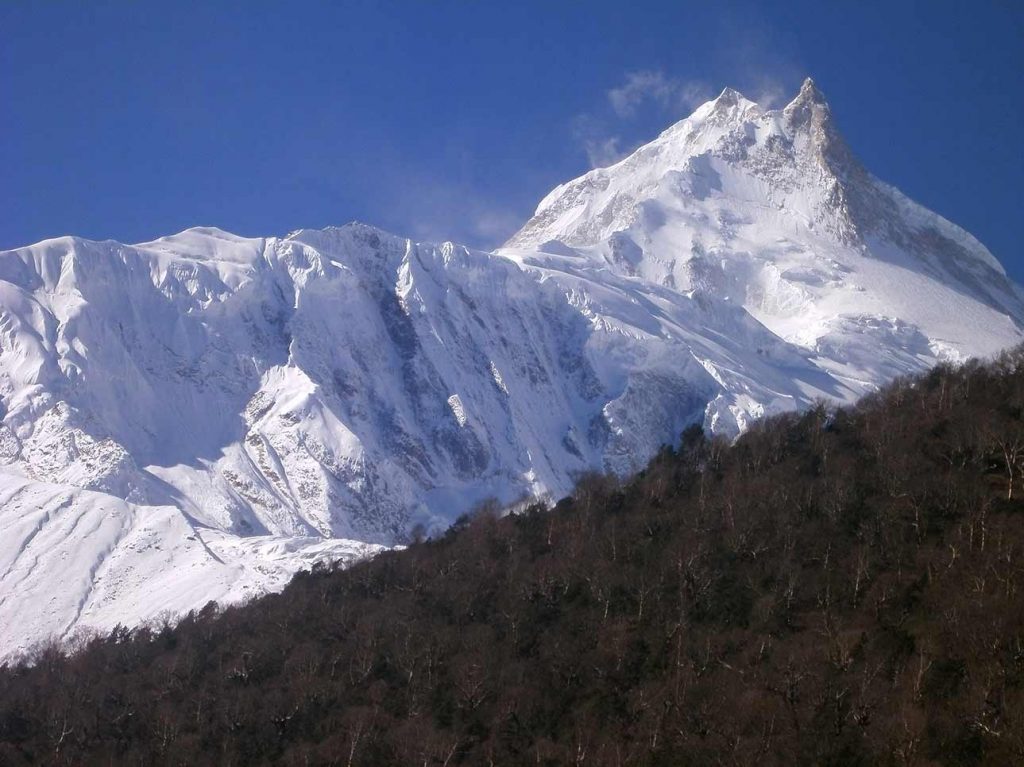
Manaslu circuit trek is the blend of both adventure and solace that’s why it has become one of the favorite trekking destinations for trekkers in Nepal. This trek is suitable for those trekkers who want to take the adventure to the next level.
The spiral trekking route of Manaslu circuit takes around 16-22 days to complete if you stick to the itinerary. To complete the trek in time, the trek that demands tough physical fitness.
Manaslu circuit trek is slowly grabbing trekkers’ attention due to its unmatched beauty and the serenity it offers. Located in Manaslu region Tibetan influence blend of both Nepalese and Tibetan culture.
Manaslu Circuit Trek Highlights
- Spectacular view of the world’s eighth highest mountain Manaslu
- Exploring the unique lifestyle of people of Manaslu region
- Trekking through dramatic Larkya La Pass (5,106m)
- Experience the blend of Nepalese and Tibetan culture
Manaslu Trekking Overview
The challenging trekking trail of the trek takes you to the maximum height of 5,106 m. Manaslu circuit trekking package is designed in such a way that the trek can be completed in around 16-22 days. Gaining popularity as one of the best trekking destinations in Nepal, this rural area trek is challenging yet exhilarating.
How to Get There?
Kathmandu is the main point for the entry and your journey starts the capital city. There are two options to start a Manaslu Circuit Trek. One is by private jeep and the other one is by Public Bus but it is not possible to start the trek by foot.
Private Jeep
If you want to begin the trek to be smooth and friendly then reserving private Jeep is the best way. You will get 4wd jeep which is designed for an off-road drive. Your journey starts Kathmandu to Dhading Besi and from Dhading Besi to Sotikhola.
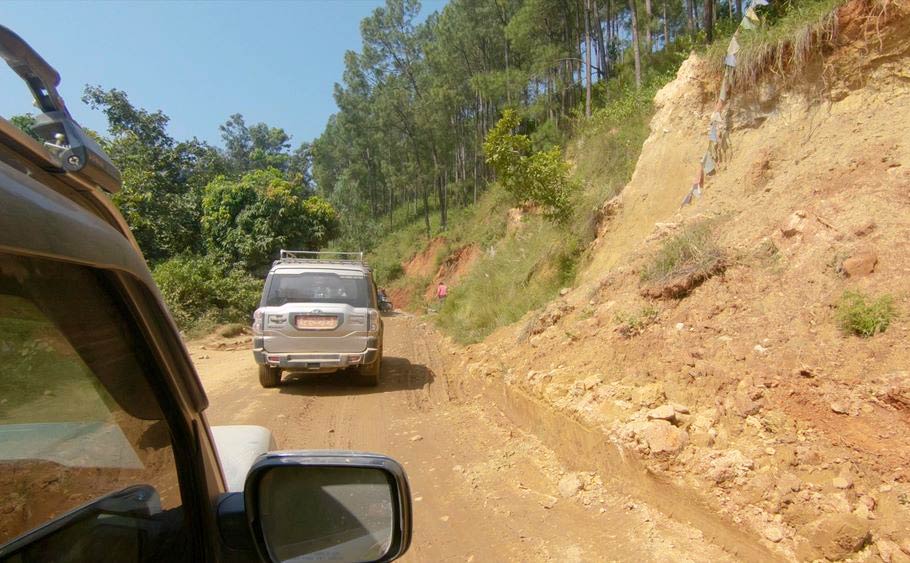
It takes around 7-8 hours to reach Sotikhola from Kathmandu depending upon the traffic it may take additional time. You can share the same jeep by 7-8 people so, reserving a jeep will be cheaper if you book with a group. The estimated cost of a jeep is around $150-$200.
The public bus ride is an adventurous ride but it is safe as the bus drivers are more experienced. As there is no direct public bus service from Kathmandu to Sotikhola. so, you have to take transit to reach Arughat. There is a local bus or jeep service from Sotikhola to Arughat.
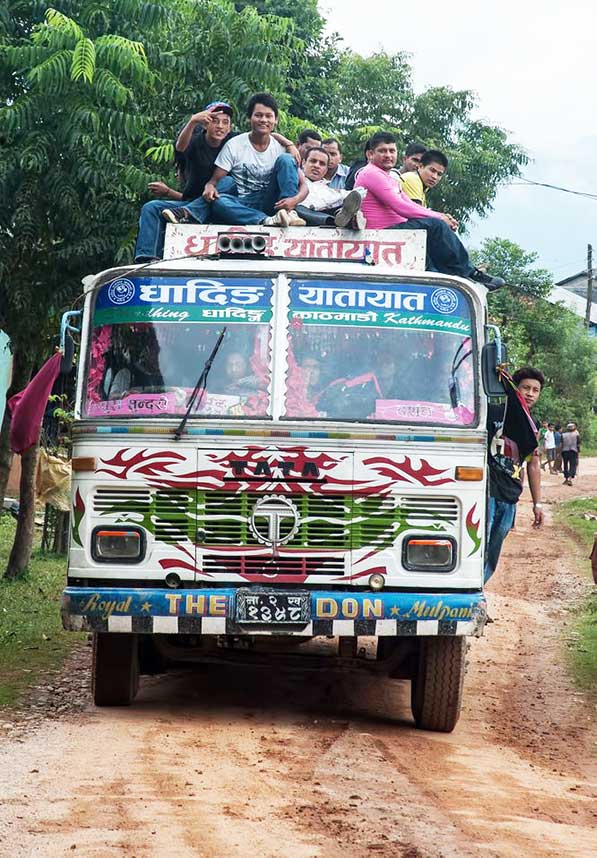
The distance between Kathmandu to Sotikhola is 138 km and it takes around 8-9 hours to reach Arughat but it also depends upon the road conditions.
Where to stay?
There are quite several places in Manaslu region where you can stay during the trek. Being a remote area trek, it doesn’t assure superior quality but your comfort and needs are addressed.
On the first day, you can stay in Soti Khola where many teahouses are running. You can expect Wifi and hot shower services but you have to pay extra. Then, as you go uphill, you’ll find teahouses in abundance in Jagat. You’ll also encounter the first check-point in Jagat.
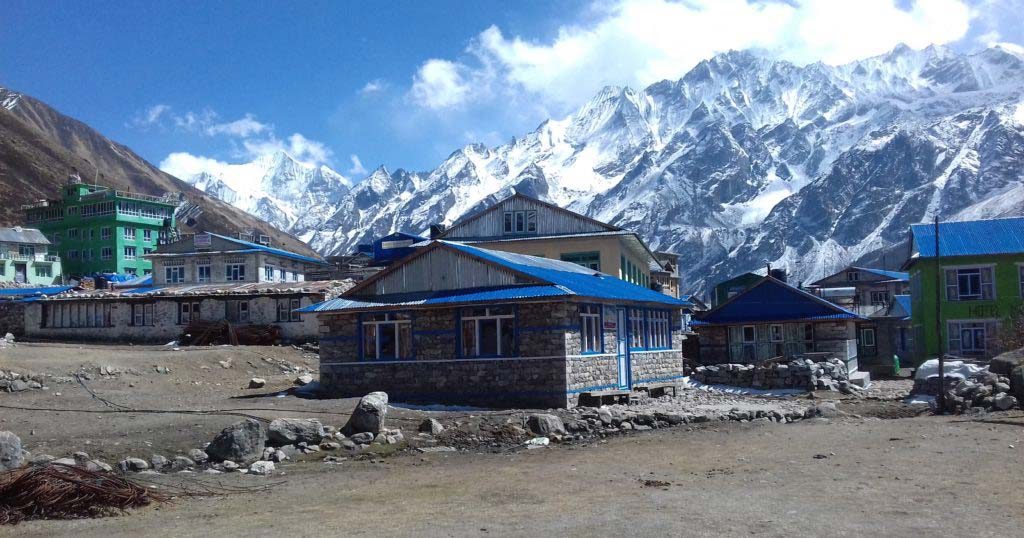
Next, you can find teahouses in Deng. You can also enjoy local dance there. Your staying point during Manaslu circuit trek will certainly be in Namrung, Lo village, Sama Gaun, Samdo, Dharmasala, Bimthang, and lastly Dharapani. Two beds and a common bathroom are available in the teahouses.
Accommodation and healthy food is rarely a problem in Manaslu trek. Trekkers mostly prefer Dal Bhat after a tiring long walk. It gives them instant energy and strength to walk long. Wooden fire can also be available in teahouses. You can inquire at the teahouses.
How to prepare for Manaslu Circuit Trek?
You should train your body and mind for such type of trekking. It requires a high level of preparation and few experiences in high altitude trek. So first-timers are not recommended.
Tough physical fitness is required. It is a long trek in a rural area so, a high level of adjustment is required. The completion of the trek also depends on your capacity to acclimatize with the changing elevation and weather.

You should strengthen your hiking and breathing ability. Exercise daily. Spend your morning time in building your stamina.
It is better to have some knowledge of first-aid. Carry your essential medicines with you. If you have a breathing problem then this trek is not recommended.
Carefully pack your bag. Equip yourself with trekking gear and essential clothes. Carry enough Nepali currency. Carry water to keep yourself hydrated throughout the trek.
Before you head for Trekking, you should grab some ideas about the Manaslu Circuit Trek weather condition. Then, you can decide the best time to trek the Manaslu circuit.
Winter is not suitable for the Manaslu circuit trek. The winter season extends from December to February. The trek route is icy. The frozen trekking trails can be dangerous. There is a high chance of slipping while walking.
There is not much flora and fauna to explore during winter. Snowfall is high during winter. The beautiful landscape of Manaslu is covered with a snow blanket. Trekking trails are blocked during heavy snowfall.
At that time, we would need to wait for the snow to stop. The oxygen will be extremely low making it difficult to survive the high altitude of 5106m during winter.
Spring is considered the best season for the Manaslu circuit trek. The spring season extends from March to May. The weather is neither too hot nor too cold.
It is the time when the rhododendron forest is dense. Rhododendron of various colors can be seen blooming and distinct species of animals come out of their hibernation period.
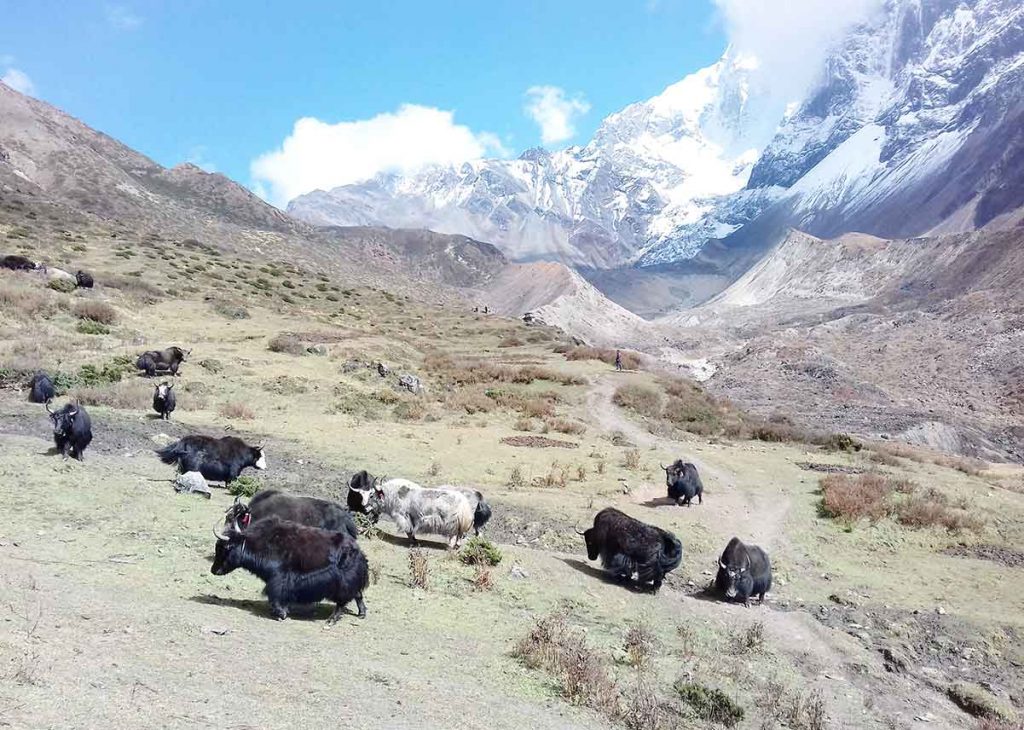
Spring season greets us right after the winter season. The sky becomes clearer so the mountains can be seen clearly.
The chilly weather turns warm so the bundle of heavy clothes decreases. The frozen lakes melt. The trekking trails are not steep so the level of difficulty reduces.
The hot Summer days of June, July, and August are not suitable for long trekking trails. During summer, it will be difficult to walk in the scorching heat. It will be difficult to walk 6-7 hours a day under a scorching sun. The weather will be dry in summer.
Frequent rainfall can occur due to the mountainous area. The rainfall is high where forests are nearby. It is again difficult to walk during rainfall as the trekking trails will get slippery. Even during summer, you would have to carry raincoats and boots.
The temperature is high during the summer. So, you will not encounter snowfall. If you want to play with snow, its better you avoid visiting Manaslu circuit trek during summer.
Trekkers consider Autumn as the best season for Manaslu circuit trek because the weather is neither hot nor cold. Autumn occurs in September, October, and November. Autumn turns up between summer and winter season.
The weather is wet and pleasant during autumn. The temperature is suitable for treks that require walking for long hours.
Manaslu Circuit Trek Route Map

Manaslu circuit trek route map is essential for completing the trek. The trekkers should carry it with them during the trek. Trekkers should be familiar with the various trekking routes, symbols, landmarks, marked on the map. Consulting experienced local guide will help you better understand the Manaslu circuit trekking map.
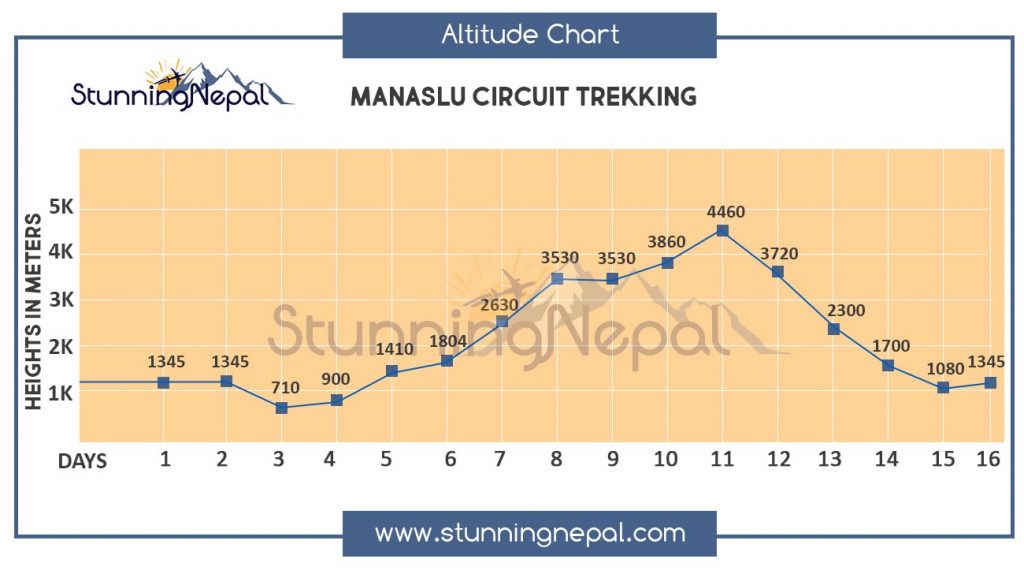
A trek route map will help you organize itinerary. You can plan where to stay on a trek. Acquiring Manaslu circuit trek altitude map will help you know the altitude of each place on the trek. You can then prepare well to avoid altitude sickness.
16 Days Manaslu Circuit Trek Itinerary
People are often curious about the number of days required to finish the Manaslu trek. It takes around 16 days to complete the trek. Below is the Manaslu circuit trek itinerary for your convenience. You can go this trek for during your long vacations.
Manaslu Circuit Trek via Tsum valley
Tsum valley was not open for trekking till 2008. It is a remote valley in a restricted region. Tsum valley is located in the northern part of Gorkha. The name Tsum derived from an ancient word ‘Tsumbo’. The literal meaning of Tsum is vivid.
Untouched by modernization, Tsum valley still holds the traditional architecture, culture, and lifestyle. Tsum valley is a peaceful village enriched with centuries-old architectural beauties.
The local people of Tsum valley, known as Tsumbas, follow Buddhism and uses a distinct dialect to communicate.
Tsum valley existed as Tsum kingdom in history. It is a beautiful valley with a stunning landscape. The atmosphere here is breathtaking. You would enjoy the natural beauty and the warm hospitality of Tsumbas here.
Tsumbas celebrate different Buddhist festivals like Lhosar which is celebrated as Tibetan New Year. The monasteries of Tsum valley are one of the major attractions of the trek.
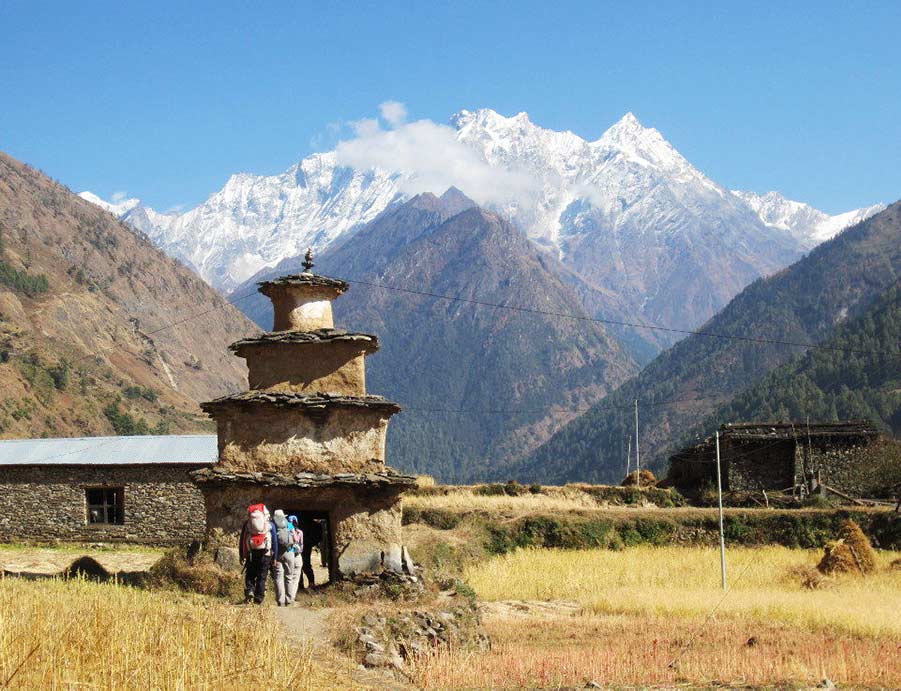
Residing in the lap of the Himalayas, Tsum valley offers a spectacular view of high peaks. That’s why lots of trekkers prefer Manaslu trek via Tsum valley. This trek is slowly gaining popularity and trekkers don’t regret the journey.
Tsum lies in the high altitude of hilly part of Nepal. So, the village is cold most of the time. The best time to visit Tsum valley Tsum valley is during spring and autumn. The weather is clear during this time and the view of the mountain range and the distinct landscape is clearly visible.
Manaslu circuit trek via Tsum valley can be completed within 20-24 days depending upon the routes you take and your physical strength. The less time you take to acclimatize, the less time you’ll take to complete the trek.
Manaslu Circuit with Tsum valley trek Highlights:
- Enriched with Buddhist culture
- Teahouses, lodges, guesthouses in abundance
- Stunning view of Ganesh Himal, Manaslu Himal, Lamjung Himal
- Beautiful Rhododendron forest
20 Days Manaslu Circuit with Tsum Valley Trek Itinerary
Trekking gear.
While you prepare yourself for Manaslu circuit trek, you have to consider even small things. Don’t neglect the essentials that will actually help you survive the cold and the difficulties of Manalu.

Here are some trekking gears that you would probably require during Manaslu circuit trek:
- Base Layer, an Insulation Layer, Outer Layer
- Trekking trousers and shirts
- Waterproof jackets and trousers
- Underwear and socks
- Hat and Gloves
- Trekking shoes
- Sleeping Bag and duffle bag
- Sunglasses, towel, water bottle
- Portable charger
Learn: Manaslu Circuit Trek Route Tips
Frequently Asked Questions
Get the answer about frequently asked questions about Manaslu Circuit Trekking that our visitors have been asking us.
Is Manaslu Circuit dangerous?
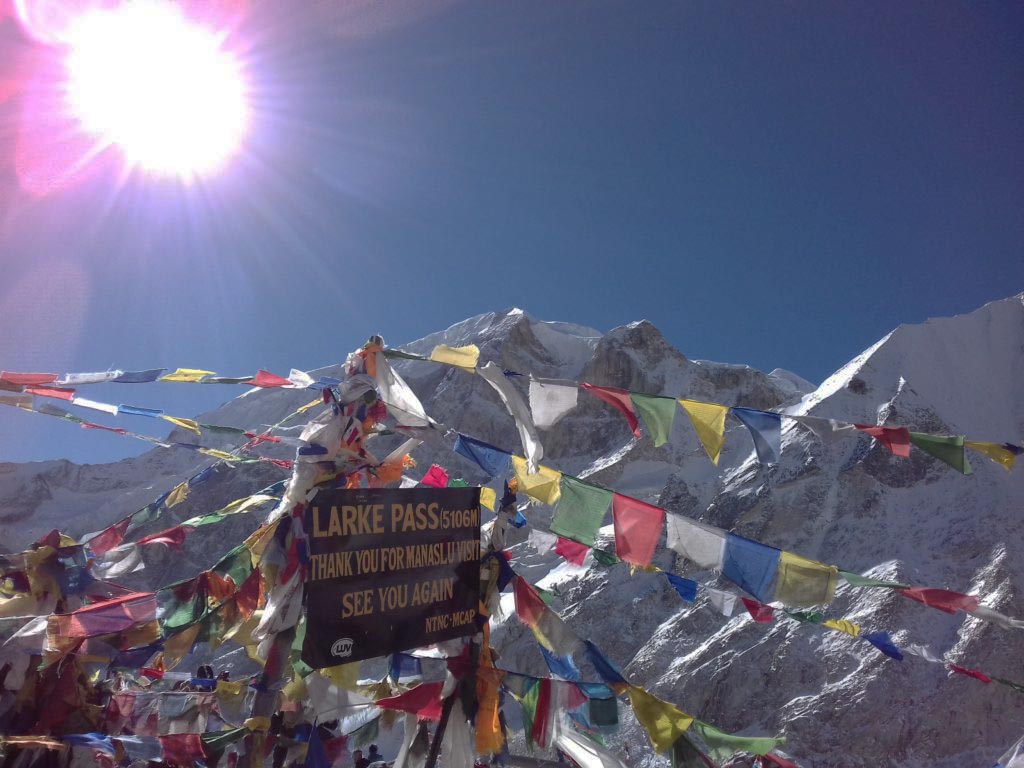
How long is Manaslu circuit trek?
The Circuit Trek is the most visited remote area trekking in Nepal. The trek starts from the historical place of bravery and strength, Gorkha, and ends at Bhimphedi. The main attraction of Manaslu trekking is the dramatic Larkya Pass which extends to 5,140m. The Manaslu circuit trek distance is quite prolonged compared to other treks in Nepal. Manaslu circuit trek length is around 177 km. It is a long trek that requires at least 15 days to complete and the days vary depending upon the stamina of the trekker.
Is it difficult to trek Manaslu Circuit?
Manaslu Trek is not a piece of cake. Before you go for the circuit trek, you should be aware of the difficulty level of the trek and the problems you might face in the worst case so that you can prepare well. Manaslu circuit trek difficulty level is high. It requires tough physical fitness and a lot of experience in trekking to Manaslu. The trekking trails are circular and offbeat. Not only physical fitness, but you also need to train your mind as well. Balancing the body and mind is key to a successful trek. Be mentally prepared to go for a difficult but exciting trek. The trekking trails are quite long so you have to walk around 15-20km a day. The high altitude will cause nausea making it difficult to walk in elevation. Altitude sickness may cause trekkers to slow down. Manaslu circuit trek is in a remote area so you cannot expect many facilities there. Facilities like the internet, telecommunication, good accommodation, warm water, medical help, etc are rarely available.
Are the internet and charging accessible at Manaslu?
The lodges are comfortable for accommodation but it is difficult for the lodges to provide good internet and charging accessibility after a certain elevation. Some lodges have solar power and may provide wi-fi and communication facility. But, as the altitude increases, the facilities start fading. CDMA has better coverage in the Manaslu region. You should not depend on the internet and charging facilities of the Manaslu region. Carry extra batteries and power banks for charging purposes. As you climb up, you won’t be able to connect with your family and friends so you should inform them in advance about the telecommunication.
What are Manaslu Circuit trek permits and cost requirements?
As Manaslu circuit trek lies within the Manaslu Conservation Area, you are required to carry permits to enter the restricted region. You would require ACAP and MCAP to enter the Annapurna Conservation Area and Manaslu Conservation Area respectively. If you’re visiting the Manaslu circuit via Tsum valley, then another necessary permit is required that would cost about $35.
Can I go to Solo Trekking?
Manaslu circuit is regarded as a trek with a high level of difficulties. It is a remote area trekking so the trekking trails are rocky and dangerous. Trekkers require a certain level of physical fitness and a high level of enthusiasm to complete such an unconventional trekking route. This trekking package has some limitations and mandatory requirements and one of them is no solo trekking. A group of two or more trekkers is required to continue trekking. A solo trekker is not granted permits to go solo trekking. Since the circuit trekking is quite unpredictable, there is a possibility of facing problems either during trekking through the rough path at a high altitude or during trekking through Larkya Pass. Larkya Pass is usually windy and too snowy. Trekkers sometimes lose the trekking path at Larkya Pass. Solo trekking can be life-threatening. Trekking in the group with guides and porters is recommended.
Can you trek Manaslu without a guide?
Manaslu circuit trek without a guide is a bit of a difficult job. Having a Manaslu trekking map is not enough to complete the trekking trail of the Manaslu circuit. It is definitely necessary to have a map and understand the map thoroughly but to fully depend on it and proceed without a guide is a bad idea. Taking a guide is highly recommended as the guides are highly experienced. They will come up with a solution any you face any problem during trekking.
What is the best season to visit the Manaslu Region?
Autumn and spring are deemed as the best season to visit the Manaslu region because it is the best time to witness the stunning view of the mountain range. The view of the Tsum valley in Manaslu dazzles the trekkers during Autumn and Spring season. Manaslu region is stunning throughout the year. The trek lovers appreciate its spectacular landscape and unique natural beauty more during the spring and autumn season.
How much does the Manaslu trekking cost?
You can choose the mode of transportation. If you choose to travel on the local bus, that would possibly cost you around USD $10 per person. If you choose a jeep journey, then it would probably cost you between USD $150-$200. The isolated environment of Manaslu is expected to be expensive. The single meal will not cost more than $5-$6. Estimating $20 expense a day would be enough probably. The cost of a single bedroom and double bedroom would normally range from USD $6 – $9. The total cost of the Manaslu circuit trek permit would be around USD $110 per person from September to November and US $90 per person from December to August. Moreover, the circuit trek and Tsum valley trek permit would cost USD $145 per person from September to November whereas the only USD $105 per person from December to August. Since this circuit trek is located in the remote area of the Manaslu region, trekkers will definitely require an experienced guide and porter to complete the difficult trek within the estimated duration. The cost for guide and porter is not more than $25.
I hope this ultimate guide for the Manaslu circuit trek would be of your help. This guide includes all the necessary information you should know before you go for the Manaslu trekking.
If you have any queries, please leave a comment. Have a nice holiday!
Love this Post? PIN Me!!!

Suraj Katwal
Suraj is a travel enthusiast who believes in finding solace in the heart of nature. He enjoys exploring new destinations, different culture, and encouraging people to travel.
Travel Resources
Hotel & Flight
Searching for the best hotels & flight tickets to visit Nepal? Check out the best deals.
Related Articles...
5 Best One Week Treks in Nepal
Annapurna Base Camp Trek Cost for Nepali
Annapurna Base Camp Trek vs Everest Base Camp Trek
30 Interesting Facts About Mount Everest
Why is Annapurna so Deadly Mountain?
How to Find Travel Agency for Everest Base Camp Trek?
Annapurna Base Camp Trek Weather
Top 5 Family Trek in Nepal
2 thoughts on “Manaslu Circuit Trek: An Ultimate Guide”
I am interested in going for Manaslu circuit trek in October’ 21 – 2nd week My planned itinerary for 2 persons (Indians) Day 1 fly to Kathmandu Day 2 permit Day 3 kathmandu- sotikhola Day 4 machakhola Day 5 jagat Day 6 deng. Day 7 namrung Day 8 samagaon Day 9 samagaon Day 10 samdo Day 11 dharamshala Day 12 bhimthang Day 13 dharapani- Release of Guide Day 14 Kathmandu I will need to hire one Porter-guide and arrangements of RAP, ACAP & MCAP. If you can arrange or give some reference.
Hi Sunil, We can arrange it, can you please share your WhatsApp number over email or contact us on WhatsApp – +977-9808211139 ?
Leave a Comment Cancel reply
About stunning nepal.
Stunning Nepal is a travel blog that intends to provide travel tips, references & guides, things to do & also your guide for hiking & trekking in Nepal.
Travel Guide
Things To Do
Food and Festivals
Privacy Policy
Get in Touch
Stunning Nepal
Address: Dhanawantari Marg, Kathmandu 44600, Nepal
+977-9808211139
© 2024 Stunning Nepal. All Rights Reserved
Himalaya Trail
Facts About Mt. Everest
Trek to Everest Base Camp
Best Time to Visit
Weather & Climate
Kathmandu Airport Guide
Top Destinations in Nepal
One Week in Nepal
Tipping Guide
Getting Around
Top Things to Do in Nepal
Complete Guide to Kathmandu
Top Things to Do in Kathmandu
Top Things to Do in Pokhara
Sacred Sites
Amazing Festivals
Top National Parks
Must-Try Food
Annapurna Circuit
Manaslu Circuit
How to Trek Nepal's Manaslu Circuit
Tens of thousands of people flock to the Himalayas each year to hike among the highest mountains in the world. Stretching across Nepal, China, Bhutan, India, and Pakistan, the mountain range boasts incredible trekking routes. The most popular of these are the Annapurna Circuit and Everest Base Camp , but there are other options as well, the best of which is Nepal's Manaslu Circuit.
Opened to foreigners in 1991, the Manaslu Circuit is often referred to as the "new Annapurna Circuit," reminiscent of what the Annapurna Circuit was like before it got busy. The route makes its way around Manaslu—the 8th highest mountain in the world at 26,781 feet—and encompasses spectacular mountain views, remote villages, and Tibetan Buddhist culture. Here is everything you need to know before embarking on this breathtaking trek in Nepal .
Why Choose Manaslu over Annapurna?
The popular Annapurna Circuit is getting crowded and, with a road running along much of the route, is almost too accessible. The Manaslu Circuit is just to the east of the Annapurna Circuit, yet it still feels relatively untouched.
This trek reaches remote mountain villages and comes close to the border of the Tibet Autonomous Region of China. Due to its location, the Manaslu region is a restricted area, which has stopped it getting too busy. It only began to become popular in 2010 when enough teahouses were built to cover the whole route.
The proximity to the border has also resulted in a strong Tibetan and Buddhist influence. Trekkers will see colorful prayer flags fluttering in the wind, and will pass multiple stupas, mani walls, and prayer wheels in various forms on the paths and in the villages. There are a few monasteries visible on the trek, including Pungyen Gompa at over 13,100 feet. A visit to this monastery is a popular choice for an acclimatization day walk from Samagoan.
What to See on the Manaslu Circuit
As you make your way from 2,300 to 16,752 feet, the landscape of the Manaslu Circuit changes every day. It begins by following the Budhi Gandaki River, from where you can see waterfalls cascading down cliffs. The land changes from rice fields to bamboo forest to alpine forest, finally becoming almost barren at the highest altitudes. The Larkya La Pass, at 16,752 feet, takes you over glacier moraines, frozen lakes, and snow. Glaciers cling to the mountains above the pass.
On the trails, lines of mules navigate precarious ledges carrying supplies to the remote villages. At the higher altitudes, mules give way to yaks, a massive cow-like animal with a thick coat for the freezing mountain temperatures. The local people use these creatures for their milk, meat, and warm coats.
Best Time to Go
The best time to trek the circuit is in October or November, before winter sets in. At this time, clear skies are pretty much guaranteed. September and March to May are also good times to go, but the weather is dependent on the timing of the snow and the monsoon rains.
How to Get There
Any trip to Nepal begins in the capital, Kathmandu. Trekkers usually spend a few nights there before they fly in and out of the country. If you booked a tour, a private jeep takes you northwest to the start of the trek in Soti Khola.
Many people take a public bus to Pokhara after their trek. Pokhara is a beautiful lake-side city with breathtaking mountain views on a clear day. It is closer to the circuit than Kathmandu and a great spot to unwind after an arduous journey.
How Long Does It Take to Hike?
The actual trek, from Soti Khola to Besisahar, is usually done in 12 days. Add on a few days for traveling to and from the trek—as well as time in Kathmandu or Pokhara—and in total the whole trip will take around 17 days. It is possible to spend more time on the circuit if you wish to extend the route or take more breaks along the way.
Note that you will need a decent level of fitness for this hike. You will tackle challenging terrain, walk for five to six hours each day, and reach over 16,000 feet in altitude. The full distance covered on foot is approximately 105 miles.
What to Pack
There are many great lists of what to pack for a trek in the Himalayas, but here are some of the absolute necessities:
- The circuit covers multiple climates, so pack layers for sweat-inducing heat and below-freezing temperatures.
- A pair of sturdy hiking boots is a must.
- A warm sleeping bag for cold nights.
- Water purification tablet s are the best way to ensure you are drinking clean water.
- Stock up on high-energy snacks from home or in Kathmandu as these are very expensive on the route.
- When it comes to altitude, trekkers often take Diamox. Your guide will advise you when it is best to take this and ensure your group takes acclimatization days to prevent altitude sickness .
You can opt for a porter if you don’t want to carry your bags, but it's best to pack light either way.
Do I Need a Permit?
You need a permit to hike this route as it is in a restricted area. You also cannot take the circuit alone; you need at least one other person with you, and you must also be accompanied by a registered guide. The guides are a great addition as they are friendly, set the pace, and provide a wealth of knowledge.
The permits you need are the Restricted Area Permit (RAP), Manaslu Conservation Area Project (MCAP) permit, and Annapurna Conservation Area Project (ACAP) permit. The RAP is $70 per week plus $10 for each extra day; the price drops slightly outside peak season. The MCAP and ACAP are each around $30.
Permits can be obtained through the Nepal Tourism Board office or a registered trekking agent in Kathmandu. If you book a tour, the agent will sort out the permits for you. Either way, you will need to provide four passport photographs.
Do I Need Travel Insurance?
You must have travel insurance for this trip. Most trekking companies won’t take you without it, and will also check that you are covered for the altitude and mountain rescue.
Top Tour Companies
You can arrange your guide and permits on your own or you can book a tour. The tour company will arrange the whole trek for you, making everything easier. Some recommended tour companies are:
- Nepal Eco Adventure
- World Expeditions
Where to Stay
There are teahouses available for every night of your trip; they offer basic accommodation, often a room with two single beds. Pillows and blankets are usually provided, but the nights get cold pretty early on, so a warm sleeping bag is essential. Teahouses don’t have heating, but some light fires in the evening. Be aware that the higher you go, hot water is harder to come by.
The teahouses will also be where you eat breakfast and dinner. As you get more remote, the options for meals diminish. The most nutritious option and the one always available is dal bhat, the staple Nepalese lentil, rice, and vegetable dish.
Five Amazing Hiking Routes Among the High Mountains of the Himalayas
How to Trek Nepal's Annapurna Circuit
The Best 12 Hikes in Nepal
The Best Time to Visit Nepal
How to Go Teahouse Trekking in Nepal
The Top 20 Things to Do in Nepal
The Top 15 Destinations in Nepal
15 of the Most Beautiful Sacred Sites in Nepal
Nepal's Great Himalaya Trail: The Complete Guide
12 Top Things to Do in Sikkim, India
Your Trip to Nepal: The Complete Guide
Valley of Flowers National Park: The Complete Guide
The 15 Best Hiking Destinations in Asia
12 Major Mountain Ranges in India
Everything You Need to Know About Trekking to Everest Base Camp
The Complete Guide to Climbing Morocco's Mount Toubkal
- Trip Advisor Reviews View our clients reviews on Trip Advisor.

- Email us Now [email protected]

- 24/7 Phone Support +9771-4410281 +977-9843098218
The Ultimate Guide to the Manaslu Circuit Trek
8th Nov, 2023
Nestled in the heart of the Nepalese Himalayas, the Manaslu Circuit Trek is widely regarded as one of the best moderate multi-day treks in Nepal. Circumnavigating the spectacular Mount Manaslu (8,163m), the eighth highest mountain in the world, this thrilling journey takes you through remote valleys, high mountain passes, and charming villages.
As you follow ancient trade routes across the Manaslu region, you’ll be rewarded with some of Nepal’s most stunning scenery and fascinating cultural encounters. From the lush forests of the Budhi Gandaki river valley to the arid high-altitude landscapes of the Tibetan plateau, the astonishing diversity of this trek appeals to all hikers.
While less crowded than popular treks like the Everest Base Camp and Annapurna Circuit treks, the Manaslu Circuit Trek still offers all the magic of the Himalayas. Read on to discover everything you need to know to plan your ultimate Manaslu Circuit trekking adventure.
Overview of the Manaslu Circuit Trek
The Manaslu Circuit Trek typically takes between 13-18 days to complete a full circuit of Mount Manaslu. The trek starts and finishes in the town of Arughat after completing a clockwise loop around the mountain.
The total trekking distance is around 160km, with most days covering between 5-8 hours of walking. You’ll cross over several high mountain passes exceeding 5000m in elevation. Proper acclimatization to the high altitude is essential.
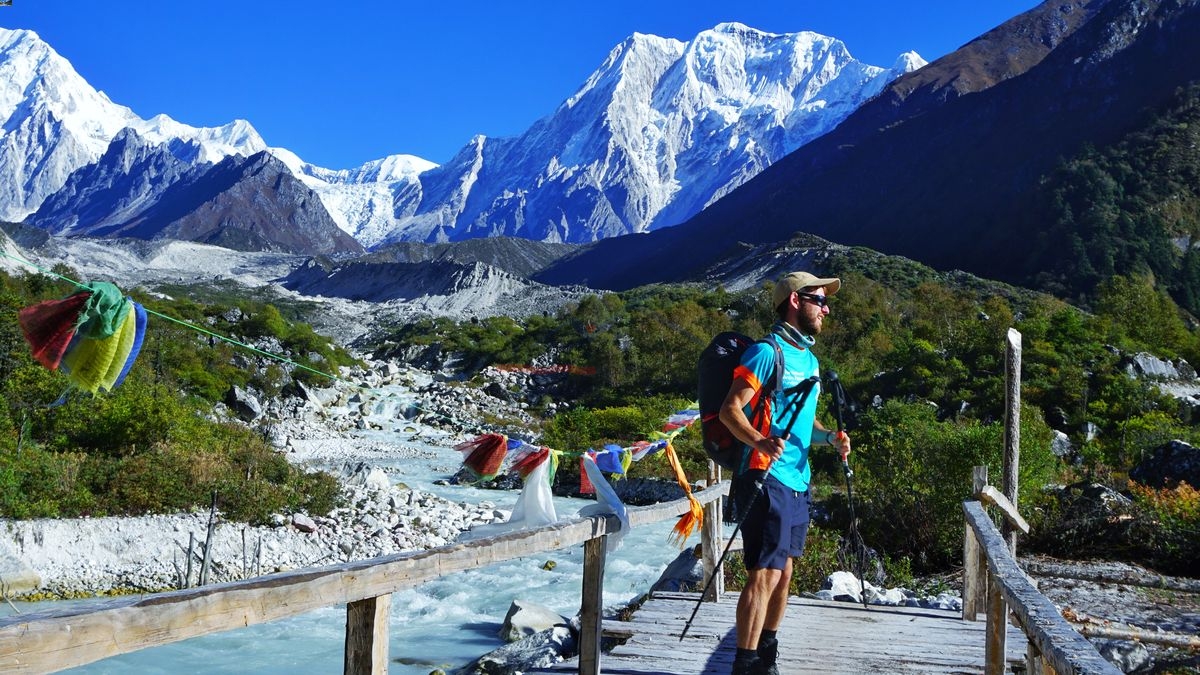
The route passes through remote areas with basic accommodation in tea houses or camping. As this region has only recently opened for trekking, the trails are less crowded than other major treks in Nepal.
The journey combines nature and culture as you witness incredible mountain landscapes as well as traditional Tibetan and Nepali villages. With the stunning scenery and warm hospitality, you’ll be captivated by the magic of the Manaslu region.
Key Highlights of the Manaslu Circuit Trek
- Breathtaking views of Mount Manaslu (8163m) and surrounding peaks like Ngadi Chuli (7871m).
- Crossing the high Larkya La pass (5213m) which links the Marshyangdi and Budhi Gandaki valleys.
- Seeing monasteries, chortens, and mani walls reflecting Tibetan culture and Buddhism.
- Visiting charming villages like Lho, Samagaon, and Bihi showcasing local Nepali lifestyle.
- Trekking through diverse landscapes from sub-tropical to alpine high mountain zones.
- Following quiet trails away from large trekking crowds.
- Spotting exotic wildlife like blue sheep, golden eagles, and Himalayan tahr.
When is the Best Time for the Manaslu Circuit Trek?
The Manaslu Circuit Trek is open from March to May in spring and September to November in autumn. These seasons offer ideal weather for trekking before and after the monsoon rainy season.
During spring, the trails are lined with vibrant rhododendron blooms while autumn showcases clear skies and the Himalayas at their best. Daytime temperatures average 15-20°C in the lower areas. Up high, temperatures drop below freezing at night.
Deep winter from December to February brings harsh cold along the trek, especially at higher elevations and passes. Travel can be hindered by snow. The summer monsoon from June to August sees heavy rain making the trails very wet and slippery.
Therefore, the prime times to trek the Manaslu Circuit are March-May and late September-November. This avoids the extremes of winter and monsoon seasons.
How Difficult is the Manaslu Circuit Trek?
The Manaslu Circuit Trek is considered a moderately difficult trek suitable for avid hikers with prior multi-day trekking experience at high altitude. Proper fitness level, acclimatization, and quality trekking gear are essential.
Here are some key points on the difficulty level:
- Days are long with 5-8 hours of walking on average. Fitness is key.
- High elevation with several passes over 5000m means good acclimatization is vital.
- Trail conditions can be rough or slippery in parts, especially over the Larkya La.
- Cold temperatures at higher altitudes coupled with strong winds.
- Basic tea house accommodation in small villages with shared long-drop toilets.
- Limited health facilities along the remote route.
With sound preparation, a moderate level of fitness, and gradual acclimatization to altitude, most people can complete the Manaslu Circuit Trek. Some strenuous days are compensated by more relaxed walking.
Trekking slowly and allowing extra rest days aids acclimatization. You must be comfortable with multi-day hiking and basic living conditions. Previous experience above 4000m helps considerably.
How to Get to the Manaslu Circuit Trek?
Most people begin the Manaslu Circuit Trek by bus from Kathmandu to Arughat (2 days) or Soti Khola (1 day) to reach the starting point. Jeeps can also drive to Arkhet which shortens the first day’s walk. You can arrange local transportation and permits through a trekking agency.
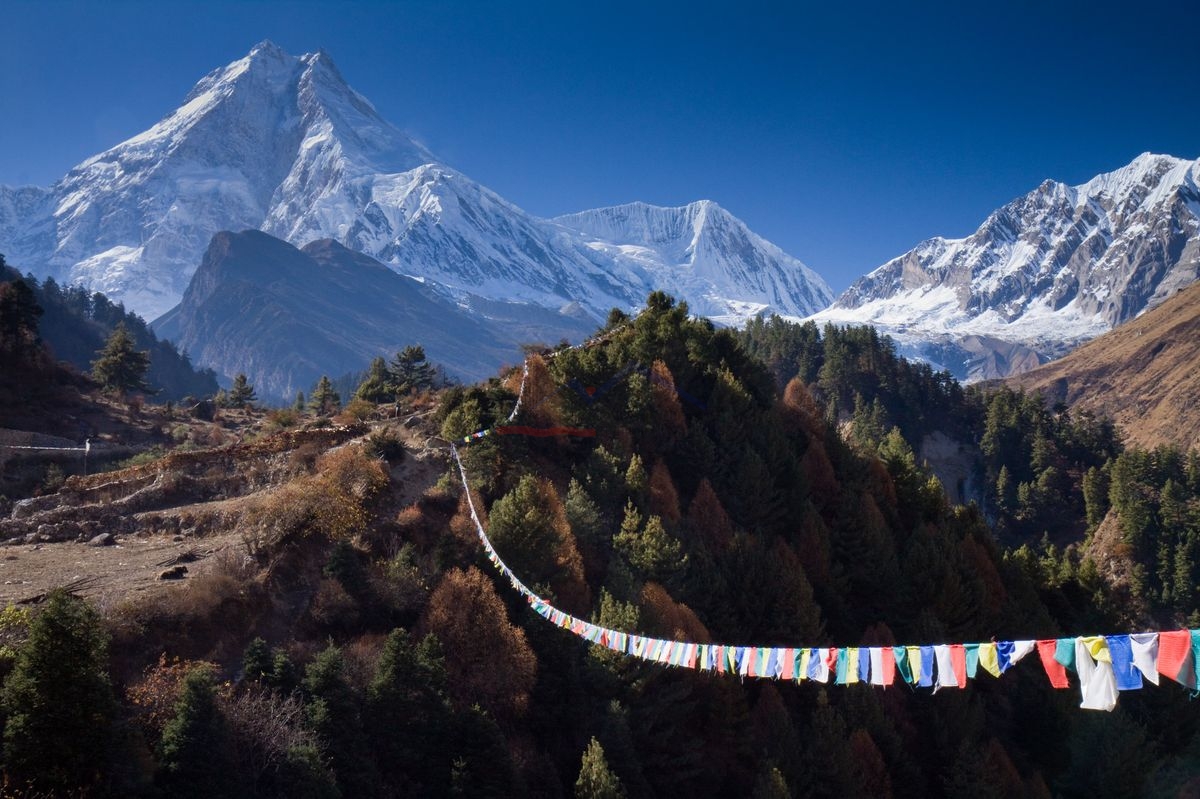
Here is an overview of reaching the Manaslu Circuit Trek start point:
- Local bus from Kathmandu to Arughat takes around 8 hours. From Pokhara, take a bus to Abu Khaireni then change.
- Jeeps can drive from Kathmandu to Arkhet in around 6-7 hours. Shorten day one walking.
- For the fastest start, hire a private jeep to Soti Khola which takes around 4-5 hours.
- Flights from Kathmandu to Tumlingtar then drive 3 hours to Soti Khola. Expensive but saves 2 days.
Arughat is the classic starting point to begin your Manaslu Circuit trek by foot. Travel time is compensated by spectacular overland journeys showcasing rural Nepal before reaching the trails.
Manaslu Circuit Trek Itinerary Overview
While the exact itinerary can vary slightly depending on your start point, pace and acclimatization needs, here is an overview of the standard Manaslu Circuit trek outline over 14 days:
- Day 1: Drive Kathmandu to Soti Khola
- Day 2: Trek to Machha Khola (Fish tail River)
- Day 3: Trek to Jagat village
- Day 4: Trek to Deng village
- Day 5: Trek to Namrung village
- Day 6: Acclimatization day in Namrung
- Day 7: Trek to Samagaon
- Day 8: Acclimatization day in Samagaon. Optional day hike.
- Day 9: Trek to Samdo
- Day 10: Trek to Dharmshala
- Day 11: Cross Larkya La Pass (5213m). Trek to Bimtang
- Day 12: Trek to Gho village
- Day 13: Trek to Dharapani then drive to Besisahar
- Day 14: Drive from Besisahar to Kathmandu
Detailed Day by Day Manaslu Circuit Trek Itinerary
Now let’s look at what each day of the Manaslu Circuit trek entails including highlights and important notes for trip planning:
Day 1: Drive from Kathmandu to Soti Khola (700m)
The journey to Soti Khola takes around 4-5 hours by private jeep. This arterial road leads into the heart of the Manaslu region. Enjoy views of rice terraces and jungle-clad hills before following the Budhi Gandaki River gorge. Stay overnight in simple local lodges.
Day 2: Trek Soti Khola to Maccha Khola (Fish Tail River) (870m)
(Walking: 6-7 hours)
After breakfast, cross the suspension bridge north over the Budhi Gandaki River. The trail leads through Sal forest and ascends on stone steps to the Gurung village of Labubesi. Descend back to the river bank at the confluence with the tributary Khola River. Cross another suspension bridge to Maccha Khola village for overnight stop.
Day 3: Trek Maccha Khola to Jagat (1410m)
Following the Budhi Gandaki, today’s trail climbs over several ridges along the empty riverbank. A tough climb takes you to the charming Gurung village of Jagat where the valley opens up. The entrance stone steps signify arrival in the Nepal Manaslu Conservation Area. Overnight in Jagat in local lodges.
Day 4: Trek Jagat to Deng (1860m)
(Walking: 5-6 hours)
Crossing the river early on, the trail weaves uphill through forests revealing views of Sringi Himal (7187m). Descend to cross the Budhi Gandaki on a long suspension bridge to Deng village. Surrounded by cliffs, Deng is the last permanent settlment until the trek returns here on the circuit.
Day 5: Trek Deng to Namrung (2660m)
Leaving Deng, enter the Budhi Gandaki gorge clad with pine forests. The walking involves lots of ups and downs today. Notice the change in architecture and people, reflecting Tibetan influences. Reach Namrung village, at the doorstep of the high Himalaya.
Day 6: Acclimatization Day in Namrung
wise to spend an extra acclimatization day here enjoying short walks around the village. This helps prepare for higher elevations ahead. Namrung Monastery is worth a visit to view morning puja.
Day 7: Trek Namrung to Samagaon (3530m)
Today crosses the Buddhi Gandaki on a bridge festooned with prayer flags then ascends steeply up the stone steps to the village of Lho. The trail stays high above the river with grand views of Manaslu. The hike ends at Samagaon with its famous monastery and Mount Manaslu views.
Day 8: Acclimatization Day in Samagaon
Spend a second acclimatization day exploring Samagaon. Hike up to the Buddhist nunnery of Pungen Glingsgompa or take the day hike to Pungyen Gompa for closer views of Manaslu. Careful preparation is key before the high pass crossing.
Day 9: Trek Samagaon to Samdo (3860m)
(Walking: 3-4 hours)
A relatively easier day follows the Budhi Gandaki River to the tiny seasonal herding settlements of Dharamsala. The trail finally enters the Tibetan-style village of Samdo. Incredible views of Mt Manaslu, Simnang Himal, Rupina La pass and Larke Peak surround.
Day 10: Trek Samdo to Dharmshala (4460m)
Continue following the Budhi Gandaki north as the valley opens into a wider plateau. Pass more seasonal dwellings like Larkya Bazaar. The high altitude landscape becomes starker and windier. Reach Dharmshala for the night before the big pass crossing.
Day 11: Cross Larke La Pass (5213m), trek to Bimtang (3720m)
(Walking: 8-10 hours)
The longest day begins with a steep ascent over moraine to cross the highest point, Larke La pass (5213m). Enjoy stunning mountain views then begin the long knee-jarring descent to Bimtang. Pass glaciers and summer grazing land to enter the quiet Bhudi Gandaki valley.
Day 12: Trek Bimtang to Gho (2515m)
From Bimtang, follow the Burdin Khola River downstream through rhododendron forests. The landscape becomes greener with classic Nepali hill scenery. The pretty village of Gho is a welcome sight after the high pass crossing. Enjoy a hot shower!
Day 13: Trek Gho to Dharapani, drive to Besisahar (760m)
The last day of walking reaches Dharapani village back on the Annapurna Circuit. From here take a jeep or bus down to Besisahar. Celebrate completing the Manaslu Circuit Trek!
Day 14: Drive Besisahar to Kathmandu (1300m)
The 7-8 hour bus ride back to Kathmandu gives time to reflect on the amazing Manaslu trek. You’ll arrive tired but elated after conquering this ultimate Himalayan adventure!
What to Pack for the Manaslu Circuit Trek?
Planning your gear and packing list is an important part of preparing for the Manaslu Circuit trek. You will need clothing and equipment suitable for both warm and colder mountain conditions.
As you will be carrying your own pack each day, it is essential to pack as lightly as possible without sacrificing essential items. Here is a recommended Manaslu Circuit trek packing checklist:
- Hiking boots – waterproof with good ankle support
- Trekking poles – help with steep ascents and descents
- Quick-dry hiking shirts and pants
- Fleece jacket and insulated down jacket for warmth
- Waterproof shell jacket and pants
- Warm hat, gloves and buff/scarf
- Under layers including thermal leggings and long sleeve tops
- Comfortable socks and underwear
- Sleeping bag – rated down to -10°C or lower
- Inner sleep sheet for tea house lodges
- Hydration pack or water bottles
- Sunglasses and sunscreen
- Headlamp with spare batteries
- Small first aid kit
- Toiletries – eco-friendly soap, toothbrush etc
- Light towel – quick dry travel towels are best
- Any personal medications you require
Hire local porters to carry the majority of gear or join a fully organized camping trek to minimize your load. Good fitness will allow you to enjoy the trek rather than struggle under a heavy pack.
Is a Guide Required for the Manaslu Circuit Trek?
Booking through a registered trekking agency allows you to trek the Manaslu Circuit with an experienced local guide. This is recommended for navigation, arranging accommodation and permits, porters, and gaining insight into the region. Guides also ensure your safety and proper acclimatization.
You can trek independently without a guide and arrange tea house stays as you go. However, a guide provides security in case of emergencies along this remote route. Guides carry safety equipment like satellite phones, oxygen and first aid kits.
Having a guide helps bridge language barriers when interacting with locals. A knowledgeable guide will enhance your overall trekking experience while allowing you to focus on enjoying the trail.
Manaslu Circuit Trek Difficulty and Altitude Considerations
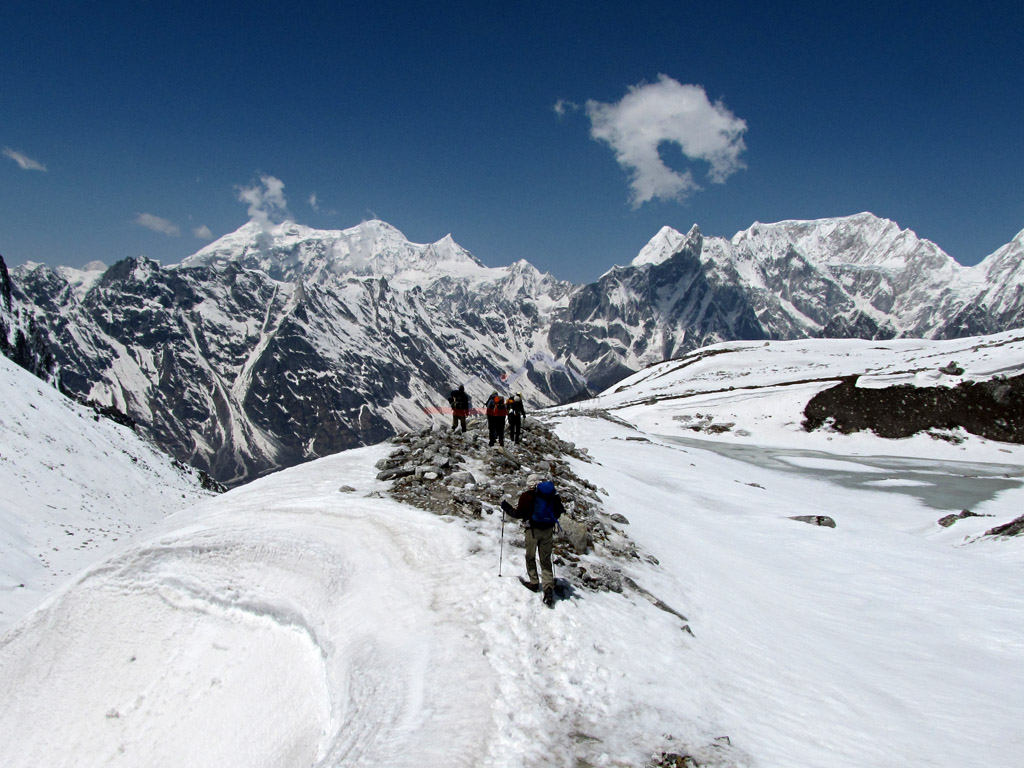
The Manaslu Circuit involves long days hiking at altitude with rough trail conditions in sections. Take care to build your fitness, walk at a gradual pace, and allow rest days to acclimatize. Here are some tips to help overcome the difficulties:
Acclimatization
- Trek slowly. Limit gains in sleeping elevation to 300-400m per day.
- Schedule 2 full rest days in Namrung and Samagaon villages to acclimatize.
- Stay hydrated and eat carbohydrate-rich meals.
- Avoid alcohol and smoking.
- Listen to your body and rest if feeling unwell.
Altitude Sickness
- Recognize signs of AMS (headache, nausea, fatigue). Descend immediately if severe.
- Bring prescription medication like Diamox to aid acclimatization.
- Trek with an agency that provides emergency oxygen if needed.
Trail Conditions
- The circuit has steep ascents and descents, especially around the Larkya La.
- Trails can be slippery or unstable. Use trekking poles for balance and stability.
- Start hiking early to avoid afternoon storms and freezing temperatures.
- Follow your guide’s pace and route for optimal safety.
- Wear proper hiking boots with sturdy ankles.
By taking precautions and working within your physical limits, the Manaslu Circuit trek is achievable for fit hikers who take time to acclimatize. Reap the rewards of completing one of Nepal’s greatest treks!
Permits and Costs for the Manaslu Circuit Trek
The Manaslu region was opened for trekking only in 1991 and still maintains strict permit regulations. You must trek with an official guide as independent trekking is not allowed. All trekkers require:
- Manaslu Conservation Area Project (MCAP) Permit – $70 per week
- Manaslu Restricted Area Permit – $100 per week
- Annapurna Conservation Area Permit – $20 (if finishing in Dharapani)
Expect to pay around $1500 to $2000 per person for a fully organized moderate standard Manaslu Circuit trek including guide, porters, accommodation, permits, and transportation. Budget more for better hotels or camping treks.
A barebones teahouse-only budget trek can be done for under $1000 excluding international flights. Carefully compare packages to see what is included. Most trek prices are all-inclusive except meals and tips.
Is the Manaslu Circuit Trek Worth It?
For moderate multi-day trekkers seeking incredible scenery, cultural encounters and fewer crowds, the Manaslu Circuit Trek absolutely lives up to its reputation as one of Nepal’s finest journeys.
The natural beauty of Mount Manaslu coupled with the raw adventure of crossing the Larkya La pass rewards you with stunning vistas and immense satisfaction of completing this ultimate circuit. Varied landscapes, Tibetan culture and charming villages add rich layers of interest.
While more logistical planning is required than for mainstream treks, the extra rewards of immersing yourself in this remote trans-Himalayan region make the Manaslu Circuit trek worth every step. Be prepared for basic accommodation and travel delays, but don’t let that deter you from discovering the magic of Manaslu!
Customize Trip
Select Country Afghanistan Albania Algeria Andorra Angola Anguilla Antigua & Barbuda Argentina Armenia Australia Austria Azerbaijan Bahamas Bahrain Bangladesh Barbados Belarus Belgium Belize Benin Bermuda Bhutan Bolivia Bosnia & Herzegovina Botswana Brazil Brunei Darussalam Bulgaria Burkina Faso Myanmar/Burma Burundi Cambodia Cameroon Canada Cape Verde Cayman Islands Central African Republic Chad Chile China Colombia Comoros Congo Costa Rica Croatia Cuba Cyprus Czech Republic Democratic Republic of the Congo Denmark Djibouti Dominican Republic Dominica Ecuador Egypt El Salvador Equatorial Guinea Eritrea Estonia Ethiopia Fiji Finland France French Guiana Gabon Gambia Georgia Germany Ghana Great Britain Greece Grenada Guadeloupe Guatemala Guinea Guinea-Bissau Guyana Haiti Honduras Hungary Iceland India Indonesia Iran Iraq Israel and the Occupied Territories Italy Ivory Coast (Cote d'Ivoire) Jamaica Japan Jordan Kazakhstan Kenya Kosovo Kuwait Kyrgyz Republic (Kyrgyzstan) Laos Latvia Lebanon Lesotho Liberia Libya Liechtenstein Lithuania Luxembourg Republic of Macedonia Madagascar Malawi Malaysia Maldives Mali Malta Martinique Mauritania Mauritius Mayotte Mexico Moldova, Republic of Monaco Mongolia Montenegro Montserrat Morocco Mozambique Namibia Nepal Netherlands New Zealand Nicaragua Niger Nigeria Korea, Democratic Republic of (North Korea) Norway Oman Pacific Islands Pakistan Panama Papua New Guinea Paraguay Peru Philippines Poland Portugal Puerto Rico Qatar Reunion Romania Russian Federation Rwanda Saint Kitts and Nevis Saint Lucia Saint Vincent's & Grenadines Samoa Sao Tome and Principe Saudi Arabia Senegal Serbia Seychelles Sierra Leone Singapore Slovak Republic (Slovakia) Slovenia Solomon Islands Somalia South Africa Korea, Republic of (South Korea) South Sudan Spain Sri Lanka Sudan Suriname Swaziland Sweden Switzerland Syria Tajikistan Tanzania Thailand Timor Leste Togo Trinidad & Tobago Tunisia Turkey Turkmenistan Turks & Caicos Islands Uganda Ukraine United Arab Emirates United States of America (USA) Uruguay Uzbekistan Venezuela Vietnam Virgin Islands (UK) Virgin Islands (US) Yemen Zambia Zimbabwe
Select Destination Nepal Tibet India Bhutan
[recaptcha]
- Nepal Trekking Guide
The Complete Guide to Manaslu Circuit Trek
- Updated on Mar 27, 2024
Introduction:
Imagine a trail less travelled, a hidden gem amongst the Himalayan titans, where the air is a mix of crisp mountain chill and the warmth of local Gurung hospitality. Welcome to the Manaslu Circuit Trek, a journey that takes you through the heart of Nepal's serene and unspoiled beauty. In this guide, we’ll walk you through everything you need to know about this breathtaking trek - from the best time to visit to the unique experiences it offers. Lace up your boots, adventurers, as we embark on a detailed exploration of the majestic Manaslu Circuit!
Table of Contents
Why manaslu circuit trek.
Nestled in the bosom of the eighth-highest mountain in the world, the Manaslu Circuit Trek is more than just a trail; it's a passage into the soul of the Himalayas. With its diverse terrain, cultural richness, and stunning vistas, this trek is an experience that resonates with the spirit of true adventurers.
Let’s Break It Down: The Trek at a Glance
● Trek Distance: Approximately 177 kilometres (110 miles)
● Height: Reaches an altitude of 5,106 meters (16,752 feet) at Larkya La Pass
● Best Time to Trek: Autumn (September to November) and Spring (March to May)
● Difficulty Level: Moderate to Challenging
● Permits Required: Yes ( Manaslu Conservation Area Permit, Annapurna Conservation Area Permit, and Restricted Area Permit)
Manaslu Circuit Trek: A Step-by-Step Journey
Preparing for the Trek
Before you set off, it’s essential to get your permits in order. The Manaslu Circuit Trek goes through restricted areas, so you’ll need a Restricted Area Permit, along with conservation area permits for both Manaslu and Annapurna.
The Trek Itinerary
Day 1-2: Arrival in Kathmandu and Trek Preparation
Day 3: Drive to Soti Khola
Day 4-5: Trek to Maccha Khola to Jagat
Day 6-9: Ascend to Deng, Namrung, and Lho
Day 10-11: Trek through Samagaon and Samdo
Day 12: Rest and Acclimatization Day
Day 13: Cross Larkya La Pass
Day 14-16: Descend to Dharapani and Drive Back to Kathmandu
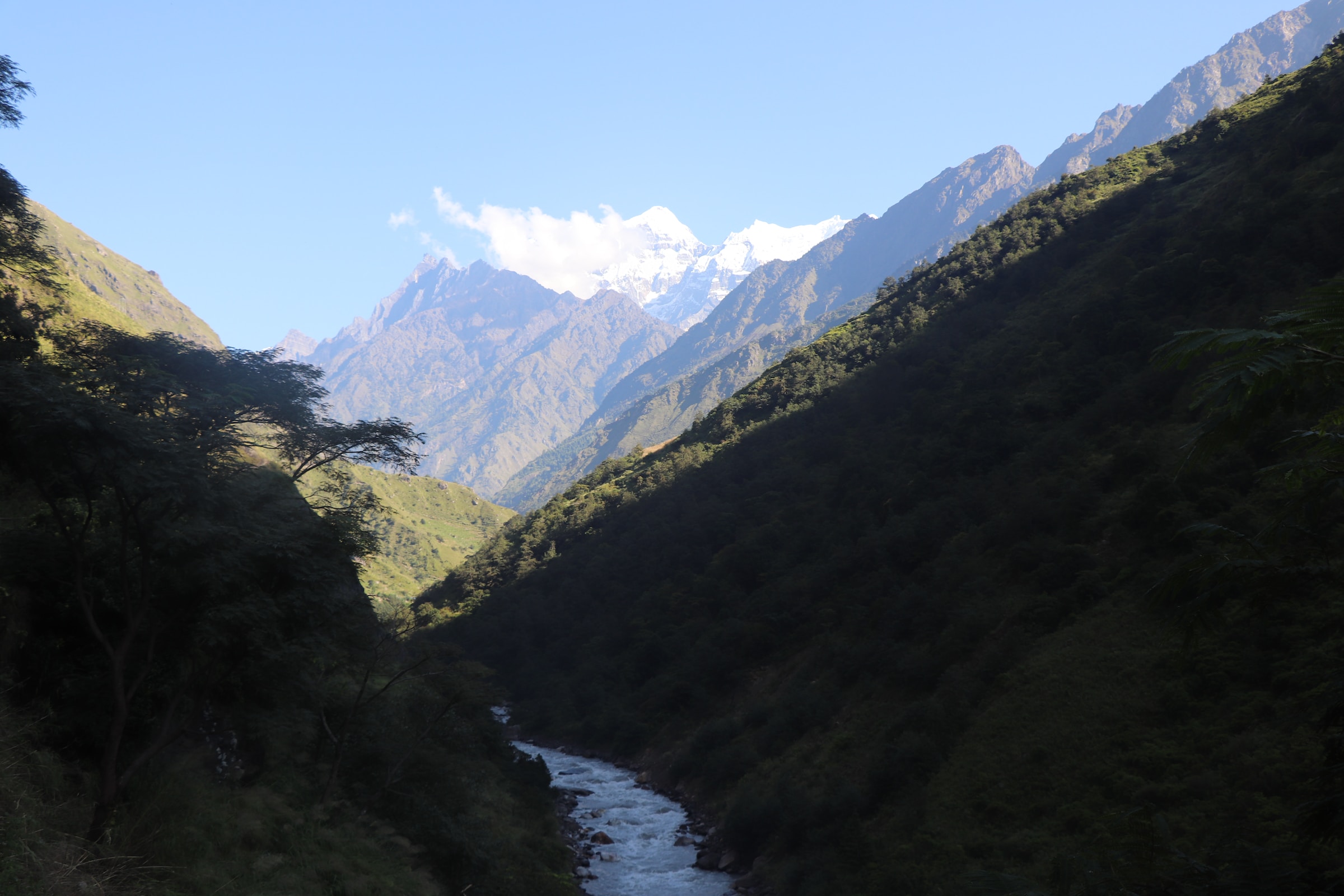
What to Expect Along the Way
● Natural Splendors: Cascading waterfalls, ancient glaciers, and the majestic peaks of Manaslu.
● Cultural Richness: Authentic encounters with the local culture, including monasteries, chortens, and mani walls.
● Diverse Wildlife: Spot exotic wildlife such as the Himalayan Thar and the elusive Snow Leopard.
The Best Time for Manaslu Circuit Trek
To capture the Manaslu Circuit in its prime, aim for the spring and autumn seasons. Spring welcomes you with blooming rhododendrons and clearer skies, while autumn boasts stable weather and excellent mountain visibility.
Tsum Valley: An Enchanting Detour
Consider the Tsum Valley detour for an even richer experience. It adds a few days to your itinerary but rewards you with serene trails and an in-depth look at Tibetan-influenced cultures.
Difficulty and Safety: How Tough Is the Trek
The trek is considered moderate to challenging, with some days requiring 6-8 hours of walking. Proper acclimatization is key to avoiding altitude sickness. As for safety, while no trek is without risks, the Manaslu Circuit is considered safer than the more daunting Annapurna Circuit. However, vigilance and a reliable guide are indispensable.
Altitude Matters: The Highs of the Trek
Reaching a breathtaking 5,106 meters at Larkya La Pass, altitude is a significant factor on this trek. Preparation and acclimatization days are built into the itinerary for your body to adjust to these impressive heights.
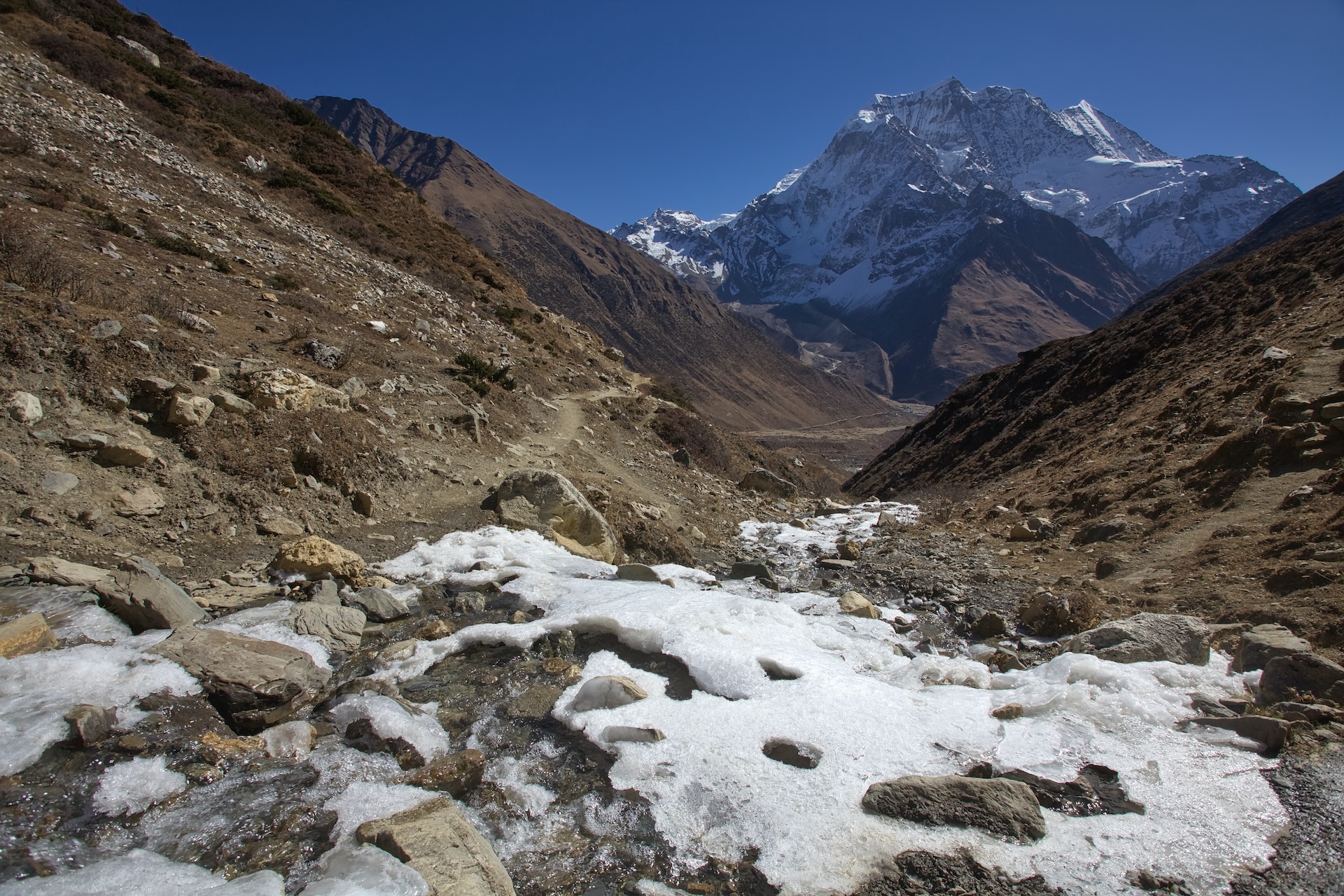
Highlights of the Manaslu Circuit Trek
● Scenic Drives: The journey begins with a scenic drive from Kathmandu to Soti Khola.
● Remote Villages: Explore the remote villages of Jagat, Deng, and Namrung.
● Larkya La Pass: Experience the exhilaration of crossing one of the highest passes in the world.
● Flora and Fauna: Discover the rich biodiversity of the Manaslu Conservation Area.
Navigating the Manaslu and Annapurna Circuit Map
While trekking, a detailed map is your best friend. It not only guides your path but also shows the intertwining routes of the Manaslu and Annapurna circuits, offering possibilities for extended adventures.

Securing Your Trekking Permit
To trek the Manaslu Circuit, you’ll need to secure your permits in advance. This includes the Restricted Area Permit and the conservation area permits, which can be arranged through a registered trekking agency.
Final Thoughts and Tips
● Pack Light, Pack Right: Bring layers and essential gear, but keep your pack as light as possible.
● Stay Hydrated: Drink plenty of water and avoid alcohol.
● Hire a Guide: A knowledgeable guide enhances safety and enriches the cultural experience.
● Respect the Environment: Leave no trace and respect the local customs.
The Manaslu Circuit Trek is a path that promises not only the thrill of the climb but also the tranquillity that comes with being one with nature. It's a journey that challenges the body, stimulates the mind, and nourishes the soul. So why wait? The mountains are calling, and Manaslu awaits. Let the adventure begin!
Ready to Embark on Your Adventure?
Let's plan your Manaslu Circuit Trek together! Contact us for more details, expert advice, and the support you need to make this dream trek a reality.

Send us your feedback
Recent posts.
- Makalu Base Camp Trek Difficulty
- Manaslu Circuit Trek Packing List
- Kathmandu And Pokhara Tours Package
- Buddhist Pilgrimage Tour in Nepal
- Nagarkot Sunrise Tour
- Annapurna Trekking Route Variations and Side trips
Related Posts
- Reasons to do Helicopter Tours in Nepal
- 10 Best Day Hike around Kathmandu Valley
- Unveiling the Mystique Rare Lake
- Nepal Travel Guides
- Places to See
- Things to Do
- Uncategorized
We use cookies to ensure that we give you the best experience on our website.
- Manaslu Circuit Trek Itinerary, Side Trips, Map, Permits & Difficulty
- travels tips
- 18/07/2019 14/01/2024
Most of Nepal’s Himalayan trekking trails generally reach over 5000 meters. Similarly, the Manaslu circuit trek is one trekking trail running above 5000 meters altitude. The Manaslu region starts with a height of 500 to 5160 meters, where you will explore the three valleys. So, we conclude these things in this Manaslu Circuit Trek Itinerary , including the best possible side trip.
The two valleys fall en route to Around Manaslu—namely Nupri Valley, Katung (Manaslu) Valley, and another Tsum Valley.
The killer mountain, Mount Manaslu, was successfully ascent in 1956 by a team of Japanese led by Gyalzen Norbu & Toshio Imanishi. Mount Manaslu is known as a Japanese mountain.
Indeed, we are talking about the Manaslu circuit trek , a complete guide for a better experience. Besides that, with the adorable Himalayas vistas, you can see many extraordinary peaks — the high and tropical plants and Buddhist shrines like monasteries, stupas, and mani walls at some point during the trek.
Table of contents
Manaslu circuit trek itinerary, manaslu trek via tsum valley and its side trips, permits & logistics for manaslu circuit trek, around manaslu lodge trek, tea houses versus fully camping trek, best time to visit the manaslu circuit trek:, manaslu circuit trek route map:, some other essentials addon, sustainability tips, some frequently asked questions, wrapping up, featured trip, manaslu circuit trek, tsum valley manaslu trek, tsum valley trek.
There are several itineraries for the Manaslu circuit. The 17-day Manaslu circuit trek itinerary (Kathmandu – Kathmandu) is per our recommendation for the Manaslu circuit trek, including two extra days for either acclimatization or side trips.
Expanding the trip to the Manaslu circuit via Tsum Valley requires at least seven days and a 24-day trek altogether.
Finally, we would not recommend shortening this recommended itinerary, as the time needed for walking distances and rest days is crucial for health and enjoyment.
Moreover, taking more days for the trek is, of course, highly recommended and worthwhile. It is a short Manaslu Circuit Trek itinerary, allowing you to know day by day.
- Kathmandu – Arughat (9h00 drive by local bus)
- Arughat – Lapubensi (7 hours walk)
- Lapubensi – Dovan (7 hours walk)
- Dovan – Philim (7 hours)
- Philim – Bihi Phedi (8 hours walk)
- Bihi Phedi – Lho Gaon (6 hours walk)
- Lho – Sama Gaon via Pungen Monastery (7 hours walk)
- Sama Gaon – Samdo via Birendra Lake (5 hours walk)
- Samdo – Larkya Phedi (Dharmashala) (4 hours walk.)
- Dharamshala – Larkya-La – Bhimthang (11 hours walk)
- Bhimthang – Dharapani (8 hours walk)
- Dharapani – Bensi Shahar (5 hours by jeep)
- Bensi Shahar – Kathmandu (5 hours by car)
Side trips: In Tsum Valley Trek Ganesh Himal Base Camp: base point Lungden Gompa
Side trips: In our Manaslu Circuit Trek itinerary
Kal Taal: base point Prok village Hilang Monastery: base point Lihi
Pungen monastery: base point Shyala or Sama Goan
Birendra Lake and MBC: base Point Sama Goan.
Tibet border – Rui La: base point Samdo
Want to go trekking?
Get help from our travel specialists for trip ideas that keep pace with your interests.
The Manaslu region is declared a restricted area; it requires permits for trekking issued by the immigration department. However, it must apply through the registered trekking agency; at least two trekkers are needed in a group. Please visit the immigration department’s website for further information regarding the revised visa and trekking permit fees.
The Manaslu permit fee for the Autumn Season (Sept – Nov)
$ 100 per week (Additional $15 per day beyond a week).
The Manaslu permit fee for Winter, Spring, and Rainy seasons. (Dec – Aug)
$75 per week (Additional $10 per day beyond a week)
Th e Tsum Valley permit fee for the autumn season (September- November) is $40 per person per week and $10 per day beyond a week.
The Tsum Valley Permit fee for winter, spring, and summer seasons (December – August) is $30 per person/week, USD 7 per person/day (beyond a week)
Conservation Area fees:
MCAP (Manaslu Conservation Area Project): 3000 NRS Convertible 28 U.S Dollars.
ACAP (Annapurna Conservation Area Project): 3000 NRS convertible 28 U.S Dollars.
According to the traveling norms, one can do both types of organization per the traveler’s desire and hubbies. Recently, the Manaslu Trek can be done as a Tea House (Lodge) Trek. So, it refers to the Manaslu Lodge Trek. The tea houses are not as luxurious as you experienced in the Annapurna and Everest regions.
Now, it does not require having their accommodation facilities, i.e., a Tent (for camping). So, there is no need to carry catering services like kitchen utensils, food, and the number of porters. There is an increasing number of lodges in Tsum Valley Trek , too.
But it is insufficient for travelers in places like Chumling and Nile. Nevertheless, it is still possible to spend a night in the Homestay.
Traveling with many trekkers requires organizing a camping trek and being accompanied by many Nepalese staff. Unfortunately, Mu Gompa (the last monastery of the Tsum Valley) has no proper lodge facilities.
It is further making a camping trek that leads up to the Tibet border and barren land of the Yak pasture and Lungden Gompa. There is still a need to sleep on the monastery’s premises with basic accommodation.
- A trek’s logistics are straightforward: Traveling comfortably, arranging the travel light, and simply taking some necessary items. On the other hand, this is an economy for travelers instead of catering services and camping equipment through the trekking agency.
- Support local economy: Consumption of accommodation and eating services, which means paying directly to them, also supports the local economy.
- Better interaction: Closely communicate with locals who exchange conversations and know their lifestyle, culture, and tradition better, gaining a better experience.
But we cannot do without compromising.
A compromise on food quality and quantity – while some trekkers prefer to enjoy local food (mainly Daal Bhat). However, some trekkers were not satisfied with the menu for a long journey.
A compromise on accommodation – some villages along the Tsum Valley and Manaslu circuit still have basic lodges. And the need to share a sleeping basis with others, being the increasing number of travelers in the Manaslu region .
Generally, the best time to visit the Manaslu Trek is autumn (October – November) and spring (March – April). There is relatively stable weather in autumn, and snow over 5,000 meters will be found.
The lush green forest and rhododendrons will blossom during the spring season. But Manaslu trekking can be done all year round.
We provide an updated Manaslu Circuit Trek Map for each group, which helps find valuable information while on a trek. The Manaslu Circuit Trek map enables you to navigate the routes, such as altitudes, walk duration, etc. Therefore, we offer a variable Manaslu circuit trek itinerary per your needs.
Manaslu Trek Difficulty
Mount Manaslu, the spirit of the Himalayas, is the 8th highest mountain on earth. It is one of the longer trekking trails in Nepal compared to other trekking trails. The trek begins from sub-tropical to tundra climatic zones, traversing six different climatic zones.
Likewise, it spreads from 715 to 5218 meters and goes through the Buddi Gandaki Valley, which encircles Mount Manaslu. It is challenging due to its gradual altitude, walking into thin air, and covering 177 kilometers.
The Manaslu Trek is ideal for people with excellent physical condition and keen to walk at high altitudes. Note that trekking in Manaslu is moderate to strenuous. Nevertheless, old-aged people can also complete this trek if they properly acclimate.
Telecommunication: Most villages are expanding telecommunication services, except Deng and Ghap. However, you can find a satellite or cellular-based phone that can connect with the world on a payable basis. In addition, Internet services are available in Philim, Namrung, Lho, and Sama Gaon.
Electricity: Due to the micro-hydro project, 220-volt electricity is available in many villages. Likewise, light and power sockets are available for charging batteries on a payable basis. Villages without electricity generally use solar panels for light and battery charging.
As a sustainable tourism operator, Himalayan Exploration Travel would like to share some sustainable tips while on a trek. Whenever you spend time outdoors, you attempt to have the most negligible effect on nature, and the values of “leaving no trace” assist in preserving the environment you enjoy so much. However, walking through isolated Himalayan settlements makes it more complicated.
In terms of sustainability, try to order what locals eat. Please do not buy bottled water or snacks. You may get boiled water from every lodge. If you are not 100% sure about its purity, please use water-purifying pills. We highly recommend you have local food rather than imported ones.
For example, you may eat Daal Bhat (Nepali cuisine) in the lower elevation and order a variety of potatoes at a higher altitude. Please learn about our sustainability policy here.
Get to know about the region before you go. Read the book ‘The Snow Leopard” by Peter Matthiessen and investigate anthropologist Geoff Childs’ research on communities in this area.
We offer only $1350 per person per published service on the website. However, prices may differ widely based on the benefits, from $1350 to $2350 per person.
Yes, it requires a Restricted Area Permit (RAP), ACAP (Annapurna Conservation Area Project), and MCAP (Manaslu Conservation Area Project). We have mentioned the Manaslu Circuit Trek Cost in detail as well.
The autumn (September – November) and spring (March to May) seasons are ideal for this trek, even though this trek can also be completed all year round.
It would help if you were aware of it because the highest point of this trek is Larkya – La Pass at 5218 meters. It may cause altitude sickness if you are trying to go rapidly. However, you may prevent it by taking proper acclimatization.
Some essential pieces of trekking gear are required for the Manaslu trek. It reveals you to a series of high altitudes where the temperatures vary tremendously between night and day. The route is long and moderately strenuous. We highly recommend seeing our essential information section for details.
The Manaslu Circuit Trek is moderate to strenuous and crosses over Larkya La Pass at 5218 meters. It requires walking 5 to 9 hours in a single day. But, it is still possible for first-time trekkers. It would help if you also were physically and mentally fit enough.
Plan a Trip to Nepal
Get in Touch with a local travel specialist who can help organize your trip.
Manaslu Circuit Trek is the best alternative to other popular trekking destinations, such as Everest Base Camp and Annapurna Circuit Trek. Manaslu, located in the remote Himalayas area, is a mecca for thrill-seekers and enthusiastic trekkers.
This is one of Nepal’s most strenuous treks, involving tremendous commitment and physical fitness.
Being a restricted area, the solo trekker is not allowed to trek alone, but it is still possible to get permits based on sharing with others. You can do Manaslu Circuit Trek on Solo in this way. Don’t hesitate to contact us to arrange all the essential documents for a trek.
In conclusion, the Manaslu Circuit Trek offers a remarkable adventure for those seeking breathtaking views and authentic cultural experiences. Throughout this guide, we have shared valuable information about the trek, including the best possible side trip to Tsum Valley.
Whether you’re a seasoned trekker or looking to embark on your first Himalayan journey, Manaslu Circuit Trek has something to offer everyone. So, what are you waiting for? Start planning your next adventure with this complete guide to Manaslu Trek . And don’t forget to write what you think about this incredible trek in the comments! Happy trekking! 😊
About Author
Leave a reply.
You must be logged in to post a comment.

Experience Nepal's Best-Kept Secret: Manaslu Circuit Trek
From the serene tranquility of rhododendron-filled forests to the heart-pounding challenge of crossing the Larke Pass at 5106 meters, Manaslu Circuit Trek paints an unforgettable picture of contrasts.
Trek Overview
The journey is not merely about conquering trails; it's about immersing yourself in the rhythm of the Himalayas, feeling the pulse of life in remote settlements, and sharing stories with fellow trekkers from around the globe.
Manaslu Circuit Trek combines breathtaking scenery, close contact with locals, and an understanding of their rich culture – everything you could expect from a traditional trek in Nepal.
Manaslu Circuit Trek is one of the top treks in Nepal. In contrast to other teahouse treks which are widely known and frequently visited by tourists, Manaslu Circuit Trek remains distant from mainstream attention and is not as commonly explored, despite experiencing a recent increase in popularity.
Manaslu Circuit Trek offers a more secluded and less crowded experience compared to the more established and widely recognized teahouse treks in Nepal.
The trek is a journey where you will walk around Manaslu, which is the eighth-highest mountain in the world reaching a height of 8,163 meters above sea level.

You will be experiencing a variety of cultural influences, people, and their way of life. When you get to the higher parts of the Manaslu area, the people there have a unique way of life. The people there follow Tibetan customs and beliefs, which are connected to Buddhism .
Along the way, you will be treated to amazing views. The scenery will be stunning and awe-inspiring with huge, towering mountains all around you.

Manaslu Circuit Trek is a harmonious blend of nature’s beauty and cultural enchantment. Manaslu journey winds its way through a network of pathways that are gracefully shaded by the towering presence of the Manaslu range.
But this journey is not just about cultural immersion; it is also a thrilling adventure that unfolds in the heart of the Himalayas. As you will be ascending and descending through varying terrains, from lush forests to high alpine meadows, you will experience the full spectrum of nature’s beauty.
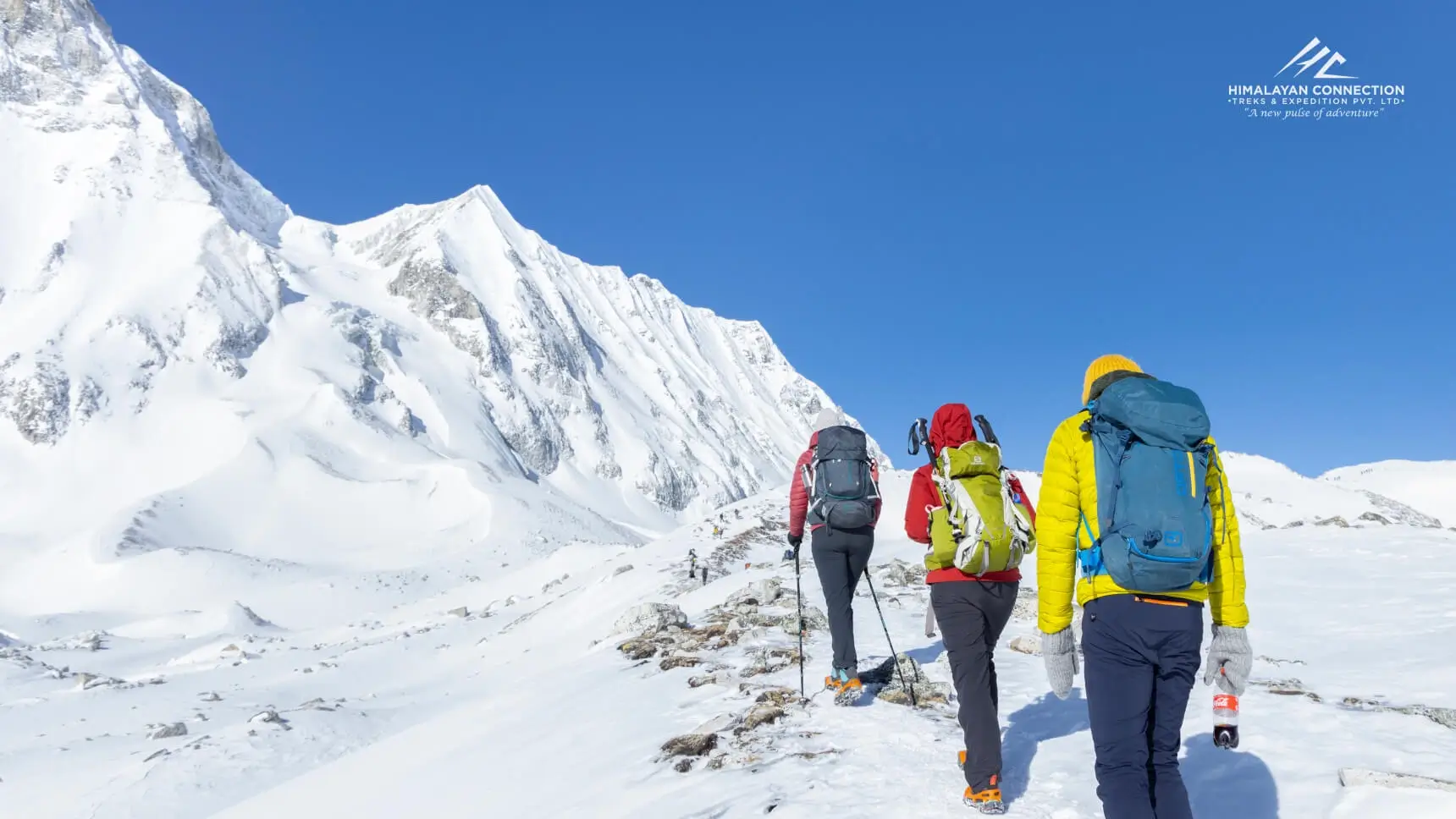
You will be crossing the Larkya La Pass, located at an elevation of 5106 meters, it is one of the most challenging parts throughout the Manaslu Circuit Trek. Manaslu area is a beautiful location with a gorgeous landscape and various terrain.
Throughout the trek, you will find a variety of plants and animals, rivers, waterfalls, gorges, and other natural features. In addition, the trek offers untouched nature, biological richness, traditional culture, unexplored pathways, a sweeping panorama, and unmatched splendor in nature.

Trekking through the wild Manaslu region can be an exhilarating experience. Manaslu Circuit Trek has a lot to offer for enthusiastic and daring trekkers. It is a once-in-a-lifetime opportunity to explore the peaceful trekking trails, unspoiled scenic wonders, and its ecosystem.
Manaslu Circuit Trek’s unique and stunning scenery will lead to a few of the most remote communities, several magnificent waterfalls, amazing rivers, and alluring views of the ethereal mountain ranges and lush green countryside.
Otis from Wisconsin said this about the Manaslu Circuit Trek with us:
I have trekked two times with Sujan as our guide, once in 2016 to Annapurna Base Camp and again in 2019 when we did a 30-day trek in the Manaslu and Annapurna regions, including the Tsum Valley He is a fabulous guide: reliable, knowledgeable, flexible, very personable, and has an excellent sense of humor. He always looks out for his clients to ensure they enjoy their journeys, and he has had experience guiding in emergency situations where his skills and experience saved lives. This young man is someone I would highly recommend as a trekking guide.
Gazwell said this about the Manaslu Circuit Trek with us:
I have trekked in Nepal three times, the last two with Sujan as our guide. He greatly enhanced our overall experience with his knowledge, attentiveness, energy, resourcefulness and sense of humour. We consider him a friend and still keep in touch with him. In 2016, a group of us trekked to Annapurna Base Camp, after which four of our party trekked the western leg of the Annapurna Circuit. When one of our party had to return to Canada part way through the trek, Sujan was instrumental in ensuring he got back to Kathmandu quickly and safely while the rest of us finished our trek. In 2019, we did a 30-day trek in the Tsum Valley and Manaslu and Annapurna Circuits. Again, he helped us make the most of a challenging but incredibly rewarding journey. And again, when one of our party had to leave early for health reasons, Sujan's concern and diligence ensured that our friend returned to Kathmandu quickly and safely while we carried on. I confidently recommend Sujan to organize and lead a memorable experience in Nepal.
Nele has to say this about the Manaslu Circuit Trek with us:
We went on the Manaslu Circuit Trek in April 2023. Before the Trip, Sujan was always available via WhatsApp and answered our questions quickly. He also organized our trekking permits beforehand so we did not have to stand in line anywhere. Our guide had to cancel due to Family issues the night before we were supposed to leave, but Sujan stepped in immediately. Well organized transfer to and from our hike with a private Jeep. He also organized a very nice porter. Additionally, as a professional photographer, Sujan took his very good camera on the trip, so we will even get very nice pictures from the trekking. Thanks a lot for everything Sujan, especially for spontaneously stepping in!
When is the best time for the Manaslu Circuit Trek?
The best time to trek the Manaslu Circuit is from March to May (Spring Seasons) and from September to November (Autumn Season).
Since the weather is stable over this time, trekkers can fully appreciate every spectacular feature of the expedition. Along with the pleasant weather, one may see the stunning scenery of Mt. Manaslu and other spectacular natural settings.

Manaslu Circuit Trek in Spring Season
Spring brings new beginnings, as blossoms start to bloom, offering a cool and pleasant atmosphere filled with nature’s fresh perfume. Mornings begin chilly but gradually warm up during the day, making it an exciting time to explore.
The beauty of the routes and the breathtaking mountain scenery are unparalleled, despite the chilly weather. This is the perfect moment to travel and experience everything at its finest.
Lower elevations remain comfortably cool, while higher altitudes can be quite cold. Everywhere you look, vibrant greenery dominates, from flower buds ready to burst open to the lush pigments of tree leaves.
Spring season is prime time for enjoying mesmerizing mountain views and exploring lesser-known hiking trails. It’s like a glimpse of paradise.
Nature truly flourishes with vibrant blooms and majestic mountain vistas during this season. The spring Manaslu Circuit Trek is particularly special, allowing you to witness mountains glistening under the clear blue sky.
Manaslu Circuit Trek in Spring Season offers an enchanting experience and all the elements of a class adventure.

Manaslu Circuit Trek in Autumn Season
Autumn Season is undoubtedly the perfect time to plan and embark on the Manaslu Circuit journey. The sky is clear and serene, while the scenery remains as breathtaking as ever during Autumn.
When it comes to experiencing the Manaslu Circuit Trek, autumn is the ultimate choice due to the ideal weather conditions for the adventure. Specifically, the months of September, October, and November mark the autumn season.
Autumn arrives after the rainy season, bringing its own beauty to the landscape. It’s a splendid time for outdoor activities, and the Manaslu Circuit Trek truly shines during the season. The allure of this trek lies in its captivating beauty and tranquil atmosphere.
As you embark on the journey, you will be greeted by panoramic views of snow-capped peaks, rolling hills, and picturesque lowlands.
The trail takes you through scented, pristine forests, creating a delightful walking experience. When you reach the highest point of the Manaslu Circuit climb, you will be treated to a spectacular display of fall foliage.
This vantage point also offers unobstructed views of neighboring hills, majestic mountains, and lush valleys. Along with the stunning scenery, the upcoming autumn festivities and activities promise to keep you thoroughly entertained.
Embarking on the Manaslu Circuit Trek in September provides a unique opportunity to immerse yourself in the rich culture and distinct way of life of the Buddhist people.

Manaslu Circuit Trek Difficulty
Manaslu Circuit Trek might pose challenges for beginners who lack physical stamina and determination. Various issues such as harsh weather and difficulties in ascending to higher altitudes could arise during the journey.
Thus, it’s crucial to adhere to proper safety procedures before embarking on the Manaslu Circuit Trek.
Keep in mind that the Manaslu Circuit Trek and its associated itineraries don’t include luxurious accommodation. Given that this region is one of Nepal’s most remote areas, you’ll find basic comforts like teahouses as your lodging options.
While choices might be limited, once you begin your trek, these accommodations might become less of a concern.
Dealing with altitude sickness is a significant challenge during the Manaslu Circuit Trek. The risk of encountering altitude sickness, as well as conditions like HAPE and HACE, significantly increases at altitudes above 3500 meters.
Additionally, you’ll need to cross the Larkya La Pass , which sits at 5106 meters. Therefore, it’s of utmost importance to take thorough safety precautions.
Permit Required for Manaslu Circuit Trek
Embarking on the breathtaking and exhilarating Manaslu Circuit Trek comes with certain essential requirements, and obtaining permits is a crucial step.
Exploring the Manaslu region necessitates specific permits to ensure a seamless journey. The permits you’ll need are as follows:
- Manaslu Restricted Area Permit (MRAP)
- Manaslu Conservation Area Permit (MCAP)
- Annapurna Conservation Area Permit (ACAP)
- Trekkers’ Information Management System (TIMS) Card
To acquire these permits, there are specific steps you must follow. Once you have successfully obtained these permits, you’ll be all set to embark on the pristine Manaslu Circuit Trek, creating unforgettable memories along the way.
It’s important to note that these permits not only facilitate your adventure but also contribute to the preservation of the natural beauty and cultural heritage of the region. These measures ensure that both trekkers and the environment are well taken care of during this remarkable journey.
What should I pack for Manaslu Circuit Trek?
There are things to take and things to leave once you begin backpacking for the Manaslu Circuit Trek. Himalayan Connections has curated a list for you to learn more about Packing List for Manaslu Circuit Trek .

Key Highlights
Our international advisors, trek itinerary, day 01: arrival in kathmandu (1400m).
Himalayan Connections representatives will be at the Tribhuwan International Airport (TIA) to welcome you to the Beautiful Himalayan country of Nepal. They will guide you to the hotel.
Day 02: Kathmandu Valley Sightseeing & Trek Preparation
We have Kathmandu Sightseeing Program this day, where we visit Swoyambhunath Stupa (Monkey Temple), Boudhanath Stupa, Pashupatinath Temple, and Kathmandu Durbar Square.
We will meet your Trekking Guide in the evening and discuss the Manaslu Circuit Trek one more time before you leave for your dream trip!

Day 03: Drive to Machha Khola (930m) 7- 8 hrs. Jeep Ride
Camp: Machha Khola
Altitude: 930 m./3050ft.
Time: 8 – 9 hrs. drive
Meals: Breakfast, Lunch & Dinner
Accommodation: Tea House
On this day, we will leave Kathmandu for our adventure trip to Manaslu Circuit Trek. We will drive from Kathmandu to Machha Khola (930m). It will take about 6-7 hours to reach the beautiful heaven Machha Khola.
During the jeep ride, you will be able to experience the local lifestyle, beautiful landscapes, rivers, mountains, forests, cultivating fields, waterfalls, deep valleys, and more.
After a long ride, you will reach Machha Khola which is located beside the beautiful Budhi Gandaki River.
Day 04: Trek to Jagat (1410m) 5-6 hrs. walk
Camp: Jagat
Altitude: 1410 m./4625ft
Time: 5 – 6 hrs. walk
After breakfast, we will leave Machha Khola behind and we begin our trekking from here.
After a few minutes, we cross a small stream and get to the jeep trails which are currently under construction. Walking beside the rivers will make you feel amazing with the cool breeze.
The sound of rivers, deep rocky valleys, greeneries, friendly local people, and small local villages will make you feel ecstatic.
After walking for a couple of hours, we will reach Tatopani (natural hot spring).
Sometimes, you will see people making local wine just beside your trails, and you can smell the flavor of local wine free of charge! They might even offer you a taste of the flavor.
Around halfway, we will stop for lunch at Dobhan. After we cross Dobhan, we will come across a big landslide area which recently happened. We have to cross the landslide area, so we need to be a bit careful on that part of the trek.
Our Experience
On our last trip to Manaslu Circuit Trek, we were crossing that landslide when it was raining heavily, and the landslide was also huge, and the way was too narrow with a big hill above and a deep river below.
We were walking in a group in the middle of the landslide. As the road was narrow, we were walking on our hands and knees.
We came across a group of women who were crossing directly towards us, and they were bamboo baskets (doko) over their heads. They were running across the landslide which was a very surprising sight.
After crossing the landslide, we can see the first cantilever bridge in Nepal from a small village. The bridge was damaged by the flood in the Budhi Gandaki River a couple of years ago.
After walking along the banks of Budhi Gandhi River, we will reach Jagat, that’s where we will be staying that day.
Day 05: Trek to Deng (1800m) 6-7 hrs. walk
Altitude: 1800 m / 5904 ft
Time: 6 – 7 hours walk
Meals: Breakfast, Lunch & Dinner
After breakfast, we set out from Jagat, ready for another day of beautiful hiking. We will follow the newly constructed jeep road for a couple of hours, eventually crossing the Budhi Gandaki River.
Our path will then lead us uphill until we reach the charming Philim village. Here, a checkpoint for the Manaslu Conservation Area and a Restricted Area entrance permit awaits us.
Once our documents are checked, we will resume our journey towards our destination. About 30 to 40 minutes of walking will bring us to Ekle Bhatti, where we will pause for a satisfying lunch.
We will continue from there to stumble upon a stunning waterfall and take a delightful break to relish its beauty.
With renewed spirits, we will move forward. We will encounter a fork in the road – opting for the left path will lead us to Manaslu Circuit. We will follow it and find a bridge. We will require patience to cross it, because occasionally there will be herds of donkeys will be waiting their turn to cross the bridge.
After several hours of walking through serene woodland, we will arrive at Dong, where we will be staying the night.
Day 06: Trek to Namrung (2660m) 6-7 hrs. walk
Camp: Namrung
Altitude: 2660 m. / 8725 ft
Time: 6 – 7 hrs. walk
After breakfast we will embark on another day of hiking, making our way towards Namrung. Throughout this day, we will pass through numerous quaint villages, and the villagers will be welcoming us with warmth and hospitality.
The trails present us with a series of gentle inclines and decline to navigate. Amidst the terrain, we will encounter and cross several charming villages, which will lead us to Ghap Village (2160m), where we will pause for a satisfying lunch.
We will continue our trek towards captivating Namrung village after lunch. Our path will meander through lush rhododendron forests, creating an enchating atmosphere.
This part of the trek offers us the opportunity to spot various wild animals, colorful birds, and the refreshing sight of crystal-clear streams.
Walking amidst the tranquility of the jungle never fails to be an awe-inspiring experience.
Day 07: Trek to Syala Gaun (3520m) 5-6 hrs walk
Camp: Syala Gaon
Altitude: 3530 m. / 11446 ft.
Accommodation: Tea House
Welcome to another day of remarkable hiking and exploration. As we set out, we'll journey through captivating old villages, traverse cultivated fields, and encounter the intriguing presence of Mani walls and rocky hills that add a unique character to our path.
One of the highlights of this day is the first glimpse of the majestic Manaslu mountain (8163m) as we reach Sipgaon, near Lho Gaon. The sight of this towering peak is sure to leave you awe-struck.
We'll pause for a delightful lunch break at Lho Gaon, a truly enchanting spot. Enjoy your meal while taking in the breathtaking views of Mt. Manaslu from the dining hall, adding an extra layer of flavor to your experience.
After our satisfying lunch, we will bid farewell to the charm of Lho Gaon and continue onwards to Syala Gaon. Atop a small hill in Lho Gaon, you'll find a beautiful monastery, a serene testament to the area's spirituality. The region is primarily inhabited by the Gurung ethnicity.
The journey from Lho to Syala Gaon, a roughly 2-hour walk through the jungle, brings us to the bottom of the mountains, offering a picturesque setting. This is the heart of the Manaslu Circuit trek, where the closest and most magnificent view of Mt. Manaslu awaits you.
While it's not typical for tour agencies to arrange an overnight stay at Syala Gaon, we personally recommend a night's stay here due to its exceptional beauty and the unparalleled view of Mt. Manaslu.
The distance from Syala Gaon to Sama Gaon is merely an hour, making it a convenient transition for the next leg of our adventure.
Prepare to be captivated by the natural splendor and mountain vistas that define this leg of our journey. Get ready for an unforgettable experience that will leave you in awe of the wonders of the Manaslu Circuit.
Day 08: Acclimatize Day: Hiking To Pungen Gompa (4742m) & Trek to Samagaon (3530m)
Camp: Samagaon
Altitude: Pungen Gompa 4742 m. / 15554 ft.
Time: 7-8 hrs.
Today marks a truly special highlight of the Manaslu Circuit Trek, offering the best and closest view of the magnificent Mt. Manaslu. Set your alarm early, for witnessing the sunrise over this colossal peak is a sight of unparalleled beauty and tranquility.
If you're a photographer, seize this golden opportunity to capture the breathtaking moments in the frame of your camera. The interplay of light and shadow during sunrise creates a captivating spectacle that's sure to be a cherished memory.
(Note: As a trekking guide and photographer, I had the privilege of experiencing this mesmerizing moment with a group of clients from Germany. During this trek, I stayed awake through the night, eager to capture the perfect shot of Mt. Manaslu as the weather cleared. The excitement was palpable, and my camera became my trusty companion, capturing the mountain's majestic beauty as the dawn unfolded. - Sujan Pandey)
After relishing the beauty of the morning, we gather for a satisfying breakfast and prepare for an enriching acclimatization hike to Pungen Gompa. The journey to Pungen Gompa is a wonderful experience that takes approximately 4 hours.
The initial 2-hour stretch involves an uphill ascent, followed by a mix of mild inclines and flat terrain. This captivating hike offers stunning views of the surrounding mountains, with Mt. Manaslu standing even closer and more splendid.
Pungen Gompa, a sacred spot important to Buddhists, rests at the base of these majestic peaks and carries a history spanning a century.
Having soaked in the spiritual ambiance of Pungen Gompa, we retrace our steps back to Samagaon. Our trail leads us through a blend of flat paths, downhill stretches, and more level ground until we reach the embrace of Samagaon.
This ancient village, the largest on our trekking route, is surrounded by towering mountains on all sides. It's also the final settlement for those embarking on the ascent of Mt. Manaslu. As we enter the village, a mandatory checkpoint requires us to register our permit card.
Today's journey offers a blend of natural wonders, spiritual insights, and captivating views that will etch themselves into your memory.
Get ready to immerse yourself in the awe-inspiring beauty of the Himalayas and the vibrant culture that thrives among them.
Day 09: Trek to Saamdo (3690m) 3-4 hrs. walk
Camp: Samdo
Altitude: 3690 m. / 12103 ft.
Time: 4 – 5 hrs. walk
Accommodation: Tea house
Prepare for a day of relaxed yet enriching trekking. Following a hearty breakfast, we set out on a journey to Saamdo village. The trail stretches for about 3-4 hours, offering a manageable and enjoyable hike.
As we make our way, keep an eye out for the remarkable glacial lake known as Birendra Taal. A short 20-minute detour from the road to Saamdo village will lead you to this serene gem.
If you're interested, it's a perfect opportunity to spend some delightful moments by the lake.
During the hike to Saamdo village, you'll be treated to the charming sight of herds of donkeys and goats grazing peacefully in the lush pastures beneath the towering mountains. This natural scene adds an extra layer of enjoyment to our journey.
After a leisurely few hour of walking, we arrive at the picturesque village of Saamdo. This village holds a special distinction as the final settlement on the Manaslu trek.
Upon our arrival, a delicious lunch awaits us in the welcoming embrace of Saamdo Village.
Post-lunch, consider joining us for a short acclimatization hike to the nearby hill. From this vantage point, a stunning panorama unfolds before you. Take in the view of the charming Saamdo village, the meandering river valley, and the majestic mountains that encircle the area.
This moment offers an opportunity to appreciate the beauty of the landscape and acclimatize to the high altitude.
Today's journey strikes a balance between leisure and discovery, providing a chance to soak in the scenic wonders of the region while preparing for the exciting days that lie ahead.
Day 10: Trek to Dharmasala (4470m) 4-5 hrs. walk
Camp: Dharmasala (Last camp before pass)
Altitude: 4470 m. / 14662 ft.
Time : 3 – 4 hrs. walk
Meals : Breakfast, Lunch & Dinner
As the sun graces the morning sky, we set off for Dharmasala after a hearty breakfast. This stop marks a pivotal point in our journey, serving as our lodging for the night just before reaching the renowned Larke Pass.
Keep in mind that Dharmasala is home to a limited number of teahouses, a mere three in total. This leads to a bustling atmosphere during the peak trekking season, underscoring its popularity among trekkers.
Despite the relatively short distance, the altitude presents its own set of challenges as we traverse the path. The thin air might slow our pace, but the rewards are worth every step.
The initial half-hour takes us on a horizontal path, guiding us to Larke Bazar. Nestled along the way, the sight of mongoose herds grazing in the fields adds an extra layer of joy to our journey.
Upon reaching Larke Bazar, we encounter a solitary teahouse amidst the serene landscape. Here, the trail diverges into two paths—one leading to the Tibetan border and the other guiding us toward Dharmasala.
We ascend towards Dharmasala, our destination for the day. The altitude may present challenges, but the majestic mountains that grace the horizon imbue the journey with an exhilarating spirit.
Gazing across the fields, you might even spot the graceful presence of blue sheep, adding to the scene's natural allure.
After a few hours of uphill trekking, the splendid panorama of Dharmasala comes into view, a rewarding sight that promises rest and shelter. As we approach our destination, our anticipation grows for the coming day's adventure: the crossing of Larke Pass.
This crucial juncture marks the night before our passage, and due to the limited number of teahouses—only three, to be exact—sometimes we must rely on tents for our accommodation.
As we prepare for a good night's rest, we set our sights on an early departure the following morning. Larke Pass, with its long and windy terrain, demands an early start to ensure a safe and successful crossing beyond 9-10 a.m.
The journey is one of both physical and mental strength, a testament to our determination and the breathtaking landscape that surrounds us.

Day 11: Larke Pass (5106m) and Bhimthang (3720m) 8-9 hrs. walk
Camp: Bimthang
Altitude: Larkya la pass ( 5106 m / 16748ft ) / Bimthang 3720 m. / 12202 ft
Time: 8 – 9 hrs. walk
Meals: Breakfast, Lunch & Dinner
Today stands as the pinnacle of the Manaslu Circuit trek—a day of immense significance as we ascend to the highest point of our journey, standing tall at an elevation of 5106 meters. This achievement, the dream of countless trekkers, signifies a monumental accomplishment.
However, it's important to brace for a long, chilly, and challenging day, prompting an early morning departure.
In the pre-dawn darkness, we set out on a path that stretches before us. As the day breaks, headlights illuminate our way, akin to stars twinkling in the night sky.
These small lights collectively create a celestial panorama along the trail—a unique sight that accompanies us during the early hours of our journey.
After hours of determined trekking, a welcome teashop emerges on the horizon. This respite offers a chance to recharge and marvel at the line of trekkers steadily progressing, framed by the glistening mountains that encircle us.
It's an experience that infuses the journey with an added layer of beauty and camaraderie.
Throughout the ascent, the conversations of fellow trekkers become a delightful backdrop—a chorus of foreign voices sharing their admiration for Nepal and its awe-inspiring mountains.
Their descriptions of the landscape add a special dimension to the journey, connecting cultures and creating lasting memories.
After 3-4 hours of unrelenting effort, we finally arrive at Larke Pass (5106m). Here, we pause to celebrate our achievement and capture the moment with photographs that will forever remind us of this monumental feat.
As we bask in the glory of our accomplishment, we commence our descent toward Bhimthang.
The path ahead is a descent, leading us first to Tanbuche Kharka (3930m), where we halt for a well-deserved lunch. Following this rejuvenating break, we will resume our journey toward Bhimthang. The landscape unfolds before us, revealing the majestic expanse of the Manaslu mountain range from a new vantage point.
With each step, the arduous journey draws us closer to the welcoming embrace of Bhimthang. After overcoming the challenges of the day, the village emerges in view—an oasis of rest and reprieve.
Here, a deep and fulfilling sleep awaits, a just reward for our determination and the unforgettable experiences that defined this remarkable day.
Day 12: Trek to Dharapani (1860m) 7-8 hrs. walk
Camp: Dharapani
Altitude: 1860 m. / 6101 ft
Time: 7 – 8 hrs. drive
A delightful shift in scenery welcomes us today after days of traversing the dry and lofty Himalayan desert region. Our path now leads us through enchanting green jungles, where each breath of air feels invigoratingly fresh.
As we immerse ourselves in this lush landscape, a vibrant symphony of elements unfolds—the rich rhododendron forests, the melodious calls of birds, the commanding presence of mountains, the meandering rivers, and the picturesque settlements of the local villagers.
This transformation imbues today's journey with a sense of rejuvenation and wonder.
The majority of today's route guides us downhill, allowing us to relish the effortless descent. Along this path, we find ourselves embraced by the captivating beauty of the Gho village—a perfect spot for a midday break and a fulfilling lunch.
Having re-energized, we will continue our journey, moving through a string of picturesque villages that punctuate the landscape. These quaint settlements gradually lead us to Dharapani, our destination for the day.
Dharapani holds a unique distinction—it marks the convergence of the Manaslu Circuit Trek and the Annapurna Circuit Trek. This blending of trails adds a sense of unity and shared adventure as trekkers from different paths come together.
However, it's important to note that a portion of this otherwise charming settlement faced the challenges of nature a few years ago when floods wreaked havoc.
Despite this, Dharapani continues to serve as a meeting point for journeys and a testament to the resilient spirit of these regions.
Today's journey not only envelops us in the tranquil beauty of the lush jungle but also bridges the gap between two iconic trekking trails.
As we reflect on the varied experiences of the past few days, we prepare for the adventures yet to come.
Day 13: Drive to Kathmandu (1400m) 9-10 hrs. drive
Camp: Kathmandu
Altitude: 1400 m. / 4592 ft.
Accommodation: 3-star hotel
Time: 5 – 6 hrs. drive
Meals: Breakfast, Lunch, and a special farewell dinner with a typical Nepali cultural show.
As we bid farewell to Dharapani, a final administrative step awaits us. Before departing, we ensure that our permits are in order, and we properly exit the Manaslu Restricted area. Simultaneously, we will obtain the necessary Annapurna Conservation Area Project (ACAP) permit, marking our entry into a new phase of our journey.
With the incredible memories of the Manaslu Circuit Trek firmly etched in our minds, we embark on a scenic drive that leads us back to Kathmandu. Our route traces the path beside the Marsyandi river, offering glimpses of the remarkable tapestry that makes up the Nepalese landscape.
Along the way, a visual feast awaits us—charming villages, cascading waterfalls, deep river valleys, fertile cultivating fields, and even the intriguing sight of wild honeybee hives suspended from cliffs.
Our journey is a mosaic of sights and experiences. We traverse numerous cities, bazaars, and valleys, each contributing its own distinct flavor to the adventure.
After hours of travel, we will finally reach the bustling city of Kathmandu. Here, we take the much-needed time to rest and rejuvenate, allowing the journey's experiences to settle.
As we reconvene, a special evening lies ahead—a farewell dinner that offers a taste of authentic Nepali culture. The ambiance comes alive with a cultural show that encapsulates the essence of Nepal's vibrant traditions.
This gathering is a poignant moment to reflect on the journey's challenges and triumphs, to celebrate newfound friendships, and to bid farewell to a remarkable adventure.
Day 14: Departure to Home
As the journey of the remarkable Manaslu Circuit Trek concludes, it's time for us to bid each other farewell. Our dedicated representative will accompany you to the international airport, ensuring a smooth and hassle-free departure process.
The memories created, the challenges conquered, and the beauty witnessed during the trek will stay with you as cherished reminders of this unforgettable adventure.
We hope that this experience will leave a lasting impact, inspiring you to continue exploring and embracing the wonders of the world.
May your onward journey be safe, your heart full of fond memories, and your spirit ready to embrace new horizons. Until we meet again, take care and safe travels!
Trek Gallery

Experience Nepal's Best-Kept Secret: Manaslu Circuit Trek Equipment Checklist
For head/face, accessories, cost includes, cost exludes.

Frequently Asked Questions
Why manaslu circuit trek with himalayan connections.
When it comes to embarking on the extraordinary journey of the Manaslu Circuit Trek , your choice of a reliable companion can make all the difference. We are Himalayan Connections—a seasoned guide in the realm of trekking adventures, promising to transform your experience into a seamless and unforgettable odyssey.
With a deep-rooted understanding of the trails, the local communities, and the delicate balance of nature, we offer you more than just a trek; we offer you a curated adventure.
Our experienced team ensures your safety and comfort at every turn, allowing you to fully immerse yourself in the beauty of the Himalayas. From meticulously planned itineraries that blend challenge with comfort, to expert guides who share their wealth of knowledge about the region, we craft each aspect to cater to your desires and curiosity.
As we traverse the trails together, you'll find that our passion for these mountains and our commitment to responsible trekking practices shine through.
At Himalayan Connections, we invite you to step beyond the ordinary, to explore landscapes that ignite your soul, and to foster connections that transcend borders. Join us on the Manaslu Circuit Trek, where
nature's grandeur meets local culture, and where each moment is a testament to the power of the human spirit and the beauty of our planet.
Choose Himalayan Connections—for a journey that leaves an indelible mark on your heart and a legacy of responsible trekking for generations to come.
When is the best time to visit the Manaslu Circuit trek?
March, April, May, September, October, and November are the finest months to trek the Manaslu Circuit and Tsum Valley. These are the best months because the sky is clear, there are no clouds in the sky, the flowers are in full bloom, and we can completely appreciate how beautiful nature is.
When is the best season to visit Manaslu Circuit and trek?
The Spring and Autumn seasons are considered to be the best seasons to trek the Manaslu Circuit and Tsum Valley trek. They are one of the mesmerizing and most beautiful seasons of all, offering views of the snow-covered mountains and other natural beauties in crystal-clear, breathtaking details.
How hard is it to trek the Manaslu Circuit?
The Manaslu Circuit and Tsum Valley trek falls under strenuous grade trek and requires better physical fitness and if possible a prior trekking experience.
What is the highest elevation of the Manaslu Circuit trek?
The highest elevation point is Larkya La Pass which is situated at an elevation of 5,106 m. It is one of the longest passes in the Himalayas of Nepal.
Can I expect high-grade amenities along the route of anaslu Circuit Trek?
Comparatively, you cannot expect such high grade-amenities as it falls under one of the remote areas of Nepal. You can expect normal accommodation facilities along the trail.
Can a beginner complete the Manaslu Circuit trek?
Yes, a beginner might complete the trek, but it is best advised to go to the trek who has prior trekking experience. It is because the Manaslu Circuit trek is a strenuous grade trek and some difficulties might occur for novice trekkers.
Where is Manaslu Circuit Trek?
Manaslu Circuit trek is located in the Manaslu region of Nepal which falls under the Manaslu Conservation Area. It is one of the off-beaten trails of Nepal which is gaining quite popularity nowadays.
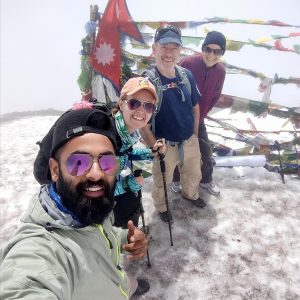
Why it’s best to have a GUIDE when trekking in Nepal….
1) To really get to KNOW the beautiful country of Nepal. A licensed trekking guide will enhance your knowledge and appreciation of culture, flora and fauna and animals, mountaineering, and the peaks of Nepal. A guide can add so much depth and richness to your trek experience.
2) Safety. No one knows the details that will keep you safe like a trained trekking guide. Changes in the weather, changes in trail conditions, awareness of any political/social situations that could endanger you (for example, when we trekked in 2003, there was political unrest going on in certain areas; our guide knew where to go and where to avoid!)
3) Peace of mind and an uncomplicated travel experience. It takes a lot of mental energy to figure out bus timetables, to wonder about prices and bargaining, and to arrange to lodge when trails are crowded. We “could” have handled these details (we’re experienced travelers), but going out with a licensed trekking guide was the best decision and worth every dollar. Our guide kept us enchanted and informed about each peak and valley we were seeing, and he called ahead each day to confirm lodging. He gave advice that probably saved us much misery, such as “only order dishes with meat during our 1st or 2nd day of the trek...after that, it’s best to stick to egg and vegetarian options because meats have been carried in greater distances, stored for longer times, and there is the possibility of food poisoning”. Our guide kept current of weather forecasts and trail conditions and was able to make necessary modifications of which we would have been unaware.
4) The opportunity to form a friendship with a Nepali national. Trekking clients will have differing expectations of socializing, but in our case, we greatly enjoyed getting to know our guide, sharing meals, learning about Nepali life and culture through his eyes, enjoying laughs and after-dinner card games, and truly feeling like we were a group of “3 travelers + guide = 4”.
In conclusion, if you do not hire a trekking guide, it is possible to save a little money. But, my strong recommendation is that you trek with a GUIDE when exploring the amazing mountains of Nepal. Twice we have trekked Nepal, and twice we have had a guide….and we never regretted the decision for a moment.
~Becky Johnson April 2019 - Mardi Himal Trek (Guide: Sujan Pandey, Founder & Lead Guide of the company “Himalayan Connection”)
Becky Johnson

Related Treks
Tsum valley trek 14 days, manaslu short trek 11 days; itinerary and cost, manaslu trek with tsum valley 22 days.

Connect With Us
We are affiliated with.

Quick Links


MANASLU CIRCUIT TREKKING GUIDE

Pin 523 Tweet Share WhatsApp 523 Shares
MANASLU CIRCUIT TREK
The Essential Guide
So you’re thinking about tackling the Manaslu Circuit Trek? Great choice! Of the various treks we’ve done around Nepal, including Annapurna Circuit, Everest Three Passes, Langtang Valley and Upper Mustang, we think this is one of the best. The scenery is diverse and impressive, and in an age where development is proceeding at breakneck speed, the Manaslu Trek has the advantage of being quieter and much less impacted by road building. Additionally, Tibetan cultural influences at higher altitude lend a unique flavour to the experience that is notably different from other areas.
In this guide we’ll cover a whole range of essential topics including when to go, what to take, how to organise your trek, budgeting for your trek, accommodation, food, and much more. Want to know more about the Manaslu Circuit itinerary itself? Check out our day by day account of the trek . Want to see what the trek is really like? Watch our complete Instagram Stories from the journey ( part one / part two ), and check out our video below.

WATCH THE VIDEO
Read through our complete Manaslu Circuit trekking guide or jump to a particular section by clicking on the links below.
Read through our complete Manaslu Circuit trekking guide or jump ahead to a particular section by clicking on the links below.
MANASLU CIRCUIT ITINERARY | MANASLU CIRCUIT TREK MAP | WHEN TO GO | HOW LONG IT TAKES | MANASLU CIRCUIT TREK DIFFICULTY | HOW TO ORGANISE THE TREK | THE D.I.Y. APPROACH | HOW TO CHOOSE A GUIDE | BOOKING AN INCLUSIVE TOUR | MANASLU CIRCUIT PERMITS | MANASLU CIRCUIT TREK COST | TIPPING GUIDES AND PORTERS | MONEY ON MANASLU CIRCUIT | ACCOMMODATION | FOOD AND DRINK | DRINKING WATER | INTERNET AND CHARGING | WHAT TO TAKE | ALTITUDE AWARENESS | TRAVEL INSURANCE | TSUM VALLEY SIDE TRIP | MANASLU CIRCUIT TREK HIGHLIGHTS | THINGS WE WOULD DO DIFFERENTLY | GETTING TO/FROM THE TRAIL | GETTING TO NEPAL | TOURIST VISAS | EXTRA RESOURCES
MANASLU CIRCUIT ITINERARY MANASLU CIRCUIT TREK MAP WHEN TO TREK MANASLU HOW LONG THE TREK TAKES MANASLU TREK DIFFICULTY HOW TO ORGANISE THE TREK THE D.I.Y. APPROACH HOW TO CHOOSE A GUIDE BOOKING AN INCLUSIVE TOUR MANASLU CIRCUIT PERMITS MANASLU CIRCUIT COST TIPPING GUIDES AND PORTERS MONEY ON MANASLU CIRCUIT ACCOMMODATION FOOD AND DRINK DRINKING WATER INTERNET AND CHARGING WHAT TO TAKE ALTITUDE AWARENESS TRAVEL INSURANCE TSUM VALLEY SIDE TRIP MANASLU TREK HIGHLIGHTS WHAT WE’D DO DIFFERENTLY GETTING TO/FROM THE TRAIL GETTING TO NEPAL TOURIST VISAS EXTRA RESOURCES
*Some of the links in this post are affiliate links – if you purchase a product or service via these links, we may earn a small commission at no extra cost to you . This helps offset the cost of running this blog and keeps us travelling so that we can continue to produce great content for you. We greatly appreciate your support!*
MANASLU CIRCUIT TREK ITINERARY
Below is an overview of the Manaslu Circuit trek itinerary. This is not set in stone, just a suggested route. Some people stay in alternative villages along the way, or add an extra acclimatisation day at Samdo. Trekking distances and times are approximate.
*If you are concerned about altitude sickness, adding an extra day at Samdo is a good idea. From here you can do an acclimatisation hike to the Tibetan border at Rui La (4998m, 19km/10 hours) or easier hikes up the hills around the village.
**It is now possible to take a shared jeep from Tilche so you have the option of finishing the trek there instead of Dharapani
MANASLU CIRCUIT TREK MAP
We’ve marked the Manaslu Circuit trekking route on the map below, along with key villages and sights along the way. Tap the menu button at the top left for more details, to toggle layers on and off, and switch between satellite and terrain view.
To use an offline version of this map, download our KML file for use with Maps.me ( iOS / Android ) or Organic Maps ( iOS / Android ) , or the GPX file for use with alternative offline mapping apps such as Gaia ( iOS / Android ). See our expandable box below for tips on using these apps.
Download GPX | Download KML
HOW TO SAVE THIS MAP (ONLINE VERSION)
To save this map to use online on desktop or mobile just tap the star symbol at the top. When you open Google Maps on your phone, navigate to ‘Saved’ at the bottom, then swipe along to ‘Maps’ at the top. You’ll find this map in your list of maps.
On desktop, click ‘Saved’ on the left side, then ‘Maps’. Click the map, then select ‘Open in My Maps’ to access the interactive version .
Alternatively, just tap the rectangle symbol at the top right of the map in this blog post to view the My Maps version larger on desktop.
Unfortunately, it’s not possible to view this version of the map offline, but we’ve created a similar version for offline use as per below.
HOW TO SAVE THIS MAP (OFFLINE VERSION)
ORGANIC MAPS
Organic Maps is our go-to offline mapping app. We find it straightforward to use for planning routes in advance, as well as navigating on the trail. It doesn’t drain our phone battery, and it’s quick and easy to save and organise ‘bookmarks’. There are many trails already marked on Organic Maps, plus you can download and import a KML track of your route to the app.
To use Organic Maps, first download the app ( iOS / Android ). Hover over the region or country that you want to visit and the app will prompt you to download this map. Once downloaded, it can be viewed offline.
You can tap anywhere and save it as a ‘bookmark’ by tapping the star symbol at the bottom. Hit ‘Edit Bookmark’ to personalise the bookmark colour, organise your bookmarks into different folders, and rename them.
You can navigate easily or plan routes in advance by tapping your start point and selecting ‘route from’, then tapping your end point and selecting ‘route to’. Tap the car, walking, or cycling symbol at the top of the screen to indicate your mode of travel. If you want to plot a different route to the one suggested by Organic Maps, just tap a third (or fourth, fifth, etc.) bookmark between the start and end points and select ‘add stop’.
Organic Maps shows the distance and travel time, plus elevation profiles for hiking trails . Note that the estimated time isn’t always reliable, but we’ve always found the distance and elevation gain/loss to be largely accurate. It only shows very basic contour lines.
You can track your progress on the trail using GPS . The arrow shows your direction of travel. Tap the compass at the top right of the screen to keep the map in a fixed position (the arrow will rotate). Alternatively, tap the arrow at the bottom right of the screen to rotate the map in the direction of travel (the arrow will stay in a fixed position).
Note that Maps.Me works in almost the exact same way, but it has in-app ads making it less user friendly in our opinion.
Gaia ( iOS / Android ) is another offline mapping app that is very useful. It shows the contours in much more detail than Organic Maps, and you can download both the topographical and satellite view of your route in advance for offline use. The app has existing OpenStreetMap trails marked and you can import GPX tracks and view them offline. You can also create new routes online yourself and export them as GPX or KML files. You can navigate easily on the trail using the arrow that shows your GPS location. You can also check distances between places offline , however you will only get elevation profiles while online. There are a lot of useful features in the free version and even more benefits if you have a paid annual membership, so if you spend a lot of time outdoors it is worthwhile learning how to use the app to its full advantage.
In our experience, Gaia drains your phone battery much quicker than Maps.me, even in flight mode, so it’s best to shut down the app completely each time you finish using it.
WHEN TO TREK THE MANASLU CIRCUIT
Autumn/fall.
The best time to go trekking in Nepal is from September to November . The weather is generally dry and clear, with warm sunny days and excellent visibility. There’s a lower likelihood of weather related natural disasters at this time of year, making for a much safer trekking environment. The downside as far as the Manaslu Trek goes? The Manaslu Restricted Area Permit (RAP) is $100 per week during this period as opposed to $75 per week at all other times. Furthermore, given that it’s the best season, it’s also the busiest. Saying that, we hiked the Manaslu Circuit in October, had a great time, and still found it to be much less busy than other treks in Nepal.

A cold, crisp, clear morning view of Manaslu (8163 m) at first light, seen from Samagaun (3520 m) on the Manaslu Circuit in October

A clear morning view of Manaslu (8163 m) seen from Samagaun (3520 m) in October
The spring season from March to May is considered to be the next best option . The weather is generally clear although a little colder, particularly at higher altitudes. Mornings are sunny and flowers are in bloom. There is however a higher chance of rain, or even snow, and melting ice increases the chances of landslides or avalanches – something we experienced trekking to Annapurna Base Camp in April.
June to August is to be avoided. The monsoon is responsible for warm and wet weather, with cloud and mist making visibility extremely poor. We can testify to this. Our very first trek in Nepal was in June and we hardly saw a mountain. Leeches are a big problem at this time of year, as is the risk of landslides. As the Manaslu Region was one of the worst affected by the 2015 earthquake, there are many landslide areas – these can be more dangerous in wet weather.
In the winter, from December to February , temperatures in higher altitudes plunge. Snow and ice make this time of year unsuitable for the Manaslu Circuit Trek.
OUR RECOMMENDED TREKKING AGENCY
We partnered with Himalayan Masters for our Langtang Valley, Gosainkunda, and Everest Three Passes treks, and found them to be professional and committed to a high level of service
To enquire about your own trek, get in touch via email at [email protected] and mention the code HOGG5 to get a 5% discount off the cost of your trip
HOW LONG DOES THE MANASLU CIRCUIT TREK TAKE?
The whole Manaslu Circuit Trek can be done in 13 days. That includes 2 travel days getting to and from the trail. However, some itineraries suggest longer, including an extra acclimatisation day at Samdo and/or continuing to walk from Dharapani rather than taking transport.
On our own journey, we took 13 days to reach Dharapani where we joined the Annapurna Circuit . This included the standard acclimatisation day at Samagaun, the travel day by bus from Kathmandu to Arughat, and 2 days trekking between Arughat and Machakhola (now no longer required as the road goes all the way to Machakhola).

Surrounded by snowy mountains on an acclimatisation day trek to Pungen Gompa (4050 m)

Surrounded by mountains on an acclimatisation trek to Pungen Gompa (4050 m) from Samagaun
TREK DIFFICULTY
So how difficult is the Manaslu Circuit Trek?
We’ve seen this trek described as hard, strenuous and moderately difficult to name but a few. Which doesn’t really tell you a lot. However, there are some things we can say with certainty.
As far as the trail itself goes, the paths are mostly in good condition. No technical skills are required so the act of walking is pretty straightforward. There are a few exceptions where things can get a little tricky, such as when the trail detours around landslides. The ground in these areas can be a bit less firm and a bit more slippery, so extra care is needed here.
Over the course of the trek, you ascend in altitude from 700 m to 5106 m. This takes a considerable physical effort, and what’s more, it’s not all up, up, up. Much of the route, particularly in the early days, involves plenty of up and down – descending to cross the river, ascending again, then repeating the process further along the trail.

Time to put effort in on the trail. Climbing stone steps after crossing the Budhi Gandaki, on a morning of steep ups and downs from Dyang/Deng (1860 m) to Ghap (2050 m)

Putting some effort in on the trail. Climbing the stone steps after crossing the Budhi Gandaki, enroute from Dyang (1860 m) to Ghap (2050 m)
So given the physical effort required, it clearly helps to be as fit as possible. Saying that, you don’t have to be an athlete, far from it. People of all ages and levels of fitness complete the Manaslu Circuit Trek. The key point to remember is to hike at your own pace.
How Much Weight Will You Carry?
Aside from your physical fitness, this is the most important factor in determining how difficult the trek will be.
If you choose to carry all your own gear, clearly it will be more challenging. To make things easier for yourself, think carefully about what you need to take, and try to make your gear as lightweight as possible.
If you choose to hike with a porter as well as a guide, then the difficulty level becomes much easier. Carrying only a small daypack with a few essentials means the trek can be tackled by anyone with a moderate level of fitness.
CHALLENGE YOURSELF ON THE EVEREST THREE PASSES TREK

PLAN YOUR TREK WITH OUR GUIDE

TRAIL NOTES AND OTHER USEFUL INFO
HOW TO ORGANISE A MANASLU CIRCUIT TREK
The Manaslu region is a restricted area, and as such, it’s not permitted to hike the Manaslu Circuit Trek independently . You must be accompanied by at least one government authorised person and there are two options to choose from. The first is a D.I.Y. approach where you arrange a guide (and/or porter) and pay for food, accommodation and transport along the way. The second is to book a prepaid package tour which includes everything.
THE D.I.Y. APPROACH
If you plan on trekking by yourself, as a couple, or as part of a small group, there are a few things to consider before deciding who to hire. The two most common situations on the Manaslu Circuit are those hiking with a guide or with a guide and porter, but before you decide which is best for you, it’s important to think about what you need. To help with that decision, first we’ll outline the differences between the various options, then go on to discuss how best to choose a guide and what to look for.
Guides, Porters & Porter Guides: Which Setup To Choose
If you’re relatively fit and can keep the weight of your bag to a sensible level (around 15 kg), then you probably don’t need a porter. In which case, hiring a guide makes the most sense.
You can expect them to have a good level of English, know the trail and places on it well, and be more likely to have knowledge about the history, culture and geography of the area. Saying that, it can very much depend on the trekking company you choose and the individual guide provided. A guide generally costs $20-30 USD per day , although some agencies may charge more.
Porter Guide or Porter
If you don’t want to carry all your own gear then you’ll need to hire at least a porter or a porter guide. A porter is the cheapest option at around $18-25 USD per day , while a porter guide costs around the same as a guide . So, how to choose?
Well, a porter will be cheaper, but it’s probable that they will speak very little English. You can expect very little other than that they carry your bag. Porters can carry up to 30 kg (maximum, but less is better), so you generally only need one for every two trekkers. While trekking with just a registered porter is possible, it’s important to note that this is not very common.
A porter guide will be more expensive (roughly the same as a guide). They tend to be trainee guides who will also carry your gear, although perhaps not as much as a porter. You can expect them to have better English than a porter, although not as good as a guide (this may vary with experience). Having a porter guide (or guide) with good communication skills can make a big difference. Unlike other regions where it’s possible to trek independently, guesthouses and lodges on the Manaslu Circuit are used to dealing with guides, not trekkers.

Kim and our guide, climbing the trail from Samdo (3640 m) to Dharamsala/Larke Phedi (4460 m)

Kim and our guide, climbing the trail from Samdo (3640 m) to Dharamsala (4460 m)
Guide & Porter
If you don’t want to carry your gear and are not limited by an overly tight budget, then this is likely the best option for you: a knowledgeable guide to lead the trail and communicate on your behalf, as well as a porter to carry your gear.
This setup is most cost effective when you have a group with an even number of trekkers, as you generally only need one porter for every two trekkers. Most agencies allow up to five people per guide, the total cost being shared among the group.
How To Choose A Guide
The trekking industry in Nepal is huge and there are no shortage of registered companies and accredited guides competing for business. As such, it can seem a bit of a minefield when it comes to finding and choosing a guide, especially when looking online.
Finding a guide in Kathmandu
If you have a few days in Kathmandu and are comfortable not having anything pre-booked, it is definitely advantageous to shop around in person. It is much easier to get a sense of a trekking company and a guide when you meet them face to face. There are many trekking agencies in the Thamel area of Kathmandu, which is also the main backpacking hub and an ideal place to base yourself.
Organise a guide before travelling to Nepal
If you’re organising a guide before you go, a recommendation from someone you know and trust goes a long way. Just make sure you get a guarantee of who your guide will be. We’re aware of people arranging with a particular company for a certain guide, only to arrive and discover that they have a different guide. As the guide is the person you’ll be spending all your time with, they are the most important factor.
If you don’t have a recommendation but still want to organise a guide before you go, you can browse guide profiles here and here . Both sites outline the guides’ daily rate, experience and contact details so you can get in touch directly and discuss options with them.
Local trekking agencies commonly sell package tours but it is usually possible to arrange something more bespoke if you contact them directly to outline what you need and want, such as a guide only option
Our Recommended Trekking Agency
Our recommended trekking agency is Himalayan Masters , a company we’ve partnered with on two major treks, Langtang Valley/Gosainkunda and Everest Three Passes. They can arrange guide only, guide plus porter, or inclusive packages for a Manaslu Circuit trek, whatever suits your needs.
The company is professional, committed to a high level of service, and competitively priced. They are the third company we’ve trekked with in Nepal, and we can honestly say that Himalayan Masters provided us with the best guided experience we’ve had. What’s more, having met numerous other Himalayan Masters guides on the trail, and getting feedback from the trekkers with them, we’re confident that our positive experience with the company is one shared by others.
To enquire about a trek with Himalayan Masters just contact them via email at [email protected] to discuss your plans, and quote our referral code ‘ HOGG5 ’ for a 5% discount off your trip cost.
Trekking Solo
If you’re a solo trekker and want to hook up with others to share the costs of a guide, then take a look at this page . Here you’ll also find people looking to partner up in order to get the Manaslu Restricted Area Permit (RAP). A minimum of two trekkers is needed to get the permit, although it is possible to get around this ( see permits section ).

Female Guides
If you would like to hire a female guide, there are a few companies out there who can help with this. 3Sisters Adventure Trekking is an agency based out of Pokhara which is very highly regarded.

Appreciating the view at the Numla Khola suspension bridge between Shyala and Samagaun

Appreciating the view at the suspension bridge over the Numla Khola, between Shyala and Samagaun
Things to consider when choosing a guide
Whether you’re getting organised ahead of time or finding someone in Kathmandu, here are the main things to keep in mind.
Talk to as many guides/agencies as possible to compare prices and services.
Ask about the guide’s experience with the trek.
Have a conversation to gauge their level of English.
Ask if they have had any safety training and ask to see the certificate if they say yes. Ask how they would handle an emergency situation.
Ask whether they will drink alcohol on the trek (not necessarily a deal breaker, just use your judgement).
If after this you’ve found someone you’re comfortable with, here are a few things to remember when finalising your arrangement.
Check that they are properly registered and insured (ask to see proof).
Agree on the daily rate, number of days and total price.
Agree on who pays for your accommodation and food (it’s most cost effective to pay for yourself along the way rather than paying up front to the trekking agency).
Confirm that the guide covers their own food and accommodation along the way (this is usual).
Agree that you have the final decision on which guesthouse/teahouse you’ll stay in at each place. A guide will often have a preferred place to stay for their own reasons which may not align with yours. This works best if you’re paying for your own accommodation as you go.
Make sure your guide (and porter) is well equipped
Make sure your guide and porter have everything they need prior to setting off on your Manaslu Circuit trek. If you’re hiring an experienced guide through a long established agency, then chances are they will be well prepared for conditions on the trail. However, this isn’t always the case. Younger, more inexperienced guides often don’t have the equipment they need. Porters too can sometimes lack what we would consider to be basic trekking necessities. We’ve seen some young porters with trainers on their feet that were practically falling off.
Check that your guide and porters have the following.
Warm clothing for higher altitudes (down jacket, gloves, hat, etc.)
Proper boots in good condition
Suitable waterproofs
Sleeping bag (it’s common for guides and porters to sleep in lodge dining areas on the Manaslu Circuit if it’s busy and there are not always enough blankets)
What To Expect From A Guide (And Porter)
Having a professional and experienced guide is invaluable when it comes to your time on the trail, making for a safe and hassle-free journey, and giving you the opportunity to learn more about the history, culture, and geography of the land.
You will usually meet a guide (and porter) in Kathmandu prior to your trek, travel to the trailhead together, and then return to Kathmandu together at the end.
During your trek a guide will stick with you on the trail, recommend the best spots to stop for lunch, and suggest overnight accommodation options. At busy times, they may be able to call ahead and pre-book a room for you (depending on phone service). They will act as your go-between at each guesthouse, arranging your room, taking your food orders, and settling the bill. It’s normal for a guide to run through the following day’s itinerary each evening, giving you an overview of the trail, trekking time, and any other relevant information. Your guide will always be around at your guesthouse, but they won’t stick by you constantly. You will have plenty of freedom to hang out in your room or the dining room, read your book, chat with other guests, play cards, etc. Guides sleep and eat in the same guesthouse as you, always in a separate room.
Porters often trek at their own pace, meaning you won’t always be with them on the trail. It’s common for you to pack your porter bag before breakfast and have it ready for them, and for your bag to already be in your room when you arrive at your guesthouse for the evening. On the Manaslu Circuit trek, porters will sleep and eat at the same guesthouse as you, again in a separate room.
MORE TREKKING & HIKING ADVENTURES

Hiking, Bothy Stays and Wild Camping on Skye

Everest Base Camp Trek: The Essential Guide

Everest Three Passes Trekking Route Guide

Everest Three Passes Trek: The Essential Guide

Gosainkunda Helambu Trekking Route Guide

Gosainkunda Trek: The Essential Guide

Langtang Valley Trekking Route Guide

Langtang Valley Trek: The Essential Guide

What To Pack For Trekking In Nepal

Our Complete Hiking Gear: What We Use and Why

Our Backpacking Camping Gear: What We Use and Why

A Guide To The Moray Coast Trail

9 Things To Know About Trekking In Georgia

West Highland Way Route Sections: A Stage-By-Stage Guide

A Guide To Trekking In The Geghama Mountains, Armenia

West Highland Way: The Ultimate Guide

Udziro Lake Hiking Guide

A Guide to Borjomi-Kharagauli National Park

Borjomi-Kharagauli NP: Panorama Trail Hiking Guide

Hiking From Ushguli To Chvelpi Via Latpari Pass

Mestia to Ushguli: Svaneti Transcaucasian Trail Hiking Guide

Chuberi to Mestia: Svaneti Transcaucasian Trail Hiking Guide

A Guide To The Kelitsadi Lake Trek

Black Rock Lake Trek in Lagodekhi National Park

Trekking from Tusheti to Pankisi Valley

Trekking from Shatili to Omalo via Atsunta Pass

Hiking from Juta to Roshka via Chaukhi Pass

Truso Valley Hiking Guide

Hiking To Gergeti Glacier And Gergeti Trinity Church From Kazbegi

Kojori To Tbilisi Day Hike

Upper Mustang Trek: The Essential Guide

Upper Mustang Trek Itinerary: A Day By Day Account

Annapurna Circuit Trek: The Essential Guide

Annapurna Circuit Trek Itinerary: A Day By Day Account

Manaslu Circuit Trek: The Essential Guide

Manaslu Circuit Trek Itinerary: A Day By Day Account

Jeju Olle Trail: Routes 13 to 18-1

Jeju Olle Trail: Routes 7 to 12

Jeju Olle Trail: Routes 2 to 7-1

Jeju Olle Trail: Routes 18 to 1

Camping The Jeju Olle Trail: Everything You Need To Know

Wat Pha Lat: Hiking To Chiang Mai’s Hidden Temple

Fann Mountains Trekking Routes & Travel Guide

The Scottish Bothy: An Introduction

Trekking in Tajikistan’s Fann Mountains: Haft Kul (7 Lakes) to Alauddin Lake

Hiking Hallasan: South Korea’s Highest Peak

Saryangdo: The Best Day Hike in Korea
Booking an inclusive tour.
If you want to have everything packaged together in an inclusive tour, there are no shortage of options out there. Group tours with international companies such as Exodus and World Expeditions include all of your transport, accommodation, and guide, plus meals on certain tours. These international companies tend to work with the very best local trek operators, so you can expect very professional service, highly experienced guides, and a pricetag to match.
Less expensive package tours run by local trekking agencies may just include your days on the trail and won’t necessarily be group treks with set departure dates. The professionalism and experience of the guide can vary greatly. You can browse a range of options on Tourradar.
Alternatively, contact our recommended local trekking agency directly, Himalayan Masters , who offer inclusive packages for a Manaslu Circuit trek from $995 USD. As outlined in the ‘How To Choose A Guide’ section above, we and other trekkers we’ve met have had a highly positive experience trekking in Nepal with them. To organise your trek, get in touch via email at [email protected] and mention our referral code ‘ HOGG5 ’ for a 5% discount off your trip cost.
The pros and cons are the same with any inclusive tour. Everything is organised for you, but the costs can be considerably higher and freedom to choose is limited. So it entirely depends on what you need and want. If you have limited time and want to simply relax and enjoy your trip, without any of the hassle of organising the logistics along the way, then booking a tour could be for you.
Things to remember when booking a tour
Depending on the tour you book and the company you book with, different things will be included. Here are a few key questions to ask.
Transport How will you be getting to and from the trail (private jeep or public bus?)
Accommodation Will you be sharing a room and with how many people?
Food Can you order what you like or are your choices limited?
Drink What drinks are included and how many a day?
Permits Are all permits included in the cost of the trek?
MANASLU CIRCUIT TREK PERMITS
In order to do the Manaslu Circuit Trek, there are three separate permits required per person. Here we’ll outline what they are and how much they cost. Your trekking agency can get all three permits for you.
Restricted Area Permit for Manaslu (Manaslu RAP)
The restricted area status stems from the fact that it shares a border with Tibet. This permit is needed between Jagat and Dharapani.
There are two different costs depending on the season:
September – November: 100 USD for 7 days ($15 for every additional day)
December – August: 75 USD for 7 days ($10 for every additional day)
For a standard 13 day Manaslu Circuit Itinerary, 7 days in the restricted area is enough and there is no need to pay for extra days.
This permit can only be obtained from the Department of Immigration by a fully licensed trekking agency. You will need to provide your passport.

An example of the Manaslu Restricted Area Permit (RAP)

The Manaslu Restricted Area Permit (RAP)
A minimum of two trekkers travelling together is needed to get this permit , but if you’re a solo traveller, there is a way around this. There is a practice of “ghost permits”. This is where a trekking agency uses another person’s passport who isn’t trekking to get a second permit. Alternatively, agencies who have guides trekking with solo travellers on the same dates can apply for the permit as if they were together, then trek separately on the trail. We met people who had done just that. If you’re travelling solo, you’ll need to discuss these options with your guide and their company.
Manaslu Conservation Area Project (MCAP Permit)
The MCAP Permit is to help protect the ecosystem of the area and help improve the lives of the local population.
The MCAP Permit costs 3000 NPR per person (local currency only)
You can get this permit yourself from the Nepal Tourism Board in Kathmandu or your guide can get it for you. To get the permit you need your passport and two passport photographs.

An example of the Manaslu Conservation Area Project Permit (MCAP)

Manaslu Conservation Area Project Permit (MCAP)
Annapurna Conservation Area Project (ACAP Permit)
The Manaslu Circuit crosses into the Annapurna Conservation Area, just below Bimthang on the way to Dharapani. This permit is needed as far as Besisahar.
The ACAP Permit costs 3000 NPR per person (local currency only)
As with the MCAP, you can get this permit yourself from the Nepal Tourism Board in Kathmandu or your guide can get it for you. To get the permit you need your passport and two passport photographs. It looks pretty much the same as the MCAP permit.
There is no need for a TIMS Card (Trekking Information Management System) on the Manaslu Circuit, although you would need one if you were continuing on the Annapurna Circuit.
SEE MORE OF NEPAL ON THE LANGTANG VALLEY TREK

PLAN YOUR LANGTANG VALLEY TREK WITH OUR COMPLETE GUIDE

DETAILED TRAIL NOTES AND OTHER INFO FOR THE LANGTANG TREK
MANASLU CIRCUIT TREK COST
So, how much does the Manaslu Circuit trek cost? Your overall budget will depend on a variety of different factors. We’ll look at a ballpark figure for both the D.I.Y. Approach and an inclusive tour, then break down the costs for permits, guides and porters, accommodation and food, and transport.
INCLUSIVE TOUR
For a standard 13 day tour, prices start from around $950 USD per person with a local trekking company, although it’s worth noting that there are few options at this price. There is quite a range beyond this with some international group tours costing $2000 USD or more. The majority of packages lie somewhere between $1000 – $1600 and can be anything from 11 -18 days.
If you’re thinking about booking a tour, remember to check all the inclusions, ask questions of the operator, and look at reviews before making a decision.
Planning to pay as you go? Using the amounts outlined in the individual sections below, here’s an estimated figure for the cost of a Manaslu Circuit Trek based on trekking staff, accommodation, permits, food and transport to/from Kathmandu.
Based on two trekkers travelling together with one guide , you could expect to pay around $600 – 750 USD per person for a 13 day trip .
Based on two trekkers travelling together with one guide and one porter , you could expect to pay around $900 – 1050 USD per person for a 13 day trip .
As outlined in the permit section, there are three permits required for the Manaslu Circuit. The combined cost of these permits will be $150 (Sept-Nov) or $125 (Dec-Aug) .
If you’re a solo traveller there may be extra costs if you need a ‘ghost permit’ ( see permits section )
Guides & Porters
Let’s say a guide will cost on average $25 per day and a porter will cost on average $23 per day .
For a standard 13 day trip a guide will cost $325 and a porter will cost $300
For a guide and porter together that would be $625
Obviously, the more people you share this cost with, the cheaper it will be per person.

Porters loading up and getting ready for the day ahead at Jagat (1340 m)

Porters loading up and getting ready for the day ahead at Jagat (1340 m)
Accommodation
The standard price for a twin room in our experience was 600 NPR .
The cheapest price we paid was in Dharapani (500 NPR), and the most expensive was in Samdo (650 NPR). Whether the room is used by one person or two, t he price is the same.
Based on 12 nights, let’s say an accommodation budget of 7500 – 8000 NPR for two people is reasonable . That would be around $60 USD . Many trekking agencies online suggest that a room is $6-10 USD per night, however in our experience $6 would be at the high end of the scale.
Food and Drink
Food and drink costs can vary widely from person to person depending on how much you consume, but the following figures should provide a good guide.
On our 12 days of actual trekking we spent an average of 2000 NPR per day per person .
The early days at lower altitudes were cheaper at around 1500 -1800 NPR per person.
From Lho onwards our daily food costs were around 2000 -2500 NPR per person.
Our most expensive day was at Dharamsala which cost us 3400 NPR per person.
This was for three meals a day and plenty of hot drinks, especially at higher altitudes. Prices creeped up at first then shot up significantly at much higher altitudes where supplies are harder to come by. Finally, having bought plenty of snacks in Kathmandu we never had to splash out on anything to keep us going between meals.
Given these figures, a daily food budget of $15-20 USD should be plenty , with $20 being generous.
Including a bit for the travel days either side, a total food budget of $200 – 250 USD per person is certainly sufficient.
Transport costs vary widely depending on whether you travel by local bus or private jeep.
Taking the local bus options to and from Kathmandu should cost no more than a total of $20 USD per person .
A local jeep from Dharapani to Besi Sahar at the end should cost no more than a maximum of $20 per person .
This would bring total transport costs to a maximum of $40 USD per person.
A private jeep to and from Kathmandu would cost around $200-250 USD each way (total for vehicle, not per person).
Service Charge & Taxes
It’s standard for trekking agencies to charge a fee for their services and to cover the cost of government taxes. You can expect this to be no less than $50 USD per person.
TIPPING GUIDES AND PORTERS
While tipping trekking guides and porters is not essential, it is recommended, expected, and is generally a good thing to do. It rewards them for their service and helps supplement relatively low wages.

A couple of hardworking porters ready for their lunchtime dal bhat after a serious uphill stretch

How Much Should You Tip?
So how much should you tip? The following figures are generally accepted guidelines.
Recommended Minimum Amount
500 NPR ($4 USD) per person, per day for guides
400 NPR ($3 USD) per person, per day for porters
For larger groups tip 10% of total tour cost to be split between all trekking staff
How good was the service?
While it is good practice and expected to tip, if for some reason you’re unhappy with the level of service then it’s entirely up to you whether you tip less, or maybe even not at all. This could be anything from poor communication to bad advice, or perhaps even drunkenness. On the other hand, if your guide or porter has gone above and beyond, then by all means tip more if you can afford to.
MONEY ON THE MANASLU CIRCUIT
The amount of money you need to take on the Manaslu Circuit Trek will depend on whether you’re on an inclusive tour or taking the D.I.Y. Approach. If you are on an inclusive tour then you’ll only need money for any snacks or drinks over and above what’s included in your package. If you are paying as you go, then you’ll need to have enough cash to cover all costs: accommodation, food, drink, etc. ( see budget section )
Everything is payable in the local currency, Nepalese Rupees (NPR). Take plenty of small denomination notes as change is not readily available on the trail, particularly at higher altitudes. If you have a few days in Kathmandu beforehand, pay for things in big notes to build up your supply of small ones. Also beware that ATMs have max withdrawal amounts, and your bank may have a max daily withdrawal limit, so you may not be able to withdraw the total amount that you need all in one day.
There are no ATMs on the trek and you must pay in cash for everything.
LOOKING FOR ANOTHER BIG TREKKING ADVENTURE?
Why not trek to K2 Base Camp on one of Pakistan’s most rewarding active adventures?
Book with Epic Expeditions and get 5% off with our code WHOLEHOGGISEPIC
ACCOMMODATION & FACILITIES ON THE MANASLU CIRCUIT
Accommodation is in guesthouses (often called teahouses) along the way. These guesthouses are often clustered together in small settlements to cater for trekkers, or occasionally by themselves in quieter spots. In larger places, like Samagaun and Lho, they sit alongside or nearby the homes of locals.

The K.L.S.P. Jungle Hotel (2260 m) tucked away in a secluded spot between Ghap and Namrung

This region of Nepal was badly affected in the 2015 earthquake, with many guesthouses and homes being damaged or destroyed. However, most rebuilding has been completed and new places continue to spring up all the time.
So what’s accommodation on the Manaslu Circuit like? If you’ve trekked in Nepal before then you’ll know what to expect. The accommodation is similar to what you find on other treks, although generally more basic than on the Annapurna Circuit, for example. Places do vary in size, decor and state of repair, but most things are pretty standard.
Rooms have two single beds and usually a small window. Pillows and blankets are always provided but a sleeping bag is a must (don’t expect the blankets to be particularly fresh or clean). Think of the blanket as supplementary to your sleeping bag when it gets cold.

A twin room at the Larke Peak Hotel in Machhakhola (869 m). Pretty standard at lower altitudes but rooms are more basic higher up.

A twin room at the Larke Peak Hotel in Machhakhola (869 m). Standard at lower altitudes, with rooms more basic higher up
There are most often shared toilet facilities rather than en-suite bathrooms on the Manaslu Circuit Trek. These can be inside the main building or in an outhouse. It can be a western style toilet or a squat. Things tend to become more basic in places at higher altitude. You’ll need to have your own toilet paper, and soap isn’t always provided so make sure you have hand sanitiser too. Generally speaking, used toilet paper goes in a bin (read battered old metal can or such like) next to the toilet. You flush the squat toilet by scooping water out of the nearby bucket with whatever receptacle is provided.
Dining Room
There’s always a dining room where meals are served, and it’s a good place to get to know your fellow trekkers. The higher you go, there will usually be a fire in the dining room around dinner time, although this is by no means guaranteed.

Many guesthouses have a courtyard or garden too, like this one at Raju Hotel and Lodge in Samagaun (3520 m)

Many guesthouses have a courtyard or garden too, like this one at Raju Lodge in Samagaun (3520 m)
Showers are available over the first few days, but chances for a hot shower dwindle the higher you go. Gas needs to be transported by mules and it’s more important for cooking and heating. It’s sometimes possible to get one for a fee, but you might be standing in a cold room under a spray with very little pressure. Best to be prepared to keep yourself clean with wet wipes and look forward to a hot shower when you reach Dharapani.
Busy Trekking Season
Rooms can be scarce, particularly in the peak trekking season. If there are a couple of big tour groups on the trail then it can be harder to find accommodation in some smaller places. It’s not unknown for guides to call ahead to guesthouses they’re familiar with to secure a room. Porters will also often go ahead to get rooms for their clients if it’s a busy time. Something worth discussing with your guide.
Accommodation at Dharamsala/Larke Phedi (4460 m)
Accommodation options are limited at Dharamsala, the last place you stay before heading over the Larke Pass. For a long time there was only one old lodge, with a row of tents outside for trekkers and some dank, musty rooms on offer. There are now two newer prefab lodges as well, but even so, if the trail is busy then expect everywhere to be full.

The new pre-fab lodges at Dharamsala (4460 m) providing more room for trekkers the night before the Larke Pass (5106 m)

The new pre-fab lodges at Dharamsala (4460 m)
It’s worth planning to arrive here early to secure a room, or have someone from your trekking party go ahead if possible. Either way, discuss this day with your guide in advance.
FOOD & DRINK ON THE MANASLU CIRCUIT
Food and drink on the Manaslu Circuit is similar to what you find on Nepal’s other treks, although options are usually more limited than on busier routes like the Annapurna Circuit. Those options become even more limited throughout the trek as altitude increases, while prices go up as the cost of fuel and transporting goods gets higher.
POINTS TO NOTE
You are expected to eat dinner and breakfast at your guesthouse. Lunch will generally be at a different place somewhere along the trail unless it’s a short day and you arrive at your destination earlier.
Try to order the same as the people you’re trekking with. Your food will usually arrive more quickly and less fuel will be needed to cook it.
Think carefully before ordering meat. Refrigeration, storage and kitchen standards mean that eating veggie is the safest option.
So what can you expect to see on the menu? Let’s take a look at what’s on offer and get an idea of how much it all costs. For more info, check out this article with example menus from guesthouses throughout the trek.
While trekking the Manaslu Circuit we ate Dal Bhat almost every day for both lunch and dinner. A combination of dal (lentils), veg curry, pickle, rice and vegetables (sometimes), this staple of the Nepali diet is a great option. It comes with a guaranteed refill of rice and curry, and usually some extra dal too. The vegetable component varies depending on what or if there’s anything growing in the garden (and it pretty much disappears the last few days before the Larke Pass).
An added benefit is that it’s usually ready pretty quickly – great if you’re stopping for lunch and don’t want to wait an hour. Dal Bhat is what all guides and porters eat so it’s constantly being prepared, unlike more western style dishes which always have to be made to order. And as the whole cooking process requires less energy, this means that it’s better for the environment too.

Although it sometimes seems a more expensive choice, the option for free refills makes it worth it, and this meal will give you all the energy you need. Dal Bhat ranges from 500 – 900 NPR on the Manaslu Circuit.
Main Dishes
Standard dishes on menus are soups, pasta dishes, various fried rice dishes, momos (a kind of dumpling), pizzas, and of course, Dal Bhat. Some dishes have meat options but this is something to be wary of. Lots of dishes have egg and some tuna (from a can). Prices range from around 500 – 800 NPR for a main meal, depending on what you get and the altitude you’re at.
Breakfast options generally range in price from 400-600 NPR and include porridge, pancakes, omelettes, boiled eggs, and various breads (Tibetan bread, buckwheat bread, chapatis, and so on).
Hot drinks are on the menu at every guesthouse, with an often huge range of options stretching from regular black tea and coffee to masala tea, lemon ginger honey tea, and hot chocolate. Prices range from 50 – 250 NPR per cup, depending on altitude and the drink ordered. ‘Pots’ (thermal flasks) of various sizes are also always available, which is sometimes good value and sometimes not – one guesthouse’s medium pot is another one’s small. Take a look at the size of the pots before ordering if you want to make sure!
Unlike other treks in Nepal, snacks (chocolate bars, etc.) are not widely available to buy. You can usually get some biscuits but that’s about it. When they are available, they tend to be very expensive. It’s a good idea to buy enough in Kathmandu to see you through the whole trek – only as much as you can sensibly carry of course!
DRINKING WATER ON THE MANASLU CIRCUIT
The Manaslu Circuit is physically demanding and drinking plenty of water is a must. The first few days at lower altitudes can be hot, so expect to need a lot of water. At colder, higher altitudes you might feel less thirsty, but drinking lots of water helps you acclimatise. Planning to have at least two litres of water while trekking each day is a good place to start.
Where To Get Water
Filling up water is easy. Taps in, at or outside guesthouses mean there are plenty of places to fill up your bottles and/or water bladders. This can be at the place you’re staying, a lunch stop, or a communal tap used by locals. If you find yourself empty on the trail, there are often streams of cold, clear water that do the job nicely.

There’s always somewhere to fill up water, but it won’t always be as fancy as this

There’s always somewhere to fill up, but it won’t always be as fancy as this
Sterilisation
Use an effective sterilisation method to make sure your water is safe to drink.
Our preferred method is the Steripen Ultra . It uses ultraviolet light to kill bacteria and treats one litre of water in 90 seconds. The bulb has a lifetime of around 8,000 treatments, making the initial cost (about $100 USD) seem cheap when you realise how many litres of water that is. If you happen to use up the bulb, the company will replace it for free. We use our Steripen in conjunction with a filter to keep any weird floaty bits out. It’s quick and hassle free, especially when compared to using purification tablets, and the Ultra model is rechargeable via USB.
Other popular means of sterilisation are Lifestraw , Grayl , Water-To Go , a squeeze filter system , and of course water purification tablets (we always have a few strips of these as a backup). Personally, we like the versatility of the Steripen . It allows us to sterilise water in 1L Nalgene bottles before filling up our water bladders for use with our backpacks.
Bottle or Water Bladder
Should you use a water bladder, water bottle, or both? A combination of both works well for us, but it’s totally down to personal preference.
We’ve used water bladders/reservoirs for many years. Having 2-3 litres in your backpack at the start of the day makes drinking water on the go easy. No stopping to get your bottle out, just drink from the handy tube. These days we use the excellent Hydrapak Shape-Shift Reservoir .
We always have our Nalgene Tritan Wide Mouth 1L bottles with us too. They’re great for using at the guesthouses or when wandering around the villages, and for sterilising 1L of water at a time for the bladders. They work well in conjunction with Steripen’s wide mouth bottle filter , perfect for getting rid of any particulates in the water.
Bottled Water
Bottled water is available to buy throughout the trek, but we would advise against this for a number of reasons.
First | With the sterilisation methods outlined above, there is absolutely no need to buy bottled water, in the mountains of Nepal or virtually anywhere.
Second | All plastic waste is supposed to be carried out of the mountains, but in reality, this doesn’t always happen. Instead, the environment is polluted either by burning plastic or unsustainable waste disposal.
Third | As if those reasons aren’t enough, think about your wallet. As well as creating a huge amount of unnecessary waste, you’ll also spend a fortune if you buy bottled water each day (one bottle can cost over 300 rupees at altitude).
Fill up your water bladders and bottles the night before.
This is handy for two reasons: one, it will save you time in the morning; and two, water sources can sometimes be frozen first thing in the morning, especially at higher altitudes.
Liking This Guide? Pin It For Later!
Internet, wifi, sim cards and staying charged.
If you’re looking to stay connected while trekking the Manaslu Circuit, the options are fairly limited.
Wifi is increasingly available at guesthouses throughout the trek. There is sometimes a charge for using the internet (300-500 NPR), but aside from a few places such as Samagaun, coverage is patchy and the speeds can be very slow.
4G sim cards and packages can be bought at the airport, or from numerous vendors in the Thamel area of Kathmandu. They’re great in the city but as soon as you leave the coverage is patchy.
Some recommend Nepal Telecom (NTC) for 3G/4G coverage, while others recommend Ncell. It’s safe to say that in the mountains, neither are really great, although NTC seems to be better for phone signal and data connection on the Manaslu Circuit trek (NTC is also what most of the trekking guides seem to use). We had Ncell sim cards during our trek and found that after the first day they were useless – no data connection at all. Considering that wifi is freely available in virtually all Kathmandu bars, cafes, restaurants and hotels, think about whether you really need that sim card in Nepal.
Heads up – we bought a 60 day sim card package from a tourist shop in Kathmandu to cover our 40 day trek. We paid what we later realised was a ridiculously inflated price. After 30 days, our data allowance ran out. We later discovered that Ncell don’t sell packages for longer than 30 days and we had been conned. Returning to the shop in Kathmandu, we got our money back after threatening to involve the police. Something to bear in mind if you’re going to be in Nepal for longer than a month.

It’s possible to get wifi in certain guesthouses in Samagaun

It’s possible to get wifi in guesthouses in Samagaun
Staying Charged
With a minimum of 12 days in the mountains, you’ll no doubt need to charge batteries at some stage. While sockets and electricity are freely available for the first couple of days, this doesn’t last long. Beyond this, if you need to charge batteries there is usually a cost, which could be 200 NPR or more, depending on the item you want to charge.
For cameras in particular, it’s always advisable to have a spare battery or two. And if like us you’re toting around multiple cameras, video cameras, and other electrical items, then a power bank never goes amiss. Just remember that someone’s going to have to carry all the extra weight.
Another option is to pack a lightweight solar panel . We’ve been using one for a few years now, and in sunny conditions, it really is amazing how quickly it can charge things.
WHAT TO PACK FOR THE MANASLU CIRCUIT TREK
There are two things to keep in mind when packing for your trek: one, only take what you need, and two, make your bag as light as possible.
Beyond that the season will also play a part. You can expect to need more warm clothes in the colder months. Also, crampons may be needed if there’s ice and snow on the pass (your guide and trekking agency can advise on this before leaving Kathmandu).
If you’re taking camera equipment and carrying your own bag then you might want to make a few trade-offs to keep the weight down. On the other hand, if you plan to trek with a porter then this will make choosing what to take a bit easier – just don’t overload your porter of course. Also, bear in mind that it’s very common to leave excess baggage at hotels and guesthouses in Kathmandu.

Try to keep your bag as small and light as possible (more like the 50 litre one on the right). Your body will thank you for it on the trail!

Attempt to keep your bag as small and light as possible (more like the 50 litre one on the right). Your body will be thankful for it on the trail!
PACKING LISTS
Below you’ll find our packing lists for the Manaslu Circuit Trek. The first outlines the clothing you should take and the second is a list of equipment we recommend for the trek. Not everything is essential but all of it is useful.
You need to be prepared for all weather conditions and eventualities. Quality gear and the right materials will make a big difference to your enjoyment and how much/little you need to pack.
Layers are important – you need a baselayer (like this ), a mid-layer (like this ), an insulating layer (like this ), plus a top shell (like this ).
Avoid cotton clothing as it will quickly become smelly and be very difficult to dry when wet – particularly at higher altitudes. Opt for merino wool instead. It keeps you cool when it’s hot and warm when it’s cool, and amazingly won’t stink even after days of wearing it. It will dry relatively fast too.
Make sure you have a separate change of clothes for the evening/sleeping in and get out of those sweaty clothes as soon as you arrive at your guesthouse. Changing your clothes, including your socks, will keep you much warmer.
Break in your hiking boots before you trek! Blisters and hot spots can ruin your hike. Pack Compeed just in case.
CLOTHING LIST
Merino T-Shirts x 3 His / Hers
Merino Thermal Baselayer His / Hers
Merino Thermal Leggings His / Hers
Merino Underwear x 3 His/ Hers
Sports Bra x 2
Fleece His / Hers
Down Jacket His / Hers
Rain Jacket/Shell His / Hers
Waterproof Trousers His / Hers
Quick Drying Hiking Trousers (preferably with zip-off shorts) His / Hers
Trousers to wear in the evening (Lightweight, similar to above)
Trekking Socks x 3 His / Hers
Warm Socks to wear at night x 1
Gloves Liner & Waterproof Outer
Sunglasses (plus a spare pair)
Hiking Boots His / Hers
Waterproof sandals / Crocs (for evening)
Belt You might lose weight on the trek!
Equipment, Gear & Miscellaneous Items
As Manaslu Circuit is a ‘teahouse trek’, you don’t need much in the way of specialist gear or equipment. There are however a few items which are essential.
Most obviously you’ll need a good backpack. Osprey backpacks with their Anti-Gravity (AG) back system are the most comfortable and easy to carry we’ve ever used. We highly recommend them. Look for a backpack capacity between 40-70L, depending on how much you plan to carry and how long you’ll trek for. If you’re joining an inclusive tour or trekking with a porter, you’ll need a comfortable day pack for your water, snacks, camera, warm layers, etc.
Sleeping Bag
There are always blankets but we recommend taking your own sleeping bag. We used these 3 season Rab down sleeping bags on our Nepal treks along with these silk liners . Down sleeping bags offer the best warmth to weight ratio, and can really pack down small. Using a compression sack will save even more space in your backpack.
Hiking Poles
Hiking poles are a huge help on the Manaslu Circuit, particularly if you’re carrying your own bag. There is a fair bit of ascending and descending over gravelly landslide areas, where hiking poles make a big difference. Cork handles are by far the best when it comes to hot sweaty palms and carbon fibre will help you keep the weight down. These poles have done us proud on countless treks.
Everything Else
For a comprehensive list of everything else you might need or want for the trek, click on the drop down menu below.
EQUIPMENT, GEAR & MISCELLANEOUS LIST
Backpack His / Hers
Day Pack (if you have a porter)
Eye Mask & Earplugs
Travel Towel
Water Bottle / Bladder
Scrubba & Suds (portable washing machine)
Washing Line
Travel Adapter
Solar Panel
First Aid Kit
Sunscreen (lips)
Lightweight Padlock (We needed this at Dharamsala – all other rooms had a lock)
Hand Sanitiser
Toilet Paper
Toiletries (soap, toothpaste, etc.)

OUR COMPLETE NEPAL TREKKING GEAR GUIDE
ALTITUDE AWARENESS
You will encounter many opinions in Nepal about how best to deal with altitude acclimatisation, or what the best cures are for symptoms of altitude sickness . The best approach? Do your own research beforehand. Consult your doctor if you’re considering taking preventative medication like Diamox, and have a clear understanding of the correct way to take it. Don’t assume that all guides and porters know the facts, no matter how confident they sound. And don’t believe any nonsense about garlic soup or other supposed remedies. Stock your medical kit with plenty of paracetamol and ibuprofen in advance.

Trekkers descending from the Larke Pass (5106 m)
Altitude sickness becomes a concern at altitudes of around 2500m and above. It can affect anyone and everyone, regardless of age, sex or physical fitness. Just because you’ve been unaffected at altitude in the past, does not mean you’ll be unaffected every time. On the other hand, if you have a history of suffering from altitude sickness, chances are you’ll be affected again (this is the case for Kim). The higher you go, the higher the risk. The best approach is to ascend slowly. The general rule of thumb at higher altitudes is not to sleep more than 300-500 metres higher than the previous night.
As we said, the best way to be confident at altitude is to know the score before getting there. There’s a lot of misinformation and contradictory advice flying around the trail, so knowing your facts will ensure you react smartly to any symptoms instead of potentially endangering yourself.
TRAVEL INSURANCE
Getting the right travel insurance cover is essential preparation for your Manaslu Circuit Trek. It’s important to check exactly what is and isn’t covered under the policy.
Trekking At Altitude
Not all policies will cover trekking at altitude. You will need cover for trekking above 4500m. This isn’t usually covered as standard, but many travel insurance policy providers will have activity pack add-ons that you can pay extra for to be covered for trekking at this height. It’s also wise to ensure you have Search and Rescue and Medical Evacuation cover included. Always check the exclusions of your policy carefully.
Trekking In Nepal
Some travel insurance companies have specific exclusions or conditions when it comes to trekking in Nepal. The excess for helicopter evacuation, for example, may be considerably higher for Nepal than elsewhere. This is due in part to a scam in recent years whereby trekkers who become ill are pressured or encouraged into flying out of the mountains by helicopter for medical attention. Unscrupulous guides, doctors and even some trekkers have profited from this. The result has been more expensive insurance policies, with some insurers threatening to no longer provide cover unless the government takes action.
Travel Insurance Providers
Whether you are already travelling or not, two travel insurance policy providers that you can get cover with for trekking in Nepal are World Nomads and True Traveller (UK/EEA residents only). Both have activity pack add-ons to cover you for trekking up to the required altitude, and can cover you for search and rescue. Get a quote and see what suits you best. Having used World Nomads for a while, we opted for True Traveller for our last Nepal trip as they were significantly cheaper when factoring in the adventure activities we needed cover for.
For the full lowdown on choosing a travel insurance policy check out this post .
GET A QUOTE
TSUM VALLEY SIDE TRIP
A side trip up the Tsum Valley offers a multitude of spectacular views, a fascinating insight into a distinct culture, and a chance to better acclimatise before continuing on with the Manaslu Circuit.
This secluded valley, thick with pine forests and lined with waterfalls, lies in the shadow of mountain giants such as Himalchuli (7893 m) and Ganesh Himal (7140 m) . There are opportunities to visit Ganesh Himal Base Camp (4200 m), Milarepa’s Cave and Poshyop Glacier.

There are plenty of great mountain views while trekking up the Tsum Valley

There is no shortage of great mountain views while trekking up the Tsum Valley
Only opened for trekking and tourism in 2007, the Tsum Valley is an area that’s had limited interaction with the outside world. As such you can experience a unique buddhist culture in the villages along the way. The people have their own dialect and traditions, including polyandry, a system in which women have more than one husband. In addition, many archaeological and religious relics are well preserved.
The trek up the Tsum Valley takes you to an altitude of around 4200 m before descending the same way to rejoin the Manaslu Circuit at around 2000 m. This makes it perfect for acclimatisation and could help reduce the chances of any altitude sickness symptoms later on the trek.
How long does the Tsum Valley Side Trip take?
Adding a Tsum Valley Side Trip onto your trek will take an extra 6 – 8 days. This depends on your pace of travel, plus how much you choose to see and do while you’re there. Speak to your guide/trekking agency to work out the details.
Tsum Valley Side Trip Permit
As the Tsum Valley is also a restricted area, it requires a restricted area permit (RAP) on top of the Manaslu RAP. Similarly, it can only be obtained on your behalf by a licensed trekking agency and there must be a minimum of two trekkers ( see Permits section ).
Again, there are two prices depending on the time of year:
September – November: 40 USD per person for 7 days ($7 for every additional day)
December – August: 30 USD per person for 7 days ($7 for every additional day)
MANASLU CIRCUIT TREK HIGHLIGHTS AND LOWLIGHTS
For us there were many highlights on the Manaslu Circuit Trek, while there were barely any lowlights.
Manaslu Circuit Trek Highlights
Pretty much all of the Manaslu Circuit Trek was enjoyable for us, however there are some real standout moments.
Firstly, the Tibetan villages of Samagaun and Samdo . The setting of both of these villages is spectacular. They are also big enough (particularly Samagaun) to feel like real villages with local homes, not just settlements that have sprung up for trekkers. We enjoyed wandering the streets, people watching, and visiting the Buddhist monasteries in the area.
Secondly, the Larke Pass . Wow. The scenery here is eerily beautiful and completely different to any other day. The sense of achievement reaching 5106m after ten days of trekking can’t be underestimated. It knocked the socks of any other pass we have traversed in Nepal.
Thirdly, we really enjoyed the initial descent from Bimthang on our last trekking day. Because you descend so quickly, the change in landscape is very noticable. The scenery around the Annapurna Conservation Area boundary is jaw-droppingly beautiful; a milky blue river tumbling down from snow covered peaks, surrounded by slivers of sandy beach and leafy trees. Divine!

Looking back up to the mountains, from the trail below Bimthang

Looking back up to the mountains from the trail below Bimthang
Manaslu Circuit Trek Lowlights
Honestly, there aren’t many. We don’t enjoy trekking on roads, so the short sections of dirt road at the very start and end were definitely the least enjoyable parts of the trek. However, they weren’t particularly busy and so didn’t annoy us too much.
THINGS WE WOULD DO DIFFERENTLY
On the whole, we are happy with how our Manaslu Circuit Trek went, but there are a few things we would do differently if we had our time again.
Firstly, we would start the trek at Machakhola instead of Arughat . We took the public bus from Kathmandu to Arughat and so just started walking from there, although at the time it was possible to take another bus as far as Soti Khola. These days, as outlined in this updated guide, the road goes to Machakhola, so it’s best to start there.
Secondly, we would stay in Samdo for an extra night . Partly to acclimatise better, and partly because we liked the area so much. It would be good to hike to the Tibetan border and back on the extra acclimatisation day.
Thirdly, we would include a side trip up the Tsum Valley . We had the time, but we just didn’t really know about it until it was too late.
GETTING TO AND FROM THE TRAIL
The start of the Manaslu Circuit is best accessed from Kathmandu. With increased road access in recent years, the trail now begins at Machakhola (rather than Soti Khola), and can end anywhere from Tilche or Dharapani to Besisahar.
There are two main ways to get to and from the trail. One, a combination of public bus and local jeep, or two, private jeep. We’ll first take a look at the options for getting to the trail, then at the options for getting back.
As you must trek the Manaslu Circuit with a government authorised person (usually a guide), he/she will likely be able to assist with the logistics of booking bus seats and dealing with local jeep drivers. If you’re on an inclusive tour then this will all be taken care of.
GETTING TO THE TRAIL
Public bus and local bus/jeep.
The most cost effective option is to take the public bus from Gongabu Bus Park in Kathmandu to Machakhola. This takes from 8-10 hours with a lunch stop along the way and costs around $10 USD. The road is hilly and rough in places and any bad weather can adversely effect the road conditions, likely resulting in a longer journey.

A local bus stopped in the village between Arughat Bazar and Soti Khola, pretty similar to the bus that comes from Kathmandu

A local bus stopped in the village between Arughat Bazar and Soti Khola, a bus that’s pretty similar to the one from Kathmandu
Tips For The Bus
Your bag will be put up on the roof of the bus and not always handled with the care you’d like. Keep anything valuable or breakable with you inside the bus. And be there to get your bag when it’s passed/dropped down at the end of your journey.
Take advantage of the deliciously fresh Dal Bhat at the local lunch stop canteen. At around 200 NPR, it’s the cheapest meal you’ll be having for quite some time.
Private Jeep
This is the quickest and most convenient way of getting to the trail, but it is also more expensive by far. It costs around $240 – 260 USD for the vehicle.
The major benefits are time saving, extra comfort, flexibility (not bound by the bus schedule and can stop when you like) and a safer place to store your bags.
RETURNING FROM THE TRAIL
local jeep from tilche/dharapani .
After arriving at Dharapani, for many years most people have chosen to take a local jeep to Besisahar. However, the road has now extended up the valley to Tilche (5 km before Dharapani), so it’s possible to end the trek and take a jeep from there. Your guide and trekking agency will be able to advise on prices.
Local jeeps with a 9 passenger capacity run between Chame and Besisahar several times a day. During the busy trekking seasons you can expect them to be roughly every hour. Tourist prices are around 1500 – 1800 NPR per person and the journey takes about 3 – 4 hours.
Public Bus from Besisahar to Kathmandu
Buses are frequent from Besisahar to Kathmandu, via Mugling, where the road joins the main highway between Pokhara and Kathmandu. This should cost no more than $10 USD.
Public Bus from Besisahar to Pokhara
Heading on to Pokhara? Buses are regular and can be smaller local affairs or large tourist coaches. The journey takes around 4 – 5 hours and costs around $10 USD.
Private Jeep from Tilche/Dharapani
Prices are similar to those at the beginning of the trek ($240 – 260 USD per vehicle) and can of course take you to Pokhara or Kathmandu. It is advisable to have this arranged ahead of time.
Continue on the Annapurna Circuit
Not done trekking yet? Just join the Annapurna Circuit by heading in the opposite direction to Chame!

Morning sunlight strikes the Annapurna Massif, seen from the village of Ngawal (3680 m) on the Annapurna Circuit

Morning sunlight hits the Annapurna Massif, seen from Ngawal (3680 m) on the Annapurna Circuit
GETTING TO NEPAL
The easiest way to get to Nepal is by flying and this is how the vast majority of people arrive. A number of different airlines operate flights out of the country’s only international airport, Tribhuvan International Airport on the outskirts of Kathmandu. However, there are very few long distance flights so you can expect to stop and transfer somewhere in Asia or the Middle East, depending on your direction of travel.
Get your flights organised at the earliest possible opportunity. During busy times, such as the peak trekking season from September – November, flights are often fully booked.
CHECK OUT FLIGHT OPTIONS HERE AND NOW
The other option is to arrive overland from India, crossing the border at Sunauli. Take a look at this post on Seat 61 to learn how to go about it.
HOW TO GET A NEPAL VISA
Tourist visas are available on arrival at Tribhuvan International Airport and at all land border crossings that are open to foreign travellers.
In order to get a visa on arrival you’ll need four things:
- A passport valid for at least six months
- At least one blank page in your passport
- The visa fee in cash (US Dollars is best)
There are three different visa options and prices:
- 15 Days – 30 USD
- 30 Days – 50 USD
- 90 Days – 125 USD
While this is available for most foreigners, citizens of some countries are required to get a visa prior to arrival, while those from SAARC countries can get their visa free of charge. See this for more details.
Maps & Guidebooks
There are plenty of shops in Kathmandu selling detailed trekking maps of the Manaslu Circuit. Although you must trek with a registered guide, it’s good to learn as much as can about the area, and have an idea about places on the trail, elevation changes, etc. Maps are great for this.
You can get prepared by sourcing a map online before you travel. And if you want to dive a little deeper, there are guide books specific to the Manaslu area . For a more general guide book check out the Lonely Planet Nepal Guide or the Rough Guide to Nepal .
Mapping Apps
We would also suggest having a mapping app on your phone that can be used offline . Using a mapping app on the trail is a great way to get an appreciation of where you are, distances travelled, elevation gained, etc.
Organic Maps ( iOS / Android ) (very similar to Maps.me, but with less ads) which is easy to use and has a straightforward interface. You can download maps for the area beforehand and use it offline with the GPS on your phone. The trekking routes for the Manaslu Circuit are marked in the app, and you can also download our KML file of the trekking route to the app.
We also use the Gaia GPS app ( iOS / Android ) when we want more detailed topographical info, ensuring that we’ve downloaded the relevant map region online in advance. Again, the Manaslu Circuit trekking route is already marked on the map in Gaia, but you can also download our GPX of the route.
You can download our GPX and KML files for the Manaslu Circuit Trek in the map section above , with the main villages and sights marked along the way. Just be sure to download the apps first.
THANKS FOR READING!
If you’ve found this guide helpful, please consider leaving us a small tip. Your support is greatly appreciated and helps cover the costs of running this blog.
Kim and Del Hogg
If you’ve found this guide helpful, please consider leaving us a small tip.
Your support is greatly appreciated and helps cover the costs of running this blog.
That’s it for our essential guide to the Manaslu Circuit Trek. We hope you found it useful.
Don’t forget to check out our Manaslu Trek itinerary and day by day account .
Have you trekked in Nepal before? If not does this sound like something you’d love to do? Share your thoughts in the comments below.
ORGANISE YOUR TRIP
Liked This Guide? Pin It For Later!
See more from asia.

The Essential Ayutthaya Guide

Images Of Tajikistan

The Curious Case of the Soviet Bus Stop

What To See & Do In Tainan

Finding Frunze: Soviet-era Art & Architecture In Bishkek

Where To Eat & Drink In Tainan

The Essential Pamir Highway Guide

Pamir Highway Road Trip: An Alternative 15 Day Itinerary

The Best Beaches On Jeju Island

A Quick Guide To Dadaocheng: Taipei’s Oldest District

A Taste Of Northern Thailand: The Best Lanna Cuisine in Chiang Mai

3 Great Local Markets Around Chiang Mai

Songkran Festival In Chiang Mai

Veniks and Hot Pots: A Morning at Almaty’s Arasan Baths

Hidden Alma-Ata: Soviet-era Art and Architecture in Almaty

World Nomad Games 2018

Our Favourite Places To Eat And Drink In Bishkek

7 Days In The Gobi

A Guide to Hahoe: Korea’s Most Charming Folk Village

How To Visit The Tsaatan Reindeer Herders, Mongolia

A Guide to Kurokawa: A Japanese Onsen Town

True Gobi Welcome

The Essential Guide to a Budget Gobi Desert Tour

The Essential Tongyeong Guide

Diving Jeju Island South Korea

The Essential Seoul City Guide

A Week On The Olle: A Video From Jeju’s Island Walking Trail

Longshan: Impressions of Taipei’s Oldest Temple

Teaching English in Korea: Work, Travel & Save

Korean Food: Kimchi Jjigae

7 Best Things To Do In Taipei

Yokjido: A Korean Island Guide

Taipei Night Market Culture: A Quick Guide

A Day Trip From Taipei: Jiufen, Shifen & Pingxi

The Essential Busan City Guide

Bijindo: A Guide to Korea’s Sleepy Island Getaway

46 Leave a Reply
Wow! Great post – thank you so much! I’ll be heading to Nepal in March of 2025 and Manaslu has definitely peaked my interest. It sounds like you did Manaslu and Annapurna Circuit back to back. How long did this take you? Would you recommend doing this, or would you suggest sticking to Manaslu and adding on Tsum Valley? I’m also wondering how Manaslu compared to Three Passes for you.
Thanks in advance!!
Cheers from Canada
very nice article thanks
The article is quite long but found very informative with simple explanation. Manaslu Circuit Trek, one of the least explored region of Nepal compare to Everest and Annapurna.
Glad you found it informative, we tried to cover all the aspects that would be useful to people planning this trek. It is becoming more popular but is definitely not as busy as the Everest and Annapurna regions. This remains one of our favourite treks in Nepal and we are always happy to recommend it as an interesting and adventurous option.
What a wonderful post. Thank you for sharing
You are very welcome, thank you
Extraordinary blog. I took pleasure in scrutinizing your articles. This is extremely a marvelous scrutinized for me.
Details of Manaslu Circuit Trek if anyone wants to explore Off the beaten Path Restricted Region Trek In Nepal.
Great share! Such a nice content, Good you explained everything in detail it has been a great help. Thank you for such detailed description of the destination.
Wonderful & very informative blog. Thanks for sharing such a informative and useful travel post. Thank you for such detailed description of the destination. Good you explained everything in detail it has been a great help.
I really can’t thank you enough for this amazing guide.
You’re welcome!
Thanks for this lovely post. I trekked the Annapurna circuit back in 2017 and Three passes back in 2019, and then, you could sleep for free at the guesthouses (less so in everest region) if you had dinner and breakfast there. Has that changed? Are they charging per bed/room regardless of where you eat? Thank you!
wonderful content
such informative articles about the Manaslu circuit trek love to see more articles in the future too.
Wow i have really enjoyed reading and watching your video ,thanks for great information so i am even more exited to be booked on this trek 28 October this year. Can you tell me what you filmed the footage on please ? I will be taking a Digi pocket 2 and a Cannon M50 camera so i am also wondering if charging is available at Dharamasala . I sympathize with you re your upset tummy as i had one for 7 days last year during our Khopra Ridge Trek , turned out to have been food poisoning after a check … Read more »
Hi Ian, glad you enjoyed our video and guide, that’s great you’ll be experiencing this trek for yourself soon! This video was shot using our previous camera set up: Canon 700D with a couple of different lenses, a GoPro Hero 4, and the Mavic Air drone. We don’t recall there being any charging available at Dharamsala, but it was a few years ago so it’s possible this could have changed. Perhaps it’s best to have a power bank for battery charging. Have a wonderful time on your trek! Cheers, Kim
wow, great article.
Hi, we loved your blog for preparing for the Manaslu Circuit and we have done it one month ago. So thanks a lot for the informations! We did the tour with the Tsum Valley and that was great. For us personally it was the highlight of the tour. Maybe some updates on your blog: – The weather is more difficult to predict due to the climate change and therefore the general recommendations about when is the best time to travel are not so coherent anymore. This year, for example, there was no snow in winter and in spring for it, … Read more »
Hi Matti, thanks for your informative feedback! Yes, we were trekking in Nepal in March and April this year and were surprised by how much snow there was. The weather is less and less predictable, and we were glad we had microspikes with us. We would love to trek in the Tsum Valley some day, it definitely seems like a great addition to a Manaslu Trek, especially given that the start of the trek is at Macchakhola these days, and possibly even Jagat in the future. Cheers, Kim
very interesting story thanks for sharing with us.
Wow! I must say yours is one of the best travel blogs I’ve ever come across! Extensive, objective information and great tips – something that is hard to find in the world of influencers. I appreciate that you are honest about both the ups and downs during your treks, not just sugarcoating everything. Me and my husband are planning to do the Upper Mustang (now Circuit trek – thanks to your blog). But Manaslu also sounds amazing. Which one would you recommend if you were to choose one? I have been to Annapurna base camp and Manang, while we did … Read more »
Hey Tara, thanks for the kind words and we’re happy to have helped! Honestly, it’s very hard to pick between the two treks because they are soooo completely different. If you’re looking for a classic ‘teahouse trekking’ experience, then Manaslu is like this, but with fantastic and varied scenery along the way. Upper Mustang is quite different to other Nepal treks like ABC or Manaslu, with more of a focus on the culture of the region, and a more traditional and homely feeling in the guesthouses. The landscape is completely different too, very dry without the classic ‘snowy peaks’ views. … Read more »
this blog is so amazing, always enjoy reading it
what a mesmerizing places. )
Amazing blog, this blog is very useful,informative and helpful for the tourist visit Nepal.Detail descriptions of every topic is best part.Love the blog..
That’s great, thank you very much!

WORK WITH US
We use cookies to ensure we give you the best possible user experience on Going the Whole Hogg. By continuing to browse this site, we assume you're happy with this.
Cookie and Privacy Settings
We may request cookies to be set on your device. We use cookies to let us know when you visit our websites, how you interact with us, to enrich your user experience, and to customize your relationship with our website.
Click on the different category headings to find out more. You can also change some of your preferences. Note that blocking some types of cookies may impact your experience on our websites and the services we are able to offer.
These cookies are strictly necessary to provide you with services available through our website and to use some of its features.
Because these cookies are strictly necessary to deliver the website, refusing them will have impact how our site functions. You always can block or delete cookies by changing your browser settings and force blocking all cookies on this website. But this will always prompt you to accept/refuse cookies when revisiting our site.
We fully respect if you want to refuse cookies but to avoid asking you again and again kindly allow us to store a cookie for that. You are free to opt out any time or opt in for other cookies to get a better experience. If you refuse cookies we will remove all set cookies in our domain.
We provide you with a list of stored cookies on your computer in our domain so you can check what we stored. Due to security reasons we are not able to show or modify cookies from other domains. You can check these in your browser security settings.
We also use different external services like Google Webfonts, Google Maps, and external Video providers. Since these providers may collect personal data like your IP address we allow you to block them here. Please be aware that this might heavily reduce the functionality and appearance of our site. Changes will take effect once you reload the page.
Google Webfont Settings:
Google Map Settings:
Google reCaptcha Settings:
Vimeo and Youtube video embeds:
You can read about our cookies and privacy settings in detail on our Privacy Policy Page.

The Ultimate Manaslu Circuit Trekking Itinerary
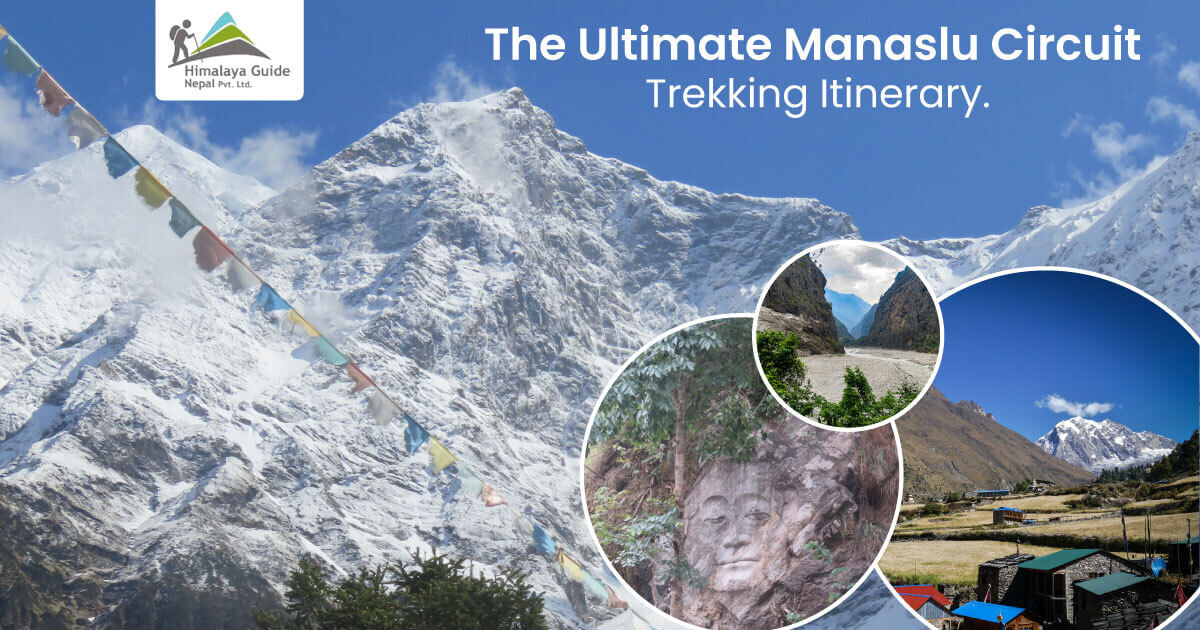
22 May 2023 Chandra Gurung
If you’re looking an off-the-beaten-path adventure in Nepal, the Manaslu Circuit Trek should be at the top of your list. This trekking route is becoming increasingly popular and offers a one-of-a-kind experience as it takes you around the eighth-highest peak in the world, Mount Manaslu, which stands at a staggering height of 8,163m. You can uncover all the details regarding the Manaslu Circuit Trekking Itinerary on this site.
Table of Contents
Introduction of Manaslu Circuit Trek
Before we delve into the itinerary, let us give you an overview of the Manaslu Circuit Trek. The trek will encircle Mount Manaslu , which rises to a height of 8,163 meters (26,781 feet), making it the eighth-highest summit in the world. It is located in Nepal’s Gorkha district. The trek is around 177 kilometres (110 miles) long and takes 14-16 days to complete.
The Manaslu Circuit Trek offers trekkers a chance to witness the pristine beauty of the Himalayas, explore remote villages, and experience the region’s unique culture. The trek takes you through dense forests, terraced fields, and high mountain passes, making it an exhilarating and challenging journey.
Starting from Soti Khola, you will embark on an exhilarating journey. For a couple of weeks to explore the beauty of Manaslu through trekking. This trek will be the best for those looking to explore the unexplored, isolated areas of the middle Himalayas. With expert guidance and comprehensive support from Himalaya Guide Nepal , you can create a new and exciting chapter . Manaslu circuit trek will be your travel memories for life time.
Manaslu Circuit Trekking Itinerary
In this article, Himalayan Guide will provide you with ultimate Manaslu Circuit Trekking itinerary, covering everything from Day 1 to Day 14.
Itinerary Overview
Here is a breakdown of the Manaslu Circuit Trekking Itinerary:
Day 0: Arrival in Kathmandu (1,350 meters)
Day 0: Explore Kathmandu and obtain trekking permits
Day 1: kathmandu to soti khola (710m).
Day 2: From Sota Khola to Macha Khola (900m)
Day 3: Machha Khola to Jagat (1410m)
Day 4: jagat to deng (1804m), day 5: deng to namrung (2630m), day 6: namrung to lho (3180m), day 7: lho to samagaon (3530m).
Day 8: Rest day in Samagaon
Day 9: Samagaon to Samdo (3860m)
Day 10:Samdo to Dharamsala (4460 m)
Day 11:Dharamsala to Bimthang (3590 m)
Day 12:Bumthang to Tilije (2300 m)
Day 13:Tilije – Dharapani to Besisahar (760 m)
Day 14:Besisahar to Kathmandu (1350 m)
Rise and shine! After enjoying a delicious breakfast, it’s time to meet with your guide for the Manaslu circuit trek at our office. The briefing will be a wonderful opportunity to connect with your tour leader and learn more about the planned trekking program before you start your journey.
Hence ,at the briefing, your guide will give you all the detailed information you need before getting ready for the forthcoming journey.
In your spare time today, visit nearby heritage and religious sites steeped in rich history and culture.
Day one of your Manaslu circuit treks, you’ll start your journey from Kathmandu and make your way to Soti Khola, which sits at an elevation of 710m. It will take around 8-9 hours from Kathmandu to Soti Khola, and you will pass through beautiful landscapes and charming villages.
You’ll drive through Dhading Besi, Arughat, and finally reach Soti Khola. Walking toward Soti Khola, you’ll be surrounded by stunning scenery, including rolling hills, lush forests, and the roaring Budhi Gandaki River.
Day 2: Soti Khola to Machha Khola (900m)
On second day of your trek, you’ll leave Soti Khola and make your way toward Machha Khola, which sits at an elevation of 900m.
The trail will take you through charming villages and lush forests, and you’ll cross several suspension bridges. Depending on your pace, it will take 6-7 hours to get to Machha Khola from Soti Khola. As you approach Machha Khola, you’ll notice the landscape changes, with more rocky terrain and fewer trees. We will spend that night at a lodge by the Gurung community.
On day three, we’ll start our journey to Jagat, 1410m above sea level. The trekking trail from Machha Khola to Jagat takes you through a mix of terrain, from rocky paths to lush forests, and offers breathtaking views of the surrounding hills and valleys.
As you go along the trail, you’ll cross the Machha Khola River and climb a steep hill before descending to a sandy river bed. After crossing the river, you’ll trek through small villages and farmlands before arriving at Jagat, a small village on the banks of the Budhi Gandaki River.
Day fourth of trek, you’ll leave Jagat and continue towards Deng, which sits at 1804m.
Even though a series of difficult ascents and descents and some lovely woods and tiny settlements are all part of the walk from Jagat to Deng. It will be a wonderful trek.
The scenery starts to alter as you get closer to Deng, with more rocky cliffs and rougher terrain becoming more common. Deng, a little village with a few teahouses and shops, is a nice stop to relax and replenish before continuing your journey.
On the fifth day of your Manaslu circuit trek, you’ll leave Deng and continue towards Namrung, which sits at 2630m.
The trekking trail from Deng to Namrung takes you through some stunning forests, rocky cliffs, and small villages. Namrung is a small village with a few teahouses and shops known for its stunning views of Manaslu and the surrounding mountains.
Next day of your Manaslu circuit trek, you’ll leave Namrung and continue towards Lho, which sits at 3180m.
The trekking trail from Namrung to Lho takes you through incredible alpine forests, rugged terrain, and small villages. Along the trail, you’ll see beautiful views of the snow-capped Himalayan peaks, especially Manaslu, the eighth-highest mountain in the world.
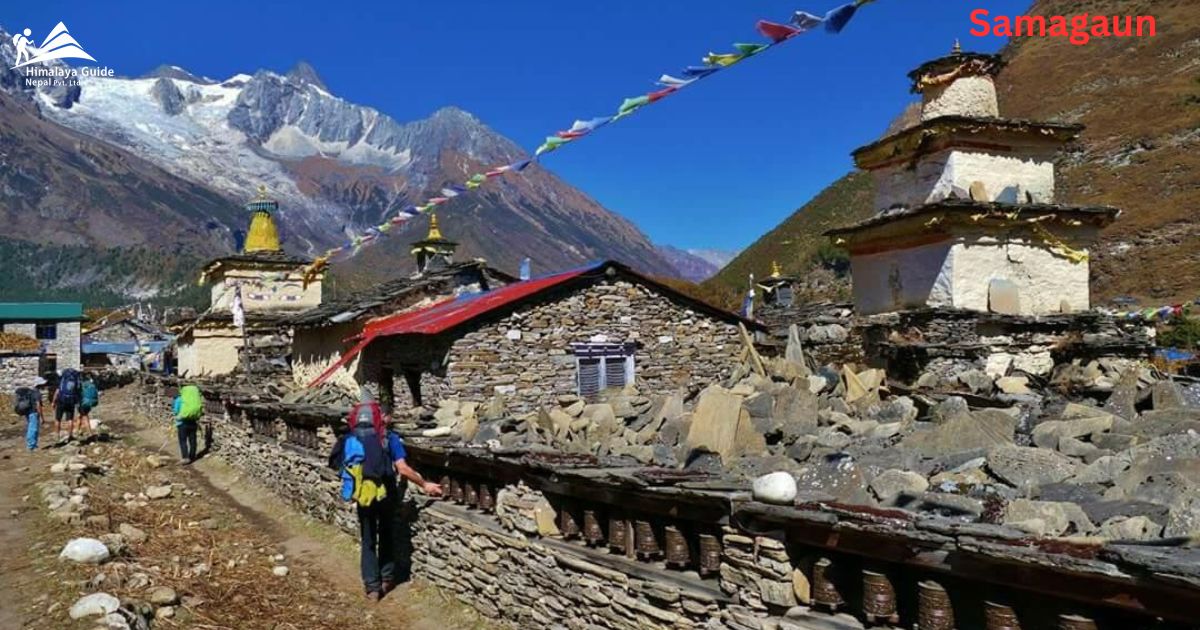
Seventh day of your Manaslu circuit trek, you’ll leave Lho and continue towards Samagaon, which sits at 3530m. Samagaon is a small village with a few teahouses and shops and is known for its incredible views of Manaslu and the surrounding mountains.
You can visit the nearby Pungyen Gompa, a centuries-old Buddhist monastery, and learn about the rich culture and history of the region. Get a good night’s rest and prepare for the next day’s trek, which will take you further into the mountains and offer even more incredible views.
Day 8: Rest day in Samagaon
Acclimatization is crucial for safe and effective Mountain trekking. Samagaon, 3525 meters above sea level, is the perfect place to recuperate and plan upcoming treks. The magnificent mountain views from the village make it worthwhile for you to visit.
Around Samagaon, there are many chances for short hikes. A few popular hiking spots near Samagaon are Punggyen Gompa, Manaslu Base Camp, and Monastery of Sama Town. Spend the evening at a lodge.
On day nine of your Manaslu circuit trek, you’ll leave Samagaon and continue towards Samdo, which sits at 3860m.
The trekking trail from Samagaon to Samdo takes you through some stunning alpine landscapes, with towering mountains and glaciers all around you. As you ascend higher into the mountains, you’ll notice the effects of altitude, making trekking more challenging. Animals like the Himalayan blue sheep and beautiful birdlife might also be seen.
Day 10:Samdo to Dharmsala (4460 m)
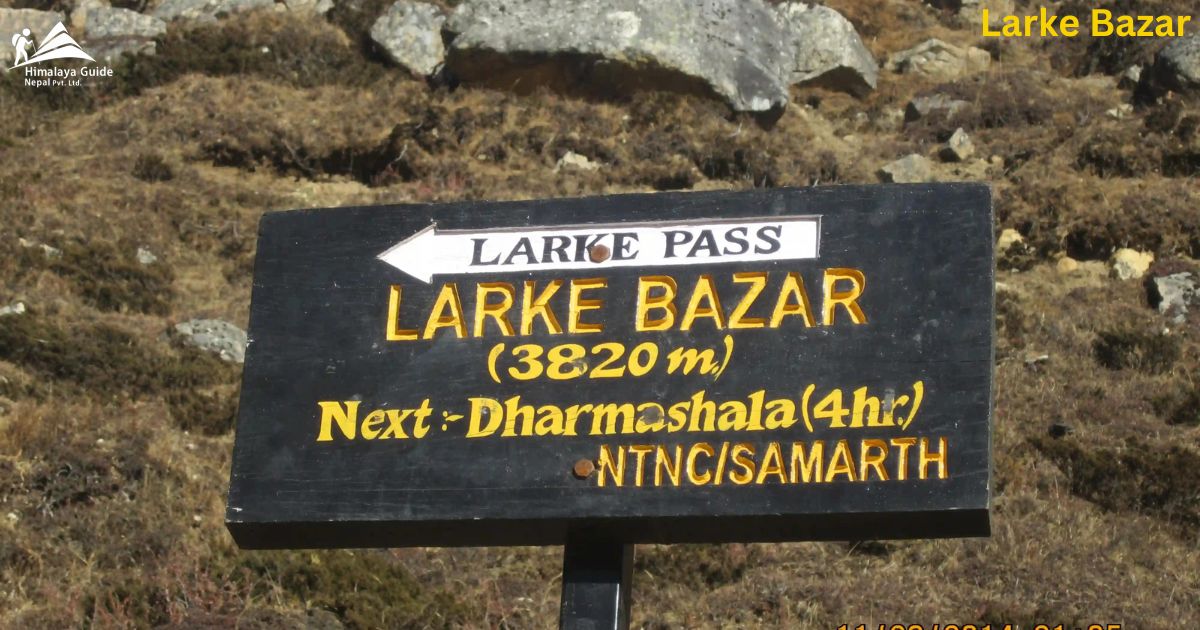
Tenth day of your Manaslu circuit trek, you’ll leave Samdo and continue towards Dharamshala at an elevation of 4460m. You will encounter some incredibly rugged terrain, with rocky cliffs, glaciers, and stunning mountain views through the path from Samdo to Dharamsala.
In fact, Dharamsala, also known as Larkya Phedi, is the final halt before navigating the Larkya La Pass and is a small community with a few teahouses and shops. Take in the breathtaking views in Dharamsala before having a full night’s sleep and getting ready for the strenuous walk over the pass the following day.
Day 11:Dharamsala – Larkya Pass to Bimthang (3590 m)
You will depart Dharamsala on day eleven of your Manaslu circuit trip and start the strenuous walk over the Larkya La Pass, located at 5160m, before descending to Bimthang at 3590m.
One of the hardest parts of the Manaslu circuit trek is the walk through the Larkya La Pass, which features steep slopes and rocky terrain. Whereas the pass provides breathtaking views of the area’s mountains, glaciers, and valleys, but it’s crucial to move gently and pay attention to your health to prevent altitude sickness.
Next you will start your descent toward Bimthang after passing through the pass. As you descend into the lower altitudes’ lush trees, the trail progressively becomes less strenuous after first being steep and rocky. Likewise, spend time exploring the village and enjoying the beautiful surroundings before resting in your accommodations for the night.
Day 12: Bimthang to Tilije (2300 m)
On day twelve of your Manaslu circuit trek, you’ll leave Bimthang and continue your descent through the lush forests. Similarly, the valleys towards Tilije, with stops at Yak Kharka and Gho.
The trek from Bimthang to Yak Kharka is relatively gentle, gradually descending through lush forests and small streams.
Then the trail between Yak Kharka and Gho is relatively flat and easy. The trail is gentle and easy that descent through the forests and meadows. Furthermore , spend some time at Gho resting and recharging before continuing to Tilije.
Day 13:Tilije to Besisahar (760 m)
This day will be your last day at Manaslu circuit trek. Therefore you’ll leave Tilije and continue your descent towards Besisahar, with stops at Dharapani and Tal along the way. In addition,the journey from Tilije to Dharapani is straightforward, consisting of a steady downhill via many villages and terraced fields.
You will go from Dharapani to Tal, a little community at the base of an amazing waterfall. Again the route from Dharapani to Tal is generally flat and simple, gently descending through meadows and woodlands. Following this before going to Besisahar, stop and rest for a while at Tal.
The last section of the journey from Tal to Besisahar is straightforward. The charming villages, terraced farms, lovely forests, and streams will make you delighted. Besisahar is the end point of a 14-day-long trek.
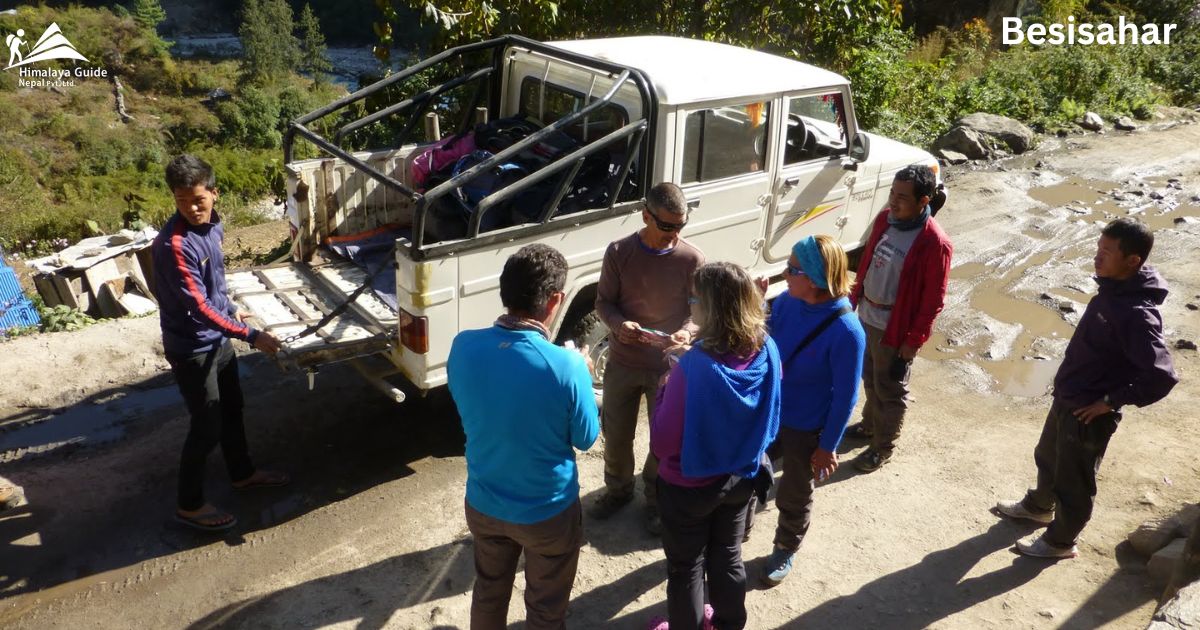
Next you will depart Besisahar on the fourteenth day.It will be your last day of your Manaslu circuit trip and return to Kathmandu by bus or jeep.It will all depend on your preferences.
Hence, the drive from Besisahar to Kathmandu takes around six to seven hours. And you’ll pass through some stunning landscapes and small towns.

Destinations
Trekking type, manaslu circuit trek: a journey through the heart of nepal, by jan bakker.

The Manaslu Circuit is a classic trek hidden in plain sight. Wedged between the Annapurnas and the Ganesh Himal, this stunning route is often overshadowed by its more famous neighbor Annapurna Circuit. It’s a journey back in time, passing through Tibetan style villages on ancient trails that were once used as a salt-trading route with Tibet. Combine this with towering glaciated peaks that reach over 8000 meters and you’ve got yourself a world class trekking experience.
The Manaslu Circuit is a restricted area and it requires multiple permits to be allowed. Hence this valley is not overrun by hordes of trekkers and has kept its cultural identity. At Bookatrekking.com we help a dozen hikers per year to hike this special, secluded route. Keen to see it for yourself? Get in touch with our Trekking Expert!
What Makes The Manaslu Circuit Trekking Special?
What is the best time to do the manaslu circuit trek, the manaslu circuit vs the annapurna circuit, how difficult is the manaslu circuit trek, what permits do i need for the manaslu circuit trek, our 12-day manaslu trek, manaslu circuit map, what type of accommodation can i expect while doing the manaslu circuit, packing list for the manaslu circuit trek, how to identify and prevent ams on the manaslu circuit trek, where can i book the manaslu circuit trek.
The Manaslu Circuit, located in the Manaslu region of Nepal, stands out as a special trekking route for various reasons. Firstly, it offers a remote and less crowded experience compared to more popular treks, allowing trekkers to immerse themselves in the natural beauty without the hustle and bustle. The cultural diversity along the route is another highlight, with encounters with different ethnic groups like the Nubri and Tsum people. The trek showcases stunning scenery, including panoramic views of the Himalayan peaks, alpine forests, and terraced fields. The region is rich in biodiversity, providing opportunities to spot various flora and fauna, adding to the trek's allure. The challenge of crossing high-altitude mountain passes, especially the Larkya La Pass, contributes to the sense of achievement for trekkers.
Teahouse accommodations along the route enable trekkers to experience local hospitality and indulge in traditional meals. The fact that the Manaslu region is a restricted area requiring special permits helps in preserving its natural and cultural heritage. This trek also offers a more adventurous and authentic experience compared to some commercialized routes, fostering a stronger connection with nature and the local culture.
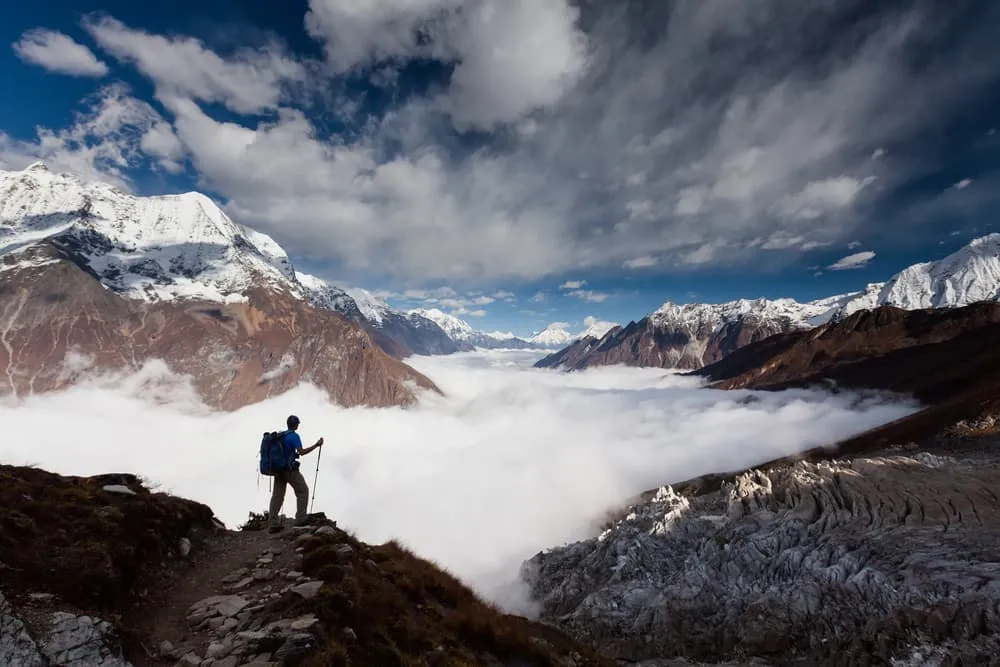
Manaslu Circuit Trek
The best time to undertake the Manaslu trek is during the pre-monsoon (spring) and post-monsoon (autumn) seasons. The specific months that are considered ideal for the trek are:
1. Spring (March to May) : This is one of the most popular times to do the Manaslu Circuit Trek. During spring, the weather is generally stable, and the temperatures are mild. The rhododendron flowers bloom, adding vibrant colors to the landscape. The visibility is excellent, offering clear views of the Himalayan peaks.
2. Autumn (September to November) : Another optimal time for the Manaslu Circuit Trek is the autumn season. The weather is stable and dry, and the skies are generally clear. The temperatures are comfortable, and the visibility is excellent, providing stunning views of the surrounding mountains. Autumn is considered the peak trekking season in Nepal.
Both of these seasons offer favorable weather conditions, making trekking more enjoyable and safe. However, it's important to note that the Manaslu region is prone to heavy snowfall during the winter months (December to February), and the monsoon season (June to August) brings heavy rains, making these periods less suitable for trekking.
Before embarking on the trek, it's advisable to check the current weather conditions and be aware of any changes in regulations or trekking permits. Additionally, individual preferences, such as tolerance for colder temperatures or a desire for fewer crowds, may influence the choice of the best time to undertake the Manaslu Circuit Trek.
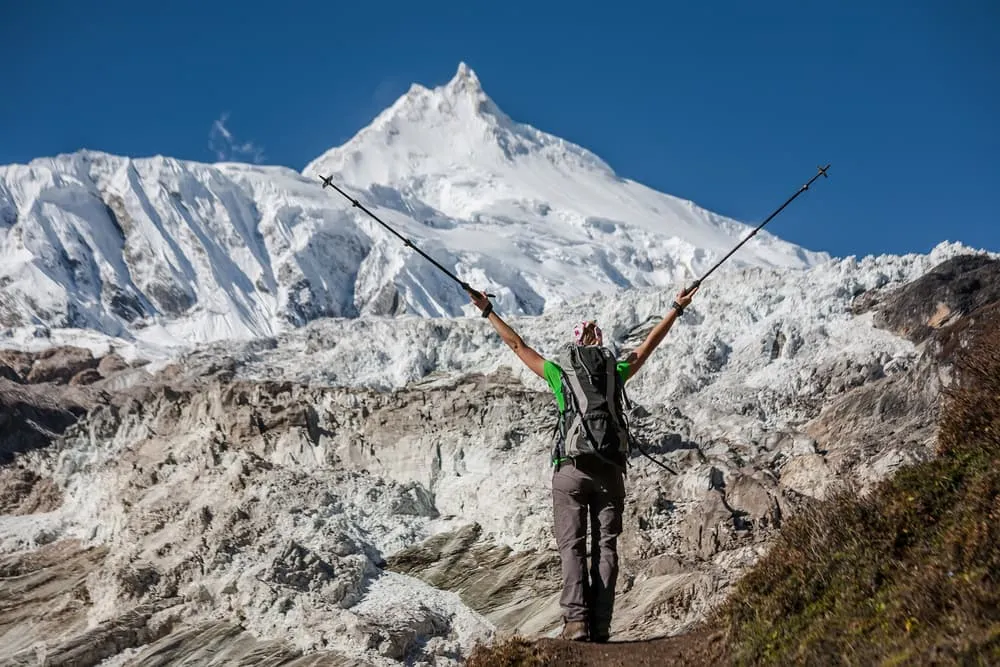
Choosing between the Manaslu Circuit and the Annapurna Circuit for trekking in Nepal involves considering various factors that cater to individual preferences and trekking goals.
The Manaslu Circuit stands out for its relatively lower popularity, offering a less crowded and more remote trekking experience. The trail takes you off the beaten path, providing a sense of exploration and adventure. The region is known for its cultural diversity, with encounters with different ethnic groups like the Nubri and Tsum people. The restricted access and special trekking permit add to the trek's appeal, contributing to the preservation of the area's natural and cultural heritage. Additionally, the trek offers stunning views of Mount Manaslu, at 8163 meters the eighth highest mountain in the world. On the other hand, the Annapurna Circuit has its own attractions , including diverse landscapes, ethnic villages, and the iconic Thorong La Pass. It is more developed in terms of infrastructure and facilities, making it a more accessible option for some trekkers.
The decision between the two treks depends on personal preferences for solitude, cultural diversity, and the level of adventure sought. Both the Manaslu Circuit and the Annapurna Circuit offer unique experiences, and the choice ultimately rests on the trekker's individual priorities and interests.

The Manaslu Circuit, from a technical standpoint, is relatively easy. It primarily involves walking, although at higher elevations the trail becomes a little rough in places.The advantage of staying in tea houses each night instead of camping adds to the convenience. This setup allows for a comfortable rest without the hassle of logistics or concerns about getting cold. The real challenge of the Manaslu Circuit, however, often stems from its high altitude. It is, after all, a trek at considerable heights, reaching an elevation of 5106 meters at the Larkya La. The final approach to the pass is covered in snow most of the year.
The length of the Manaslu Circuit trekking route also contributes to the demanding nature of the trek. The route that we do covers a distance of 122 kilometers with plenty of vertical gain. Some days involve hiking more than 15 kilometers. These factors make the trek quite challenging, regardless of whether you're a beginner or an experienced hiker. Over an extended period on the trail, you'll feel your body becoming fatigued. Nevertheless, perhaps it's this very challenge that gives you a genuine sense of accomplishment upon completing the entire route. With proper training for the Manaslu Circuit and the right mindset, most trekkers can successfully undertake this adventure.
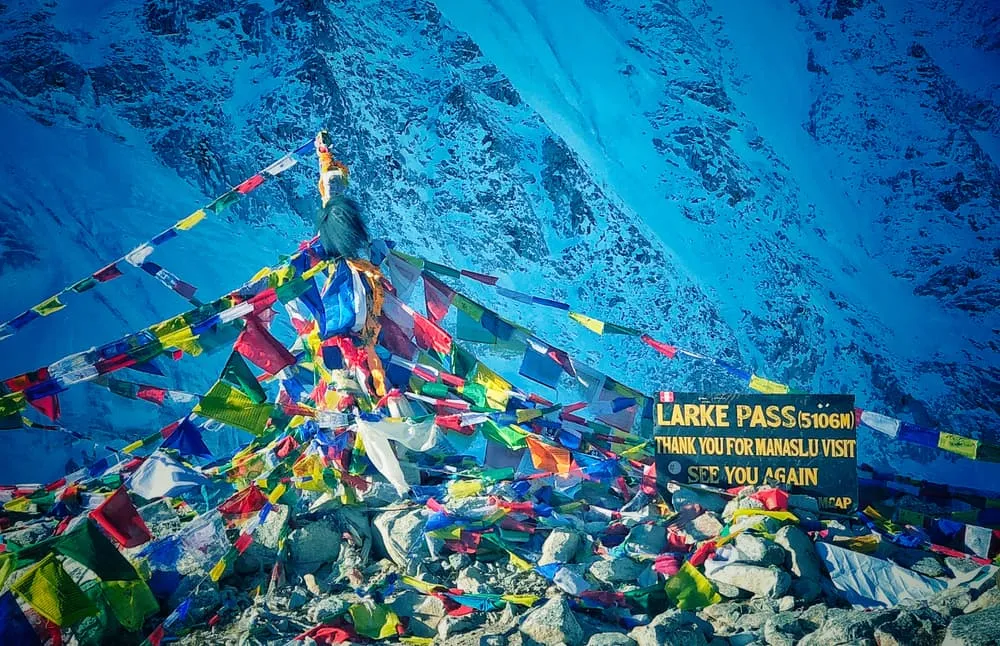
To trek in the Manaslu region, you will need three kinds of permits issued by the Government of Nepal.
Manaslu Restricted Area Permit (RAP)
-The Manaslu Restricted Area Permit costs USD100 for first seven days and USD15 each additional day during September to November.
- Manaslu trek permit costs USD75 for first 7 days and USD10 each extra day from December to August.
Manaslu Conservation Area Permit (MCAP):
- In addition to the RAP, trekkers need the MCAP for the Manaslu Conservation Area.
- This permit can be obtained in Kathmandu or at the entry points to the Manaslu region.
Annapurna Conservation Area Permit (ACAP):
- The Manaslu Circuit Trek often includes parts of the Annapurna region.
- Trekkers might need the ACAP, which can be obtained in Kathmandu or at the entry points to the Annapurna region.
All permits are arranged by our local team in Nepal.
The Manaslu Circuit trekking route used to be done on a 15-day trip from Kathmandu. The trailhead and trail end of the Manaslu trek is now deeper in the valley and therefore we have shortened the trek to avoid walking on the road. Below is our 12-day itinerary.
Drive from Kathmandu to Machha Khola
Machha khola.
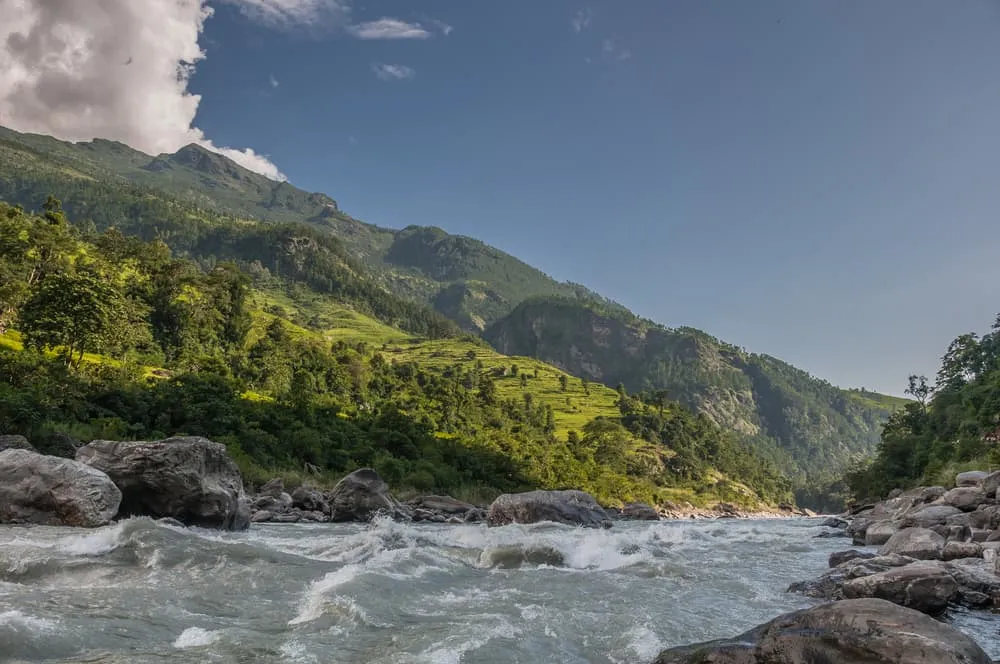
Trek to Jagat

Trek to Deng
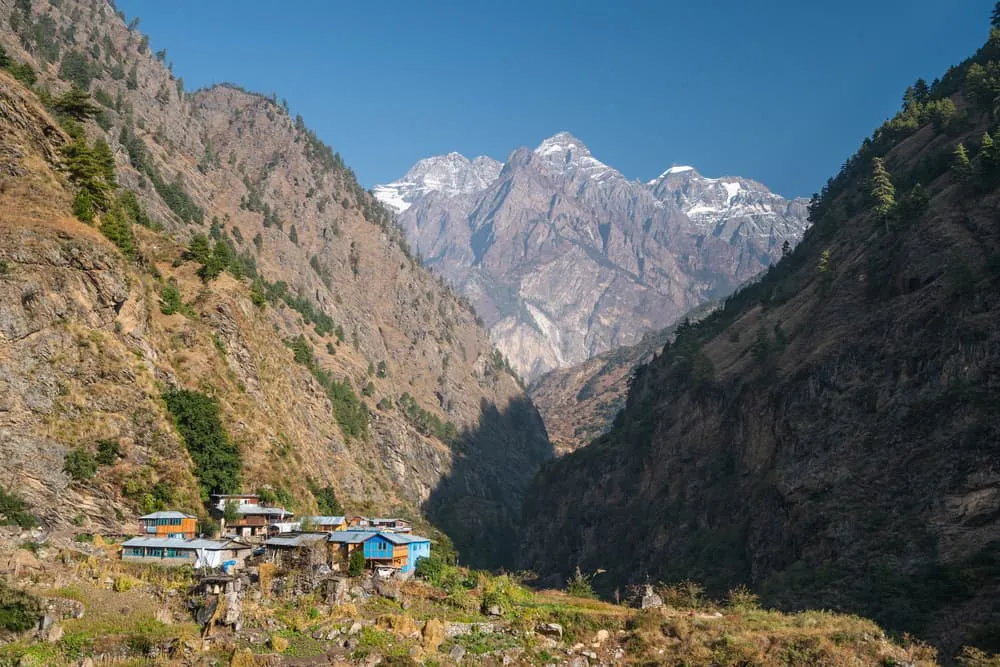
Trek to Namrung
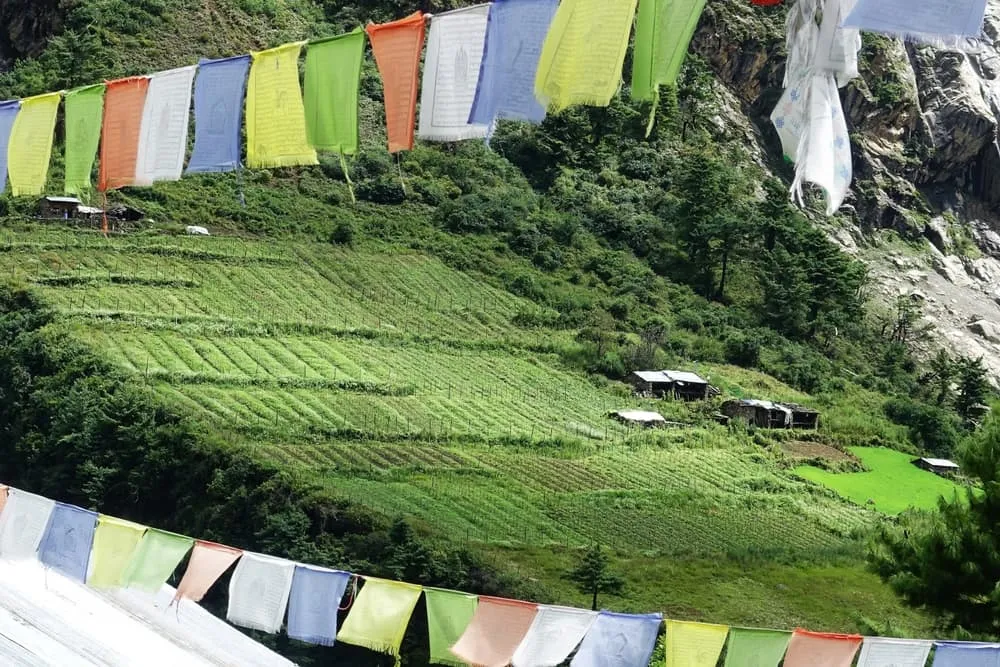
Trek to Lho
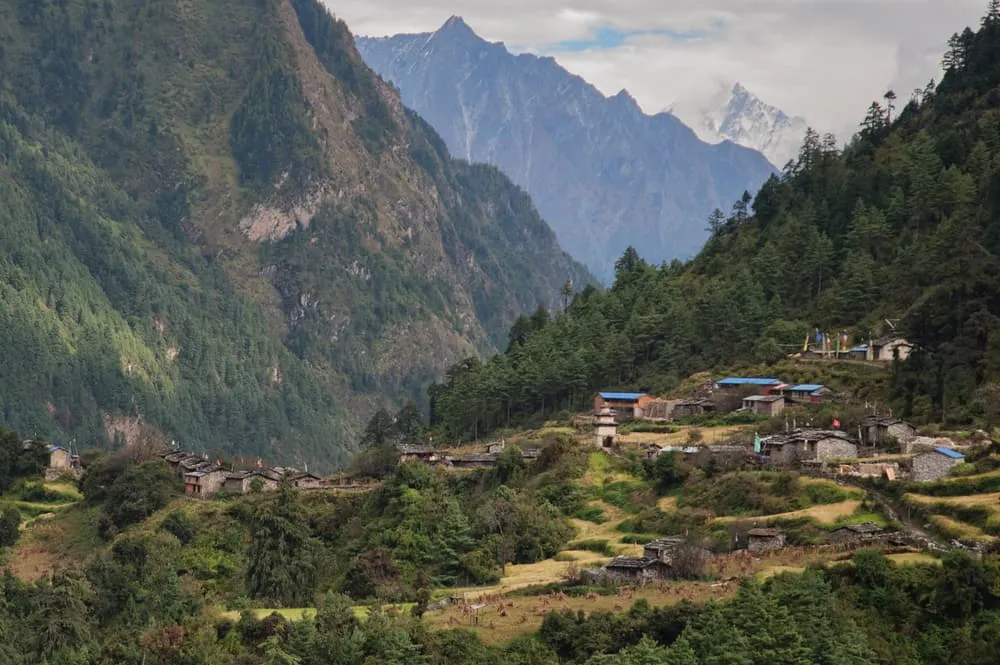
Trek to Sama Gaon
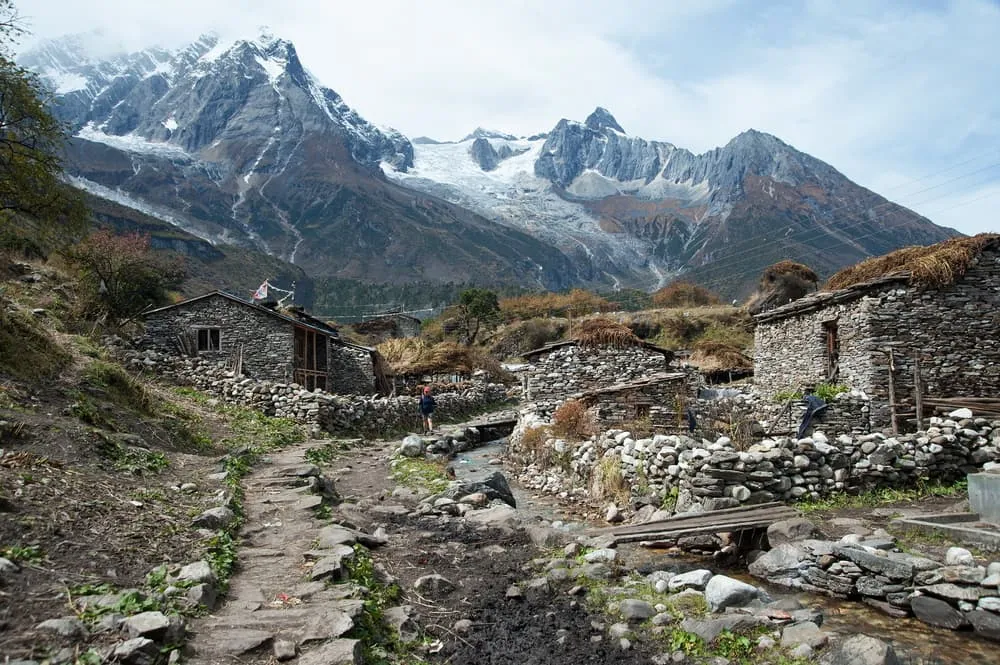
Acclimatization at Sama Gaon
Trek to samdo.
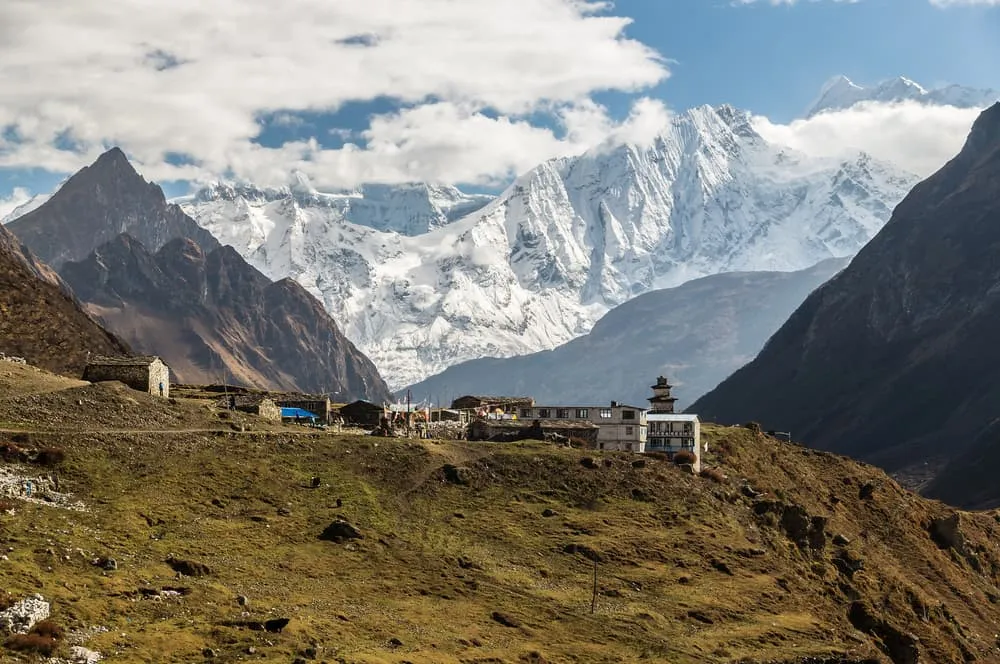
Trek to Dharamasala
Dharamasala.
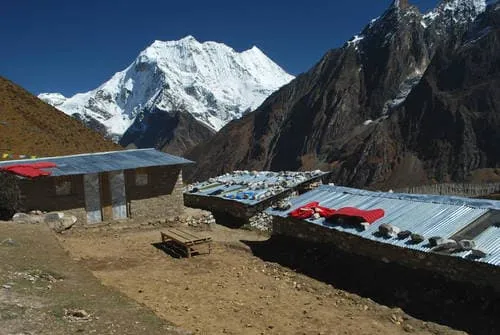
Cross Larkya Pass (5106m) and trek to Bhimtang
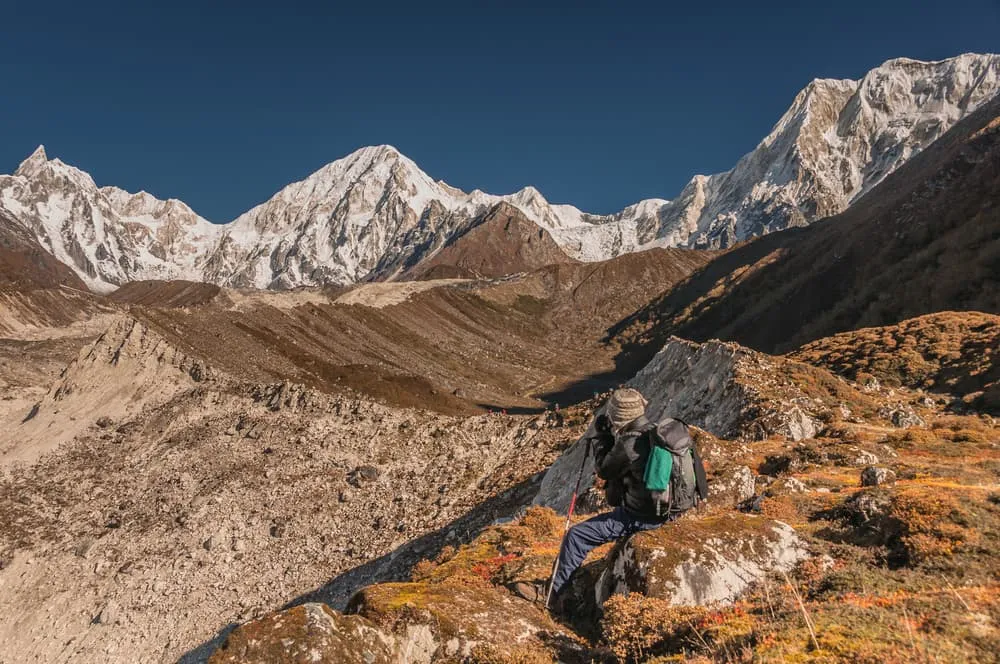
Trek to Dharapani
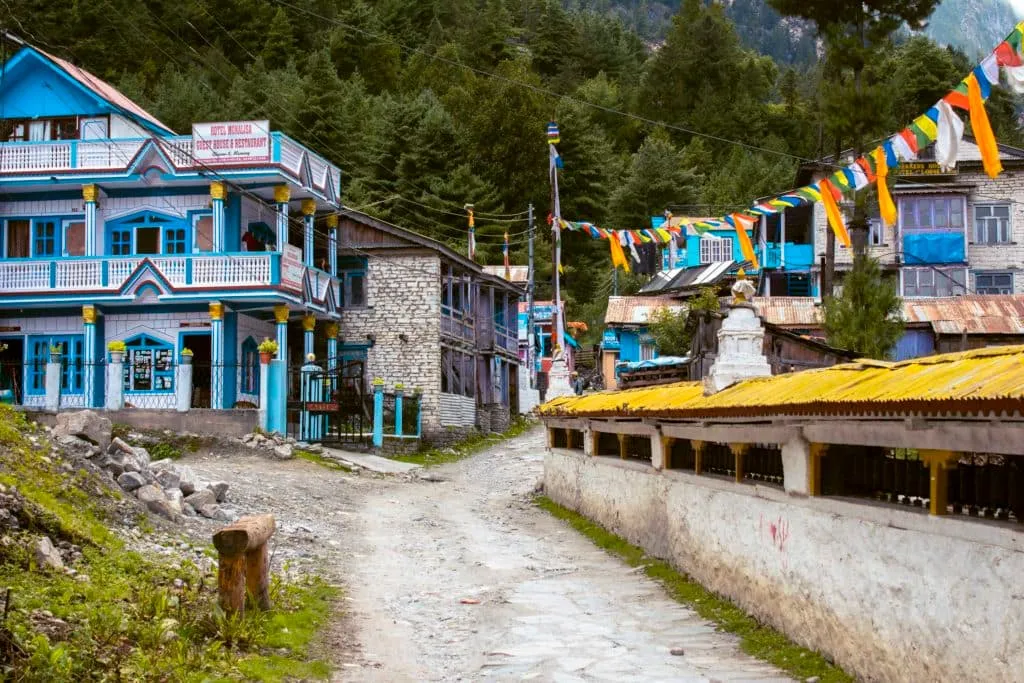
Drive from Dharapani to Kathmandu
Curious what the Manaslu trek route looks like? Check our Manalsu trek map on Komoot!
Tea houses in Nepal, particularly in popular trekking regions like Annapurna and Everest , serve as essential accommodations for trekkers. These establishments provide a communal and cozy atmosphere, offering basic sleeping arrangements, communal dining areas, and local cuisine. The hosts are known for their warm hospitality, creating a social environment where trekkers from diverse backgrounds can interact.
Tea houses often serve simple yet hearty Nepali dishes such as dal bhat and noodles. Facilities can vary, with some places providing hot showers and electricity, but trekkers should be prepared for basic living conditions, especially at higher altitudes. The scenic locations of tea houses, surrounded by breathtaking landscapes and mountain views, enhance the overall trekking experience. As trekkers ascend to more remote and challenging terrains, the facilities may become more basic, with accommodation sometimes taking the form of simple lodges or guesthouses. Trekkers may need to book in advance, particularly during peak trekking seasons when tea houses can fill up quickly.
One of the unique aspects of staying in tea houses is the cultural experience they offer. Trekkers have the opportunity to interact with local communities, learn about their traditions, and gain insights into the rural way of life in the Himalayan regions of Nepal. Despite the basic amenities, tea houses contribute significantly to the charm and authenticity of the trekking adventure, making them an integral part of the overall journey.

Accessories
It's essential to understand that altitude sickness can affect anyone, regardless of age, fitness level, or previous high-altitude experience. These days there are several tools to monitor your health at altitude. A widely-used (analog) method is the Lake Louise score card. It ticks the altitude symptoms while keeping the severity in mind. It’s a common tool used by guides. Nowadays, most trekking and mountain guides bring a blood oxygen saturation meter, which also measures the heart rate. These are key indicators whether a person adapts to altitude well or not. AMS can occur when trekking the Manaslu Circuit Trek. Below you can find everything you need to know about altitude sickness.
Acute Mountain Sickness (AMS)
Altitude sickness, also known as Acute Mountain Sickness (AMS) is a health condition that occurs when someone is exposed to low levels of oxygen at higher altitudes. AMS is a serious condition and as the name suggests acute. It needs to be dealt with immediately, as it is potentially life-threatening. Most people will experience some mild symptoms of altitude sickness. It’s important to be aware of these symptoms and act before symptoms become more severe. Below we break down the different forms of AMS and how you can reduce the risk of getting it.
AMS symptoms
It is key to know how to identify altitude illness. You may experience the following symptoms due to the jump in altitude: headache, lack of appetite, breathing difficulties, insomnia, nausea and vomiting. The intensity and severity of these symptoms may increase with altitude and an overall feeling of fatigue will take all your joy away. This may further deteriorate to one of these life-threatening conditions.
High Altitude Pulmonary Edema (HAPE) : HAPE is a condition in which fluid accumulates in the lungs, making it difficult to breathe. Symptoms may include shortness of breath, a persistent cough, chest tightness, and an increased heart rate. It can be a life-threatening condition and requires immediate descent to lower altitudes and, in severe cases, medical treatment.
High Altitude Cerebral Edema (HACE) : HACE is a more serious condition in which fluid accumulates in the brain. Symptoms may include severe headaches, confusion, loss of coordination, and altered mental status. HACE is also a medical emergency and requires immediate descent and medical attention. Below 7 ways of minimizing the risk of AMS:
1. Gradual Ascent
One of the most effective ways to prevent AMS is to ascend gradually. When traveling to high altitudes, try to take several days to acclimatize before going higher. This allows your body to adapt to the reduced oxygen levels. All our treks in Nepal keep sufficient acclimatization into account.
2. Stay Hydrated
Dehydration can increase the risk of AMS, so drink plenty of fluids. Avoid excessive alcohol and caffeine consumption, as they can contribute to dehydration.
Consume a balanced diet with adequate carbohydrates and avoid heavy, fatty meals. Carbohydrates can help your body utilize oxygen more efficiently at high altitudes.
4. Medication
Some individuals may consider taking medication, such as acetazolamide (Diamox), to help prevent AMS. Consult with a healthcare professional before using any medication, and be aware of potential side effects.
Ensure you get enough sleep and rest during your ascent. Fatigue can increase the risk of AMS.
6. Avoid Overexertion
Pace yourself and avoid overexertion. Listen to your body, and if you experience symptoms of AMS, rest or descend to a lower altitude.
7. Descend if Symptoms Persist
If you experience symptoms of AMS, such as headache, nausea, dizziness, or difficulty breathing, it's crucial to descend to a lower altitude. Symptoms should not be ignored or dismissed.
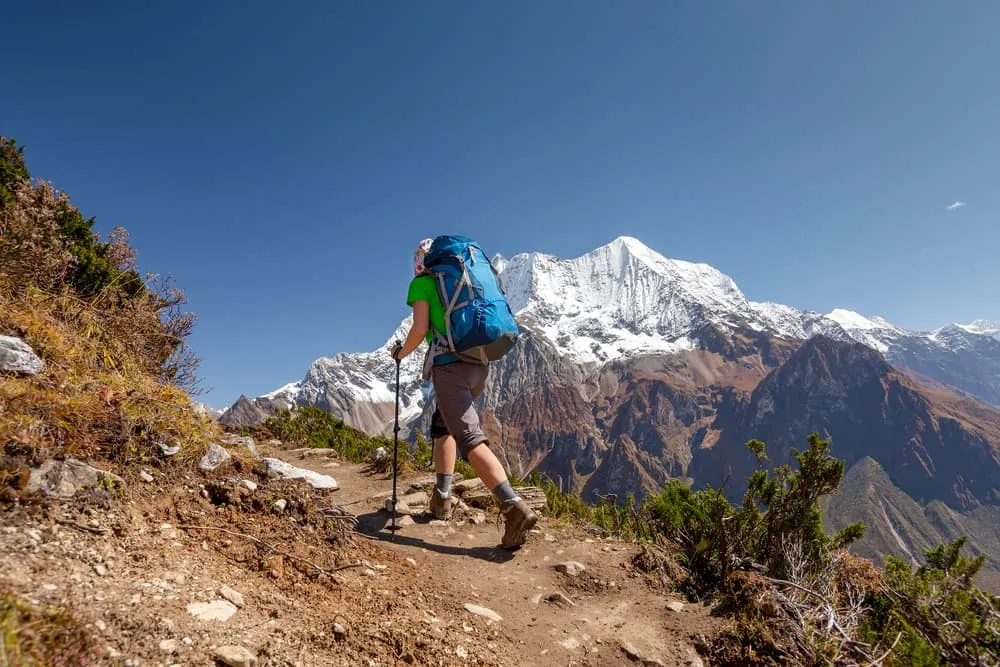
At Bookatrekking.com you can book this trek and many others. Our guided options come with experts on the ground, and offer you a convenient, stress-free, safe, and educational way to explore the outdoors. Find our offers here . Our easy-to-use platform allows you to browse and compare different trekking options and find the perfect fit for your interests, abilities, and budget.
If you have any questions about a specific trek or need help choosing the right one for you, our team of trekking experts is here to assist you. Simply reach out to us and we will be happy to provide you with personalized recommendations and advice to help you plan the trekking adventure of a lifetime.
Is this not your cup of tea and are you looking for other epic adventures? Check out one of our blog posts:
Summit climbs
- Climbing Kilimanjaro
- Climbing Triglav
- Climbing Island Peak in Nepal
- Climbing Mount Kenya
- Climbing Mount Elbrus
- Climbing Mount Kinabalu
- Climbing Toubkal
- Climbing Rinjani
- Everest Base Camp Trek
- Annapurna Circuit Trek
- Nepal Travel Guide
- Salkantay Trek
- Peru Travel Guide
Kilimanjaro
- Machame Route
- Lemosho Route
- Kili Travel Guide
Self-guided treks
- Tour du Mont Blanc
- West Highland Way
- Camino de Santiago

Also Interesting
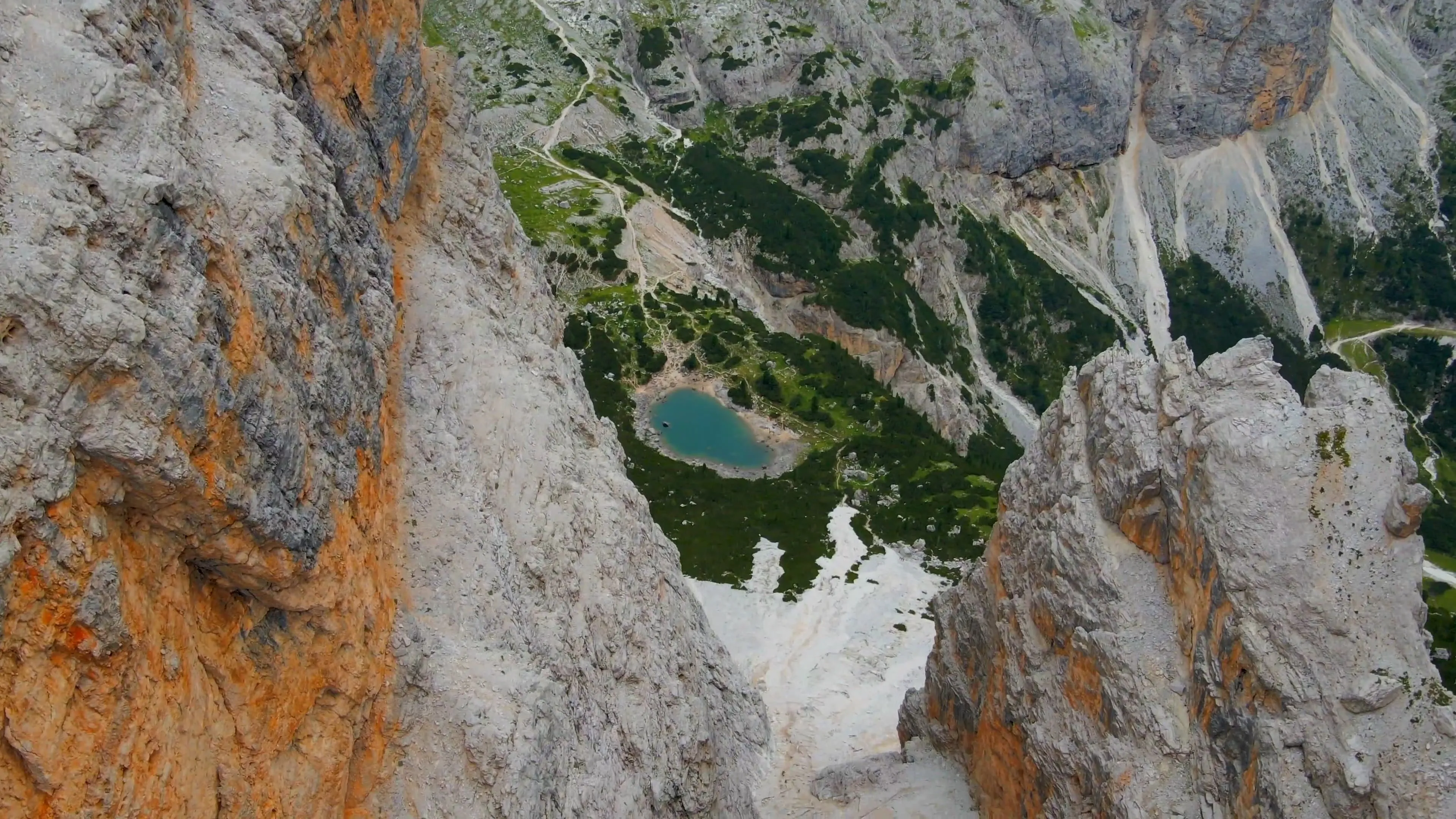
Alta Via 1: Map, Difficulty, and Route on the Italian Dolomites
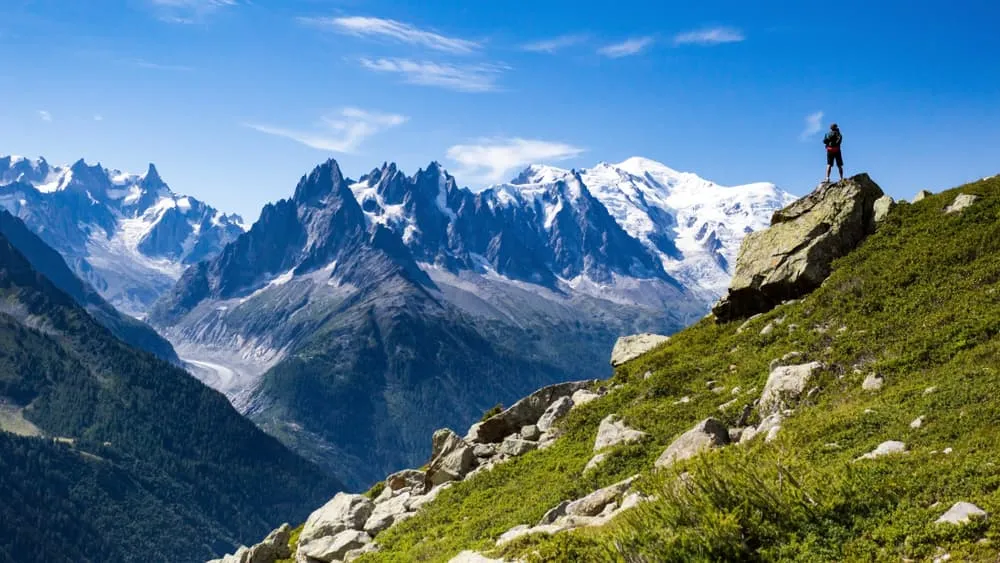
Tour du Mont Blanc: All You Need To Know
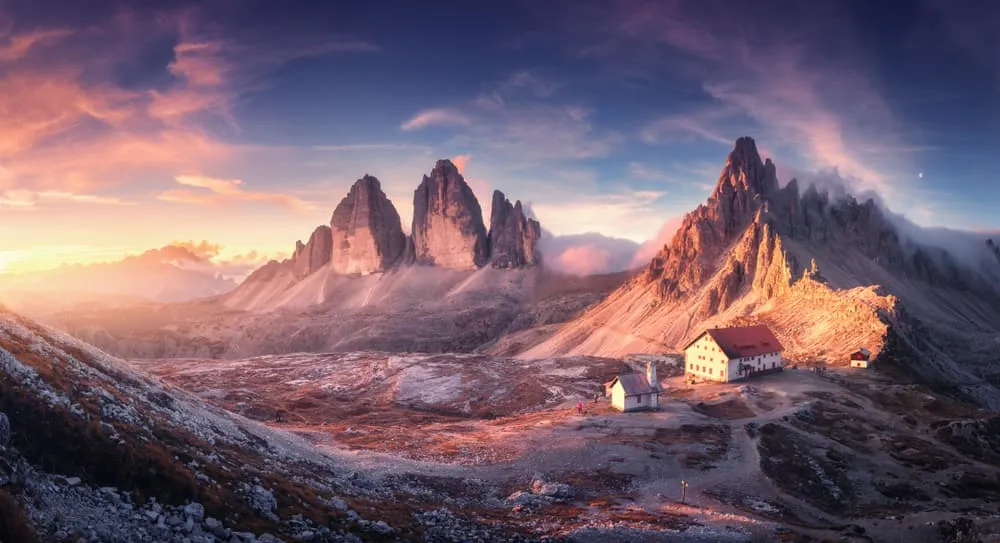
Dolomites Hiking: The 8 Best Options for Hiking Hut-to-Hut in Italy
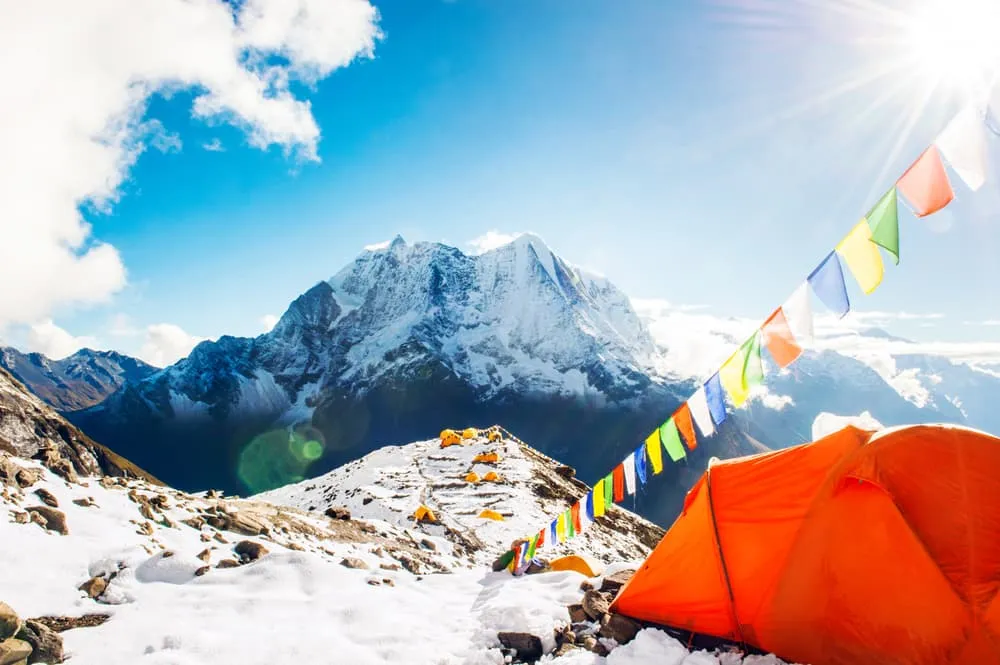
Everest Base Camp: A Trek to The Roof of The World
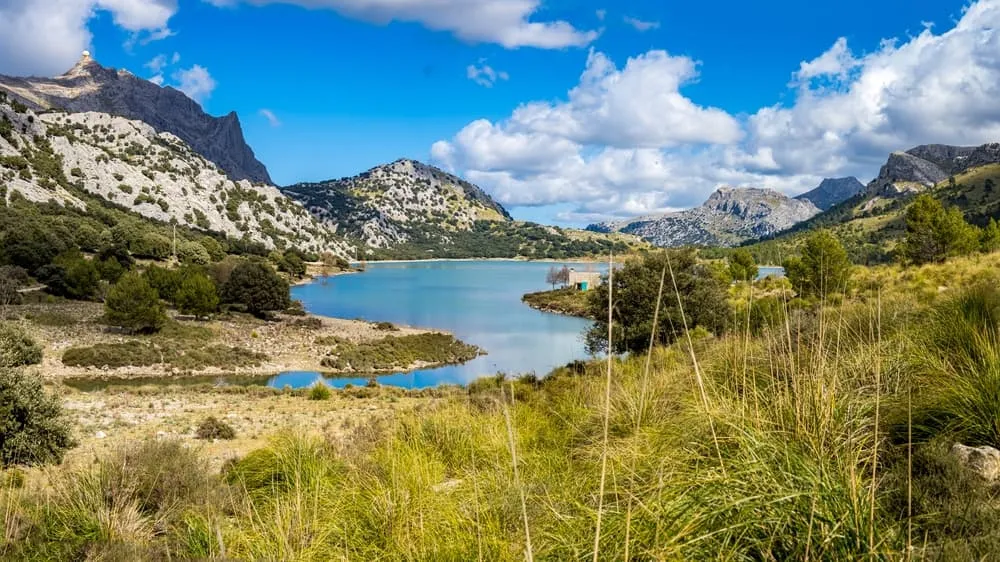
Hiking the GR221 in Mallorca: Everything You Need to Know
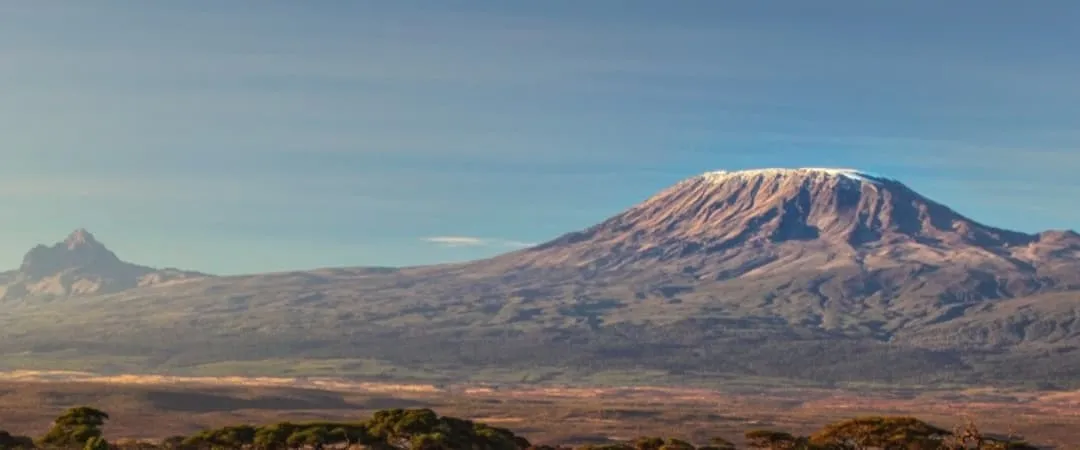
Climbing Kilimanjaro: All You Need To Know For Your Climb
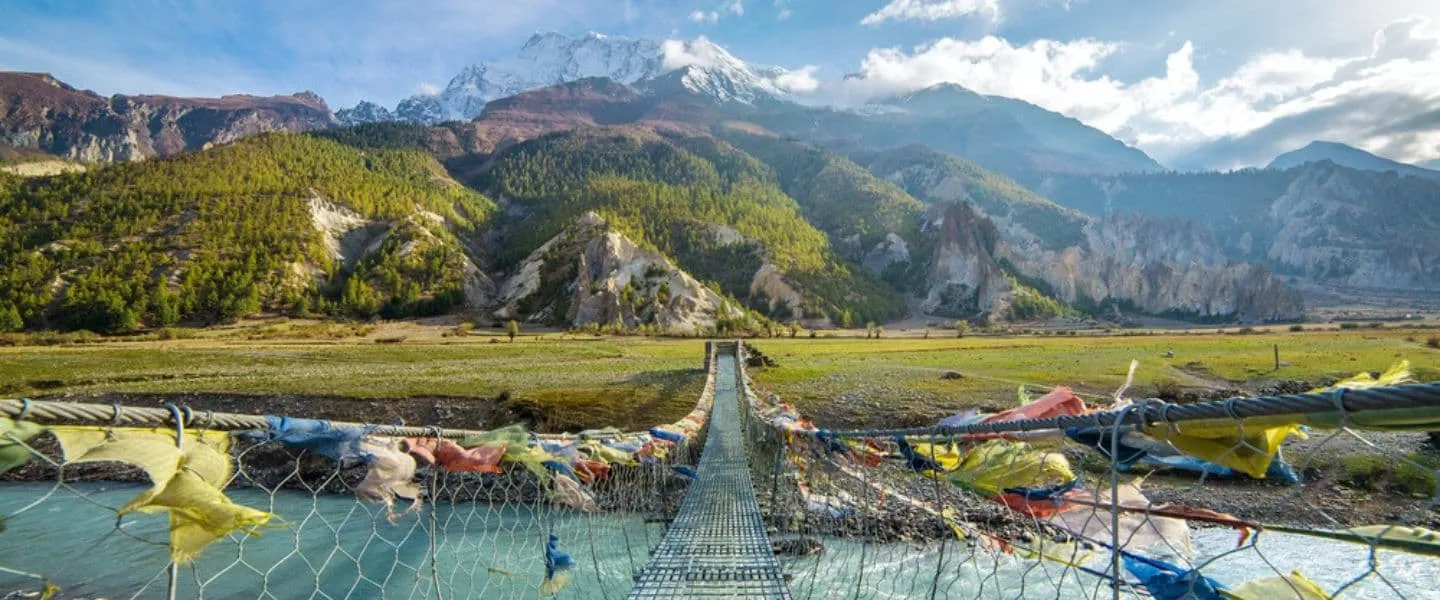
Annapurna Circuit Trek: How to Hike Around the Annapurnas
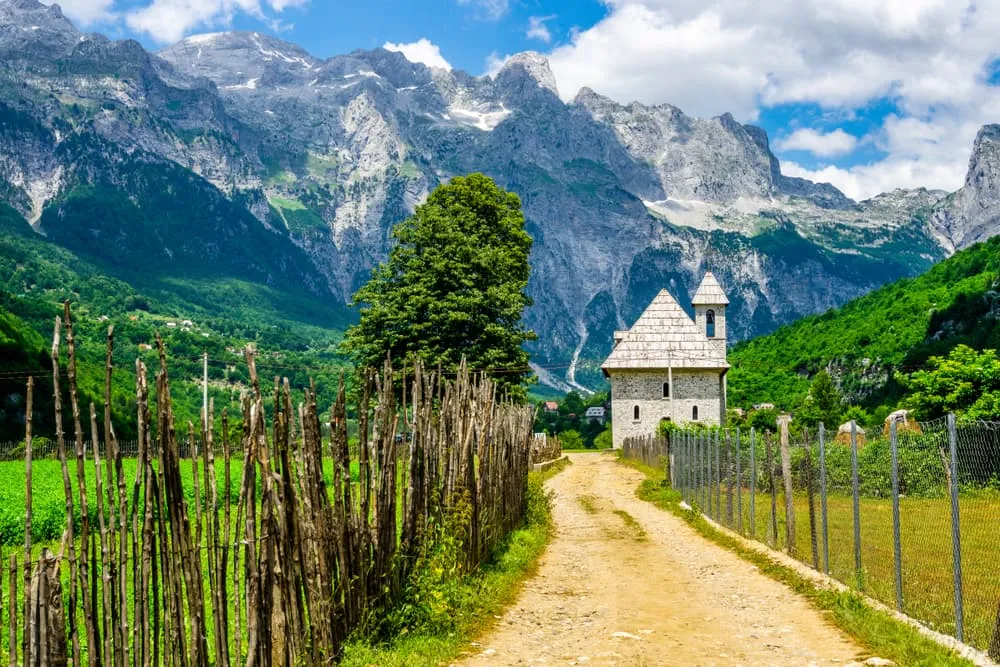
Peaks of the Balkans Trail: All You Need to Know

Hut-to-Hut Hiking in the Pyrenees: The 4 Best Walks
Get weekly inspiration with the best treks.


Manaslu Circuit Trek: A Journey to the Untamed Himalayan Frontier
- Last Updated on Jul 7, 2023
If you are into remote trekking and love to push your limits, then the Manaslu circuit is one of the excellent adventure packages for you in Nepal. You can do this trek in 12 to 24 days, as per your availability. Remote trekking is one of the most popular tourist activities in the Himalayas of Nepal. And Manalsu circuit package is one of the most loved ones.
Table of Contents
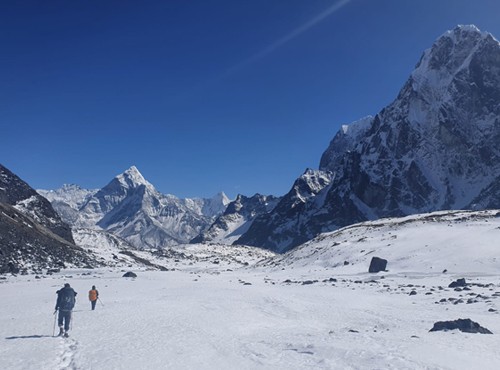
Everest Three passes Trek - 21 Days
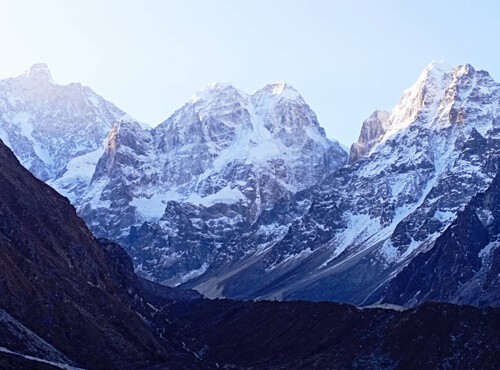
Kanchenjunga Circuit Trek - 19 Days
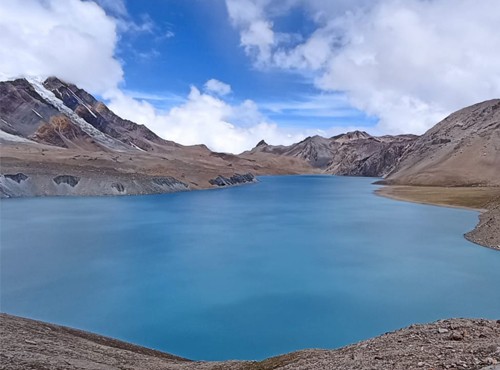
Annapurna Circuit Trek with Tilicho Lake - 19 Days
This trekking route has all the adventure, raw natural beauty, no crowd, and challenges. Unlike the Kanchenjunga circuit trek, Makalu base camp trek, and Upper Dolpo trek, which rely on camping, the Manaslu circuit will let you enjoy the same level of adventure and thrill while spending nights in teahouses.
*Note: The Manaslu region is a restricted area in Nepal, so travelers need special restricted area permits to trek.
Trekking in the Manaslu region is not just about physical adventure. It also offers a soul-stirring experience that connects you with nature's raw magnificence and the pristine spirit of the Himalayas. The region's untouched wilderness, gorgeous river valleys, rushing rivers, landslide areas, glacier paths, etc, make the journey a lifetime experience.
In this blog, we will talk about the famous and adventurous Manaslu circuit trek, where remote trails, towering peaks, and cultural encounters await. Get ready for an unforgettable journey in one of the hidden gems of the Himalayas.
Manaslu circuit trek
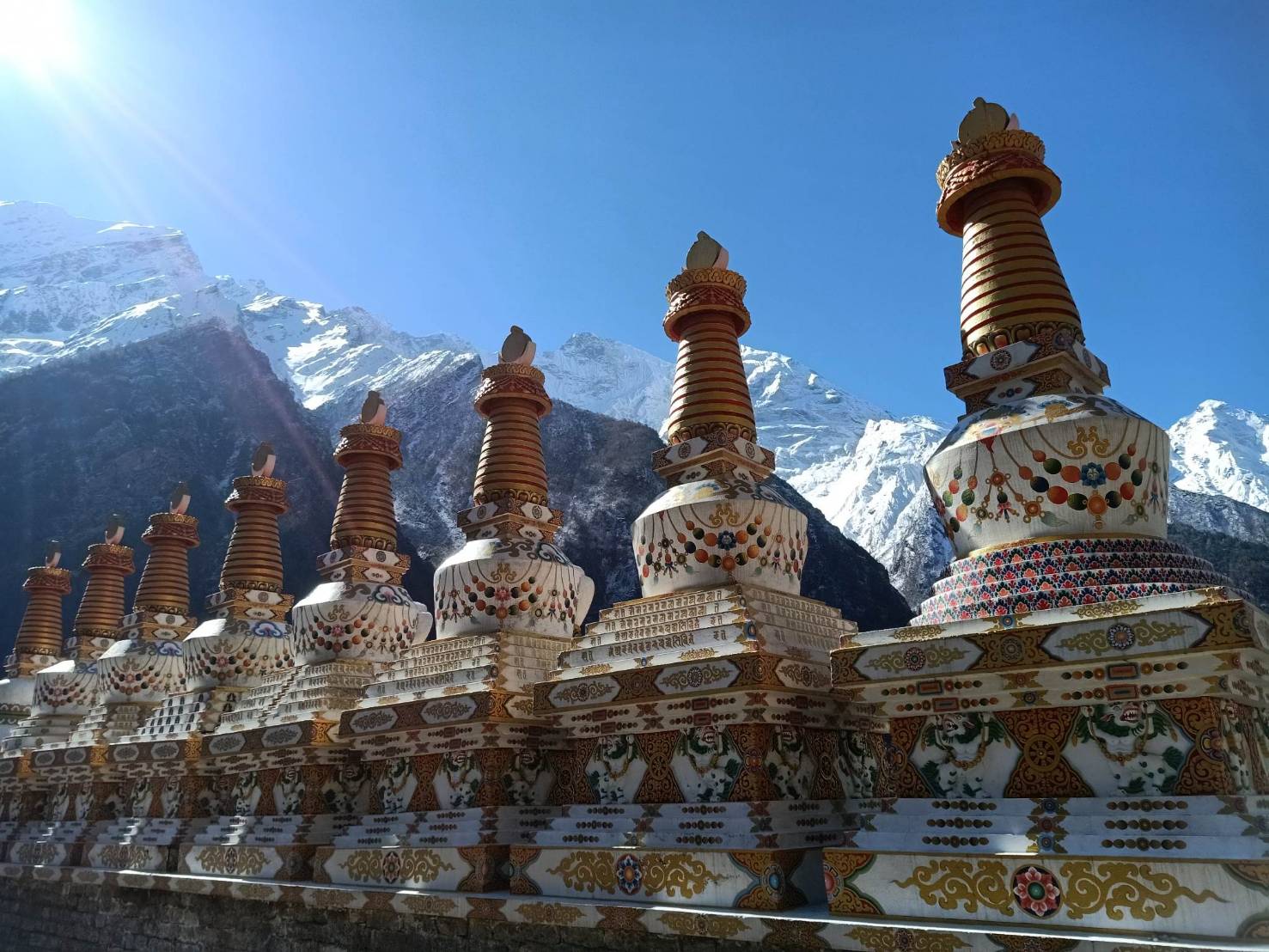
The Manaslu circuit is a renowned trekking route in the Himalayas, offering a unique and adventurous experience to trekkers. Situated in the western part of Nepal, the trek revolves around Mount Manaslu, the eighth-highest peak in the world. The region's remote and less-crowded trails provide an opportunity for trekkers to explore the pristine beauty of the Manaslu Conservation Area.
The trail takes trekkers through diverse landscapes, ranging from lush subtropical forests at lower elevations to rugged terrains and barren high-altitude areas as they ascend. The trek begins from Machha Khola, and as trekkers advance, they encounter several beautiful villages.
Crossing the Budi Gandaki River numerous times, the trail ascends through narrow gorges and leads to the Manaslu Base Camp (4400m.|14436ft.) and Birendra Lake (3691m.|12110ft.). Pun Gyen Gompa at 4800m.|15748ft. is also one of the highlights of this trek.
The terrain varies from steep ascents and descents to gentle rolling hills, challenging trekkers with its ruggedness and unpredictability. The most iconic part of the trek is the Larkya La pass, standing at an altitude of 5106m.|16751ft., offering breathtaking panoramic views of the surrounding peaks and glaciers.
Our carefully crafted Manaslu circuit trek itinerary takes into account the acclimatization needs of trekkers, allowing for a gradual ascent and proper rest days. Our experienced guides and porters will accompany you throughout the journey, ensuring your safety and providing valuable insights into the region's culture, history, and natural surroundings.
The Manaslu circuit trek is an opportunity to witness the raw beauty of the Himalayas away from the crowds. It is a chance to disconnect from the noise of modern life and immerse yourself in the serenity of nature. The trek challenges you physically and mentally, rewarding you with unforgettable memories and a sense of accomplishment as you conquer high mountain passes and overcome obstacles along the way.
We have multiple selections of trekking packages in the Manaslu region that you can check out here .
Best Manaslu circuit trek itinerary
Day 1: Arrival in Kathmandu (1400m.|4593ft.)
Day 2: Trek permit and preparation day (1400m.|4593ft.)
Day 3: Drive to Machha Khola (900m.|2953ft.)
Day 4: Trek to Jagat (1340m.|4396ft.)
Day 5: Trek to Deng via Phillim (1865m.|6102ft.)
Day 6: Deng to Namrung (2630m.|8626ft.)
Day 7: Namrung to Shyala (3500m.|11480ft.)
Day 8: Trek to Sama Gaon (3520m.|11549 ft.)
Day 9: Acclimatization Day in Sama Gaon
Day 10: Trek to Samdo (3875m.|12713ft.); with side trips
Day 11: Acclimatization Day in Samdo
Day 12: Trek to Dharamsala (4460m.|14633ft.)
Day 13: Trek to Bhimtang (3590m.|11775ft.) via Larkya La (5160m.|16751ft.)
Day 14: Trek to Dharapani (1930m.|6440ft.)
Day 15: Drive from Dharapani to Kathmandu (1400m.|4593ft.)
Day 16: Depart from Kathmandu
Discover the rich cultural heritage and natural beauty of the hidden Tsum Valley
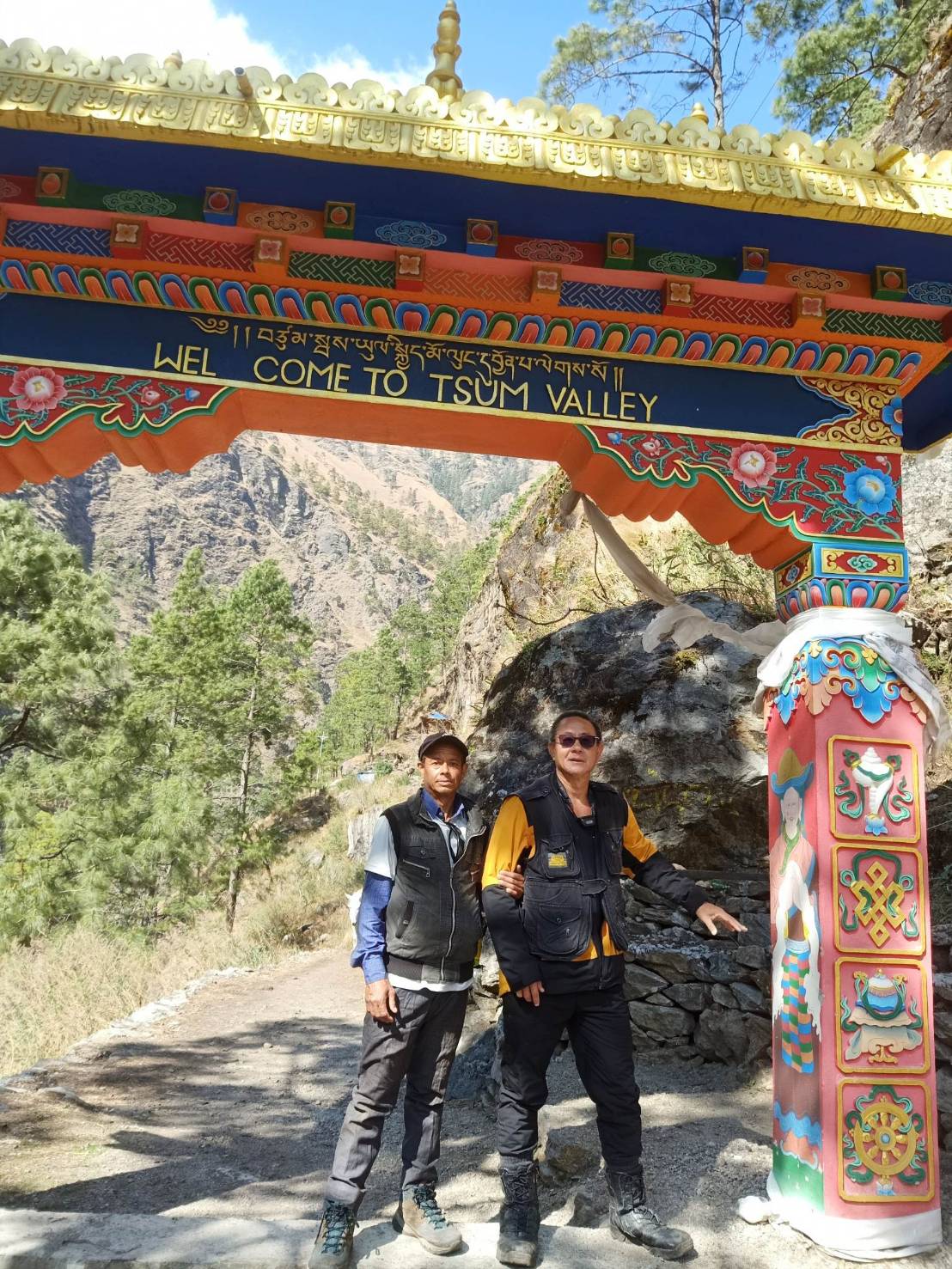
Tucked away in the lap of the majestic Himalayas, Tsum Valley was only opened in 2007 for foreign travelers. It is a hidden gem in the Manaslu region that offers a unique combination of rich cultural heritage and stunning natural beauty. The Tsum Valley is renowned for its ancient Buddhist monasteries, chortens (Buddhist shrines), and traditional villages that have preserved their norms and beliefs for centuries.
One of the highlights of the Tsum Valley is the Milarepa Piren Phu Cave (3361m.|11027ft.). It is believed that the revered Tibetan saint, Milarepa, meditated in this cave, leaving behind his footprints and handprints on the rocks. Pilgrims and trekkers visit this sacred site to pay their respects and soak in the spiritual atmosphere.
Tsum Valley is also home to several ancient monasteries, such as Rachen Gompa (3240m.|10630ft.) and Mu Gompa (3700m.|11026ft.), which serve as important religious and educational centers for the local community. These monasteries house intricate Buddhist murals, statues, and scriptures, offering visitors a glimpse into the region's rich religious and artistic heritage.
The natives of this valley are called Tsumbas. They are very friendly and welcoming. Their simple lifestyle and attachment to their ancestral roots will give you a fresh look at life. In villages like Chumling (2386m.|6692ft.), Chhokangparo (3010m.|9875ft.), Nile (3361m.|11026ft.), etc, you will get to interact with the locals and experience the mountain lifestyle.
Apart from its cultural significance, the Tsum Valley boasts breathtaking natural beauty. The valley is surrounded by soaring snow-capped peaks, including the Ganesh Himal and the Sringi Himal ranges. Trekking through the Tsum Valley rewards adventurers with surreal vistas of lush green valleys, cascading waterfalls, and terraced fields.
The region is blessed with diverse flora and fauna, making it a haven for nature enthusiasts. Rhododendron forests, oak groves, and alpine meadows dot the landscape. The valley is also home to rare and endangered wildlife species, such as the Himalayan tahr, snow leopard, and red panda, adding to its ecological significance.
For additional hikes, you can visit Gumba Lungdang (3200m.|10498ft.) and Ganesh Himal Base Camp (3691m.|12140ft.). You can combine the Tsum Valley excursion in our Manaslu circuit trek package or just trek to Tsum Valley as per your wish.
Conquer Larkya La Pass
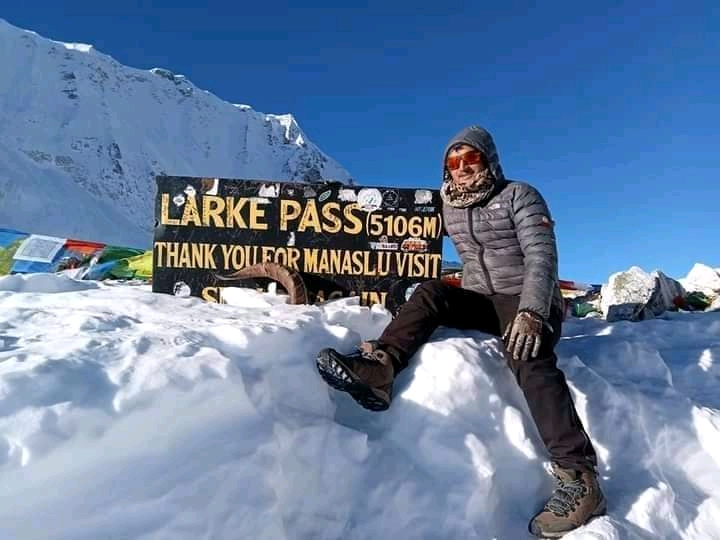
Larkya La pass is one of the highest mountain passes in Nepal, with a height of 5106m.|16752ft. above sea level. It is also the highest point during the Manaslu circuit trek. Navigating this pass is quite challenging and tests the endurance and determination of the trekkers. Below you can read more about what it takes to cross the Larkya La Pass, the views, terrain, etc.
The terrain and challenges:
Conquering Larkya La Pass requires physical fitness, mental strength, and the ability to acclimatize to the high altitude. The ascent to the pass involves a steady climb on a steep trail, navigating through rocky terrain and occasional snowy sections. Similarly, the thin air at such high altitudes adds to the physical challenge, making every step a test of endurance.
You have to pace yourself and listen to your body while trekking at these elevations. The mental fortitude to push through fatigue and overcome any doubts that may arise is equally important. Engage in pre-trek training and physical conditioning to build strength, endurance, and cardiovascular fitness. Likewise, mental resilience and determination are equally needed.
Adventurous descent:
While reaching the top of Larkya La pass is an accomplishment, the trek doesn't end there. The descent from the pass is equally thrilling and requires careful footing as you navigate the steep and sometimes icy trail. Trekking poles are incredibly helpful during the descent, providing stability and support.
As you make your way down, the landscape transforms, revealing a different facet of the Himalayas. The views of the Bimthang village, lush forests, and quaint villages in the distance provide a sense of tranquility and serenity amidst the exhilarating journey.
Unforgettable panoramas:
From the top of the pass, you get to see breathtaking panoramic views of the surrounding Himalayan peaks, including Mt. Manaslu (8163m.|26781ft.), Mt. Dhaulagiri (8167m.|26795ft.), Mt. Hiunchuli (6441m.|21132ft.), Mt. Annapurna (8091m.|26545ft.), and Ganesh Himal (7422m.|24350ft.). among others. The vastness of the mountain ranges, the play of light and shadow on the snow-capped summits, and the varying landscapes throughout the journey are mesmerizing.
Personal growth and reflection:
Conquering Larkya La Pass goes beyond physical challenges. It offers trekkers an opportunity for personal growth and reflection. The demanding nature of the trek pushes you to your limits, teaching valuable lessons in perseverance, resilience, and self-belief. The isolation of the Himalayas, coupled with the vastness of the landscape, provides a space for introspection and self-discovery. The sense of accomplishment and the memories made during this journey will stay with you long after you've returned from the trail.
Cultural significance
Beyond its physical grandeur, Larkya La Pass also holds cultural significance. It has been a traditional trading route between Nepal and Tibet for centuries, connecting the rich cultural heritage of these two Himalayan regions. As trekkers traverse the pass, they follow in the footsteps of ancient traders and nomads, experiencing a glimpse of the historical and cultural exchange that has shaped this region.
Teahouse Accommodations
Tea houses are not like lodges in the Everest base camp or Annapurna base camp trails. Neither is it like the guesthouses of Langtang region trails. Teahouses offer a perfect balance between lodges and guesthouses. The remotest parts of the Himalayas in Nepal, which were only accessible because of camping treks, now teahouses make some of those trails, including the Manaslu circuit and Tsum Valley, more approachable.
Thanks to the recent popularity of the Manaslu circuit trek, the trail has seen many new teahouses that serve as the primary accommodation for the trekkers. In less commercial and remote regions like Manaslu, the convenience of teahouse accommodations make the trail much more accessible and an enjoyable experience for trekkers.
Teahouses are basic but comfortable accommodations available along the Manaslu circuit trek route. These are typically run by local families and provide trekkers with a warm and welcoming environment to rest and rejuvenate after a day of hiking. The teahouses vary in size and facilities, ranging from cozy rooms with shared bathrooms to more spacious rooms with attached bathrooms.
While the amenities may not be luxurious, they offer all the essentials needed for a comfortable stay in the mountains. You will get clean bedding, blankets, and sometimes hot showers, which can be a true luxury at higher altitudes. Remember that the services may decrease as you ascend to more remote areas, so be prepared for furthermore basic facilities at the higher points of the trek.
*Note: Carry a high-quality sleeping bag during the Manaslu trek for an additional layer of warmth. Thamel has plenty of sleeping bag rental services, so you do not have to buy.
Simple Nourishing Meals
One of the highlights of trekking in Nepal is the delicious and hearty meals served in tea houses along the trail. Despite the remoteness of the Manaslu circuit trek, you'll be pleasantly surprised by the range of food options available, considering the limited resources in the mountains.
Teahouse meals typically consist of a combination of Nepali and international dishes. You'll find staples like dal bhat, momo, thukpa, noodles, pasta, & fried rice, along with porridge, soups, curries, chapati, sandwich, mashed potatoes, Tibetan bread, etc. These meals provide a good balance of carbohydrates, proteins, and essential nutrients to fuel your body for the challenging trek. Tea, coffee, soft drinks, etc, are common beverages.
Teahouses are accustomed to catering to trekkers with different dietary preferences and restrictions. However, note that the further you trek into remote areas, the more limited the menu options may become. It's wise to carry some energy bars or snacks as a backup for additional sustenance during long days of hiking.
Likewise, staying hydrated is crucial during any trek, especially in high-altitude regions. Most teahouses offer boiled water for a nominal fee, allowing you to refill your water bottles or hydration systems. Carrying water purification tablets is also recommended to ensure the safety of drinking water obtained from natural sources along the trail.
- Altitude Sickness
- Trekking Tips
- Mountain Guide
- Himalaya Trails
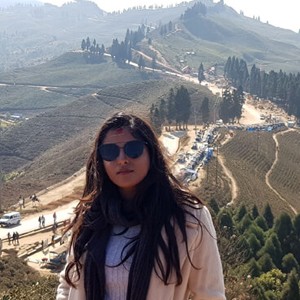
Benjila Dhital
Benjila has been an integral part of the Nepal Nirvana Trails as she writes passionately and learns about new spots, people, cultures, and languages. With a Bachelor's Degree from the reputed college NATHM in Bachelors of Tourism and Travel Management lately, she has been engaging in authoring web content and familiarizing new locations with the tourist out there.
Drop a message
Recent posts.
- Can you trek to Everest Base Camp in April?
- Trekking in Nepal in March 2024
- Unveiling the Hidden Gems of Kanchenjunga: Trekking Guide for Adventure Enthusiasts
- Best Time For Manaslu Circuit Trek
- Family-Friendly Trekking in the Annapurna Region: Creating Lasting Memories with Loved Ones
- Langtang Valley Trek: A Serene Himalayan Escape for Nature Lovers
Related Posts
- Langtang Trek Packing List
Travel Guides
- Annapurna Region Trek Guide
- Everest Three Passes Trek Guide
- Kanchenjunga Trek Guide
- Langtang Region Trek Guide
- Manaslu Region Trek Guide
- Nepal Travel Info
- Things to Do
- Travel Blog

Are you looking for the Nepal holiday? or need help to plan a trip, please do not hesitate to get in touch with us.
We use cookies to ensure that we give you the best experience on our website.
Complete Guide To Plan Your Manaslu Circuit Trek
The 14 day Manaslu circuit trek is a great alternative trek to both the Annapurna circuit and Everest base camp . Particularly as this trek sees far fewer trekkers around only a third of the number that trek the Annapurna Circuit! Yet it is the perfect balance of nature and culture.
Here the people are Tibetan Buddhist heading north to Larkya La Pass you get very close to the Tibetan border. At 5167 m Larkya La Pass is a challenge and one you have to get up basically in the middle of the night to beat. But on this day the views of Himlung (7126 m) near Tibet and Kang Guru (6981 m) and Annapurna II (7937 m) in the Annapurna range make the tough trek worthwhile. Aside from the magical mountains, glacier rivers pounding passed, and, more than likely, snow to increase the fun on the Larkya La Pass, on this trek you will pass through pine, bamboo and rhododendron forests and see many Buddhist Gompa, Mani walls and prayer flags.
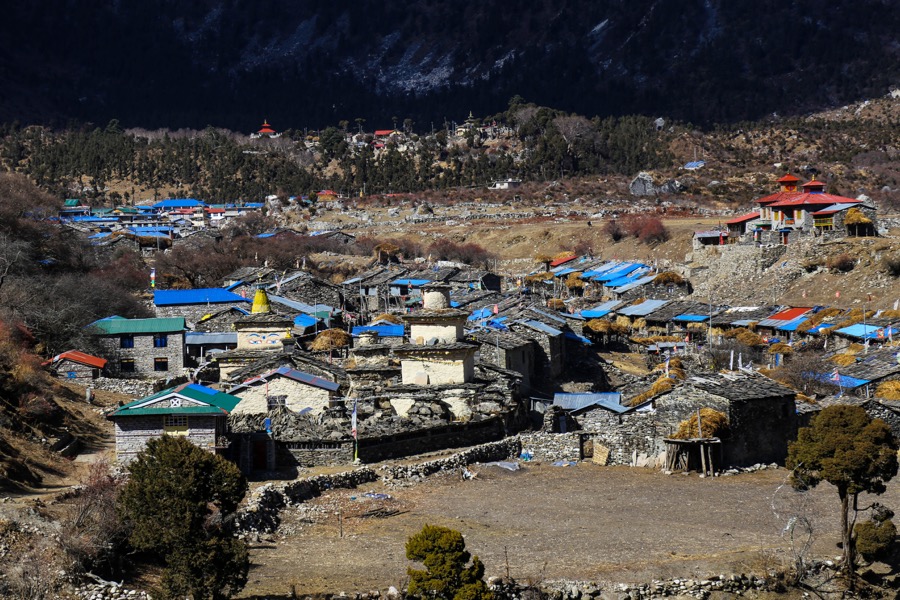
In the past this trek was camping. But today newly opened teahouses in Dharamsala mean it is possible to do this trek entirely by staying in teahouses. However, as it is a ‘road less travelled’ it is still hard to find correct information on the internet about the Manaslu circuit trek. Which is why I decided to write this post.
By using this guide you can get all the information you need to know about this trek before heading out.
Manaslu Region Map
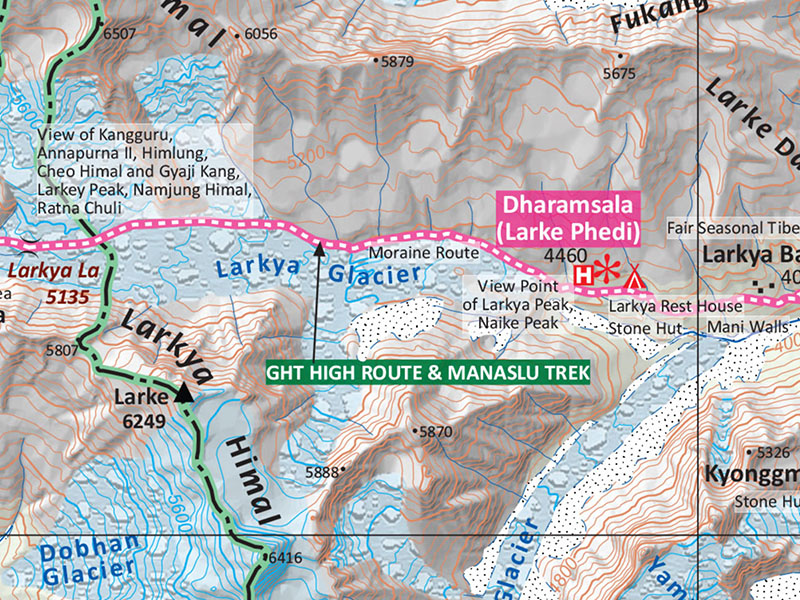
So let’s start with the trek map where exactly is the Manaslu circuit trek?
While you will need to take a printed map with you on this trek, I am providing you with a link here to a map which will give you a good idea of the region you will be trekking in.
Manaslu Circuit Trek Itinerary
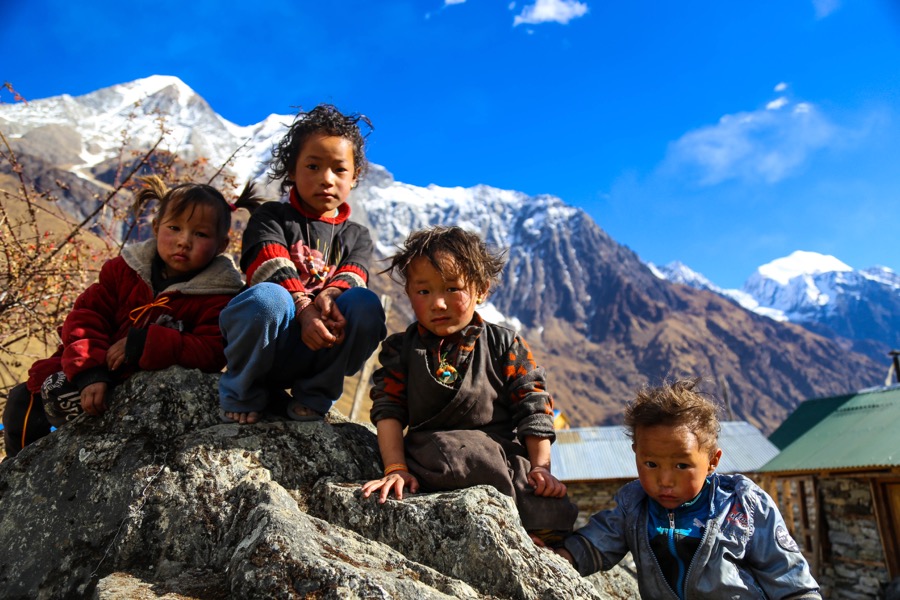
The usual itinerary is 14 days from Kathmandu to Kathmandu but if you are short of time, you can also adapt it to 12 or even 10 days. In November 2019 I did Manaslu trek in 13 days .
Based on my recent experience, I recommend you take your time, going at a slow and steady pass to both ensure complete acclimatization to the altitude and to enjoy your journey. It’s likely you will not be back again or at least not for some time, so why rush the experience?
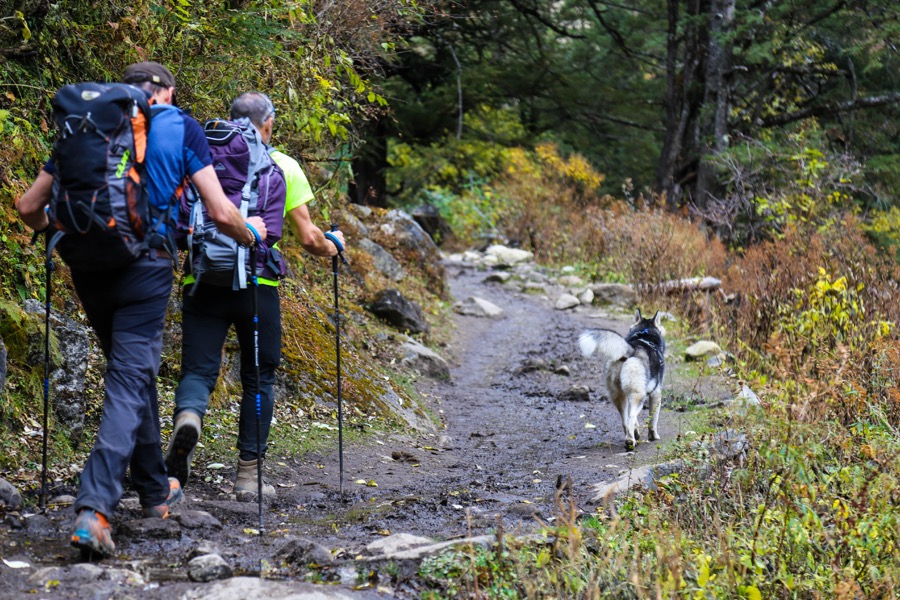
Unless you are participating in the trail race around Manaslu that is. Yes! People actually run this area as you can see on this link .
But unless you are a trail runner and let’s face it, most of us are not please see my suggested 14 days itinerary of the Manaslu Circuit Trek below:
[table id=22 /]
Getting There
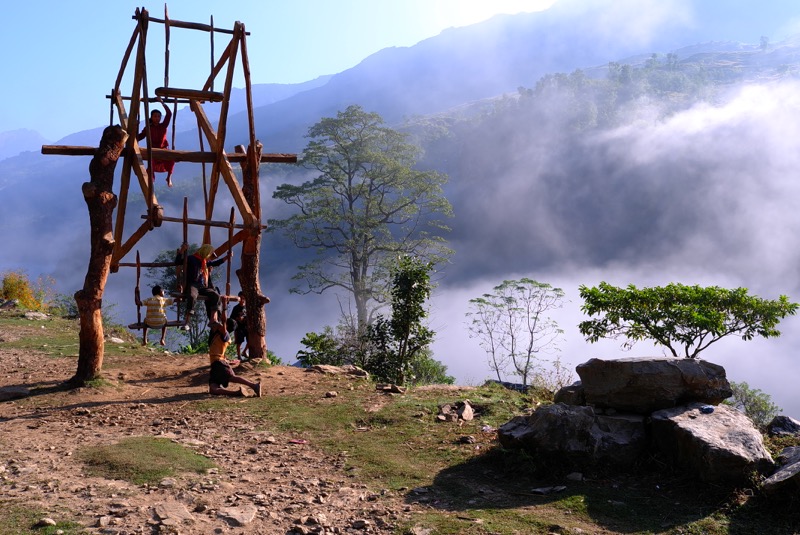
Your actual trek starts at Soti Khola but first you have to get there! There is no flight available so the only option is to go by road. You can choose between the local bus (no tourist buses on this route) or private jeep.
Kathmandu To Soti Khola By Local Bus
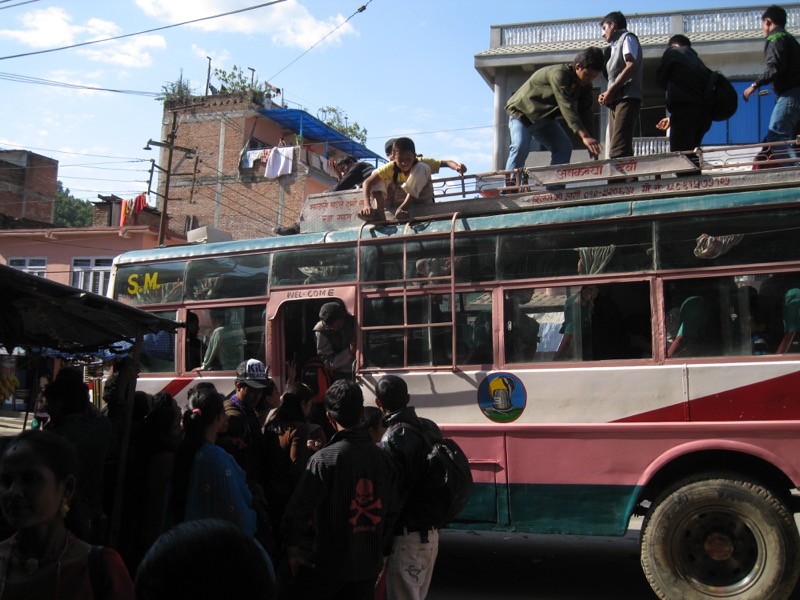
Buses leave the Dhading bus park, near the Gongabu bus park in Kathmandu every morning BEFORE 8am. Take a local bus to Arughat, then change to another local bus or jeep to Soti Khola. It takes approximately six hours to reach Arughat then another one hour to reach Soti Khola where you will need to overnight before starting your trek the next morning.
Kathmandu To Soti Khola By Private Jeep
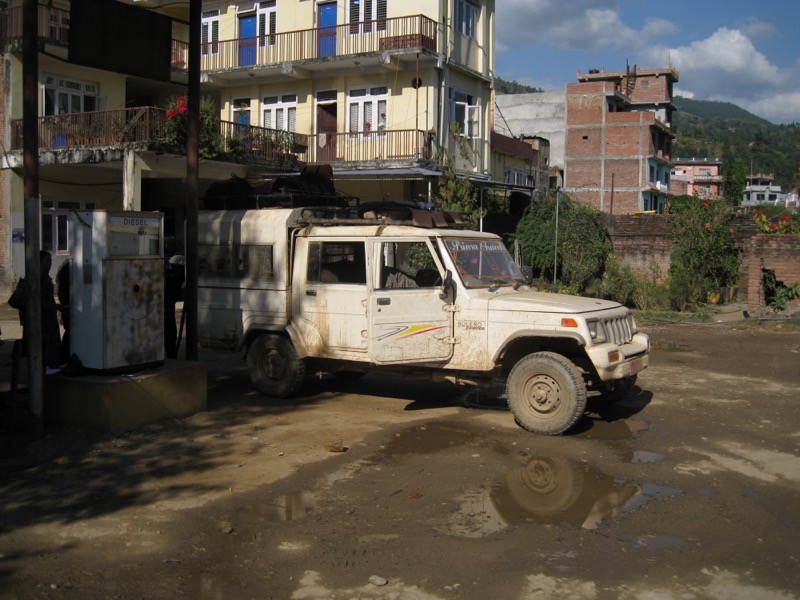
If you hire a private jeep it will take you approximately six hours. You will also be able to have breakfast before setting off as you jeep will collect you at your hotel.
Getting Back

The trek ends at Dharapani. And from here there are a few options.
From Dharapani take a local bus to Beshisahar then change bus to Kathmandu or Pokhara. Or take a private jeep back to Kathmandu or Pokhara.
From Dharapani trek to Tal or Beshisahar and take a bus or private jeep back to either Kathmandu or Pokhara.
Note: It takes approximately 11 hours to get to Kathmandu or approximately 10 hours to go to Pokhara from Dharapani.
Trekking Permits For The Manaslu Circuit Trek
A total of three permits are required for this trek! They are a Manaslu conservation area project (MCAP) permit, an Annapurna conservation area project (ACAP) permit and a Manaslu restricted area permit. Details below.
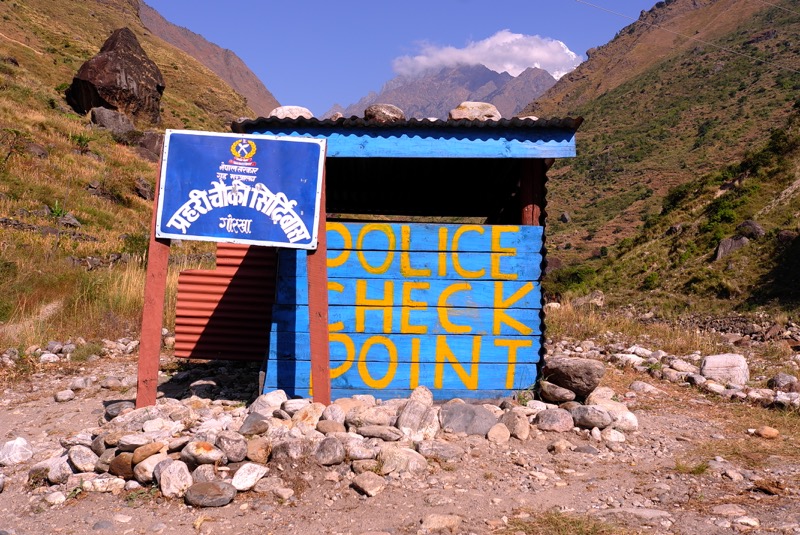
Note: You cannot trek nor obtain this permit by yourself. You have to go through a trekking agency .
Manaslu Conservation Area Project (MCAP) Permit
- USD 30 per person
- Two photographs are required
Annapurna Conservation Area Project (ACAP) Permit
Manaslu restricted area permit.
- USD 100 per person for one week from September to November
- USD 75 per person for one week from December to August
Note: Your original passport is required to obtain the restricted area permit. Your Nepal visa should be valid for permit duration.
What Is The Best Time To Trek The Manaslu Circuit Trek?
In short, the best time is from September to November. But note the restricted area permit is higher in price during this period. The next best time to trek this area is mid March to May when the trail is full of flowers. On the down side it will be a bit hot and humid at lower altitudes at this time of year.
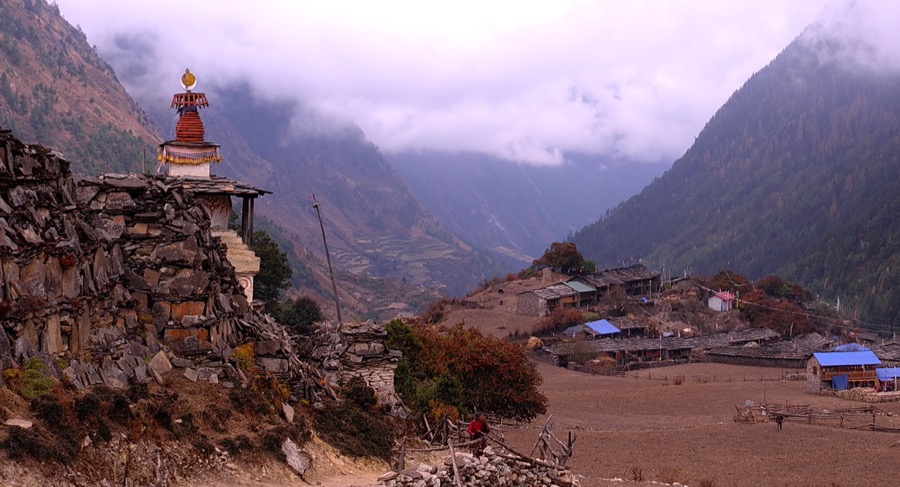
Since altitudes on this trek range from 600 m to 5200 m and you are passing through different climate zones it is really hard to find a balance between the weather and views. So really the time of year you chose to go is very much up to you and your personal taste.
Although my favourite and recommended time is September to November, you might prefer either the autumn or even the monsoon.
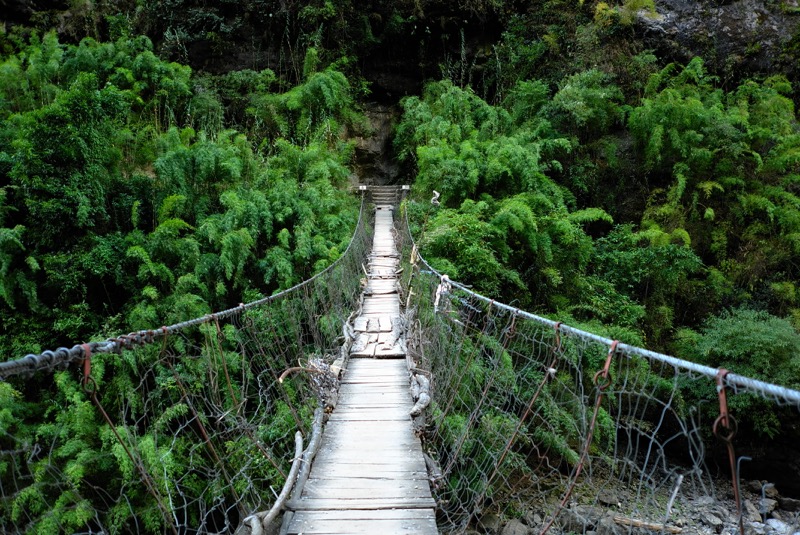
But be aware during the monsoon (June to September) the weather will be hot and humid and the trails very muddy at lower altitudes. During the winter the pass will also be blocked and therefore you will have to return from Sama Gaun the same way as you went. It is also very likely that the teahouse at Dharamsala will be closed.
Extend Your Trek To Tsum Valley
If you have extra time you can add a few days onto your trip and explore the Tsum valley before heading to Manaslu. Here in the Tsum valley, a hidden valley on the eastern part of the trail, you will find more monasteries to explore and learn even more about culture of the local Tibetan like peoples! But on the down side, there is another restricted area permit to buy. Including the Tsum valley into your Manaslu circuit trek is certainly a worthwhile addition but it will cost you another 5 days of time and the permit plus all the associated costs. Please feel free to get in touch with me if you think this is something you would like to find out more about.
Food And Accommodation On The Manaslu Circuit Trek
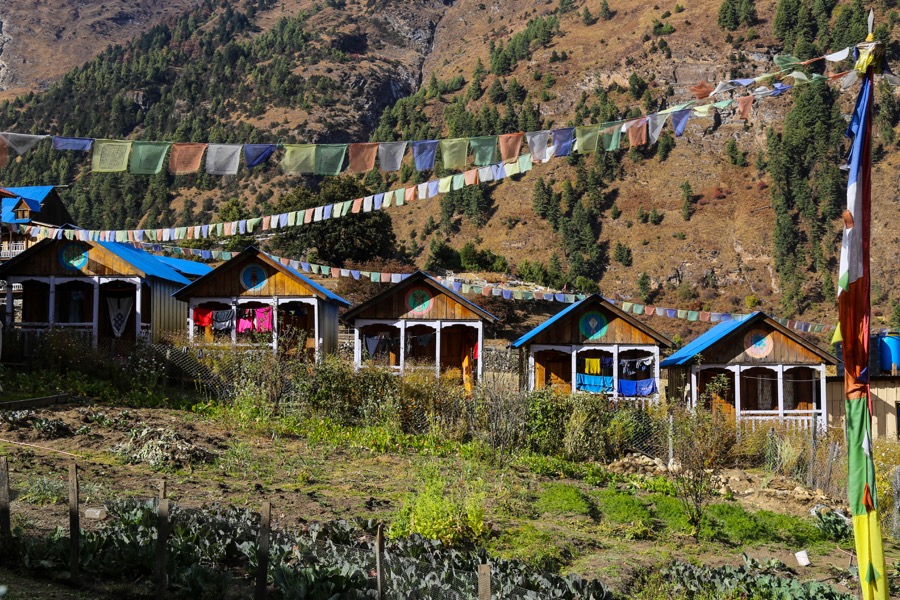
This trek used to be a camping trek but now there are teahouses (lodges) on the route. But they remain very basic. Up to Sama Gaun the accommodation is somewhat fine, and in Samdo the accommodation is more of a homestay arrangement. In Dharamasla there are two teahouses but you may need to sleep in a tent if the teahouses are crowded. The teahouse will provide you with a tent and a mattress.

Regarding the food, in Dharamsala it is quite limited and basic but otherwise you can expect the same standard of food you would find on Annapurna or Everest treks.
If you decide to add to your trip and head to the Tsum Valley you will find food there is very limited and as most teahouses do not have a cook, your guide or porter will most likely help the owner’s family prepare meals for you. Accommodation is generally okay and probably you will spend a night in a monastery.
How Much Does It Cost To Trek The Manaslu Circuit?
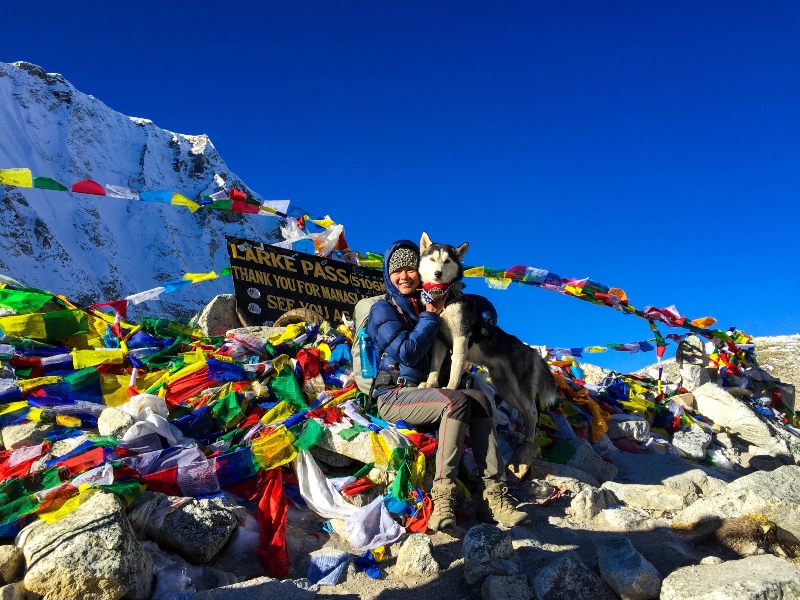
This trek cannot be done independently. Therefore, with the mandatory guide, and expensive restricted area permits the cost is a bit higher than the more popular treks. However, the experience is that of a quiet trail, not frequented by thousands of trekkers each year.
For the 14 day Manaslu circuit trek packages vary from USD 900 to USD 2800 per person.
Leave a Comment Cancel reply
Save my name, email, and website in this browser for the next time I comment.
Accomodation
Culture & tradition, responsible tourism.
- architecture
- Newar festivals
- E-magazines
The best of Inside Himalayas delivered straight to your inbox. Sign up for the latest stories.
Please leave this field empty.
Get the latest edition of Inside Himalayas on your doorstep.
Select Country Afghanistan Albania Algeria Andorra Angola Antigua and Barbuda Argentina Armenia Australia Austria Azerbaijan Bahamas Bahrain Bangladesh Barbados Belarus Belgium Belize Benin Bhutan Bolivia Bosnia and Herzegovina Botswana Brazil Brunei Bulgaria Burkina Faso Burundi Cabo Verde Cambodia Cameroon Canada Central African Republic (CAR) Chad Chile China Colombia Comoros Congo, Democratic Republic of the Congo, Republic of the Costa Rica Cote d'Ivoire Croatia Cuba Cyprus Czechia Denmark Djibouti Dominica Dominican Republic Ecuador Egypt El Salvador Equatorial Guinea Eritrea Estonia Eswatini (formerly Swaziland) Ethiopia Fiji Finland France Gabon Gambia Georgia Germany Ghana Greece Grenada Guatemala Guinea Guinea-Bissau Guyana Haiti Honduras Hungary Iceland India Indonesia Iran Iraq Ireland Israel Italy Jamaica Japan Jordan Kazakhstan Kenya Kiribati Kosovo Kuwait Kyrgyzstan Laos Latvia Lebanon Lesotho Liberia Libya Liechtenstein Lithuania Luxembourg Madagascar Malawi Malaysia Maldives Mali Malta Marshall Islands Mauritania Mauritius Mexico Micronesia Moldova Monaco Mongolia Montenegro Morocco Mozambique Myanmar (formerly Burma) Namibia Nauru Nepal Netherlands New Zealand Nicaragua Niger Nigeria North Korea North Macedonia (formerly Macedonia) Norway Oman Pakistan Palau Palestine Panama Papua New Guinea Paraguay Peru Philippines Poland Portugal Qatar Romania Russia Rwanda Saint Kitts and Nevis Saint Lucia Saint Vincent and the Grenadines Samoa San Marino Sao Tome and Principe Saudi Arabia Senegal Serbia Seychelles Sierra Leone Singapore Slovakia Slovenia Solomon Islands Somalia South Africa South Korea South Sudan Spain Sri Lanka Sudan Suriname Sweden Switzerland Syria Taiwan Tajikistan Tanzania Thailand Timor-Leste Togo Tonga Trinidad and Tobago Tunisia Turkey Turkmenistan Tuvalu Uganda Ukraine United Arab Emirates (UAE) United Kingdom (UK) United States of America (USA) Uruguay Uzbekistan Vanuatu Vatican City (Holy See) Venezuela Vietnam Yemen Zambia Zimbabwe
- 17 March, 2020
Manaslu Circuit 101: Everything You Need to Know About the Epic Trek
Located in Gorkha district is an often-overlooked but incredibly magical trek: the Manaslu Circuit. From culture to mountain vistas to physical endurance, it offers visitors everything they might want from a Himalayan adventure.
First opened to hikers in 1991, the trail follows what was once a salt-trading route running along the Burhi Gandaki River. Lasting anywhere from 14 – 17 days and covering roughly 177 kilometres, the trek is named after the 8th highest peak in the world, Manaslu. Also known as Mountain of the Spirits, Manaslu holds a particularly special place to Nepalis, as it is one of only three 8,000 metre peaks sitting entirely within the country’s borders.

With the establishment of the Manaslu Conservation Area in 1998, the circuit came under the management of the National Trust for Nature Conservation (NTNC), which works to preserve not only natural resources but the cultural heritage that exists within Nepal. Every trekker in the area must obtain a permit, and it’s necessary to enter with a party of two or more members and a registered hiking guide.
The basic permit to enter the Manaslu Conservation Area costs around NPR2000, which is roughly US$20. This money goes directly toward maintaining the region and supporting community development.
In addition to MCAP’s fee, the Ministry of Culture, Tourism and Civil Aviation requires a payment of US$50 per week that you will trek there, with an extra US$7 for every additional day there. And if you hope to travel through or around Annapurna, you’ll need an additional permit costing NPR2000. While this might seem expensive, it does keep the number of visitors down, giving you a far quieter experience.

Getting There & Back
From Kathmandu you can either take a local bus or organize private transportation to the town of Arughat. The trip takes anywhere from five to six hours, but delays are inevitable. The circuit ends in Besisahar, from where you can take a bus back to Kathmandu or on to Pokhara.
Typical Route
- Day 1 : Arughat to Soti Khola, 5 hours, 800 metres
- Day 2: Soti Khola to Machha Khola, 5 hours, 1000 metres
- Day 3: Machha Khola to Jagat, 6 hours, max. 1400 metres
- Day 4: Jagat to Deng, 6 hours, 1860 metres
- Day 5: Deng to Namrung, 6 hours, 2600 metres
- Day 6: Namrung to Lho, 4 hours, 3100 metres, or to Shyala, 3500 metres
- Day 7: to Samagaon, 2 hours, 3500 metres
- Day 8: Rest day in Samagaon – optional Manaslu Basecamp excursion
- Day 9: Samagaon to Samdo, 4 hours, 3800 metres
- Day 10: Rest day in Samdo – optional excursion to Tibetan border
- Day 11: Samdo to Larkya Phedi (aka Dharamsala), 4 hours, 4460 metres (Note that this lodge may close during November. If accommodation is not available here then a very early start from Samdo and long day of walking is necessary to reach Bimtang.)
- Day 12: Cross Larkya La (5106 metres) to reach Bimtang, 8 hours, 3700 metres
- Day 13: Bimtang to Tilje, 6 hours, 2100 metres
- Day 14: Tilje to Jagat, 6 hours, 1300 metres
- Day 15: Jeep from Jagat to Besisahar, and onward transport to Kathmandu or Pokhara
You can, of course, add additional rest days or cut them out depending on your time. It’s recommended to take at least one acclimatization day at higher elevations. You also have the option to break some of the longer days up. One great option is to go from Deng to Ghap, and then reach Namrung the following day.
Here’s a pre-planned itinerary of the Manaslu Circuit Trek that might help save you some trouble planning your own trek.

Alternative Route
To spend a bit more time in the middle hills of Nepal, you can start the trek from the town of Barpak. Still recovering from the 2015 earthquake, you can see first-hand the reconstruction, passing through an entire village built by the government in hopes of relocating nearby villagers. From Barpak, trek one day to Larpak and then another to Korlebesi, at which point you meet up with the official route to Jagat.
Additional Stops
To spend even more time in the mountains, add some day trips into the itinerary. From the main route, just past Lihi, turn left for a steady uphill climb to Hinang Gompa, a monastery and small hamlet. From Lho, trek up to the remote Pung Gyan Gompa at 4200 metres. Yaks spend summer months grazing above the glacier. Samdo and Samagaon provide the perfect opportunity for additional rest day or explorations. Combine Manaslu with the Tsum Valley and you can add an additional 7 days.
Here’s what a longer trip around the Tsum Valley might look like: Manaslu Tsum Valley Trek.

The Manaslu Circuit brings trekkers into the heart of Tibetan culture. Women wear traditional pangdens and chubas. Yak meat is dried and eaten like jerky. Butter tea can be found in most local homes, along with tsampa, a traditional flour-based dish. The greeting of Tashi Delek is heard far more frequently than Namaste . Tibetan Buddhism is the most prevalent religion. Every village has at least one monastery, and mani walls dot the trailside. Be sure to always pass these structures in a clockwise direction. More often than not, when the trail forks, choose the path that goes left, as it is likely due to the presence of a mani wall.
Views
One is never wanting for vistas while trekking around Manaslu. First and foremost, you have ever changing views of Mt. Manaslu itself. From Lho it stands prominently, the two peaks distinct and dominant. From Samdo it still towers but is surrounded by equally magnificent peaks, morphing into a single triangular summit. Throughout the journey you’re also likely to see Ganesh Himal and, toward the end, glimpses of the Annapurna range.
The pinnacle of panoramic vistas is Larkya La Pass. From Larkya Phedi, you climb around 800 metres to reach the circuit’s highest point of 5160 metres, all the while surrounded by snow-covered peaks. Back to the east sit Samdo and Larkya Peaks, the former along the border with Tibet. In the west you’ll catch sight of Himlung and Cheo Himal, all towering over 6000 meters. The summit’s hundreds of colorful prayer flags are perfect accents to the otherwise impressively white landscape.
Wildlife
Despite the ever-increasing elevation, a plethora of animals can be found along the Manaslu circuit. Blue sheep, also known as bharal, love the rocky terrain above 3500 metres. Neither blue nor sheep, keep your eyes peeled for what is better described as a grayish colored ram. Himalayan tahr also graze on the mountainside. Nearly endangered, their population has been dramatically diminished on account of habitat loss and hunting. Smaller animals like the pika also make the Himalaya their home. Comparable to a large mouse, they scurry across and hide amongst the rocks, alongside the common marmot. Snow leopards prove the most elusive of the fauna, blending so perfectly into their surroundings that sightings are exceptionally rare.

Where to Stay
Since opening to trekkers in the ’90s, more and more infrastructure has been built, making the trek now completely doable while staying at tea houses. You can count on a bed, meals and some form of a shower, be it via bucket or solar powered. But expect quite basic accommodations. Be somewhat cognizant of what you order for breakfast or dinner. To be safest, stick to what locals most often eat: rice and noodle dishes. In October, the peak time for summitting Manaslu, you might consider making reservations. Otherwise, due to being far less frequented than the Khumbu Valley or Annapurna, you will find plenty of open rooms.
You can also opt to camp, although it is more logistically difficult. Not only will you have to bring camping and cooking gear, you need to know where to pitch your tent each night. Traditionally, you pay the local on whose land you camp, which can be difficult to discern if you don’t know the area or village well, so it’s good to go with a guide. Sleeping in the backyard of tea houses is also an option.
Here’s a quick list if you’re unsure of what you need and what you don’t inside your backpack during your adventures in Nepal: What to pack .
The best times of year to complete the circuit are September through November, and March to May. Harsh winters keep climbers away from December to February, while the monsoons deter travelers from June until August. If trekking in November and March you still might experience seriously cold temperatures, and both May and September could have lingering rain. But overall, spring and fall are ideal for exploring the Manalsu region of Nepal.
If you are looking to venture out into the Manaslu Tsum Valley, you can find a fixed departure travel plan that will let you explore the region to its fullest here .
Tags: Gorkha Manaslu trekking
- Tanvir Islam
- 13 November 2019 | 07:03
I’m from Bangladesh. Is taking a registered guide is completely necessary? Or I can do it without a guide? Just like I did the Annapurna Circuit trek last month without any guide.
Leave a reply
Your email address will not be published. Required fields are marked *
- submit comment
ISSUE 8 | 2024
Related articles.
- 27 March, 2024
Hiti Tales: The stories behind Kathmandu’s ancient Water Spouts
- 17 March, 2024
Sustainable Development through Community-Based Tourism
- 18 February, 2024
Nepal: The Happiest Country
- 12 February, 2024
Life in Tamang Villages
- 04 February, 2024
The Sages of Shiva Ratri
- 26 January, 2024
Terai – The Other Face of Nepal
- 19 January, 2024
Indigenous Festivals of Nepal – 2024
20 reasons to visit nepal in 2024.
- 13 January, 2024
The Beauty of Dhankuta
- 05 January, 2024
The Eight Most Widely Rejoiced New Years of Nepal
- Kenneth (Singapore) : +6581844877
- Tania (South Africa) : +27728550118
- Robyn Bell (USA) : +1303026822303

- Why Travel With Us
- Legal Documents
- Booking Terms
- Privacy Policy
- Annapurna Circuit Trek
- Annapurna Base Camp Trek
- Short Annapurna Circuit Trek
- Ghorepani Poon Hill Sunrise Trek 9 Days
- Mardi Himal Trek
- Annapurna Base Camp Trekking
- Annapurna Nar Phu Trekking
- Annapurna Tilicho Lake Trekking
- Lantang Trek
- Langtang Himal Gosaikunda Trekking
- Langtang Tamang Heritage Trail Trekking
- Short Everest Base Camp Trek
- Everest base camp trekking
- Everest Gokyo Lake Trekking
- Everest Three High Passes
- Everest Base Camp Trek Via Gokyo
- Classic Everest Base Camp Trekking
- Everest Panorama Trekking
Manaslu Circuit Trekking
- Manaslu Circuit Tsum Valley Trek
- Manaslu Circuit Trek Via Barpak
- Manaslu Tsum Valley Trekking
- Manaslu Circuit Trek
- DHAULAGIRI CIRCUIT TREKKING
- RARA LAKE TREKKING
- Ganesh Himal Trekking
- Upper Dolpo Trek
- UPPER MUSTANG TREKKING
- Lower Dolpo Trekking
- Short Ghorepani Trek
- Nepal Tour 5 Night / 6 Days
- Everest Base Camp HelIcopter Tour
- Nepal Pilgrimage Tour
- Nepal Tour 4 Nights/5 Days
- BHAKTAPUR TOUR
- PATAN LALITPUR TOUR
- LUMBINI HISTORICAL-RELIGIOUS TOUR
- Beautiful Scenic Pokhara Tour
- Island peak climbing
- TENT PEAK CLIMB
- Mera peak climbing
- Lobuche East Peak Climbing
- Yala Peak Climbing
- Paragliding in Nepal
- Zip Flyer Nepal
- Chitwan National Park Safari
- Kosi Tappu Wildlife Safari 3 days
- Trisuli Rivers Rafting
- Kali Gandaki River Rafting
- Holy Kailash Overland Tour
- Tibet Overland 12 days
- Bhutan Cultural Tour 9 days
- Bhutan Gangtey Gogona Tour
- Special Packages
- Client Reviews
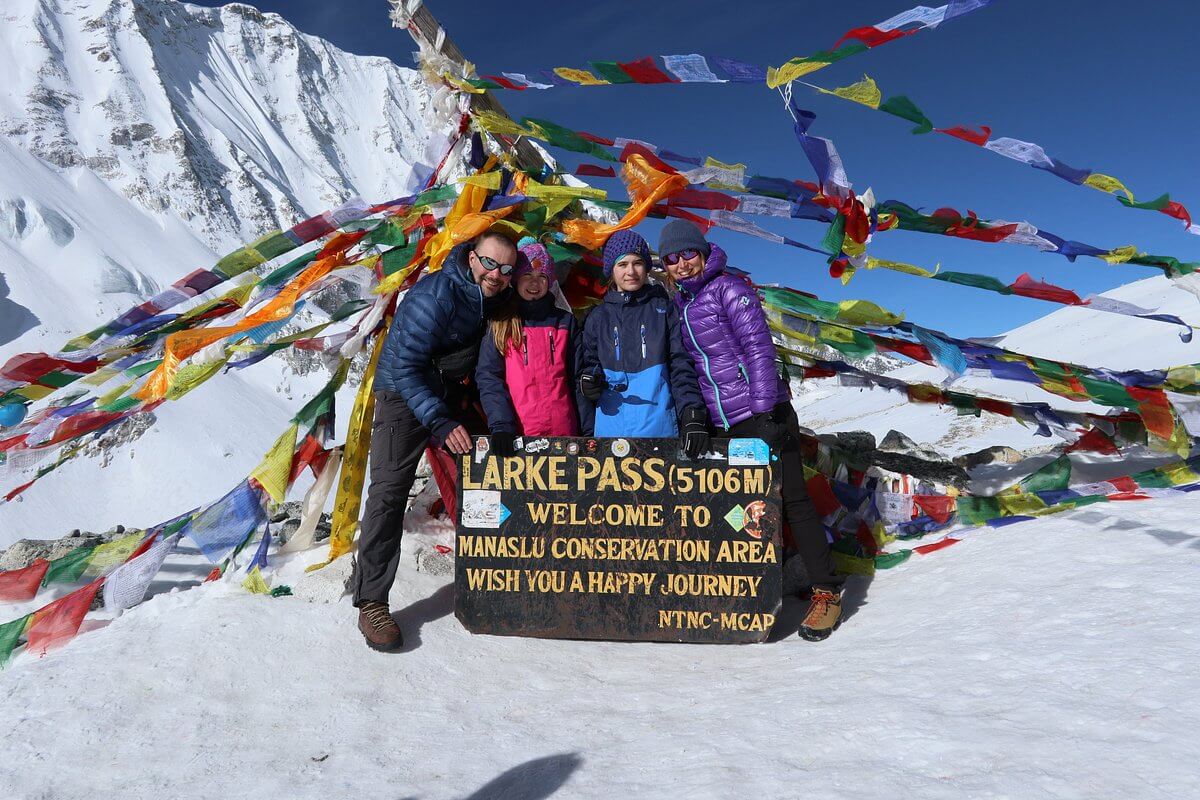
Manaslu Circuit Trekking highlights of this trek include.
- Hike at Manaslu Base Camp 4800 Meters.
- Stunning Himalayan Views: The trek offers breathtaking views of the Manaslu massif, including Manaslu itself, which is the eighth-highest mountain in the world. Trekkers can also enjoy panoramic views of neighboring peaks such as Himlung Himal, Manalu 8163 M, Nadi Chili 7871 m, Naike Peak & Ganesh Himal range.
- Many suspension bridge crossings : The first part of the trail follows the Buri Gandaki, a deep, long river gorge, with many suspension bridge crossings.
- Cultural Diversity: The trek takes you through a variety of ethnic villages, allowing trekkers to experience the diverse cultures and traditions of the local people. Villages along the route are inhabited by Gurungs, Tamangs, and Sherpas, each with their unique customs, festivals, and architecture.
- Less Crowded: Compared to more popular trekking routes in Nepal, such as the Everest Base Camp or Annapurna Circuit, the Manaslu Circuit is less crowded. This provides a more peaceful and remote trekking experience, allowing trekkers to immerse themselves in the natural surroundings without the hustle and bustle of larger trekking routes.
- Remote and Untouched Landscapes: The trek takes you through a range of landscapes, from lush green valleys and terraced fields to alpine forests and high mountain deserts. The remote and less-visited nature of the trail adds to its appeal for those seeking a more pristine and untouched trekking experience.
- High Mountain Passes: The challenge of crossing high mountain passes, particularly the Larkya La Pass at an elevation of 5,106 meters (16,923 feet), adds an element of adventure to the trek. Crossing these passes rewards trekkers with stunning views and a sense of accomplishment.
- Wildlife and Biodiversity : The Manaslu region is rich in biodiversity, and trekkers may encounter various species of flora and fauna along the trail. The region is a habitat for elusive wildlife such as the snow leopard, red panda, and Himalayan tahr.
- Cultural and Historical Sites : The trek passes through several ancient monasteries, chortens (Buddhist shrines), and traditional villages, providing opportunities for cultural exploration and interaction with the local communities. The historical and religious significance of these sites adds depth to the trekking experience.
- Cultural Immersion : Trekkers have the opportunity to engage with local communities, learn about their way of life, and witness traditional ceremonies and festivals. This cultural immersion adds a unique and enriching dimension to the trek.
- Special Permits and Regulations: The requirement for special permits (Manaslu Restricted Area Permit) adds a sense of exclusivity to the trek, and the regulations help in managing the number of trekkers, contributing to the preservation of the area.
- Conservation Area: The Manaslu region is designated as a conservation area, aiming to preserve the unique biodiversity and cultural heritage of the area. By trekking in this region, you contribute to the local economy and support conservation efforts.
- Off-the-Beaten-Path Experience : Manaslu Trek offers a sense of adventure and exploration as it takes you through remote and less-developed areas of Nepal. It provides a chance to escape the bustling cities and immerse yourself in the peaceful and untouched natural surroundings. Overall, the combination of natural beauty, cultural diversity, and a sense of adventure makes the Manaslu Circuit Trek a compelling choice for those seeking a unique trekking experience in the Himalayas.
Manaslu Circuit Trekking begins with the exciting and interesting drive from Kathmandu to reach warmer low areas of Gorkha Valley near the raging Buri-Gandaki River, where the walk follows the river upstream right up to its glacial source at high Manaslu Valley near Sama Gaon and Larke Phedi (bottom). A walk leads through several farm villages and terraces entering into the lovely cool forest of rhododendrons, pines, oaks, and fir tree lines then reaching into more Tibetan origin cultured villages of Buddhism religion from Dying onward past Lo-Gaon to reach Sama-Gaon, the main and large village of high Manaslu areas. With time for rest and acclimatization at Sama-Gaon explore its interesting colorful customs and monastery then head further with scenic views of The Manaslu mountain range and cultural villages of great fascinating traditions.
Manaslu Circuit Trekking which was closed to outside visitors for a long period and was re-opened in the last two decades, Mt. Manaslu was first climbed by a Japanese Expedition in 1956, the mountain stands at 8,163 m and 26, 781 ft with its range of satellite peaks includes Bouddha, Sistine, Himalchuli with other smaller mountains. The Manaslu comes from the ancient Hindu Sanskrit word Manas ‘the mind or soul of the god’ like Holy Lake Manasarovar in Tibet near Mt. Kailash, located within Nepal Mid northwest Himalayan around remote and high Gorkha district, since the areas were opened where few trekkers ventured, at present becoming more popular due to its remoteness and isolation from the outside modern world. to Larke Phedi in Dharamsala the bottom of Larke-la pass. The climb leads over Larke-la at above 5,106 m high overlooking the outstanding panorama of peaks that surround this beautiful spot festooned with Buddhist colorful prayer flags and then descends towards the Manang area and back into woodland, where the walk follows the Marysangdi River downstream after the Dharapani village to the road head for the drive back to Kathmandu after a most mesmerizing adventure on Manaslu Circuit Trekking.
(Video of well plan trekking organized Manaslu trek including Chitwan safari )
DAY-BY-DAY OUTLET MANASLU CIRCUIT TREK ITINERARY
Day 01: Arrive in Kathmandu 1,345 m and then transfer to respective Hotels Day 02: Free day in Kathmandu to prepare the permits Day 03: Drive to Machha-Khola 930m – 06 hrs. Day 04: Trek to Jagat 1,410m – 06 hrs. Day 05: Trek to Dyang 1,800 m – 06 hrs Day 06: Trek to Namrung 2540 m – 06 hrs Day 07: Trek to Sama-Gaon 3,530 m – 06 hrs. Day 08:Rest Day for acclimatization and local excursion to scenic viewpoints. Day 09:Trek to Samdo 3,860 m – 04 hrs Day 10: Trek to Dharamsala 4,470 m – 04 hrs. Day 11: Cross Larkya-la 5,106 m and to Bimthang 3,720 m – 08 hrs Day 12: Trek to Dharapani 1,860 m – 06 hrs. Day 13: Drive to Kathmandu and then transfer to your hotels – 06 hrs. Day 14: International departure for homeward bound or to respective countries
Note: For the Manaslu Circuit Trekking we need special Permits do we need a Passport for this so that you should be in Kathmandu a day before starting the trek?
DETAILS ITINERARY
Day 01: Arrive in Kathmandu 1,345 m and then transfer to respective Hotels On reaching Kathmandu via respective airlines well received by company guides and staff for a short drive in the hub of Kathmandu city where your hotels are located. After checking into your lovely rooms and getting refreshed join in at the hotel lobby for a group briefing regarding treks and other useful information to make your stay in Nepal enjoyable.
Day 02: Free day in Kathmandu to prepare the permits
We will collect your passports and photos to prepare your immigration permits. Original permits are needed to collect Nepal immigration permits. You can explore the town on your own. We will have a trip briefing and introductory program with your guide after the permits are collected. Meals Included: Breakfast
Day 03: Drive to Machha –Khola 930 m via Arughat - 08 hrs. ( Distance 150 Km ) Starting our fabulous adventure at Manaslu Circuit trekking taking a long and exciting overland journey to reach warmer areas of the Gorkha district at Arughat a moderate size town with sub-tropical temperature, where our drive continues on the dirt road for an hour to reach our first overnight stop at Soti-Khola a small farm village, slowly turning into a town due to motorable road facilities. Meals included: Breakfast, Lunch, and Dinner
Day 04: Trek to Jagat 1,410m - 06 hrs ( Distance 21 Km ) From these fishing villages, the morning leads following the Buri-Gandaki River upstream for a few hours, as the walk leads past Khorla Beshi a small farm village, and on a winding trail to reach Tatopani village with natural “Hot Spring,” as per time permits enjoy the warm refreshing bathe then walk uphill to Jagat village for the overnight stop. This is a nice village with many shops and stores including a fair number of simple good lodges to stay in. Meals included: Breakfast, Lunch, and Dinner
Day 05: Trek to Dyang 1,800 m - 06 hrs ( Distance 20 km ) After the pleasant stop at Jagat, the journey continues the higher walking past several farm villages and then on a downhill to cross over a bridge to reach Nagjet and Philim, a large village with many scattered farmhouses. After Philim walks into farm terraces of golden fields of wheat and barley, then climbs on rocky ridge top into the bamboo forest area to our overnight stop at Dying Village. Meals included: Breakfast, Lunch, and Dinner
Day 06: Trek to Namrung 2540 m – 06 hrs ( Distance 19 Km) A morning walk from Dyang leads to a cooler area where you can feel the rise in altitude, on entering the Himalayan alpine region, continue to walk downhill to a riverside to reach Bihi Bazaar a small village near a riverside. From here onwards encountering more villages of strong Tibetan culture, the walk leads on a gentle trail with few short ups and downs till Namrung village is reached for the overnight stop. Meals included: Breakfast, Lunch, and Dinner
Day 07: Trek to Sama Gaon 3,530 m - 05 hrs (Distance 16 km ) After Lo Gaon tree lines fade only for a few short juniper bushes and some willow trees, The walk leads on a nice path with views of peaks, and finally, the day ends at Sama Gaon for the overnight stop, this is a large mountain village located on route Manaslu base camp, Larke-la pass and to Tibet border. Meals included: Breakfast, Lunch, and Dinner
Day 08: Rest day in Sama Gaon for acclimatization
Rest Day in Sama Gaon, which is an ideal place for necessary acclimatization before the climb and to reach the high Manaslu base camp, Sama Gaon explores this interesting village similar to Tibetan culture and traditional way of life. Meals included: Breakfast, Lunch, and Dinner
Day 09: Trek to Samdo 3,780m -05 hrs. (Distnce 9 Km) After a nice stop at Sama Gaon, where our route leads to a climb to Samdu and onward, the walk to Samdu is not too far and can be done in a few hours, due to the high altitude within dry air makes the walk slower. Our route slowly leads to Samdo village which is the last village before the Larke-la base and passes, at Samdu overnight in this interesting village of strong Tibetan influence due to its closeness to the border of Tibet, where trade still exists. Meals included: Breakfast, Lunch, and Dinner Day 10: Trek to Dharmashala 4,450 m - 4 hrs (Distance 10 Km Our journey starts in the morning with a downhill trek up to Budhi Gandaki River. Then we cross the river and again march upward through Larkya Bazaar and Valley of Salka Khola towards Dharmasala which is not a lodge but an easy place to stay for a night. It is 7km away and will take about 4 hours to reach there on normal days. We have a high chance of seeing blue sheep. This place is also known as Larke Phedi. Stay overnight at Dharmasala. Meals included: Breakfast, Lunch, and Dinner Day 11: Traverse Larke passes at 5,106 m and descends to Bhimtang - at 08 hours . (Distance 24 Km ) Starting early morning to reach Larke-la Pass above 5,106 m, where the walk first heads with a gradual winding uphill, and then steep up to reach the highest point of the adventure on top of Larke-La festooned with hundreds of Buddhist colorful prayer flags marked with stones piles. From the top offers excellent views of Himlung, Cheo Himal, Kang Guru, and Annapurna II, after a great moment along descent leads you over snow and screen, to reach a valley to Garcia. Further walk on moraine leads to Tambuche at 3,900m from here short walk to our overnight stop at Bhimtang, a lovely place on a wide valley with several good lodges to stay. Meals included: Breakfast, Lunch, and Dinner Day 12: Trek to Dharapani village 1,943m. 5-6 hours. (Distance 25 Km) After a long day's walk to Bhimtang the previous day, today is an easy trek from here onward to Dharapani past a thickly forested area of pines, and rhododendron trees with a view of snow peaks From here the track leads downhill into the forest passing small summer settlement and then climb on a terraced field to Karcher La, and then down to Marsyangdi River. After a few hours' walks reach Tilje village by following Dudh (milky) river downstream, the assigned number of villages, including Thonje. From Tilje an hour's climb after crossing a bridge and then joining the main trail of the Annapurna circuit joins in Dharapani village. Dharapani a lovely large village will be a civilization after being in the complete wilderness, where one can celebrate with a beer and buy a hot shower from the lodge. Meals included: Breakfast, Lunch, and Dinner Day 13: Drive to Kathmandu and then transfer to your hotels -06 hrs (Distance 181 Km) After a marvelous experience and adventure on high hills and mountains, where morning drive brings you back to Kathmandu, at Kathmandu where our wonderful adventure concludes, with an afternoon free at leisure or last day shopping souvenirs and handicrafts. Meals included: Breakfast Day 14: International Departure for Homeward Bound Last day in Nepal in the country of high Himalayan mountains with fascinating culture, after a memorable experience and great scenic adventure on Manaslu Circuit trekking, as per your international flight time our staff will transfer you to the airport for the flight homeward bound or to your next port of call and respective countries. Meals included: Breakfast
(The usual day for a trek: Every day, our guides will come to wake you up at around 7:00-7: 30 am. In case of special days like sunrise viewing days, our guides will wake you up early in the morning at around 4-4: 30 am. A western breakfast like porridge, oats, toast, etc. will be served at around 8:00-8: 30 am. The lunch will be served from a teahouse menu at about 12-1 pm. However, lunchtime can also be postponed on request. The dinner will be served at around 8:30-9: 00 pm. Your accommodation is arranged at a lodge or also in a tourist standard hotel (subject to availability) where we stop overnight.
While you are walking, you can also request your guide to slow down and stop at the places where you want to take some snaps. After dinner and before going to bed your team leader will brief you regarding the next day’s schedule.)
THE PACKAGE INCLUDES THE FOLLOWING SERVICE
- Airports pick up and drop off, upon arrival and departure in Kathmandu.
- Pre-meeting before the trek.
- 3 Night hotel accommodation in Kathmandu with breakfast (3 Star Hotel)
- Helpful, knowledgeable, friendly, well English speaking trained, government license holder guide with all his salary, food, drinks, accommodations, and insurance
- Meals on full board ( Breakfast, Lunch, and Dinner ) with 3 times tea/coffee during the trek
- A strong, helpful porter with proper equipment (one porter for two people - porter will carry a maximum of 25 kilos )
- Seasonal fresh fruits as Available
- Guesthouse accommodation during the trek.
- 1 Well Plan Trekking T-shirt
- Kathmandu – Macha -Khola - Dharapani - Kathmandu transportation on a public vehicle
- Manaslu Special trekking permit fee.
- Manaslu Conservation Area entrance permit fee.
- Annapurna Conservation Area entrance permit fee.
- Manaslu Trekking Map
- Duffel bag
- Worst case, help with all rescue and evacuation arrangements.
- First aid medical kit and oximeter to check pulse, heart rate, and oxygen saturation at higher altitudes.
- All applicable taxes are as per the government rules and regulations.
- Well Plan Trekking trek achievement certificate after the successful trek
- Farewell dinner in Kathmandu at a cultural restaurant
OPTIONAL ADDONS (Available during check-out)
- Private Jeep
THE PACKAGE EXCLUDES THE FOLLOWING SERVICE
- International airfare
- Nepal entry visa fee (you may easily issue the visa upon your arrival at Tribhuwan International Airport - Katmandu).
- Travel and rescue insurance
- Your expenses. (Phone call, Wifi, Laundry service, bar bills, battery recharge, a bottle of water or hot water, Mineral water, Hot shower, etc.)
- All the alcoholic drinks and bar bills.
- Extra Hotel accommodation in Kathmandu because of early arrival or late departure. early arrival from the mountain (due to any reason) Than the scheduled Itinerary.
- Services not mentioned in the 'Services Includes' section ( Please ask us if you are confused about any services )
- Kathmandu lunch and Dinner
- Tips for the guide and porter.
Physically condition & experience requirements For a physically fit person of all ages with sound health who has done moderately to strenuous walking and activity before or at present. This type of trek involves long ups and downs and the length of walking will be from 5 - 7 hours every day with rest and break in between. The whole trip goes from a week to two weeks or more in the high altitude. This trip is for well-experienced people who have done previous long high hills or mountainous trekking in and around the Himalayas or other mountainous areas on rough terrains, this trip involves walking in snow and ice conditions sometimes and encountering high of over 4,000 meters passes, as for moderate people can join on this type of trips as long they are super physically fit and a mind with positive and determinations. Past hiking experience is a must but no technical skill is required for this trip .participants with pre-existing medical conditions such as heart, lung, and blood diseases should inform well plan trekking before booking the trek. we also recommend that you consult your doctors before the trip.
Accommodations on the trek
In Kathmandu, we use the deluxe hotel to ensure a comfortable stay and a relaxed environment before and after your adventure. All breakfasts are included at the hotel in Kathmandu. Rooms are generally twin share - depending on group size and room availability, the triple share may be offered at your request. A single supplement room is available at an additional cost. And on request single supplement will be charged US$200.well plan trekking will arrange clean and comfortable rooms with attached washrooms; however, teahouses in some places only have shared washing and toilet facilities. also, note that single rooms are available in the trekking regions at the lower elevation but it might be difficult to find them at higher elevations.
Meals during the trek
In the city, only breakfast is included in the trip itinerary. While on the trek, we provide good quality food in sufficient quantities from Tea Houses/Mt. lodges. We provide all meals on full board (Breakfast, Lunch, Dinner, and tea & coffee) from the teahouse menu during the trekking period. Various meals include noodles items, soups, bread, rice item, curries, spaghetti, pizza, egg items, potatoes item, pasta, the fresh vegetable so overall you have a different choice of food on the trek.
Drinking-Water Staying hydrated is important when undertaking any physical activity but particularly so at the altitude where it is generally recommended to drink at least 3-4 liters per person per day. We strongly encourage you not to buy bottled water on the trek as this contributes to the growing problem of plastic pollution in Nepal’s trekking areas. All tea houses will provide cold water free of charge if requested. Although this should not be drunk untreated, we recommend that you bring a reusable bottle with a wide opening (Nalgene or similar) with you and use a SteriPEN to treat it. A SteriPEN is a handheld UV water purifier – small, lightweight, and battery-powered so easy to pack for a trek. In Nepal’s trekking regions, most of the bottled water isn’t strictly ‘mineral water’ anyway but is UV treated, so it’s exactly the same technology. It’s quick to use, far more effective than purification tablets, and the water is ready immediately. It’s fine to use a SteriPEN on non-boiled water so long as it isn’t cloudy or full of sediment (which is uncommon in these regions).
TRAVEL & MEDICAL & TRAVEL INSURANCE
Before you book any of our trips we strongly suggest that you buy medical and travel insurance to make you stay while traveling in Nepal Himalaya or neighboring countries, which will help and support you, in case medical and travel problems arise and situations beyond the company's control. If such a situation arises with emergency evacuation, where your medical bills on using transportation services by Helicopter or other means you can directly claim from your insurance, which is to be paid by you or by your insurance company on the spot.
Where Well Plan Treks will obtain a strong letter of the incidents that occurred so that you can claim from your insurance agents. In case of mishaps and accidents or severe illness, we will contact your insurance company if it is okay to use Heli or other immediate life-saving processes and transportation to the nearest medical post and hospitals, where your insurance company will directly pay related expenses accordingly as per situations and conditions of the victims. For all trips with us, we need your contact address as well as your next of kin, family members, close relatives, or friends in case of emergency purposes.
Climate and Weather The climate of Nepal is as varied as its geography. The low-lying Terai has a sub-tropical monsoonal climate. The Himalayan foothills, where most of our treks take place, are best in the cool dry season from September to May. The traditional trekking season in Nepal is from late September to May, with October and November generally recognized as having the best weather. Spring is also a popular time of year with warmer weather and the advantage of seeing spring flowers and rhododendrons in bloom. The visibility is good, and the days are pleasantly warm, although nights can be cold, and snow is possible above 3,000 meters.
RECOMMENDED EQUIPMENT LIST
This list is a guide to help you pack for your trip. This is not intended to be a comprehensive clothing and equipment list; rather it is intended to act as a reminder of those items that we feel necessary for your comfort and convenience. we also suggest that you pack only what is necessary.
- A warm hat that covers your ears
- Headlamp with extra batteries
- Fleece jacket or sweater
- Fleece wind–stopper jacket
- Waterproof shell jacket
- Down vest and /or jacket (optional)Hands
- Lightweight gloves (water /windproof)
- Heavyweight gloves or mittens with a waterproof shell outer
- Hiking trousers
- Fleece or woolen trousers
- Lightweight thermal bottoms
- Lightweight cotton pants
- Waterproof (preferably breathable fabric )shell pants Feet
- Thin lightweight inner socks
- Heavy poly or wool socks
- Hiking boots with spare laces
- Camp shoes (sneakers and sandals)
- Sleeping bag (good to -10 degrees C de 14 degrees F)
- Fleece sleeping bag liner (optional)Toiletries
- Toothbrush /paste
- Multi-purpose soap
- Nail clippers
- Medium-sized quick-drying towel
- Face and body moisturizer
- Small mirror
- Female hygiene products
Personal hygiene
- Wet wipes (baby wipes)
- Tissue/toilet roll
- Antibacterial hand wash
- Small, personal first-aid kit (simple and light)
Extras /luxuries
- Reading book
- Trail map /guidebook
- Journal and pen
- Travel game(chess, backgammon, playing cards etc)
- Modest swimsuit
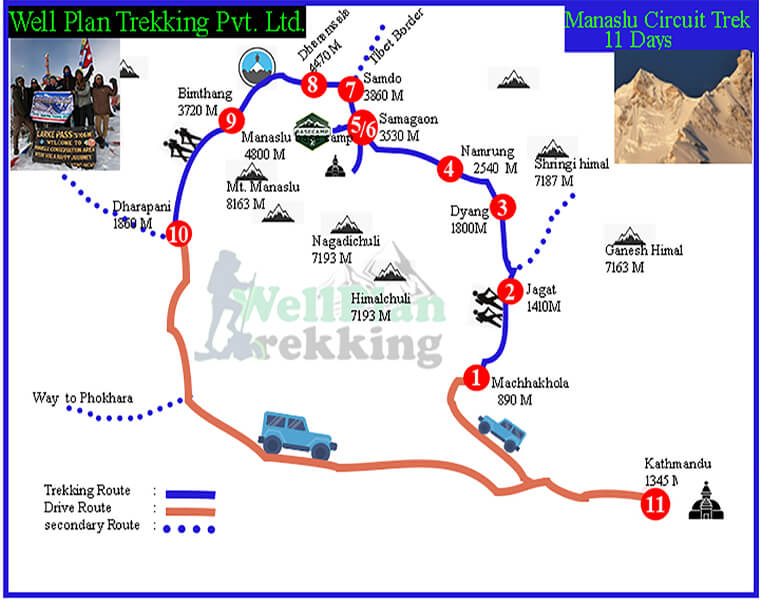
Client Reivews
Lukasz karol wysokinsk.
We decided to take the full package with Well Planned Trekking (from arrival to departure a month later at the airport), and this was a very good decision. Everything was indeed very well planned, with some time in the cities (but not too much – we preferred it that way). At the trail, the distances were perfectly calculated. A little longer at the beginning, then a little shorter when we were higher – with resting/acclimatization days at just the right moment. It did pay off to trust in Ram planning experience.
To throw some tips for the fellows who would like to repeat our trip: * the electricity is there usually, with max one-day break without * The temperature differs – on the same day we experienced 7C at the morning and over 25C (!) at noon. The coldest night was at Dharamsala: -10C. * crampons (little ones – so-called microspikes) are very helpful for Larke Pass * water is all around, so if you have chlorine tablets (or another filtering system) – you don’t need a too big a bottle * toilets are a tough experience – embrace the adventure :
Musil david
Review of well plan trekking.
Ram is the best guide. He arranges the best hotels, helps you with everything, and shows you the best places. We did the 13-day Manaslu trekking. The trekking was hard, but every time we needed something, the ram would help us right away. He told us all these facts about the places and offered us different options for the resting days. He checked our health during the trip and made sure we were all ok. The porters were very nice, and we felt like a team. Would recommend booking your trip with well plan trekking. He is as quick as possible with a reply while booking the trip, and will offer all of these good ideas to help prepare for the trip! If we would go again, for sure we will book with him again!
Ram is the best
Ram is a very skilled guide! Friendly, nice to everybody and very helpful. In moments needed he can also be strict too. Dealing with high altitude is not a joke! We will definitely come back to Nepal and book a trip with Ram! 10/10 would definitely recommend
Manaslu trekking was a great experience!
We did the Manaslu trekking with Ram as our guide. We had such a great experience. Ram is a very friendly, professional guide and made our trip a great success. I would highly recommend well plan trekking!
Well Plan Trekking arranged our trip from the first till the last second. Picked us up at the airport, guided us through Nepal and also brought us back to the airport. The service was beyond expectations and our guide and porter were the best we could hope for. Very helpful and above all very nice people.
Certainly, I would recommend Well Plan Trekking when you decide to visit Nepal.
In Nov 2021, We successfully finished Manaslu Circuit with our guide/owner Mr. Ram and 2 other porters. It was 14 days trip including transportation and in addition to this, we spent another 4 days in beautiful Chitawan National Park, where we did a lot of activities such as car safari, bird watching, walking in the jungle, etc. Mr. Ram has a lot of experience with the routes and safety was his first concern. He did everything to make us feel comfortable and he was OK to modify our initial plan. Thank you Mr. Ram for your guidance and patience. Well Plan Trekking is a well-organized company and We highly recommend this company to everyone who is planning to visit Nepal.
source TripAdvisor
Awesome trekking experience. The Manaslu circuit trek was well organized and super flexible as we were changing and adjusting the trip while trekking based on the pace and health conditions. We stopped at different spots to take pictures. There were no time limits. The team was very experienced, well-equipped, and professional. Mr. Ram took special care of the safety and comfort of the group. He was very helpful and funny. We had a good talk and laugh together during the trip. A huge thanks to Ram and his team at Well Plan Trekking for making our time in Manaslu unforgettable.Thank you for the incredible experience. I highly recommend this company!
Source TripAdvisor
Thanks to Ram WE have sent a marvelous Trek in the Manaslu Range. We made this Trek around the high pic 8163m .during 12 days. Everything was perfect, the general organization, the food, the accommodation, and the safety. The 2 last days in Kathmandu were a plus, with a pleasant farewell dîner, and a ton visit. I warmy recomend Wellplan Trekking for Trekking in Népal. Pierre Ruef.
Source tripadvisour
We spent a wonderful stay in Nepal. Ram and his team were very professional: taking care of us, were flexible to adopt the agenda, and provided a lot of advice to avoid problems. We went to 5100 m without any health problems and enjoyed ourselves a lot during our stay. On top Ram ask for a very reasonable price. I strongly recommend it!!!!!
Source TripAdvisor
This was my fifth trek in Nepal. I was delighted to be involved with Ram from Well Plan Trekking. He made the whole trip very easy and paced me through the process. Manaslu is known as the Adventure Trek. It’s not hard to see why. The valleys are steep V-shaped and the rivers are cascading torrents. As a solo trekker who used to carry all my own gear, it was a pleasant change to have only a day pack and camera. Ram organized everything with skill and humor. The planning was done online back in Sydney. All I had to do was show up! My passion is trekking and birdwatching and Manaslu is top shelf for both. Carrying a bird book and the heavy camera was well worth the effort. The trek was challenging especially in fairly deep snow. Too deep to attempt the Larke Pass. Unfortunately, we had to backtrack.
If you are looking for value, good organizational skills, and a genuinely good bloke, Ram is your man!!
Late Jan, early Feb trek
sources Tripadvisor
Wellplan Trekking lives up to its name. Planning, briefing, providing equipment, and adjusting to specific needs or opportunities, everything was well handled by Ram and his team. Good selection of lodges and food, and good recommendations on rhythm. we were 4 friends in good shape, we adjusted the program to spend more time at higher altitudes, visit the Punggen Gompa temple, and go to the Manaslu base camp. We were blessed with very good weather, an unforgettable experience.
sources Tripadvisor
We Appericate your Question

IMAGES
COMMENTS
The Manaslu Circuit hike passes ten Himalayan peaks of more than 21,300 feet, including the 8000er, Manaslu (26,781 feet), which is the eighth-highest mountain on Earth. The Manaslu trek is a 110-mile hike that is a great alternative to Everest Base Camp hike or the Annapurna Circuit hike. The trek usually takes between 14 and 17 days.
The Manaslu Circuit Trek: The Basics on What to Know Before You Go. Location: central-western region of Nepal in the lap of Mount Manaslu, situated within the Manaslu Conservation Area Project (MCAP) Starting point: departing Kathmandu for a 7 hr bus journey, the trek starts from Soti Khola and ends at Dharapani for the return bus journey Duration: 13 Days
The Manaslu Circuit Trek is a trekking route in Nepal that encircles the imposing Mount Manaslu, the eighth-highest peak in the world. This 13-day trek takes you through diverse landscapes, snow-capped peaks, rugged terrain, lush valleys, and traditional Tibetan-influenced villages. The Manaslu Circuit Trek is known for its remote and pristine ...
The Manaslu Circuit Trek is an off-the-beaten-path trail in the Himalayas of Nepal. The route leads you up and around the base of Mount Manaslu as you stay each night in different Tibetan villages along. Manaslu Circuit Trek is a 180km trek through the Himalayas of Nepal with 11,000m+ of incline with a high-point of 5,106m at Larkya La Pass. ...
Manaslu Circuit Trek - ULTIMATE GUIDE 2024-2025. One of Nepal's most challenging and well-known off-the-beaten-path treks is the Manaslu Circuit Trek. The walk is most notable for the breathtaking views of multiple snow-capped peaks, notably Mt. Manaslu, the eighth-highest summit in the world (8,163m/26,781ft).
The Manaslu trek's suspension bridges are unparalleled in length and height, and the seasonal monsoon frequently washes out lesser bridges, forcing trekkers to rely on semi-submerged rocks. ... The Manaslu Circuit Trek is one of Nepal's popular treks taking around the Manaslu Conservation Area, with the view of the world's 8th tallest peak.
The challenging trekking trail of the trek takes you to the maximum height of 5,106 m. Manaslu circuit trekking package is designed in such a way that the trek can be completed in around 16-22 days. Gaining popularity as one of the best trekking destinations in Nepal, this rural area trek is challenging yet exhilarating. ...
The Manaslu Circuit is just to the east of the Annapurna Circuit, yet it still feels relatively untouched. This trek reaches remote mountain villages and comes close to the border of the Tibet Autonomous Region of China. Due to its location, the Manaslu region is a restricted area, which has stopped it getting too busy.
The Manaslu Circuit Trek typically takes between 13-18 days to complete a full circuit of Mount Manaslu. The trek starts and finishes in the town of Arughat after completing a clockwise loop around the mountain. The total trekking distance is around 160km, with most days covering between 5-8 hours of walking. ...
Height: Reaches an altitude of 5,106 meters (16,752 feet) at Larkya La Pass Best Time to Trek: Autumn (September to November) and Spring (March to May) ... The Manaslu Circuit Trek is a path that promises not only the thrill of the climb but also the tranquillity that comes with being one with nature. It's a journey that challenges the body ...
Manaslu Circuit trek map. Experts consider the Manaslu Circuit Trek among the best treks in Nepal. Despite its recent rise in popularity, the Manaslu Trek remains remote and off-the-beaten-path compared to the better-known teahouse treks in Nepal. The trek takes you around Manaslu, the world's eighth-highest mountain at 8,163 meters (26,781 ft).
The altitude of Manaslu Circuit Trek. Manaslu Circuit trek height varies as of as near to the ground as 700 meters to as elevated as 5160 meters. The hike start from the Kathmandu which is at the height of 1300 meters and drive to Soti Khola walk through the Machhakhola, Jagat, Ghap, Namrung, Sama Gaon, Dharamsala, Bimthang hike from side to ...
Manaslu Circuit Trek Itinerary, Side Trips, Map, Permits & Difficulty. Most of Nepal's Himalayan trekking trails generally reach over 5000 meters. Similarly, the Manaslu circuit trek is one trekking trail running above 5000 meters altitude. The Manaslu region starts with a height of 500 to 5160 meters, where you will explore the three valleys.
Manaslu Trek is an off-the-beat journey into the uncrowded and remote Himalayas of western Nepal, circling the eighth highest mountain of the world, Mt. Manaslu (8,163m/26,781ft). It is also regarded as the Manaslu Circuit Trek. Manaslu Trek is one of the closest trekking trails from Kathmandu. The fascinating trek in Budi Gandaki, Nubri, and ...
Manaslu Circuit Trek offers a more secluded and less crowded experience compared to the more established and widely recognized teahouse treks in Nepal. The trek is a journey where you will walk around Manaslu, which is the eighth-highest mountain in the world reaching a height of 8,163 meters above sea level. You will be experiencing a variety ...
Less well known than the nearby Annapurna Circuit, the Manaslu Circuit trek is a spectacular and isolated circular walk around the eighth highest mountain in the world, Mount Manaslu, which rears up to a height of 8,163m. The government of Nepal opened up the trail to trekkers in 1991, and it's still something of a best-kept secret, but the route itself is very old and follows an ancient ...
December - August: 75 USD for 7 days ($10 for every additional day) For a standard 13 day Manaslu Circuit Itinerary, 7 days in the restricted area is enough and there is no need to pay for extra days. This permit can only be obtained from the Department of Immigration by a fully licensed trekking agency.
Introduction of Manaslu Circuit Trek. Before we delve into the itinerary, let us give you an overview of the Manaslu Circuit Trek. The trek will encircle Mount Manaslu, which rises to a height of 8,163 meters (26,781 feet), making it the eighth-highest summit in the world. It is located in Nepal's Gorkha district.
The Manaslu Circuit trekking route used to be done on a 15-day trip from Kathmandu. The trailhead and trail end of the Manaslu trek is now deeper in the valley and therefore we have shortened the trek to avoid walking on the road. Below is our 12-day itinerary. Day. 1.
You can combine the Tsum Valley excursion in our Manaslu circuit trek package or just trek to Tsum Valley as per your wish. Conquer Larkya La Pass. Larkya La pass is one of the highest mountain passes in Nepal, with a height of 5106m.|16752ft. above sea level. It is also the highest point during the Manaslu circuit trek.
For the 14 day Manaslu circuit trek packages vary from USD 900 to USD 2800 per person. Categories Nepal Tags Manaslu, Trekking. Kanchenjunga Circuit Trek - Detailed Day By Day Itinerary. Complete Guide To Trek The Ultimate Annapurna Circuit On Your Own. Leave a Comment Cancel reply.
Located in Gorkha district is an often-overlooked but incredibly magical trek: the Manaslu Circuit. From culture to mountain vistas to physical endurance, it offers visitors everything they might want from a Himalayan adventure. First opened to hikers in 1991, the trail follows what was once a salt-trading route running along the Burhi Gandaki River. Lasting anywhere …
Manaslu Circuit Trekking highlights of this trek include. Hike at Manaslu Base Camp 4800 Meters. Stunning Himalayan Views: The trek offers breathtaking views of the Manaslu massif, including Manaslu itself, which is the eighth-highest mountain in the world. Trekkers can also enjoy panoramic views of neighboring peaks such as Himlung Himal, Manalu 8163 M, Nadi Chili 7871 m, Naike Peak & Ganesh ...